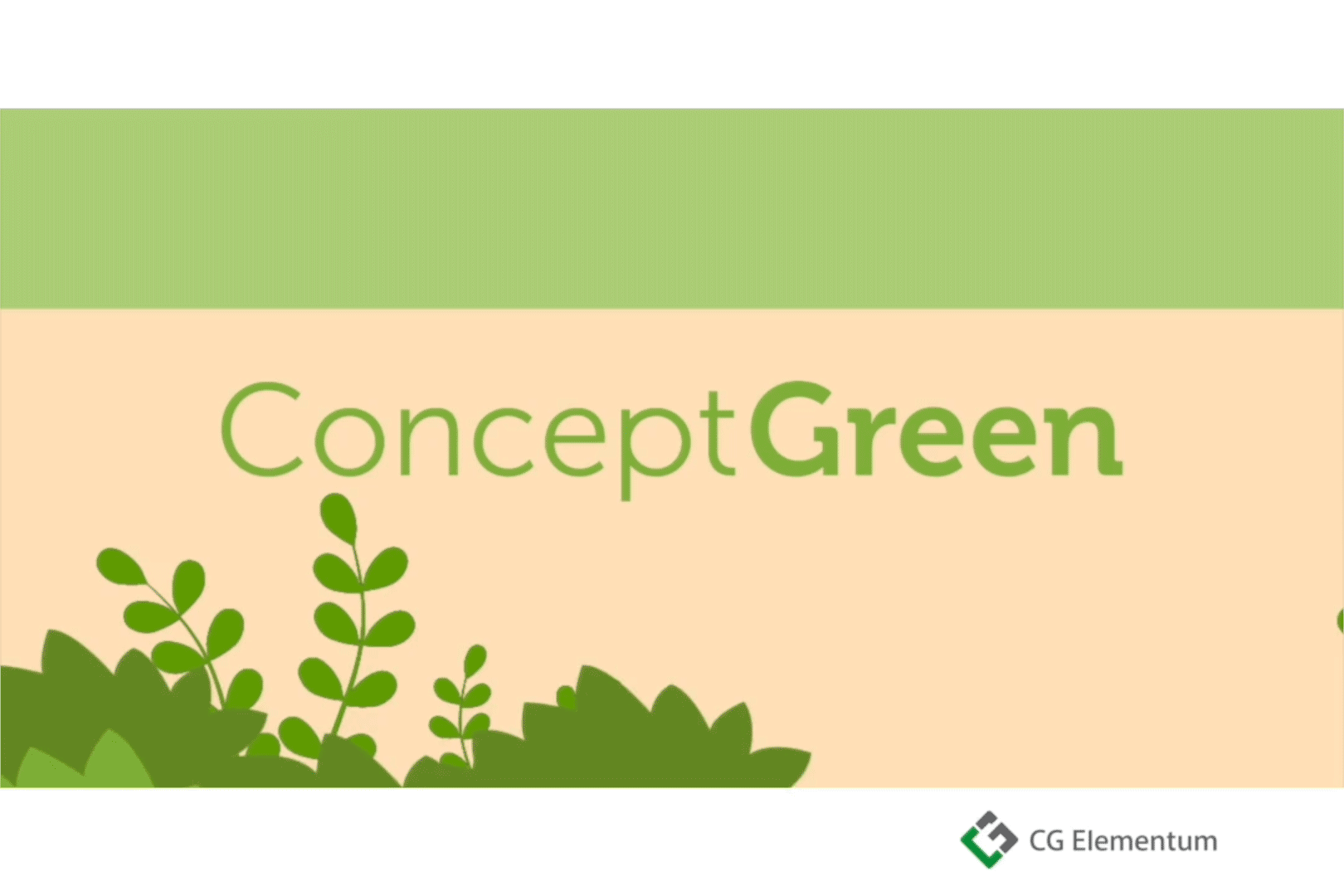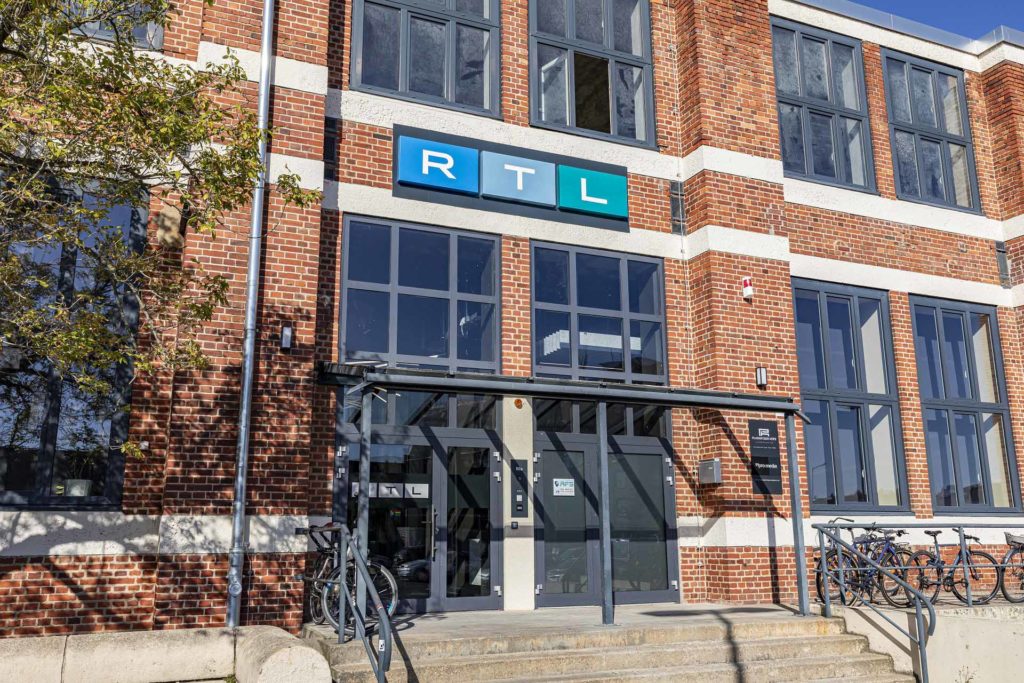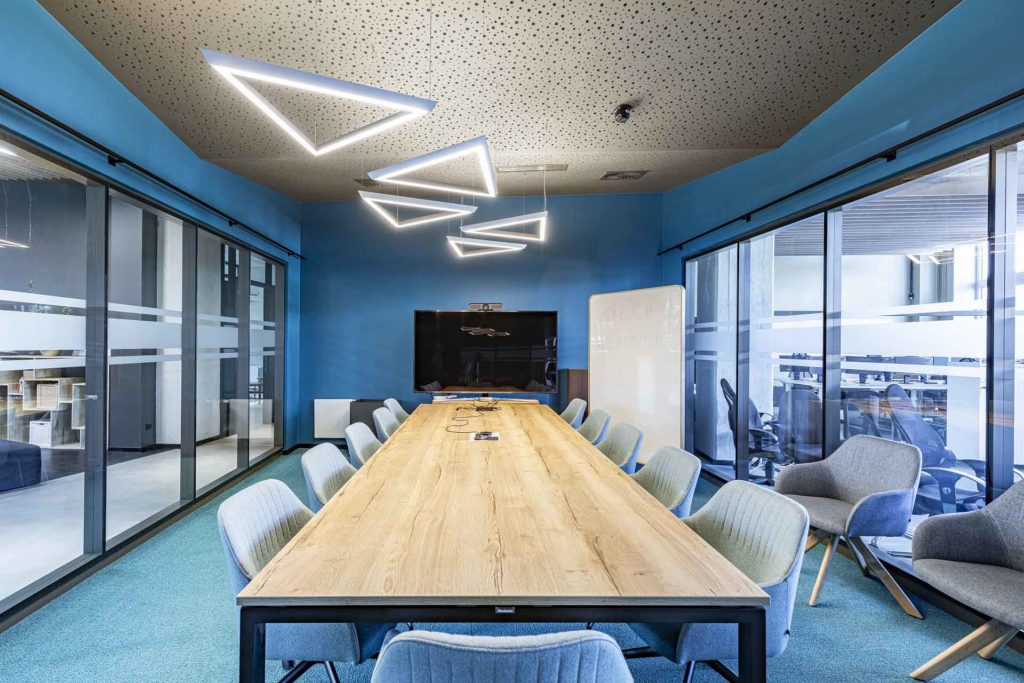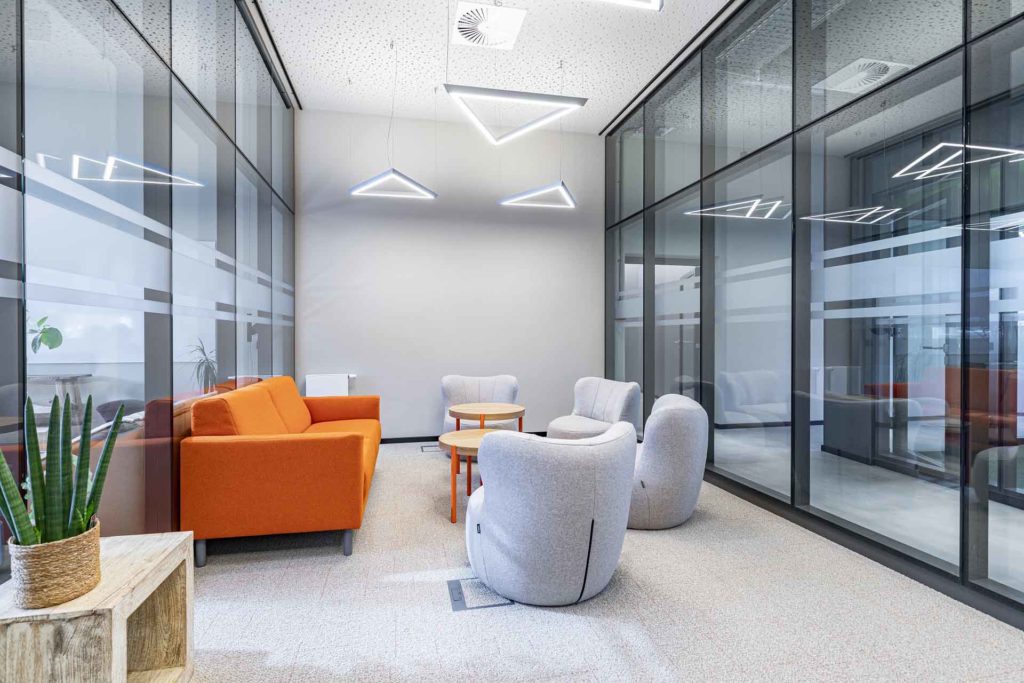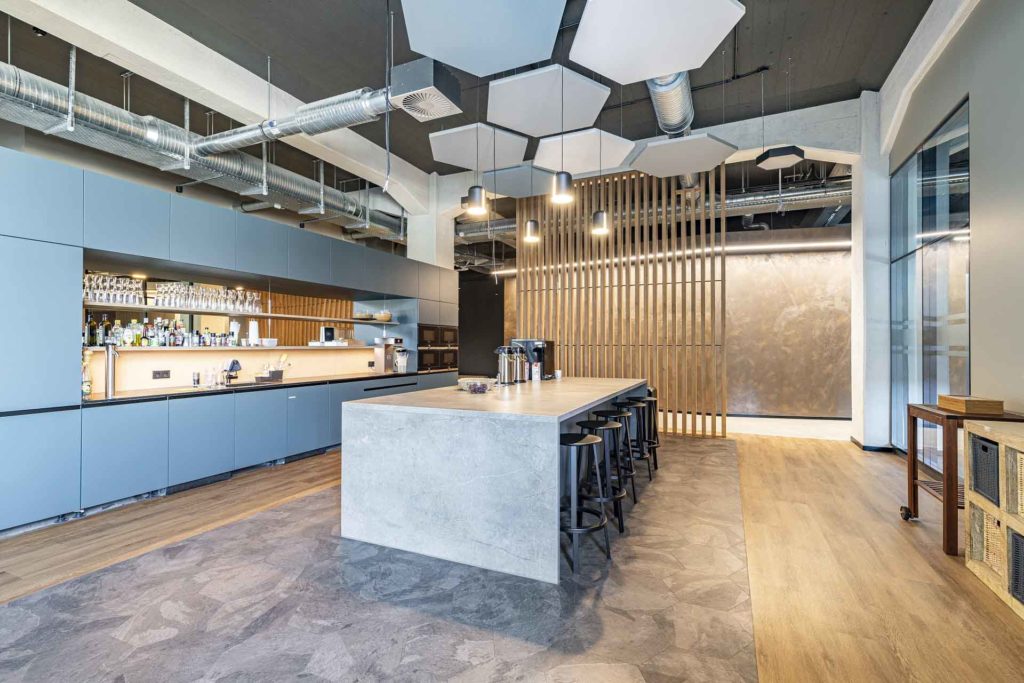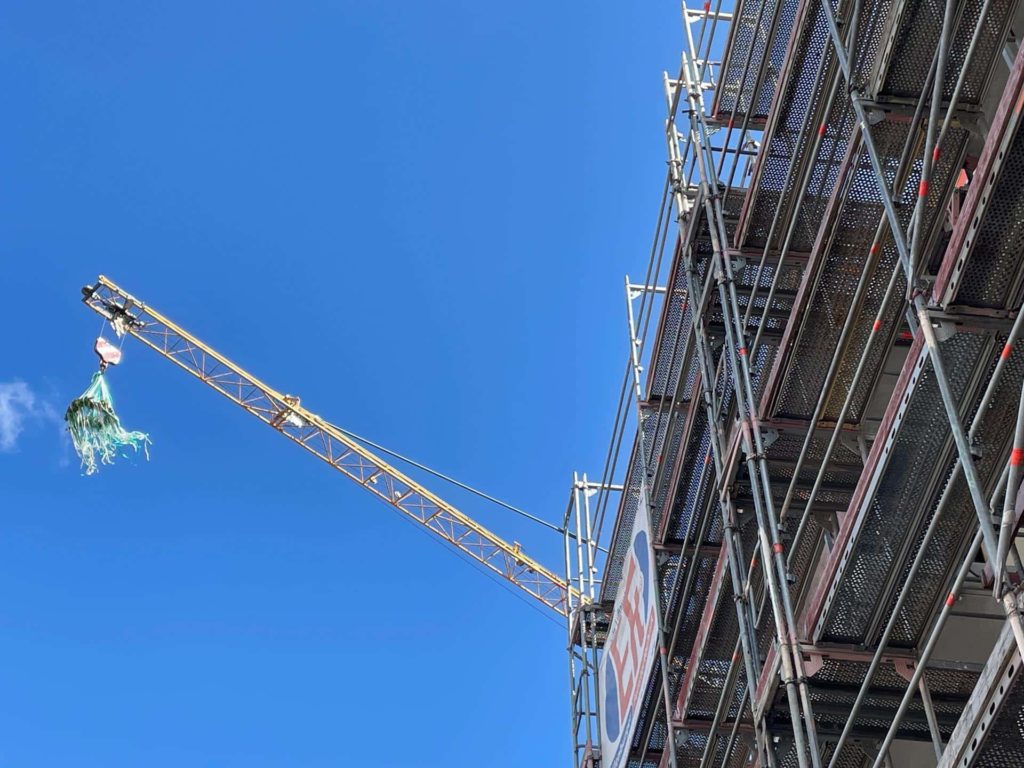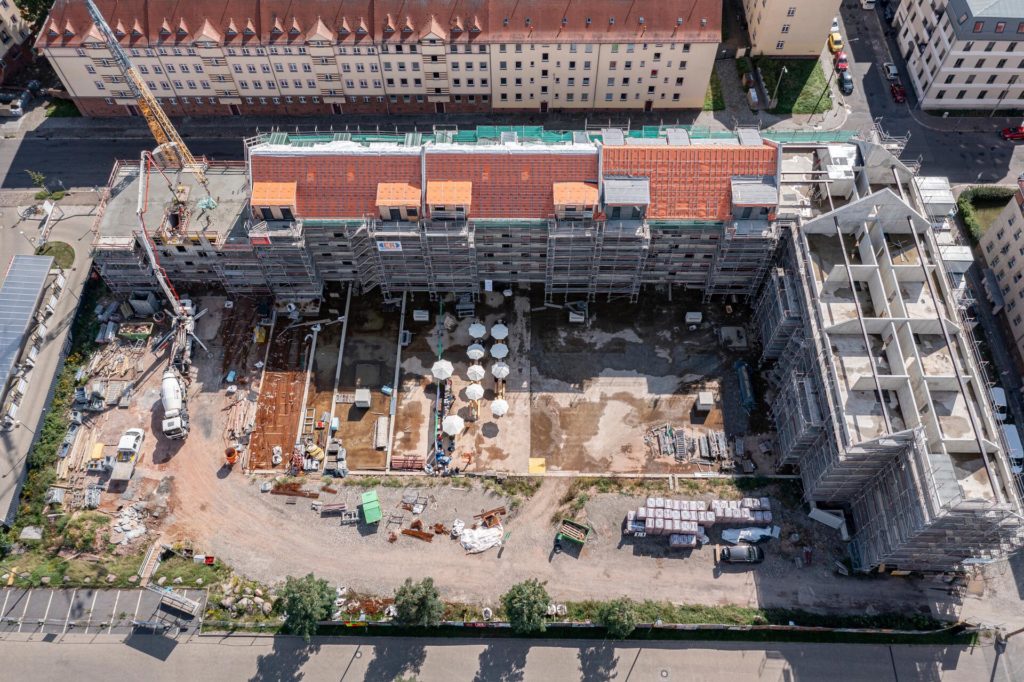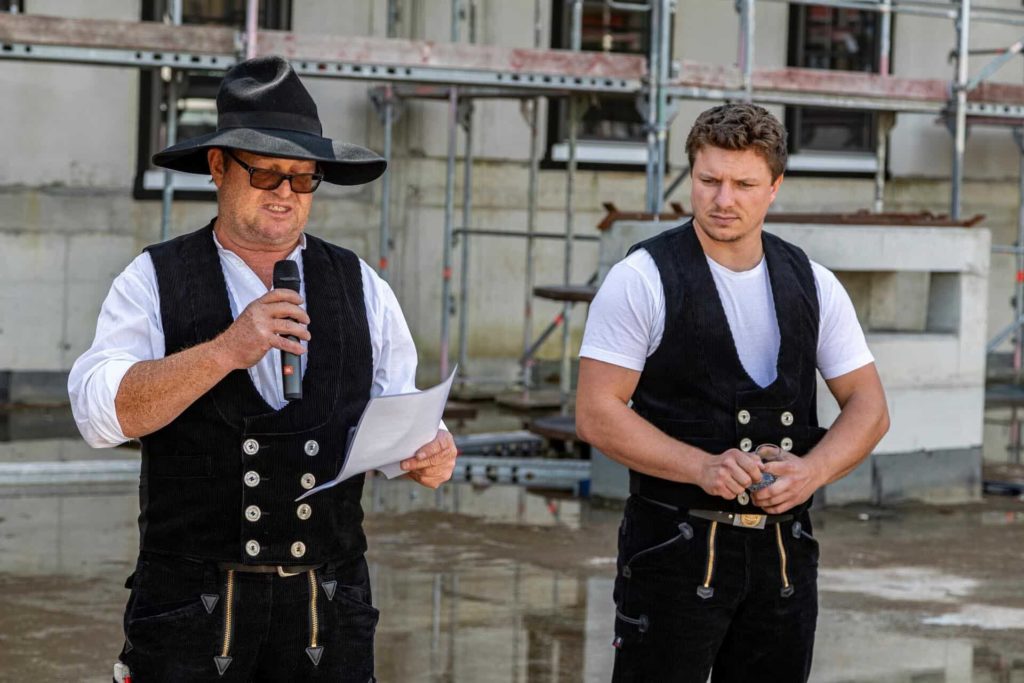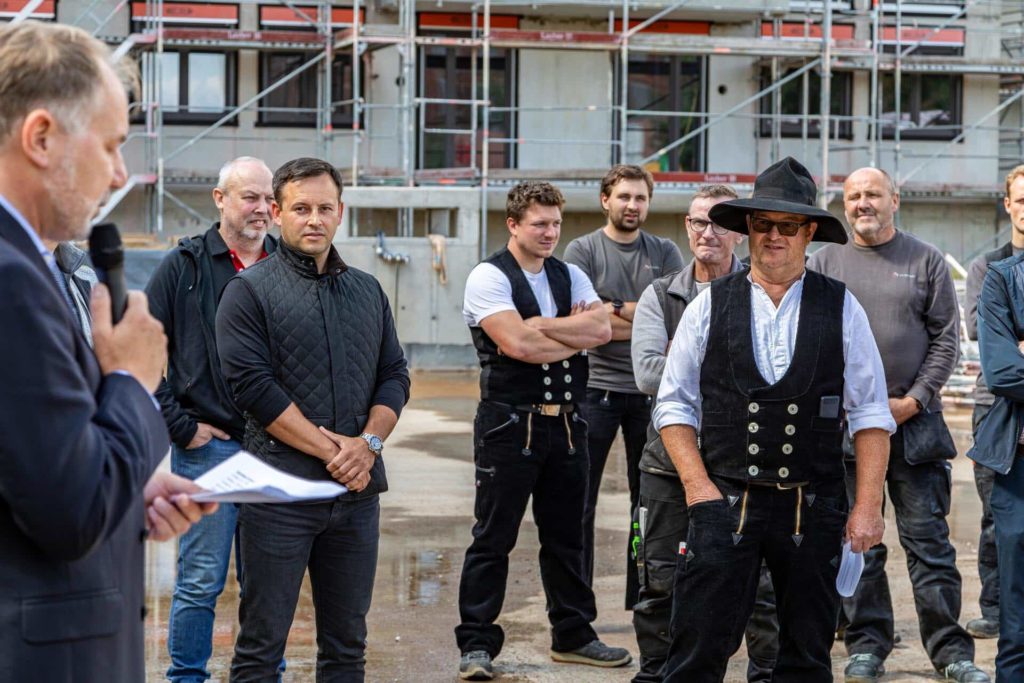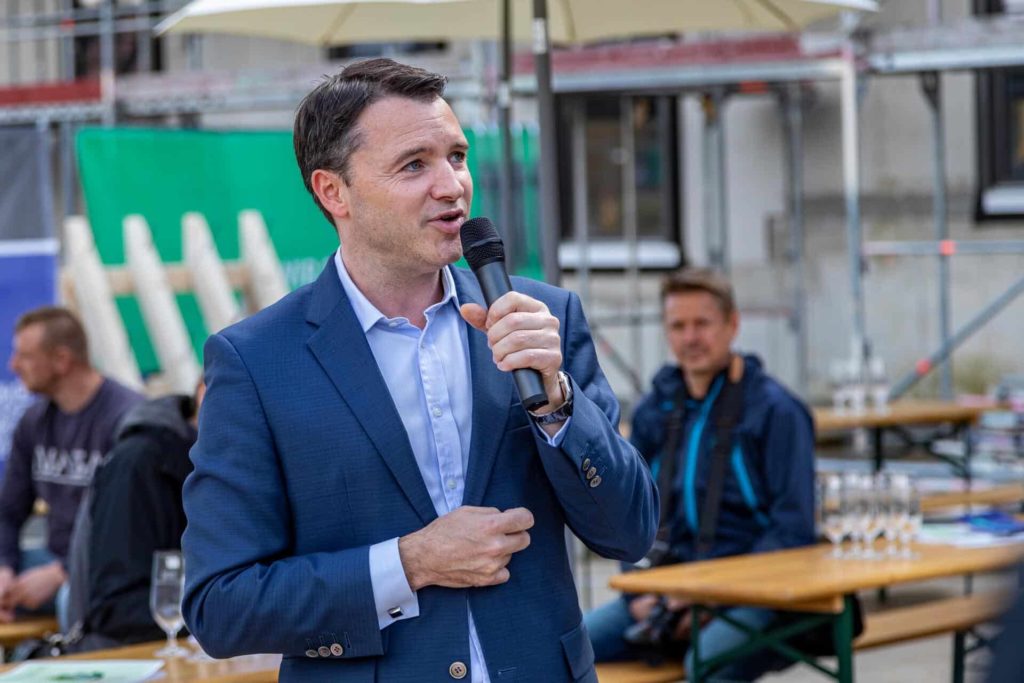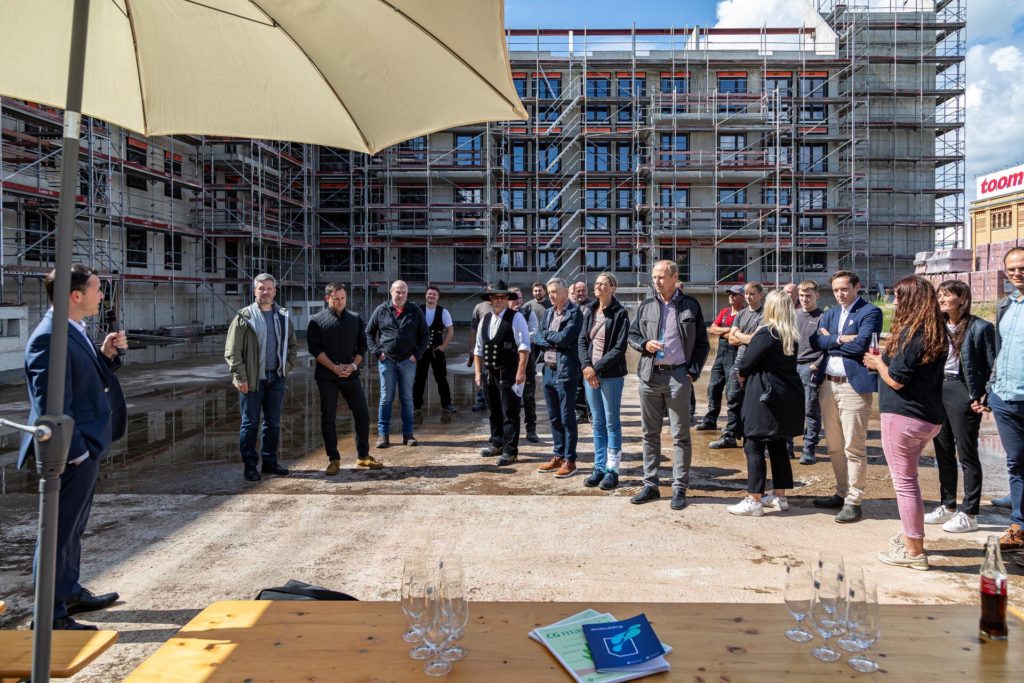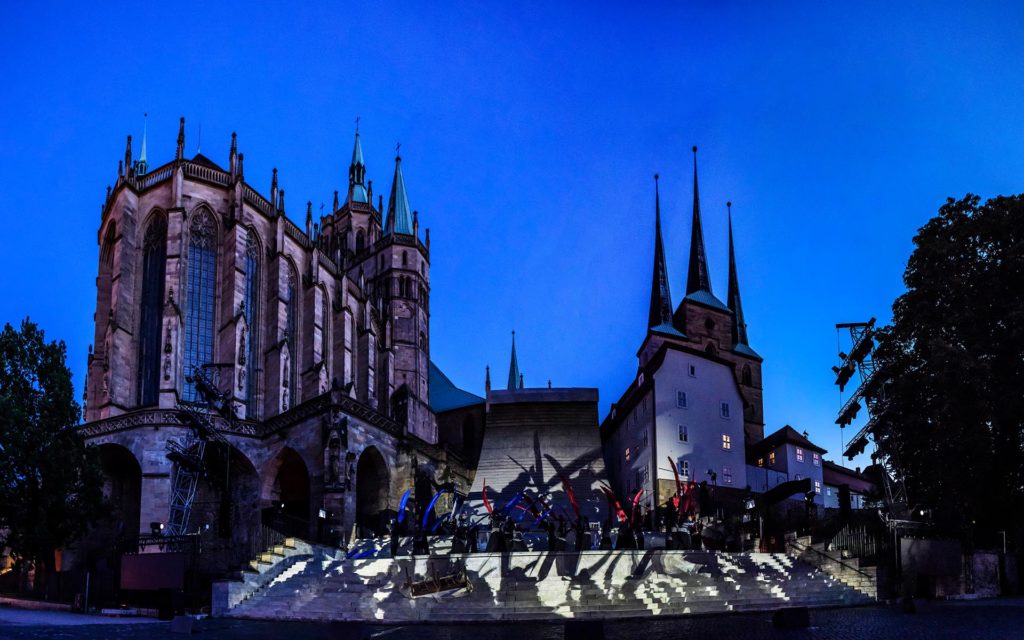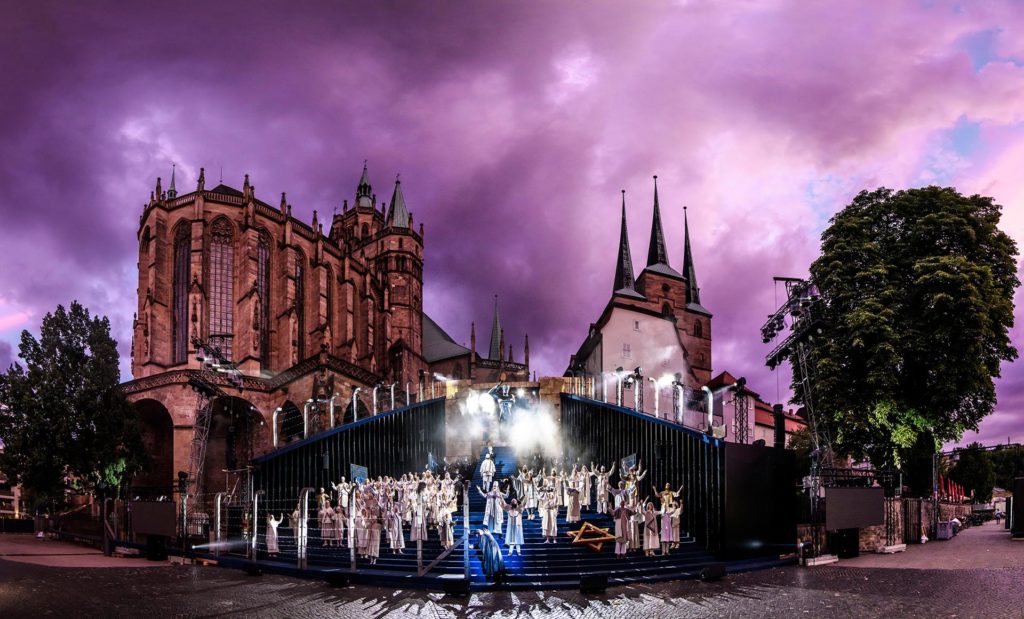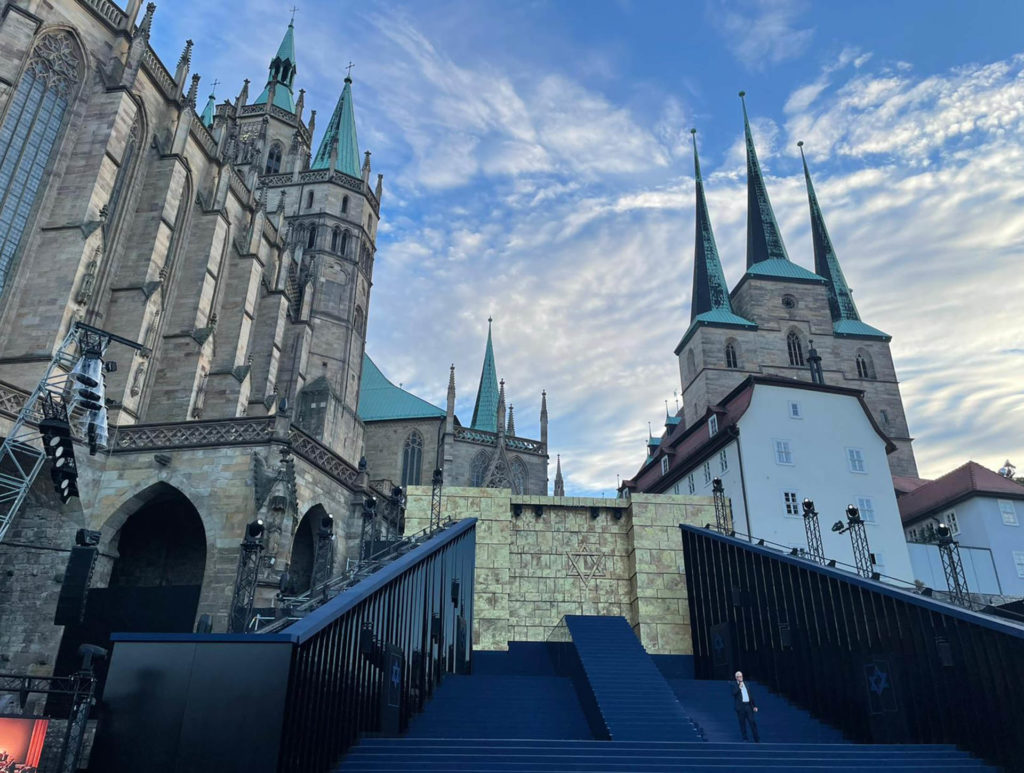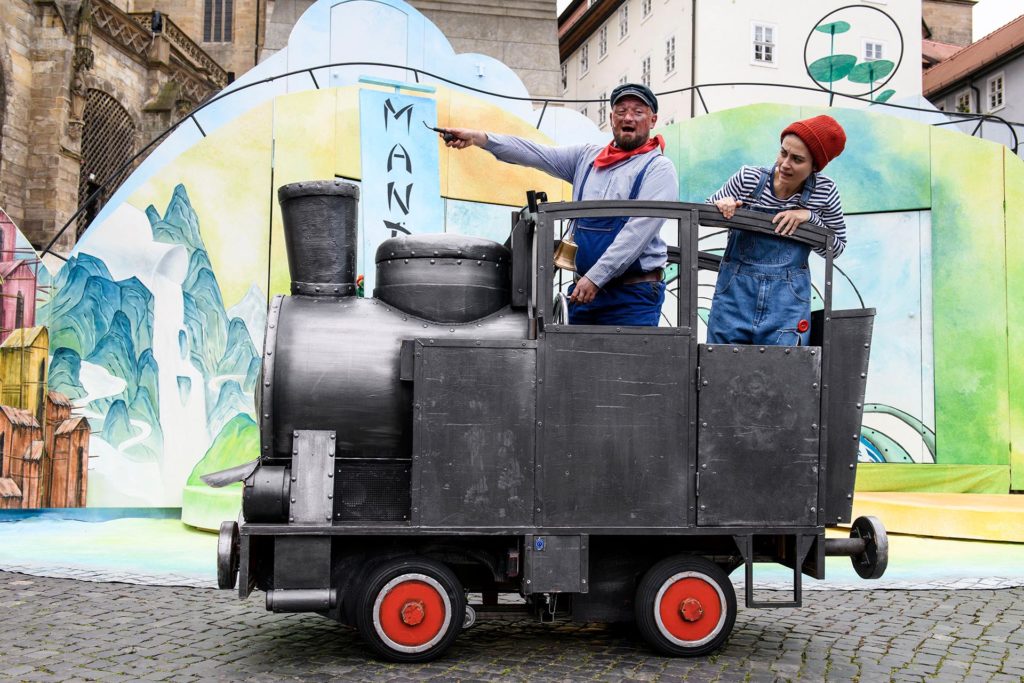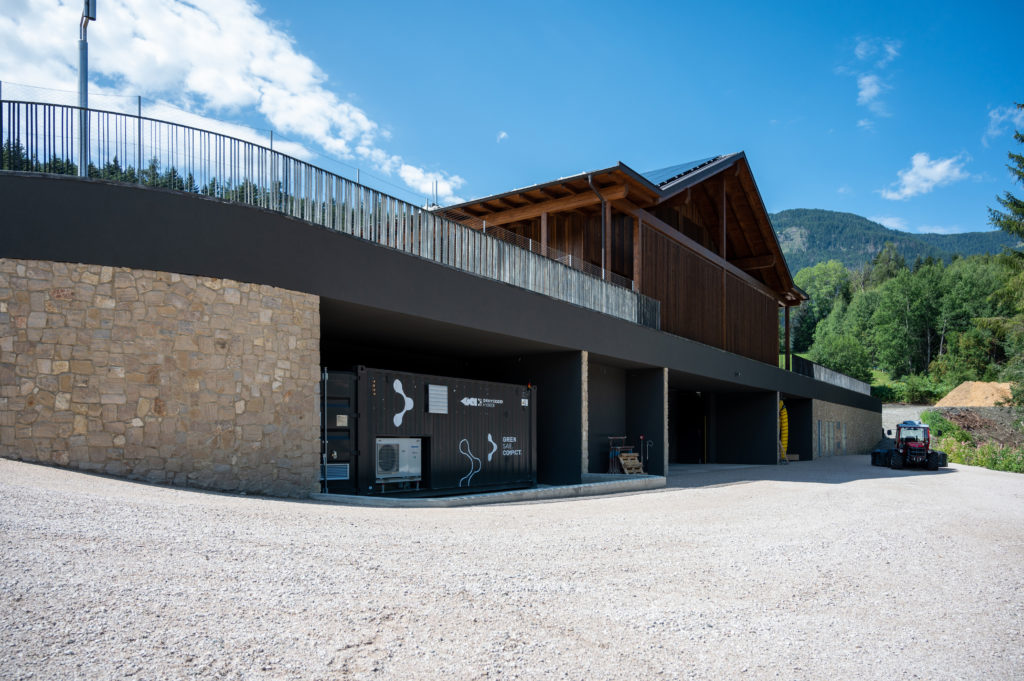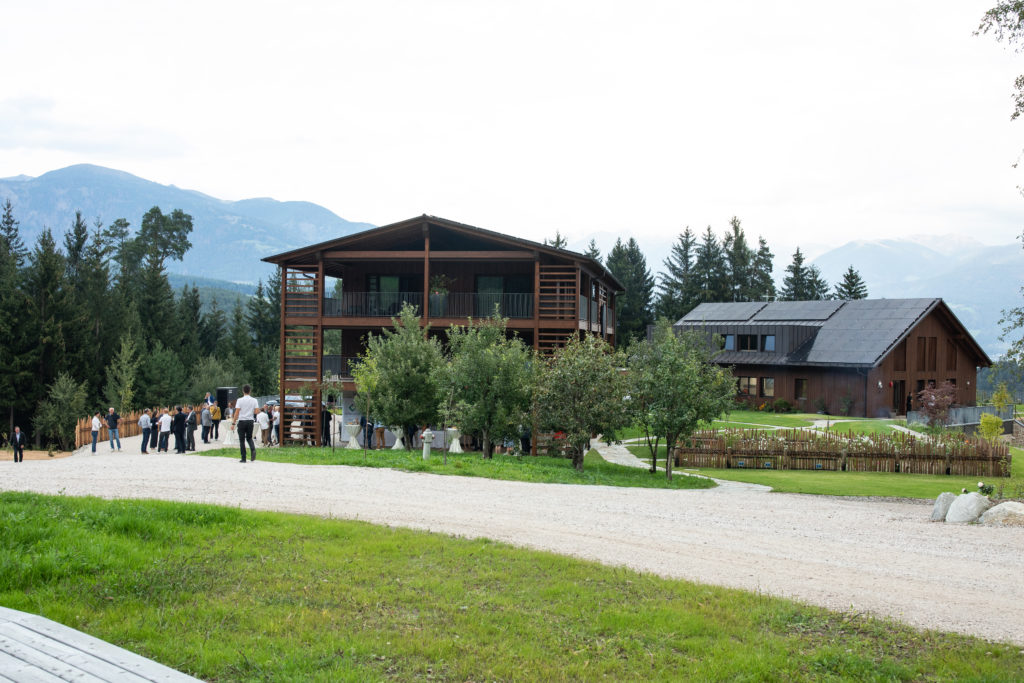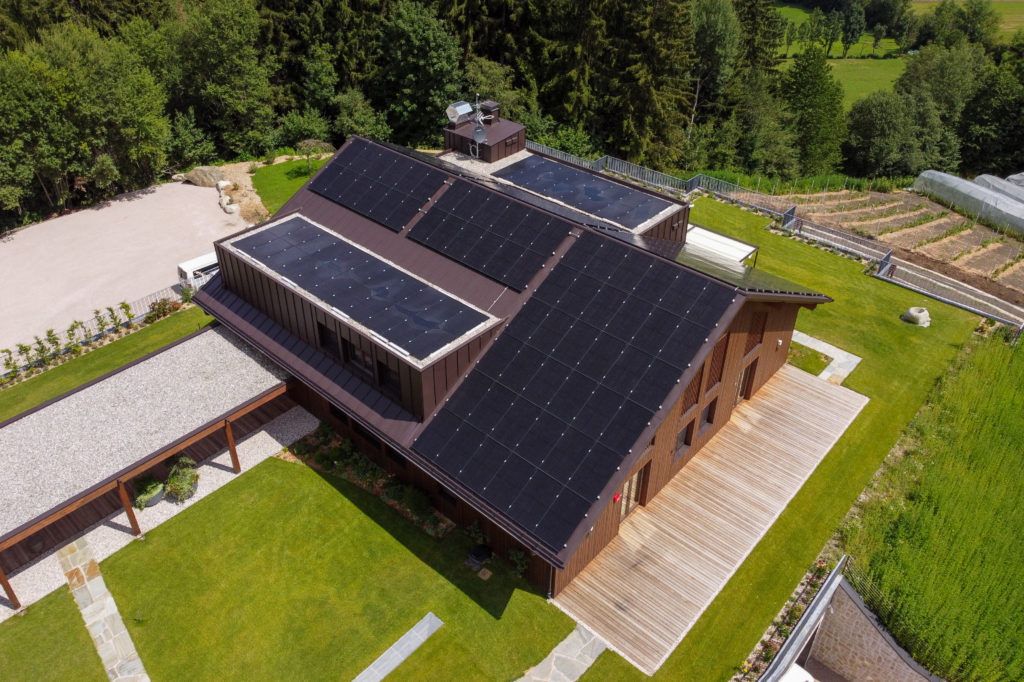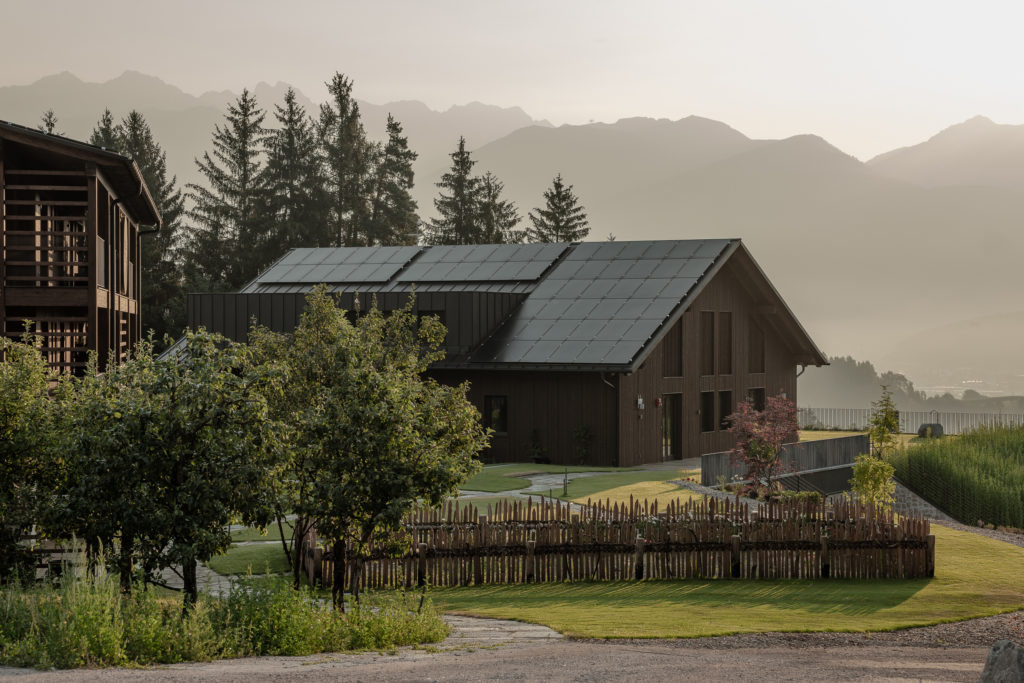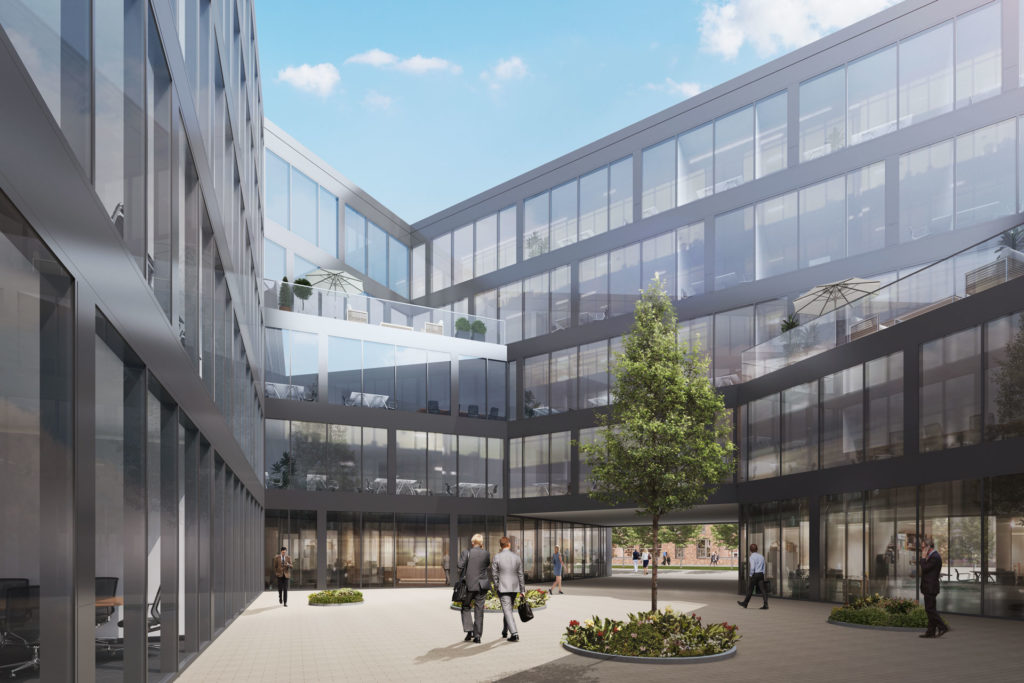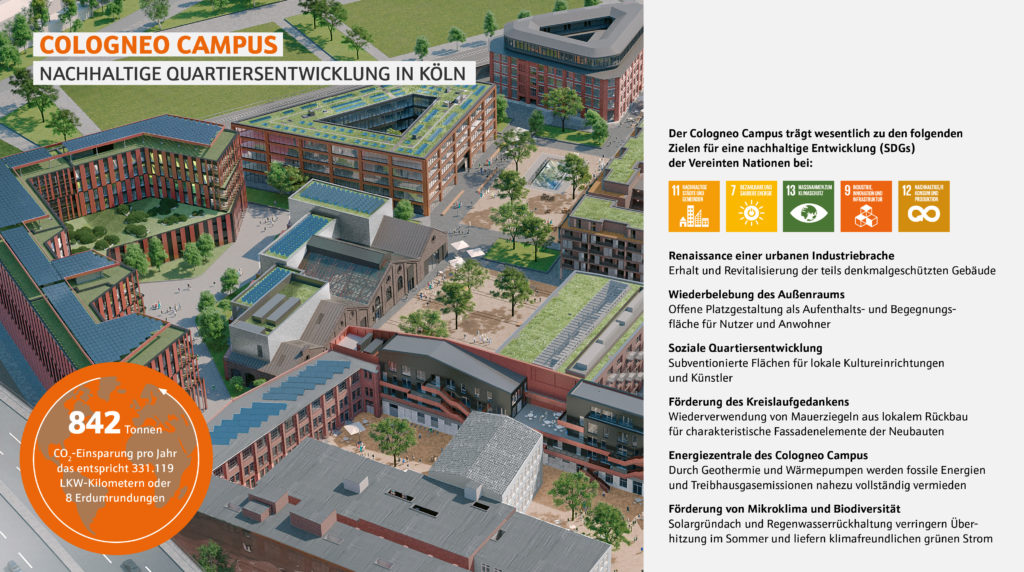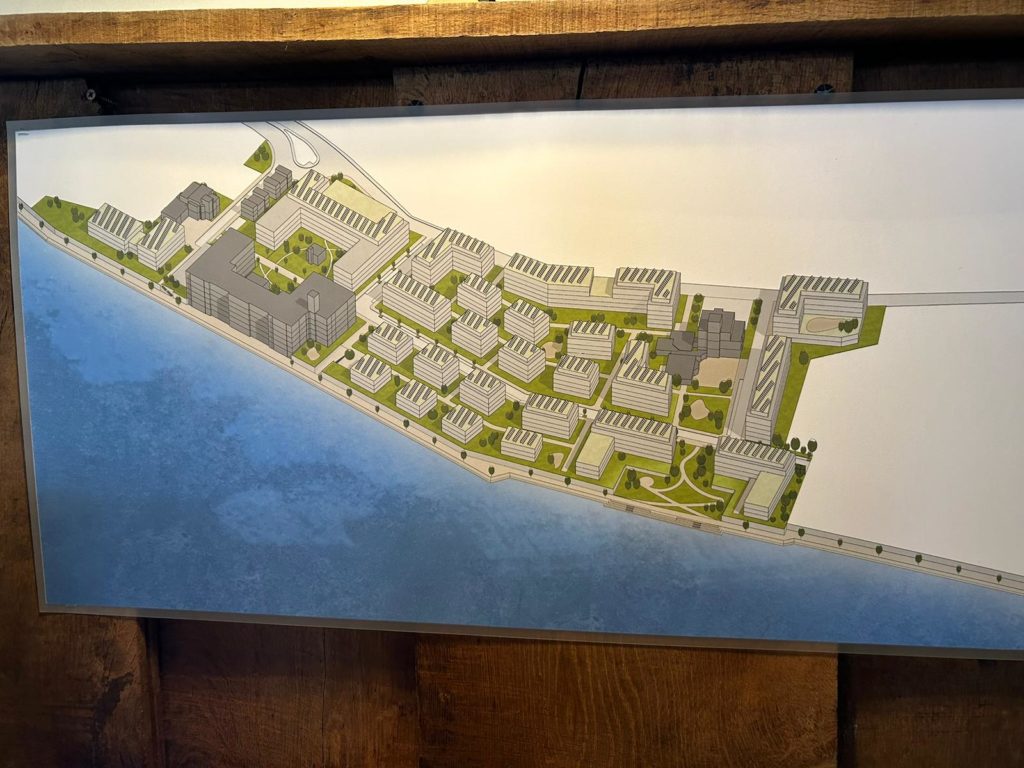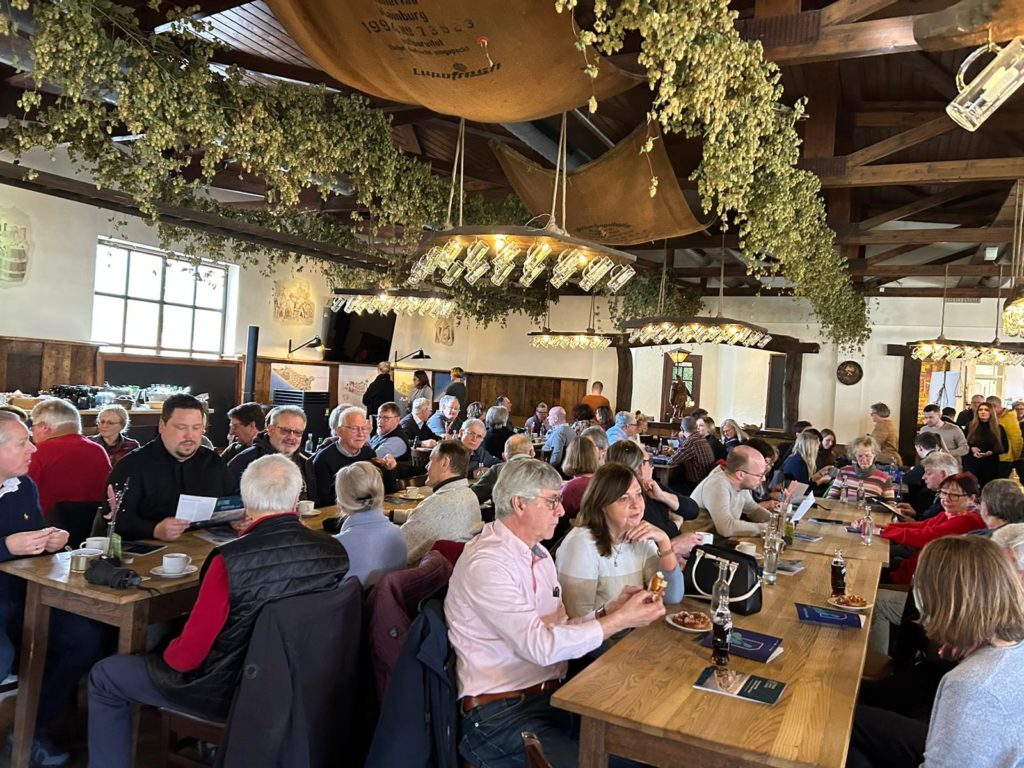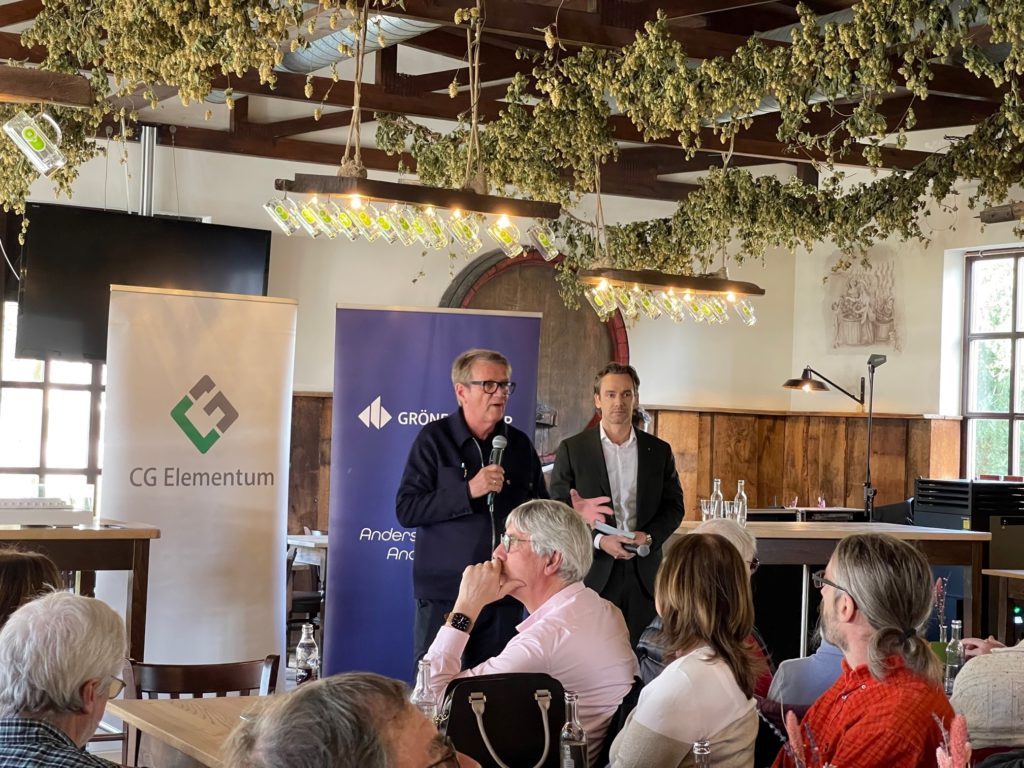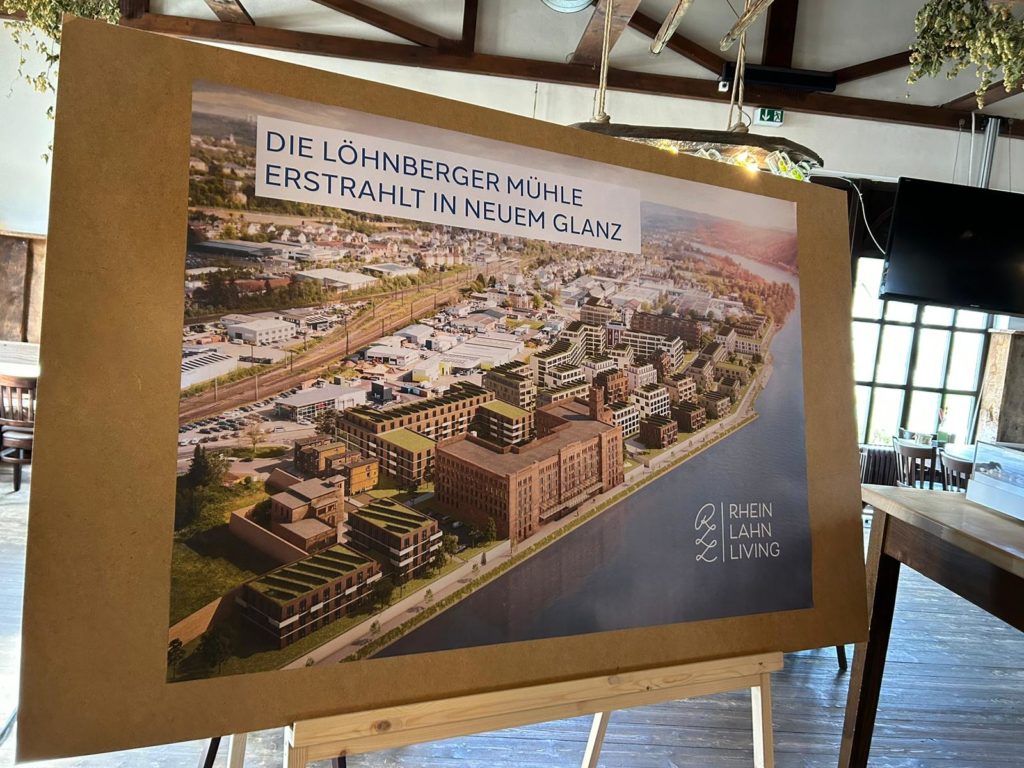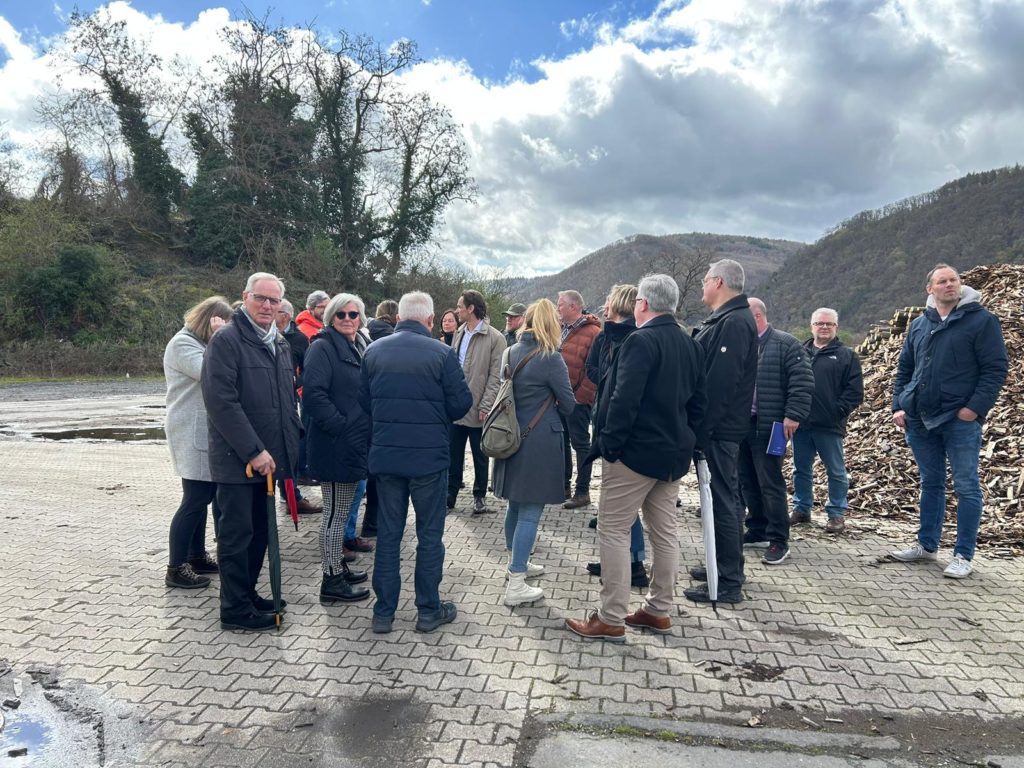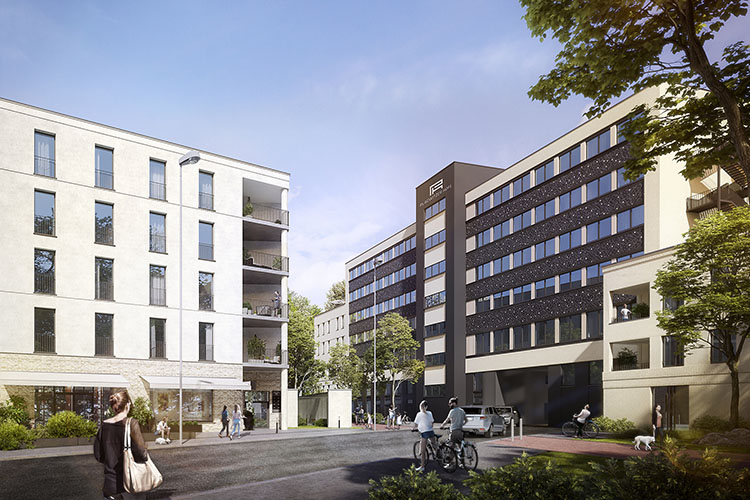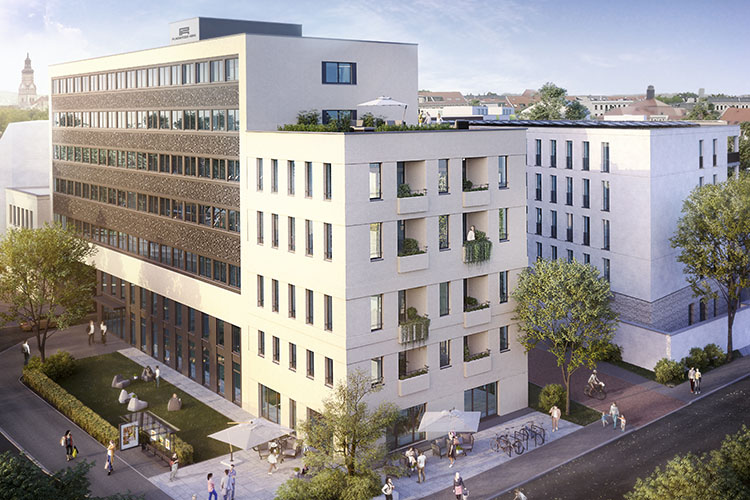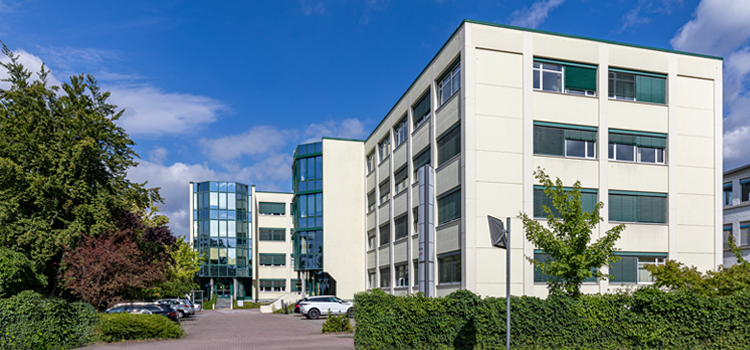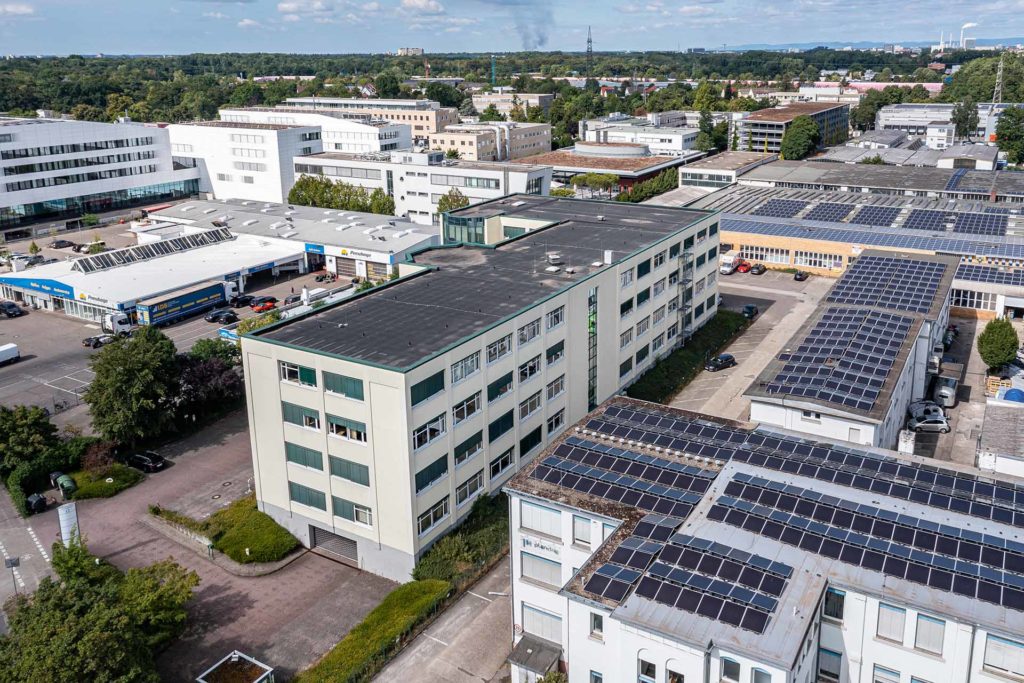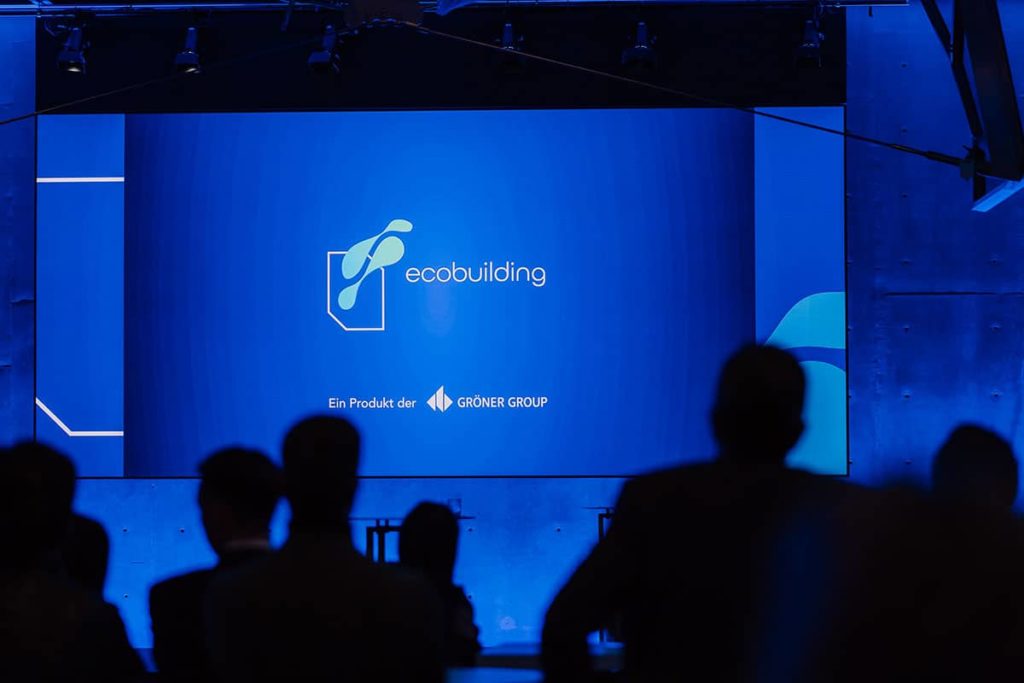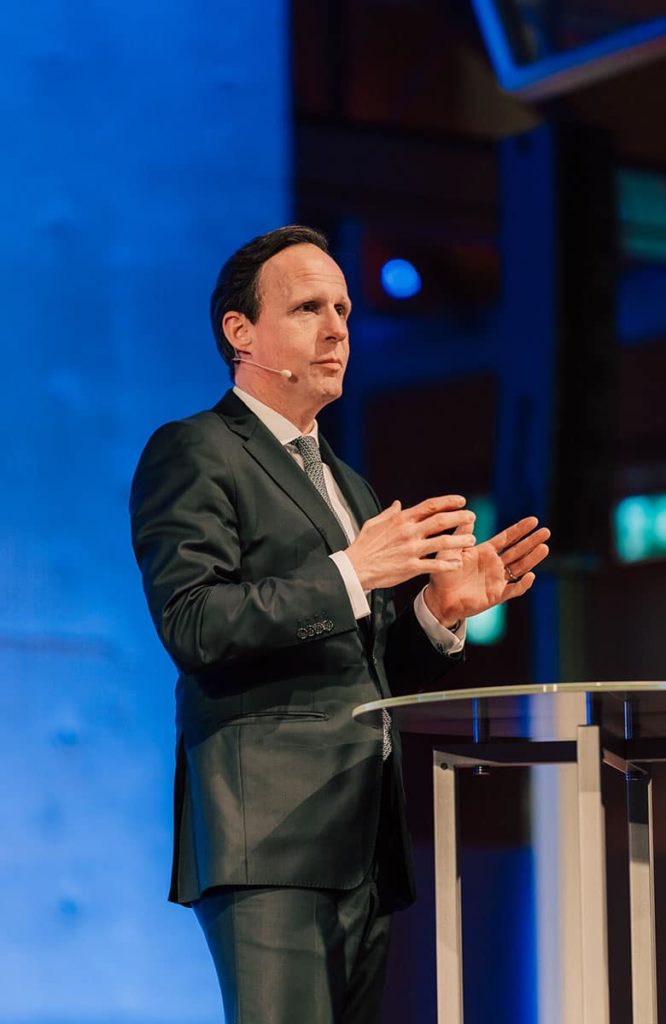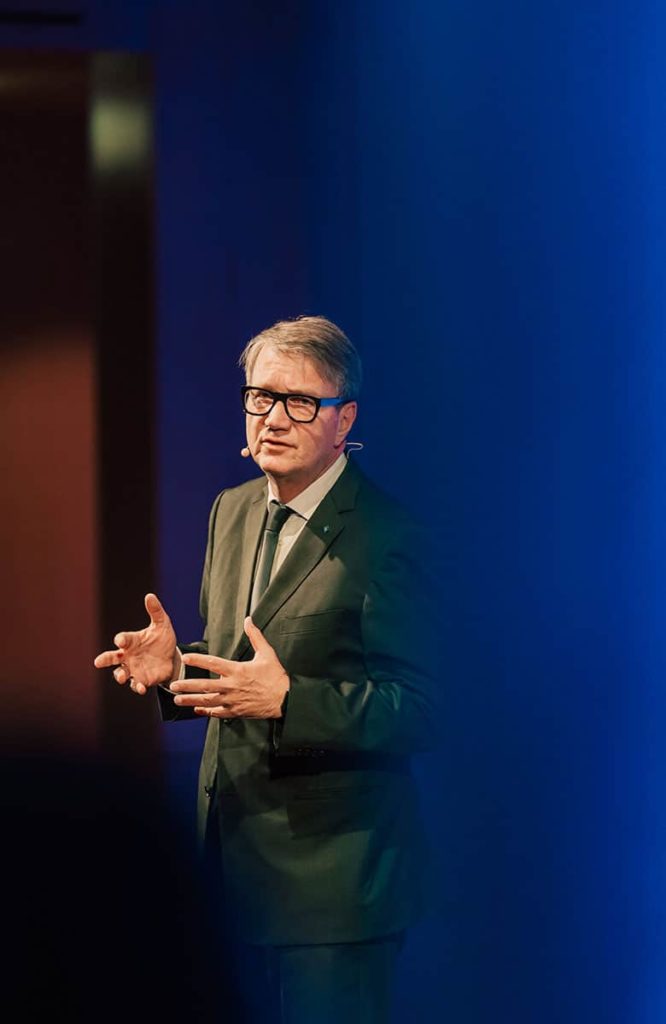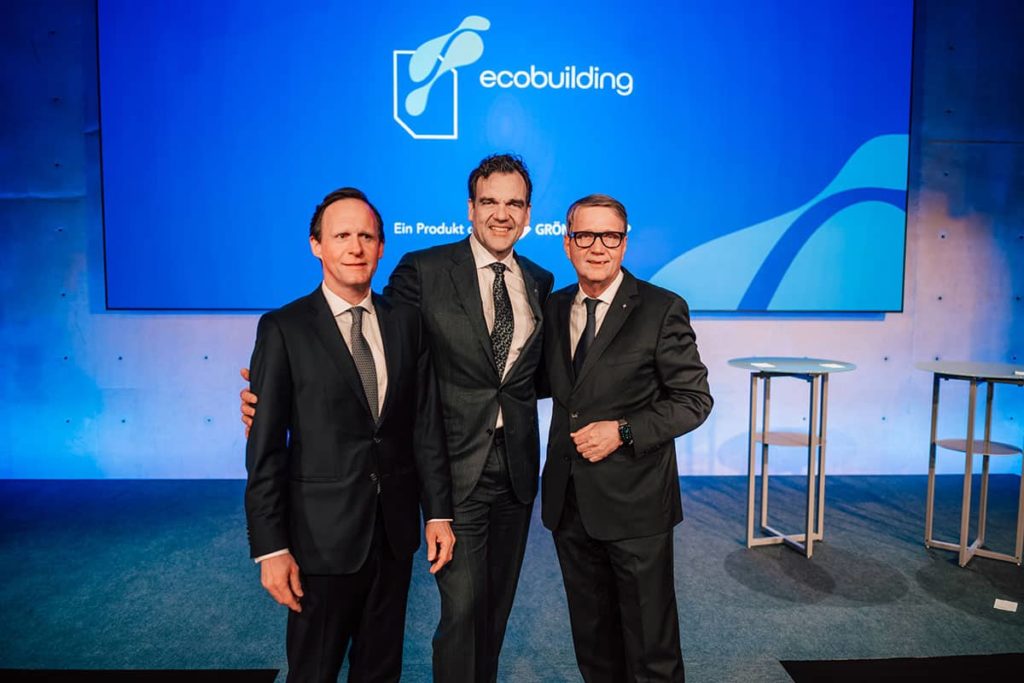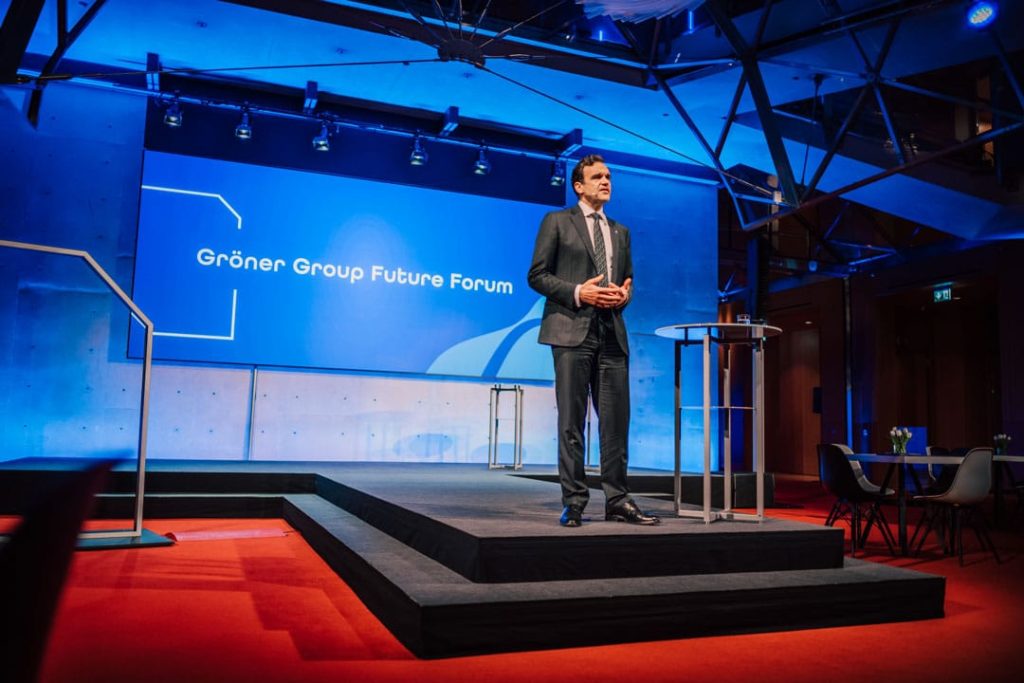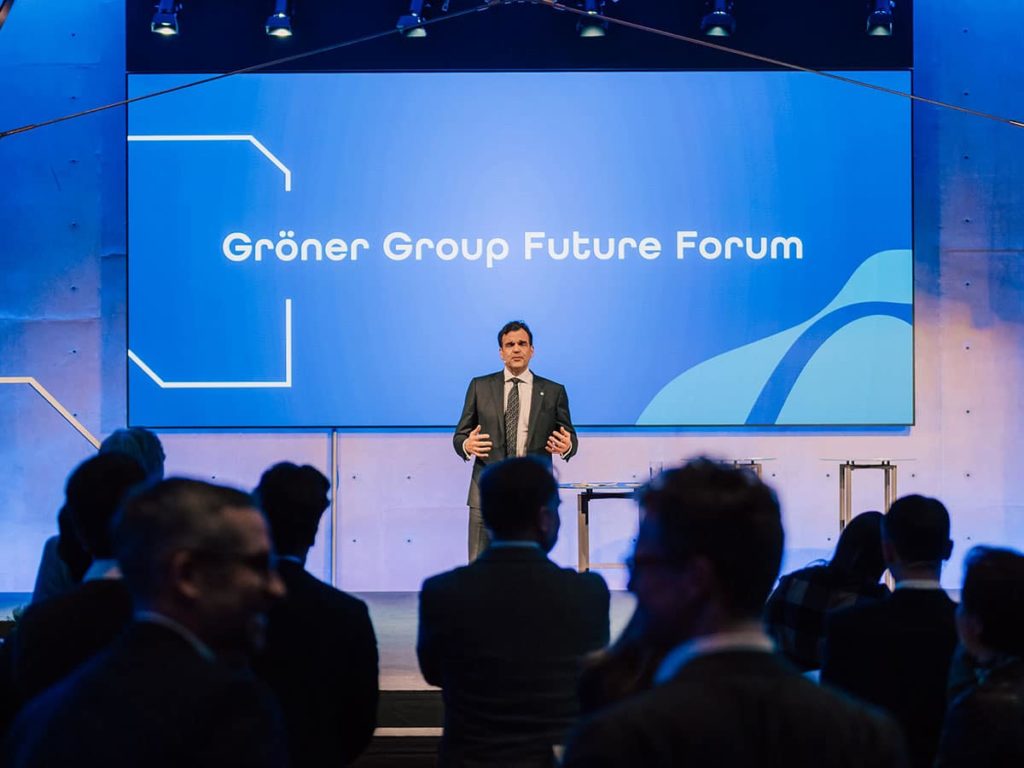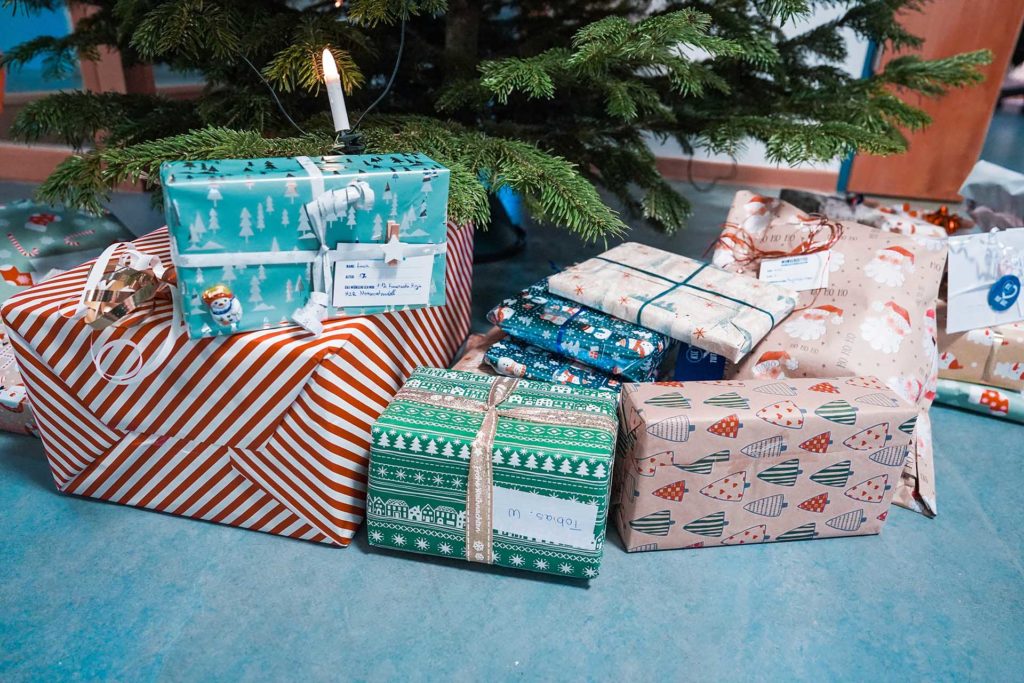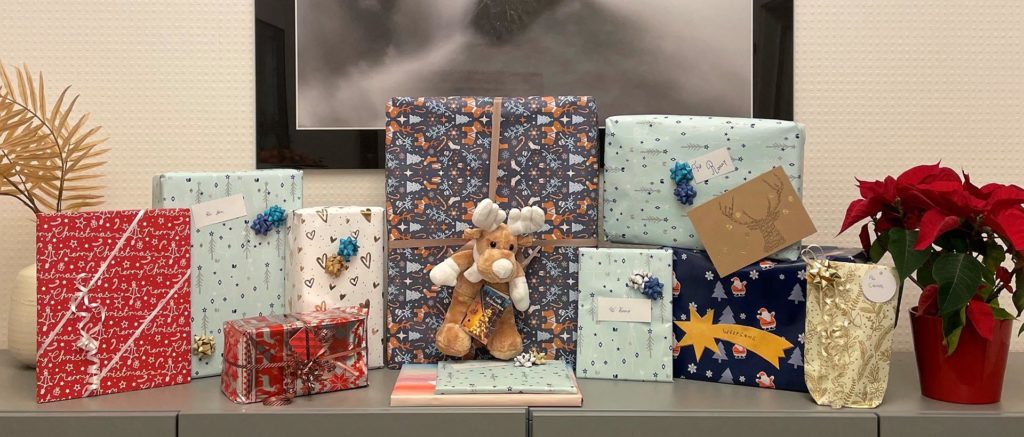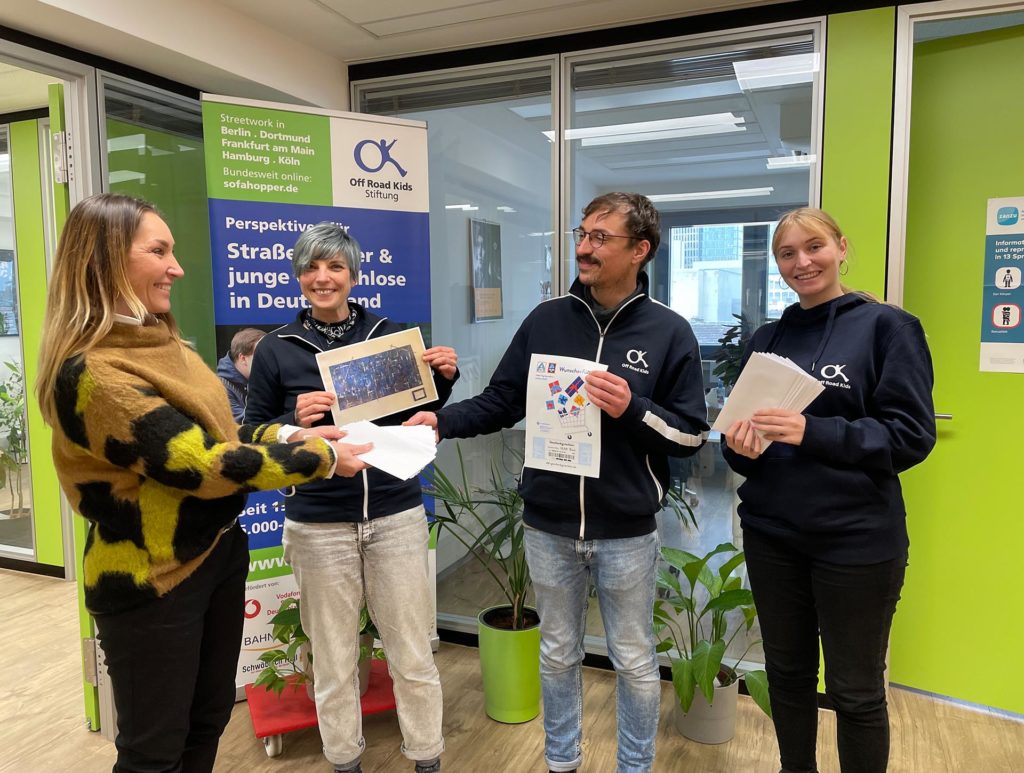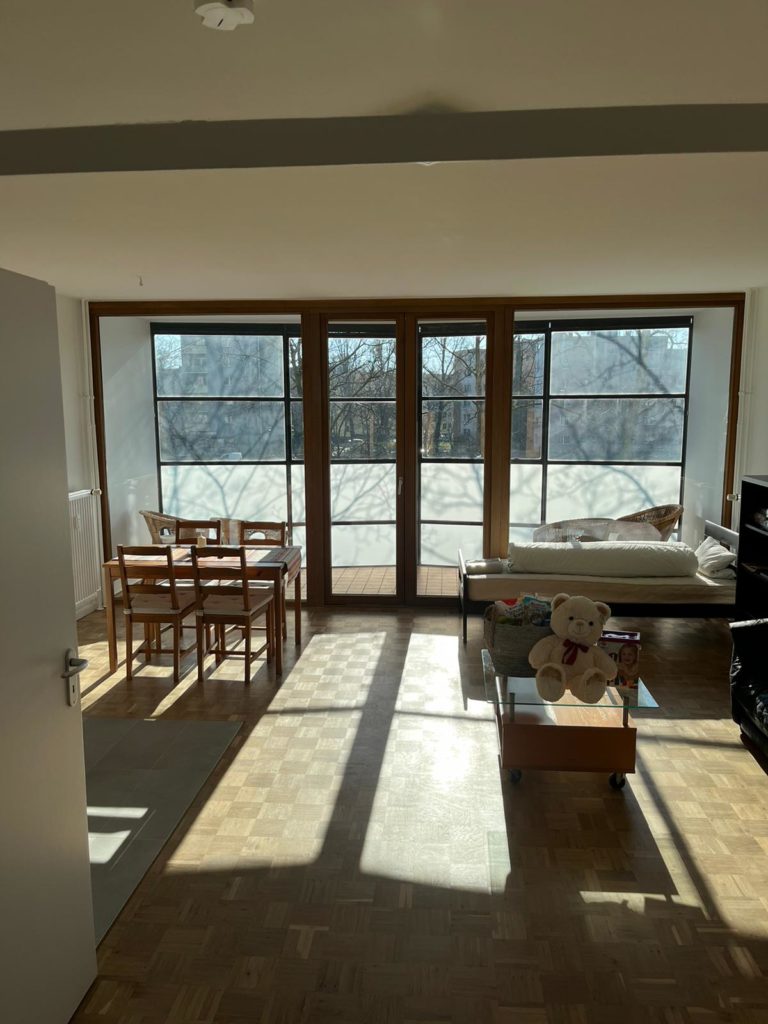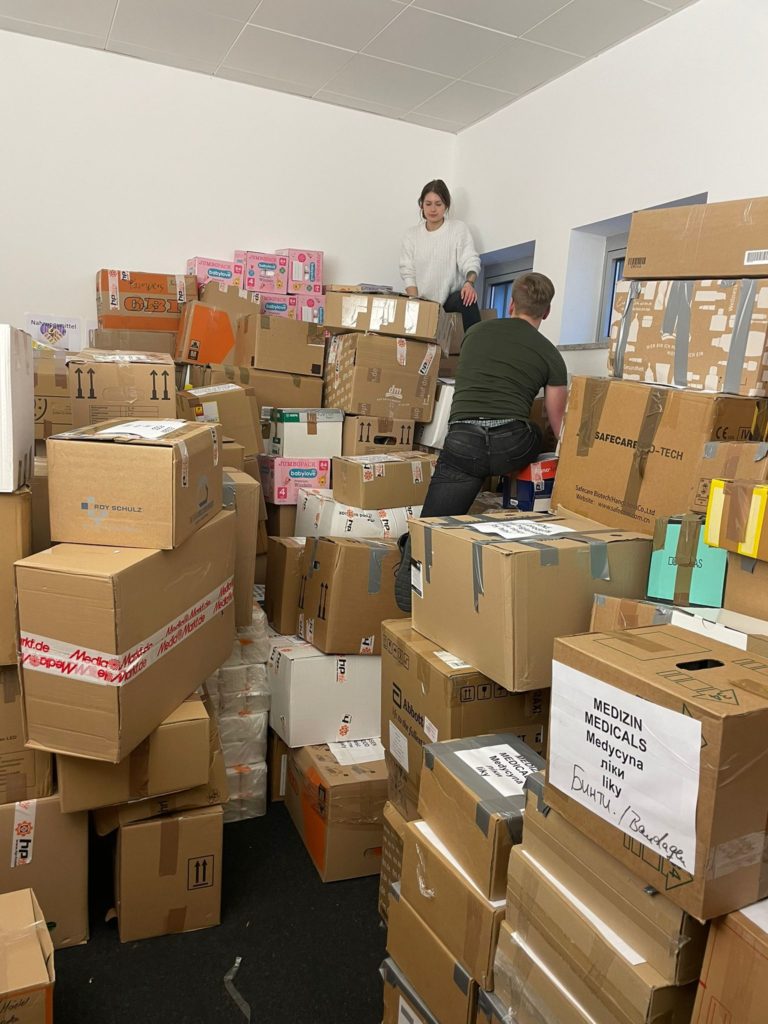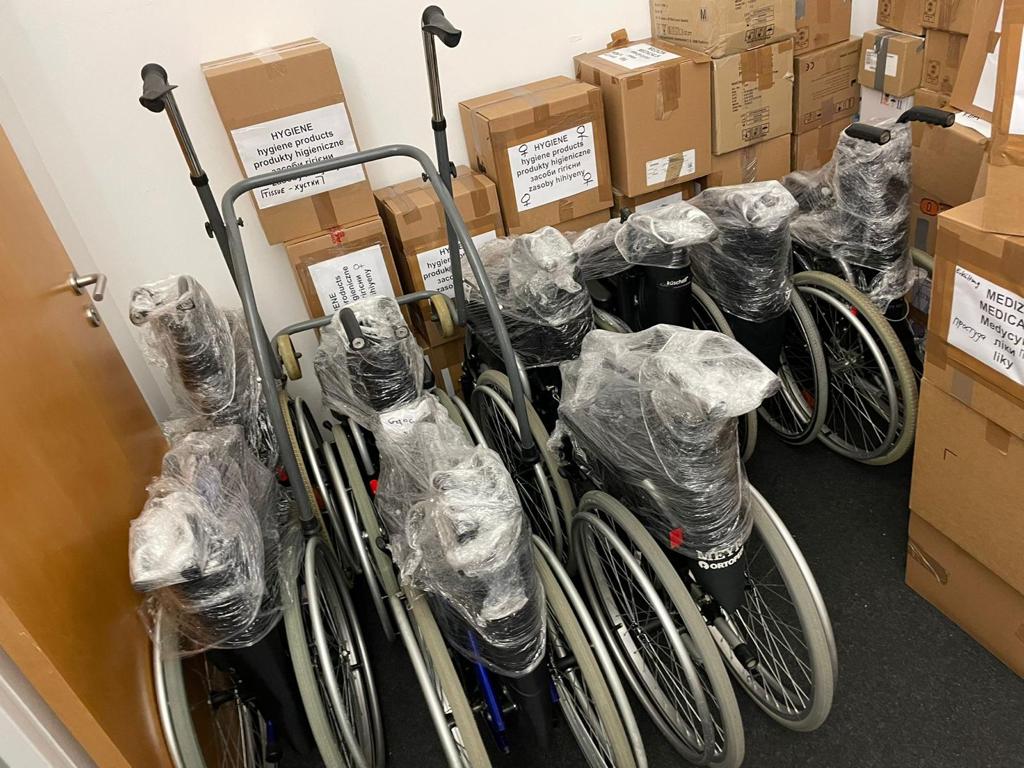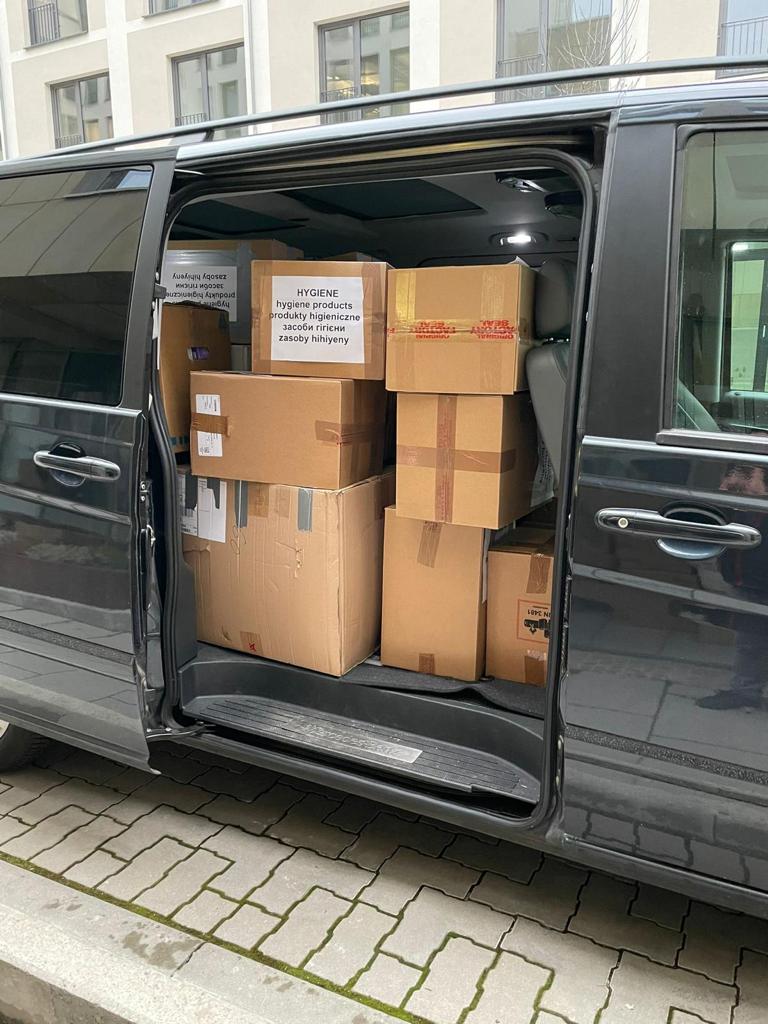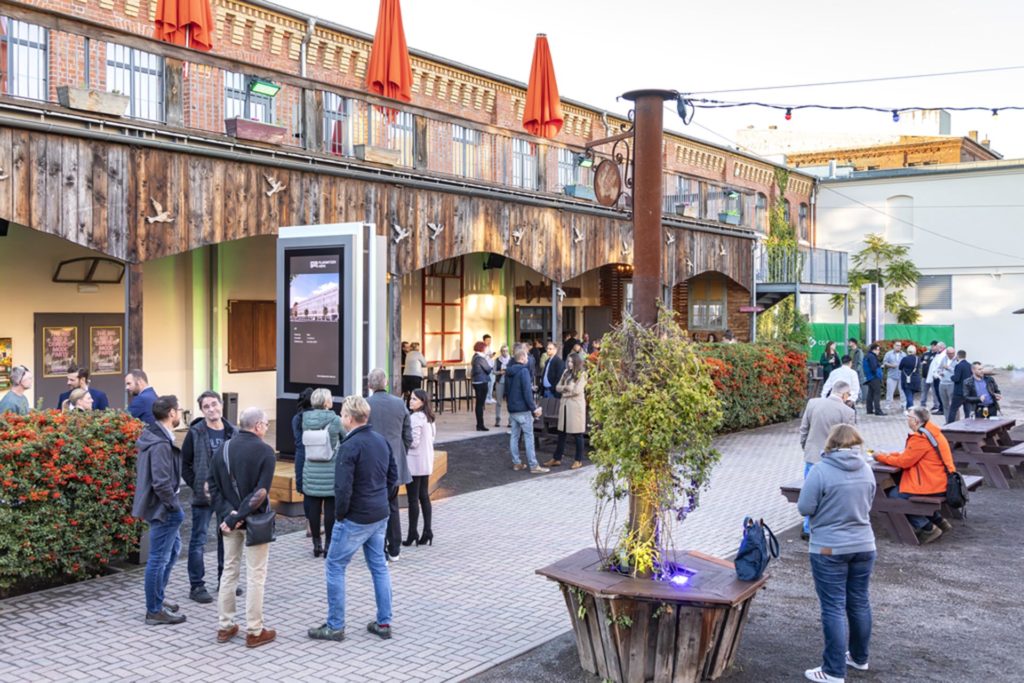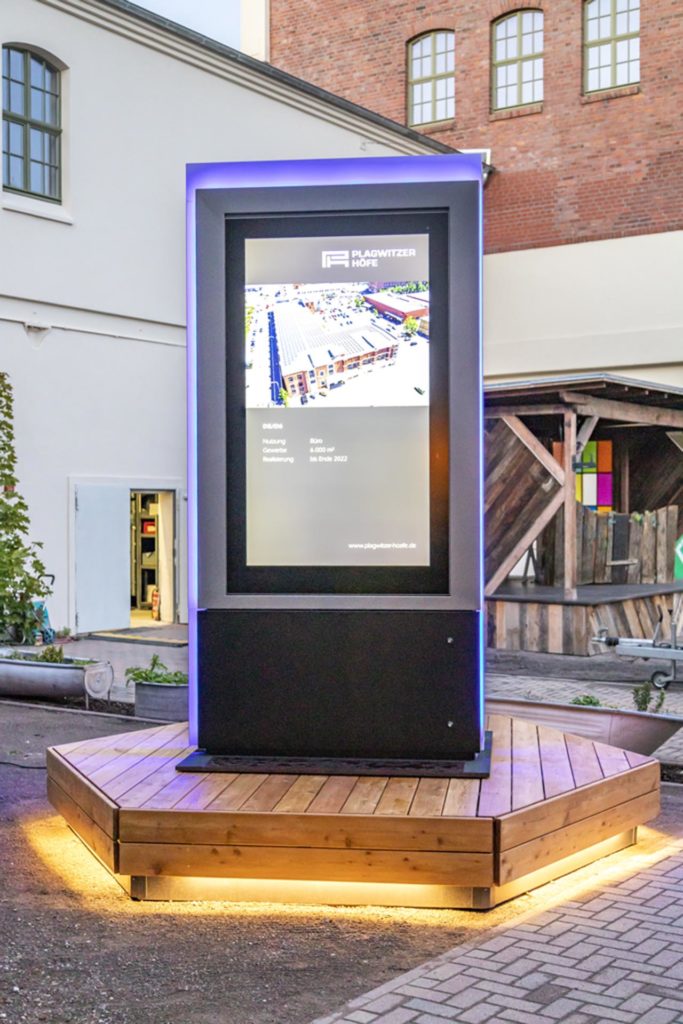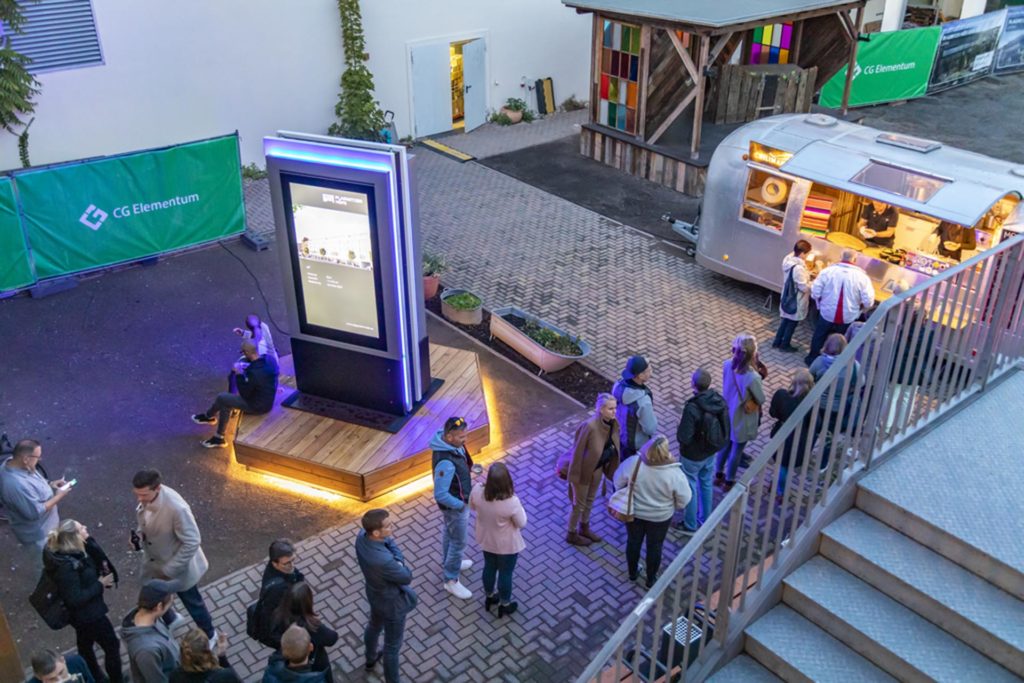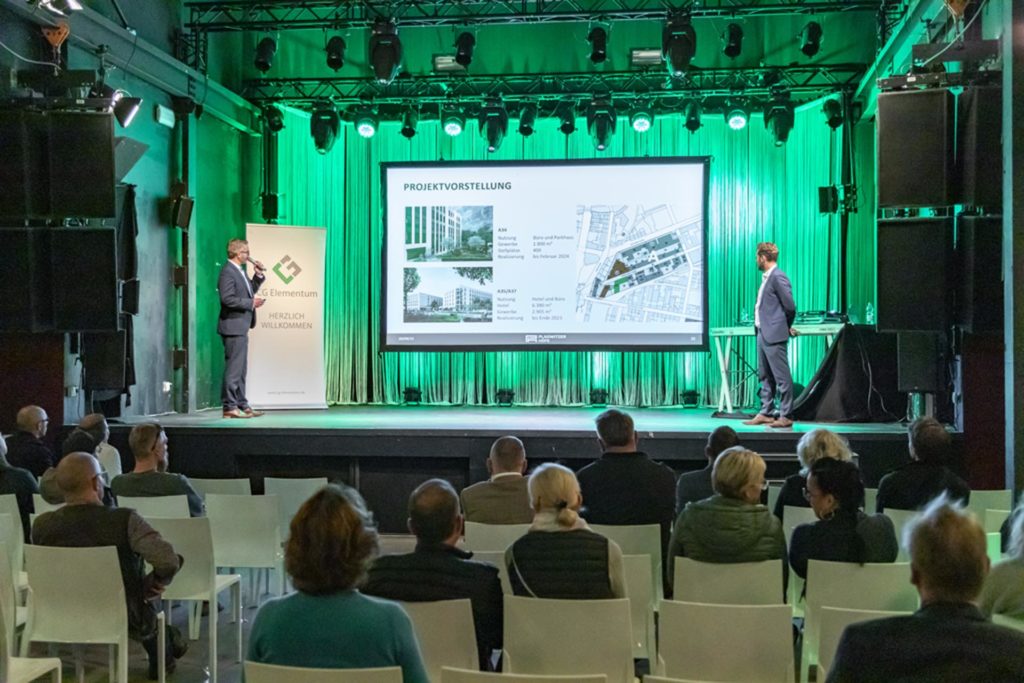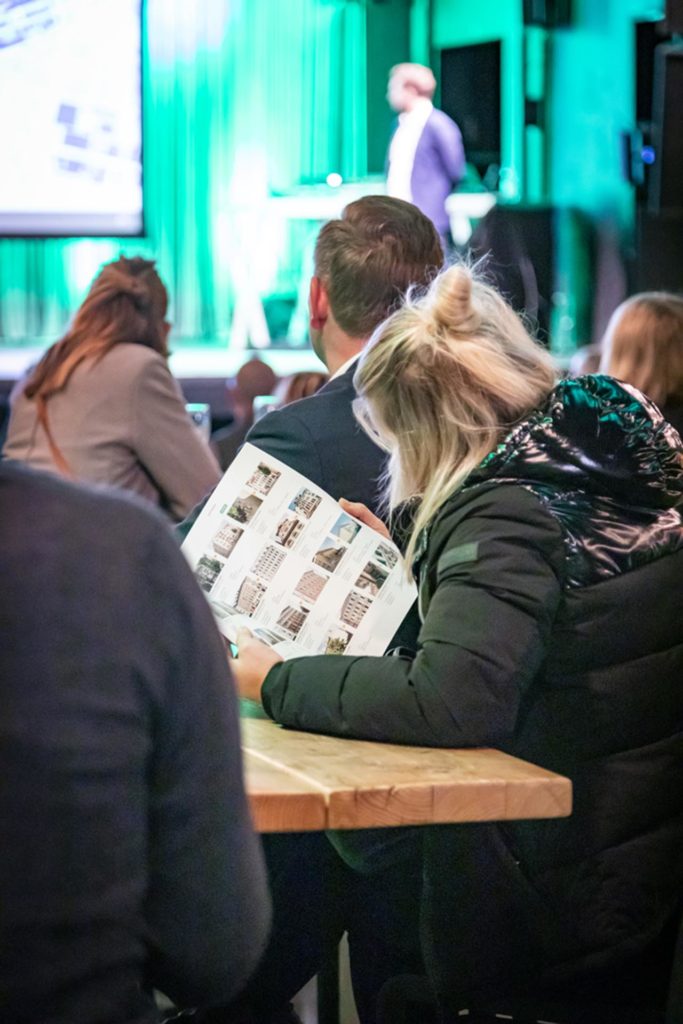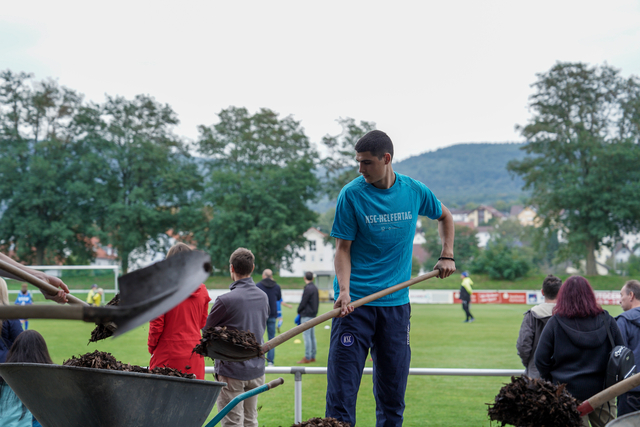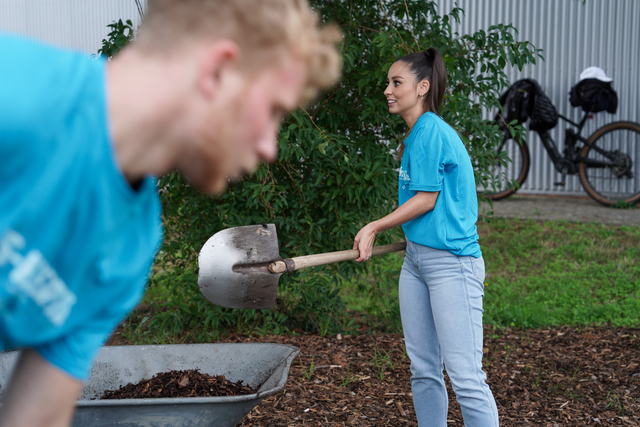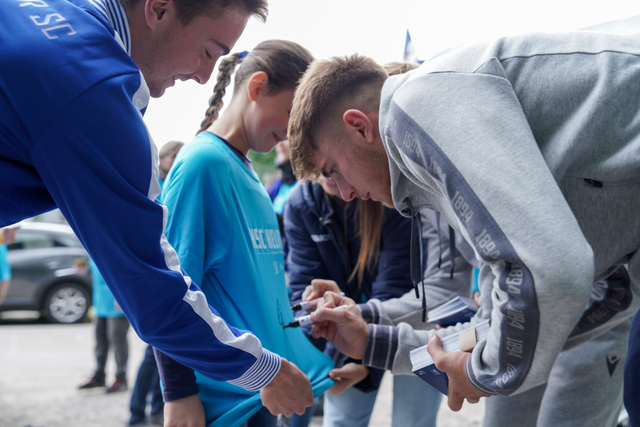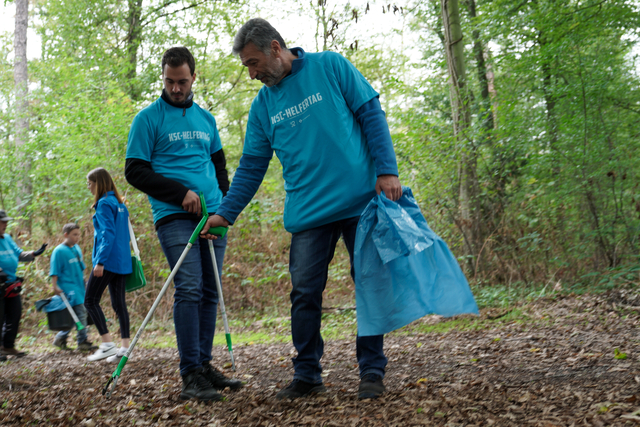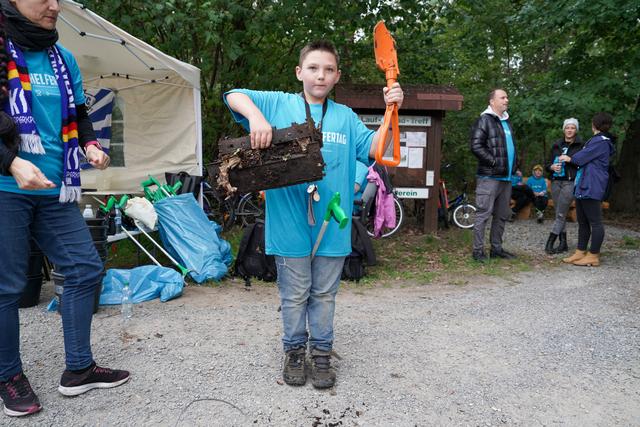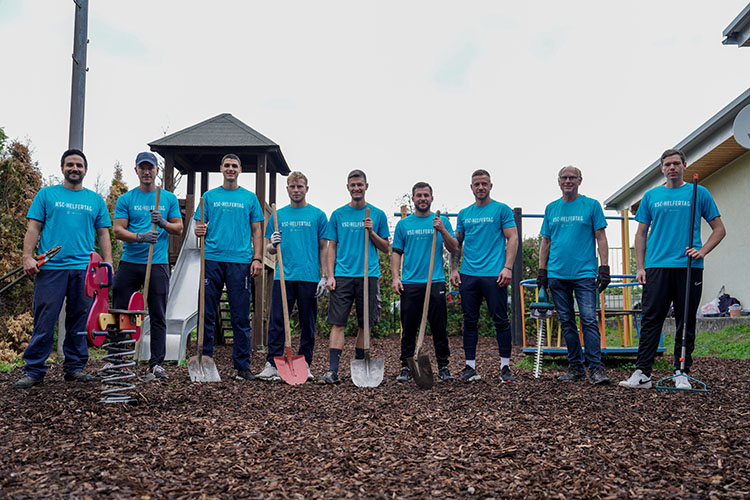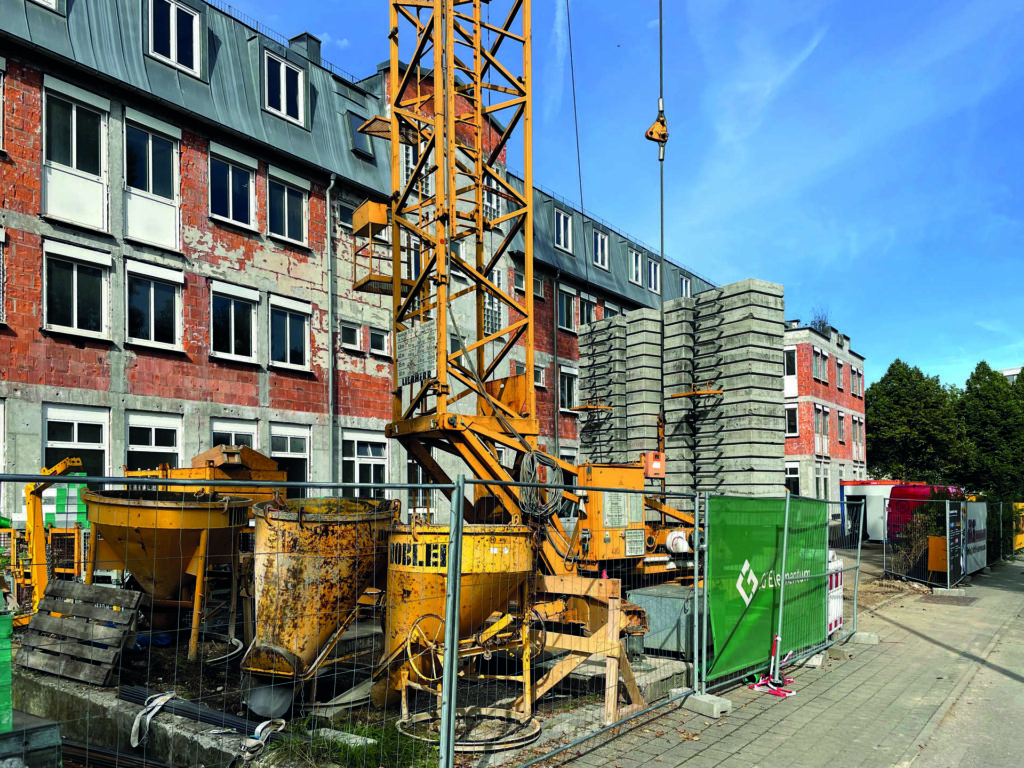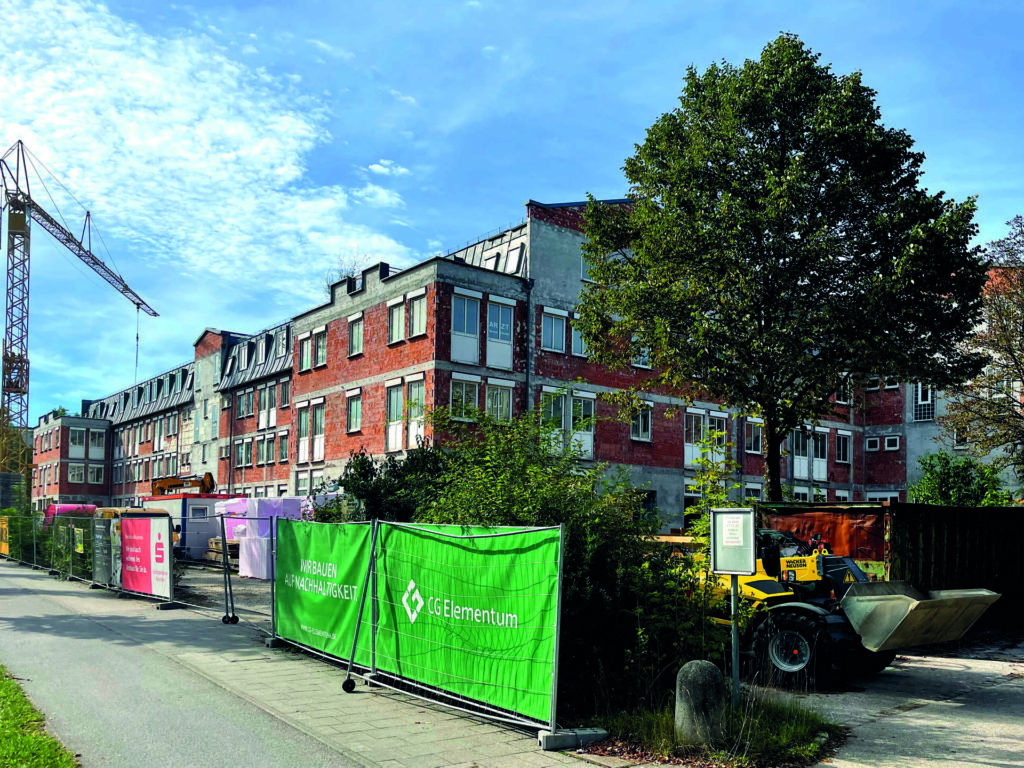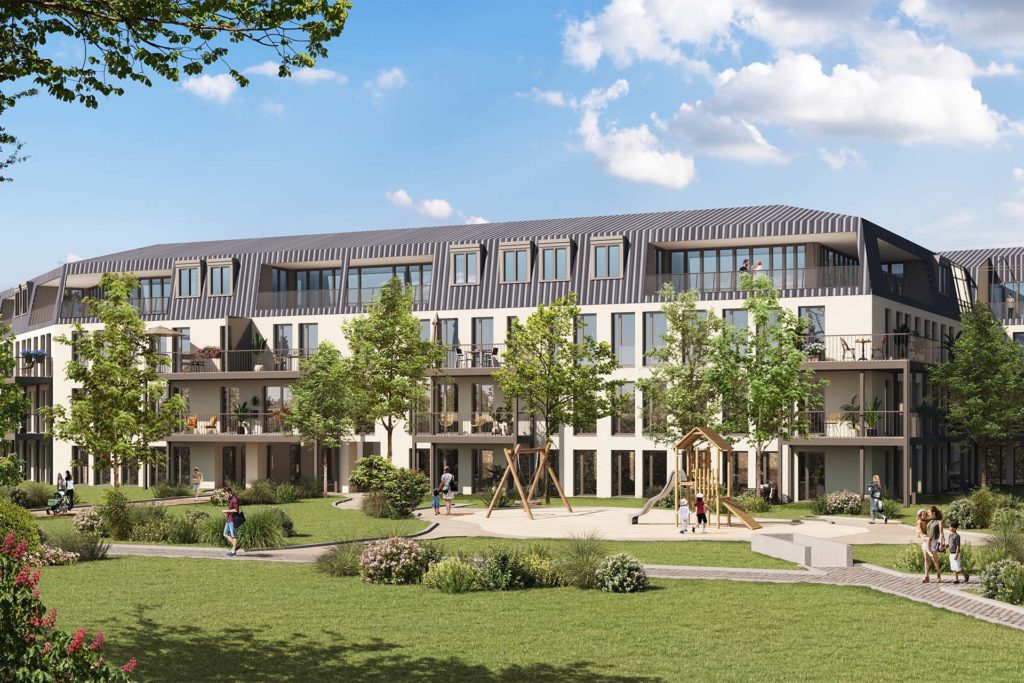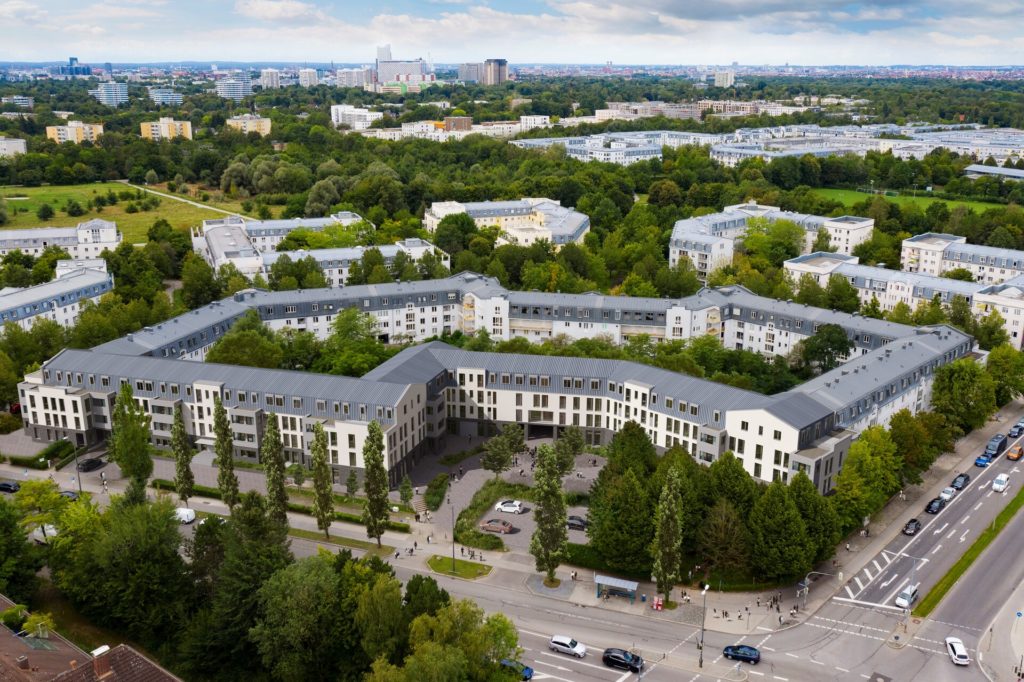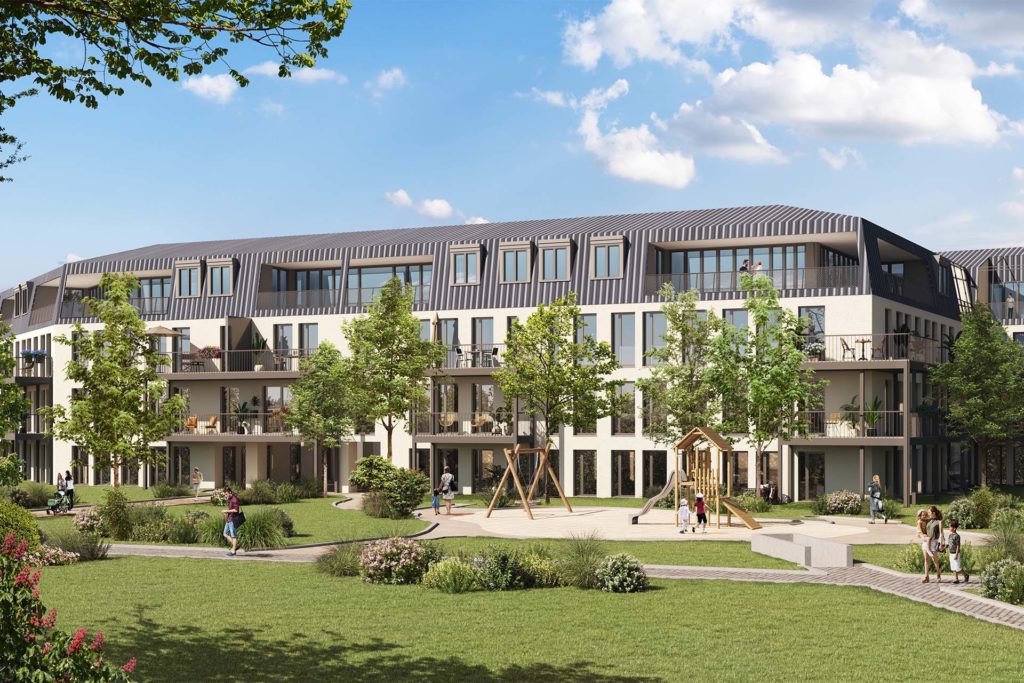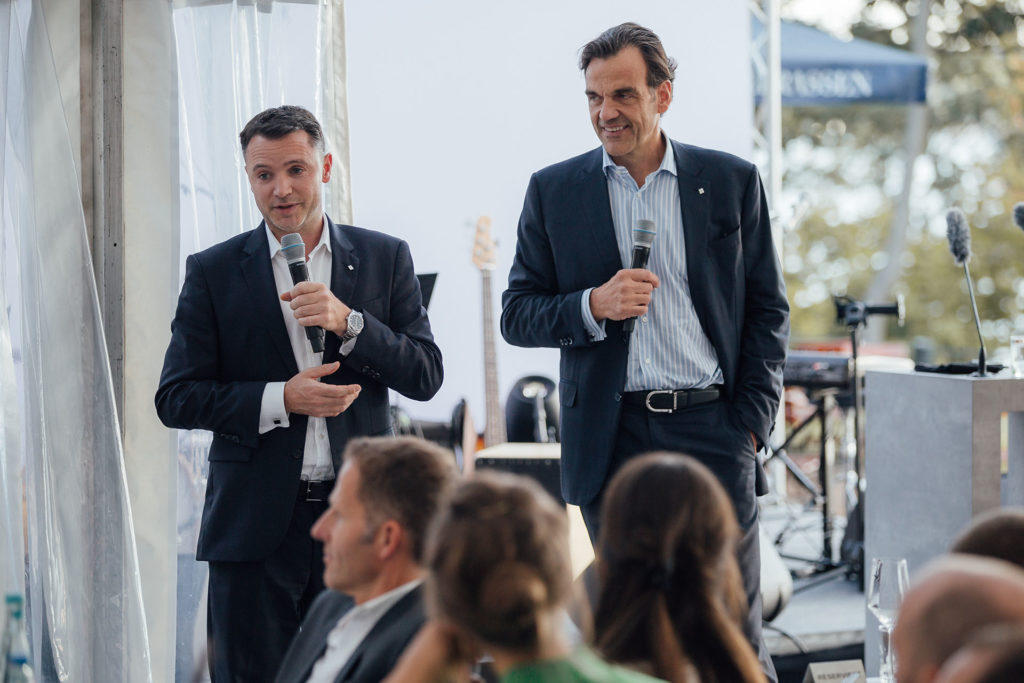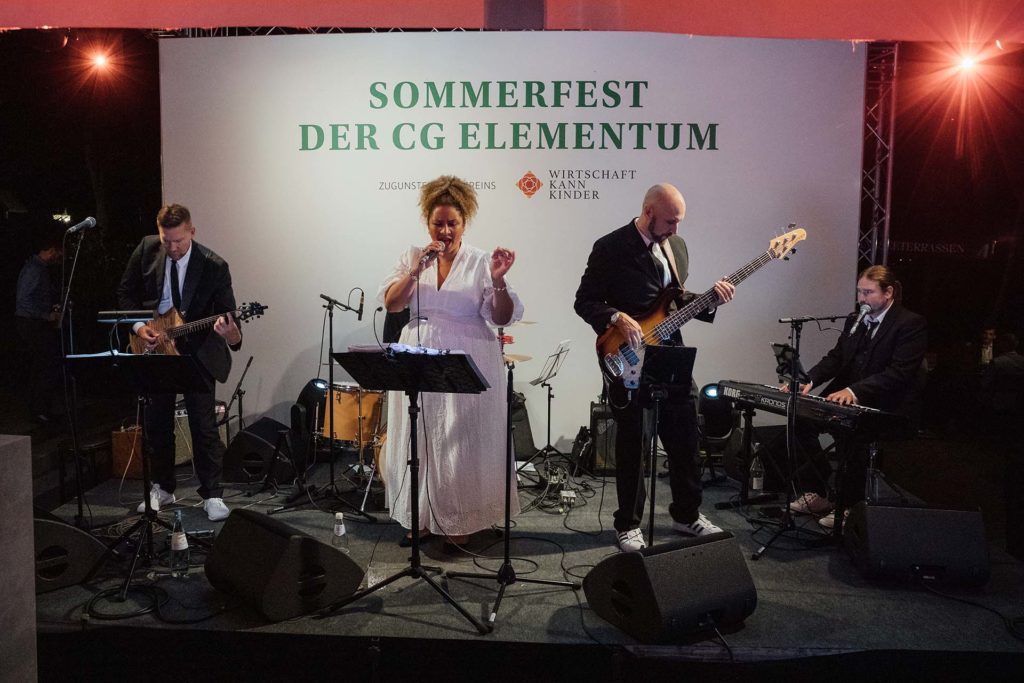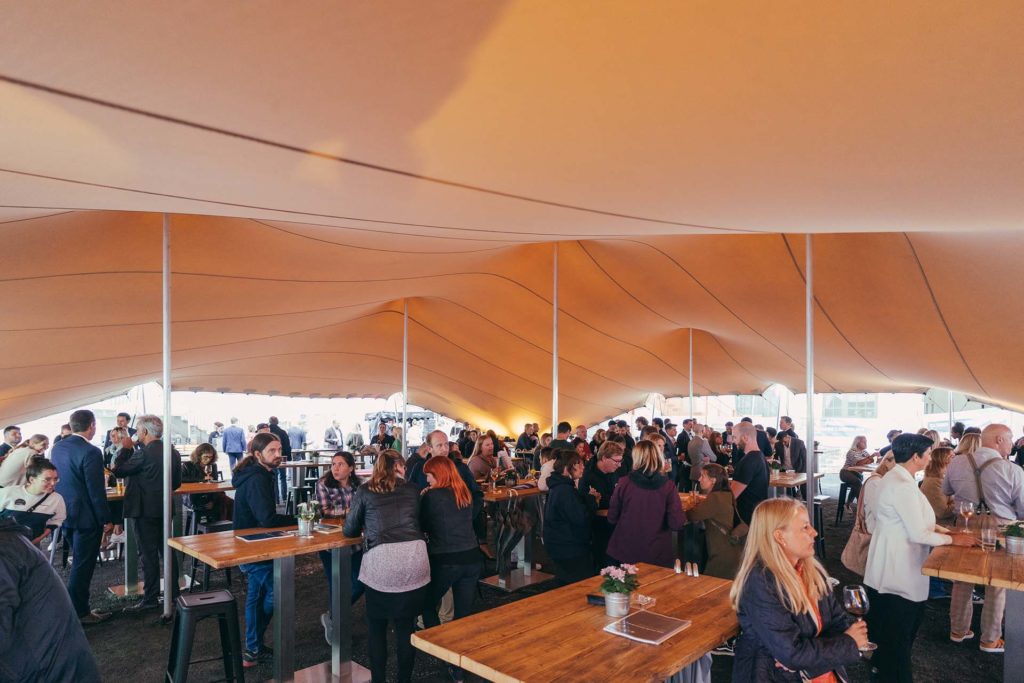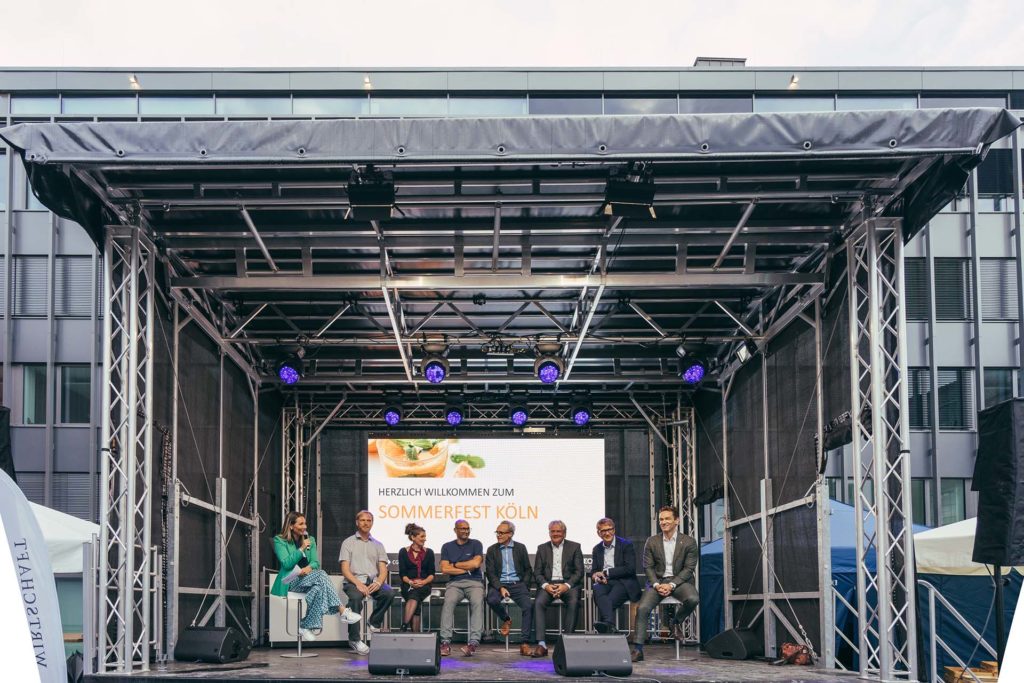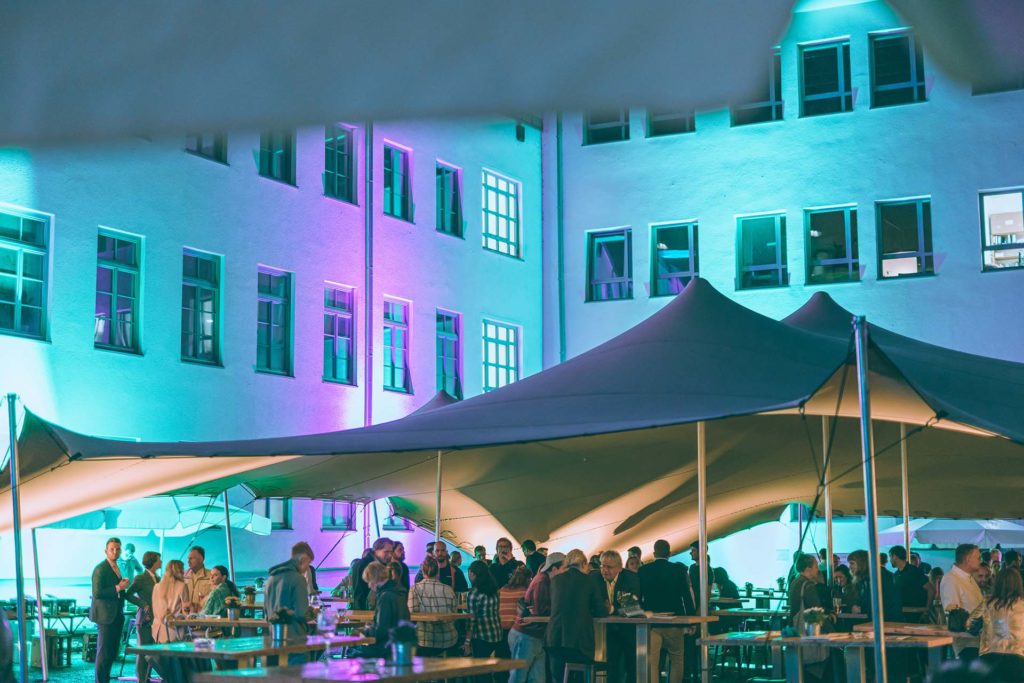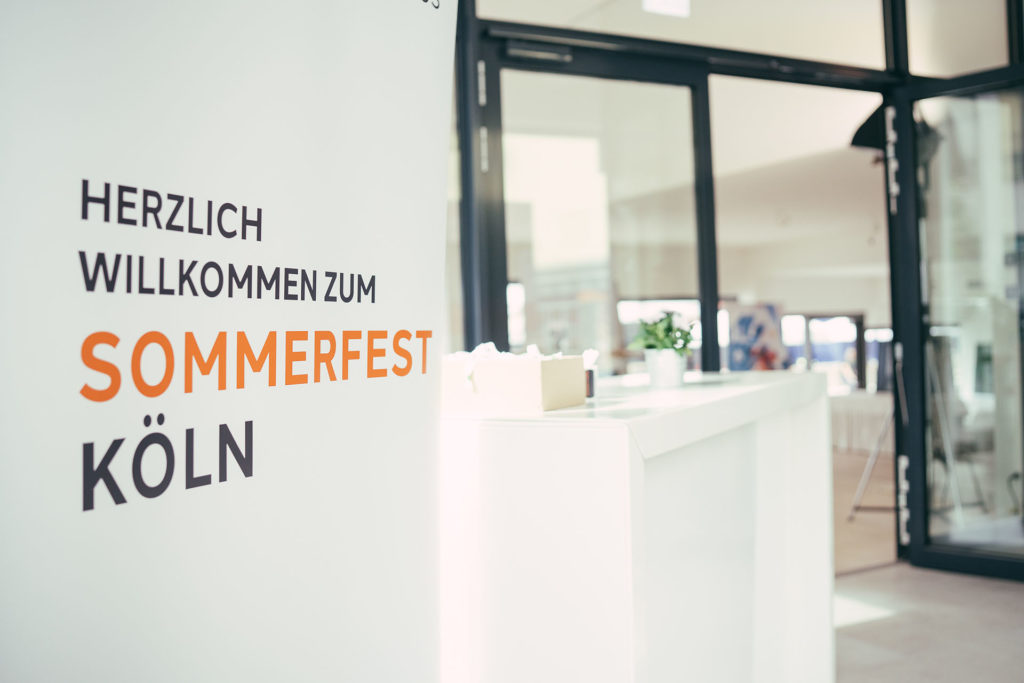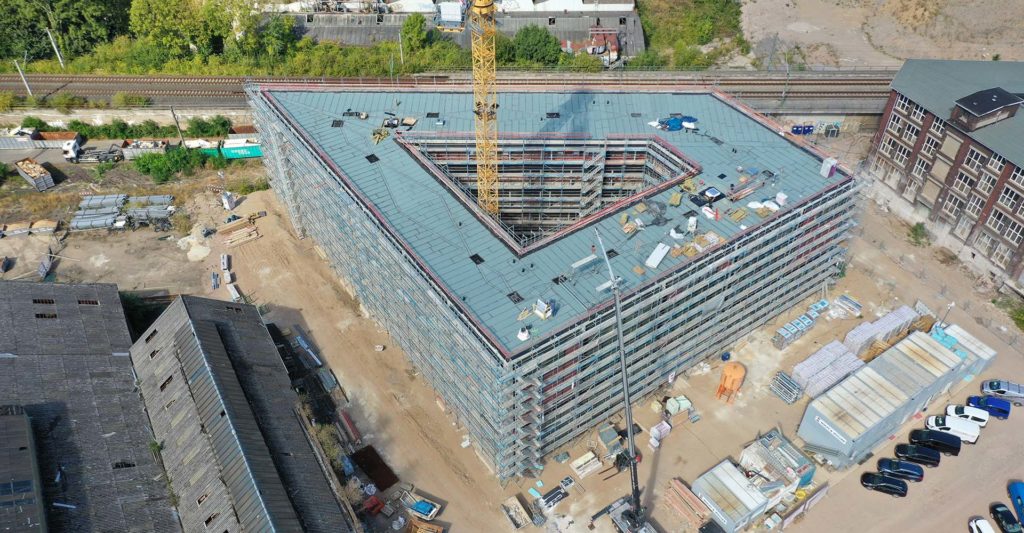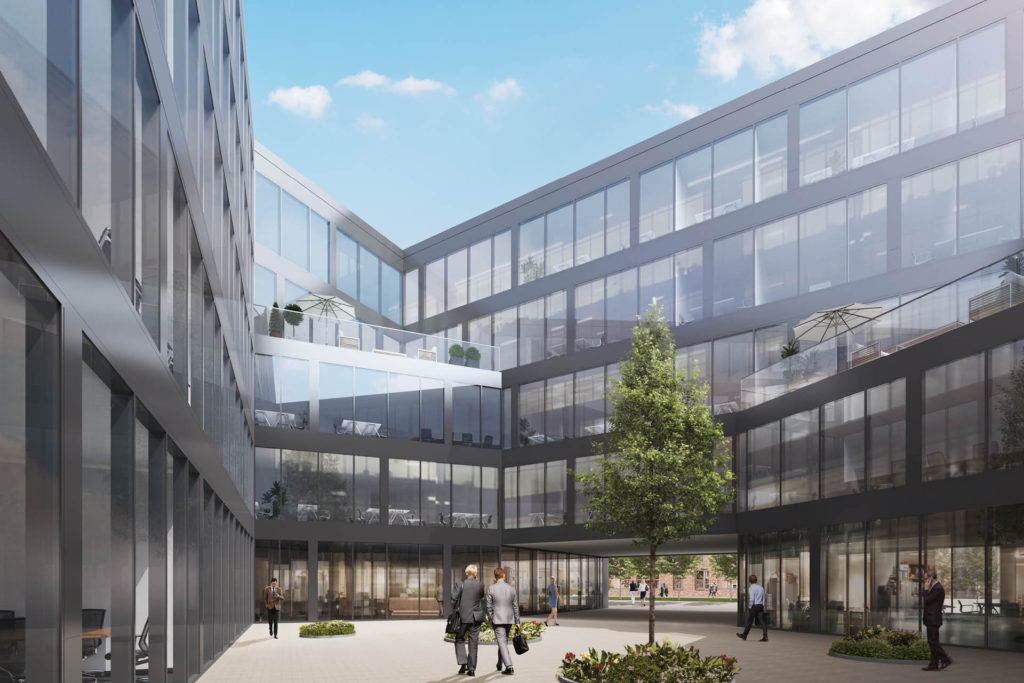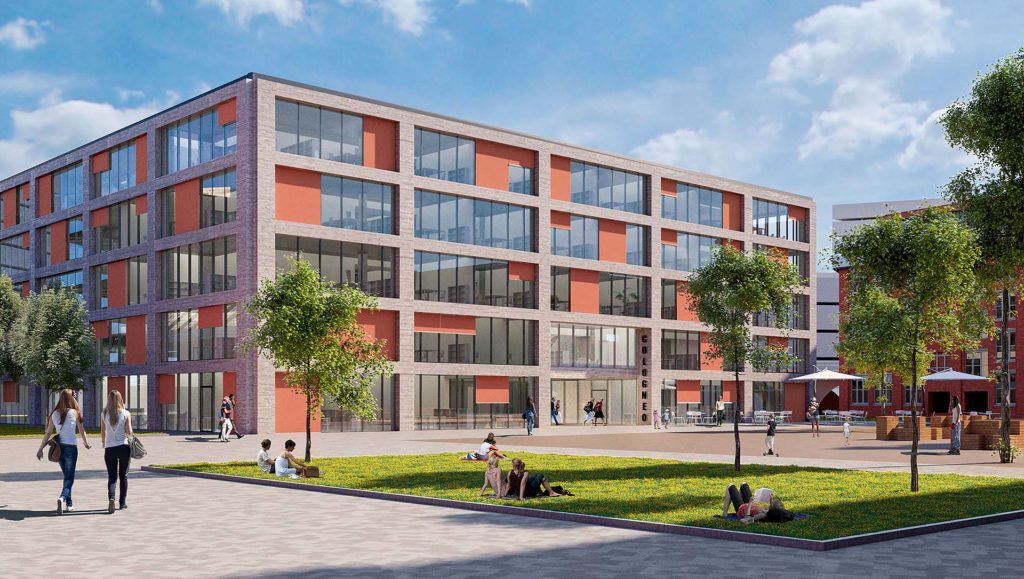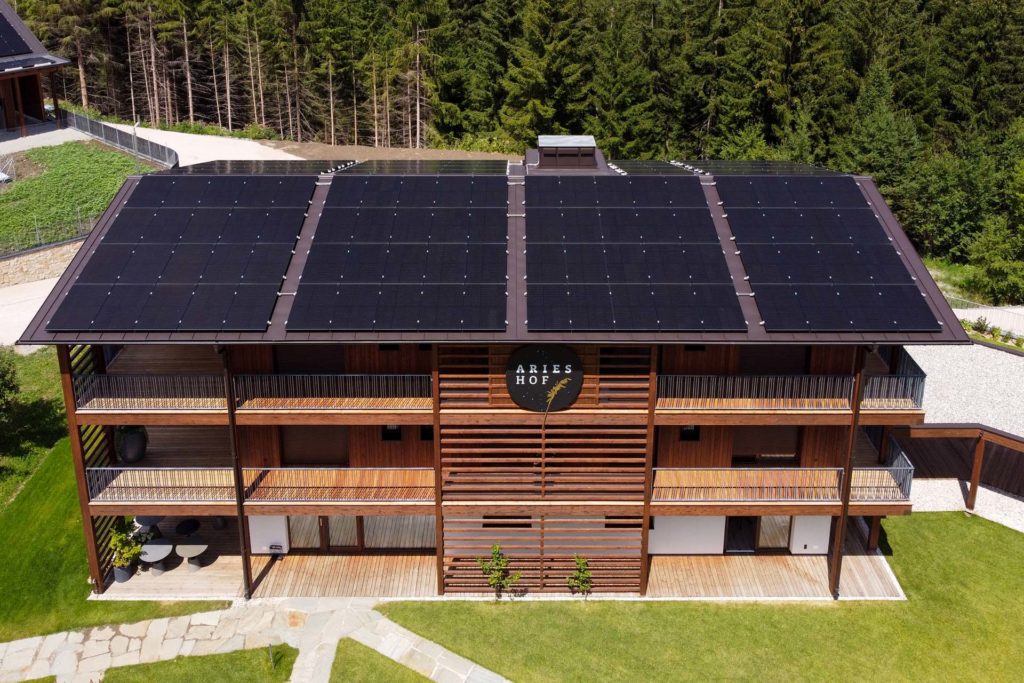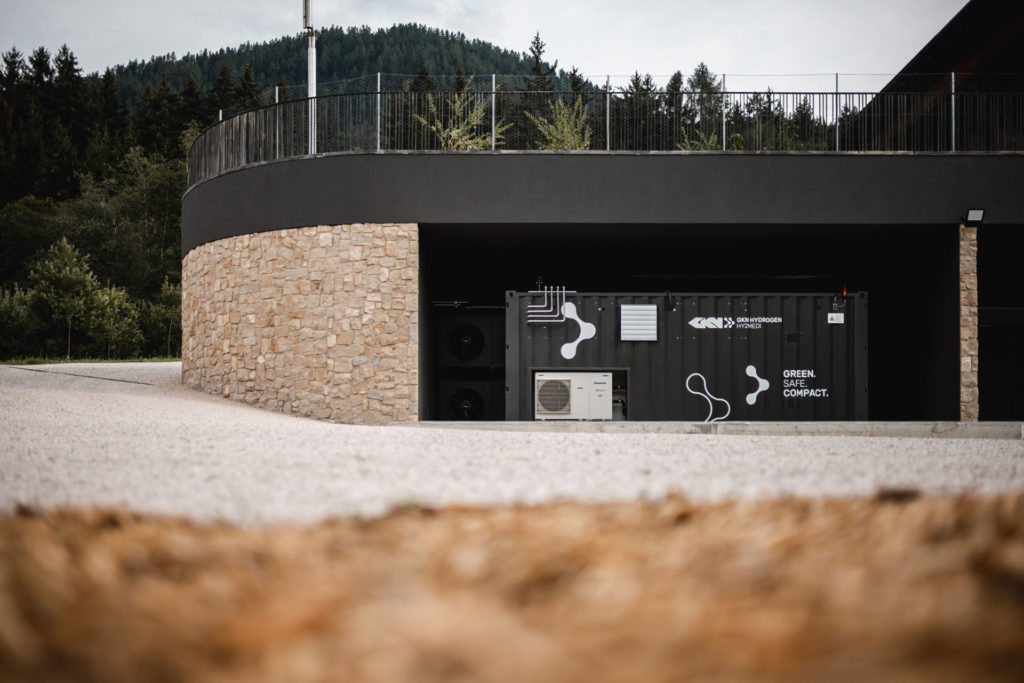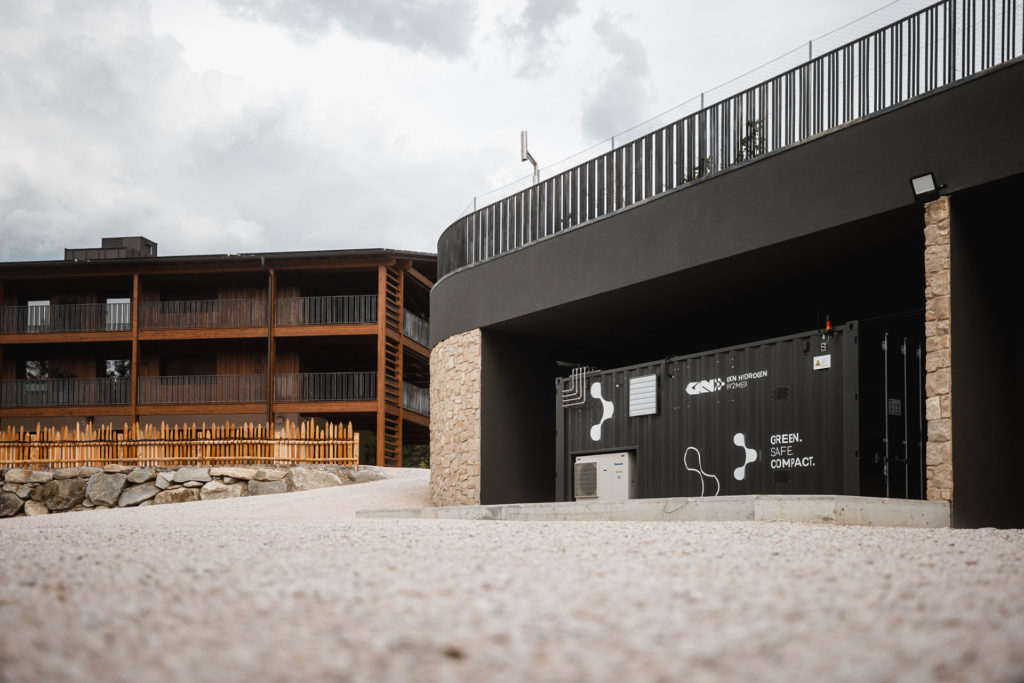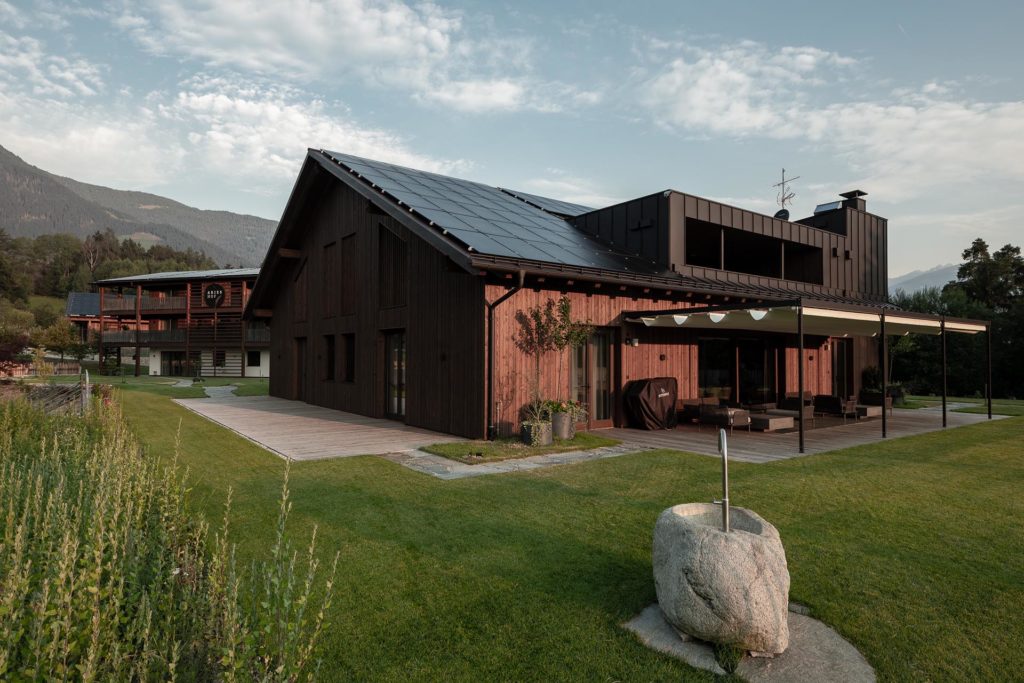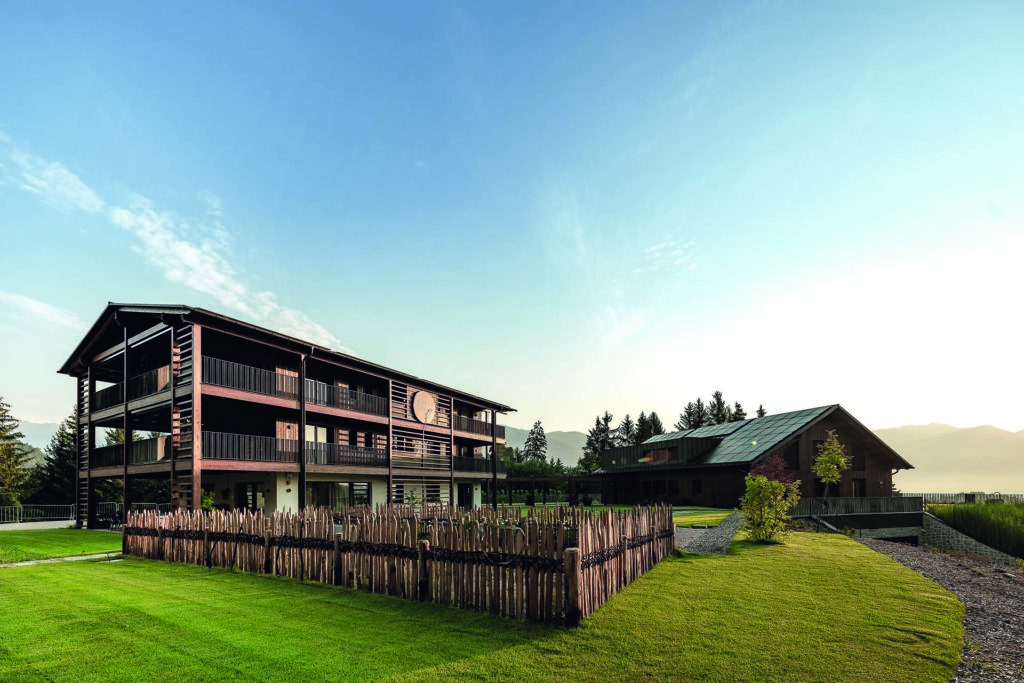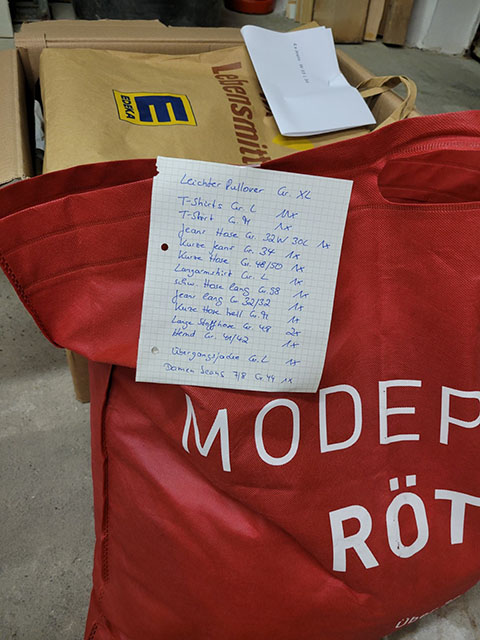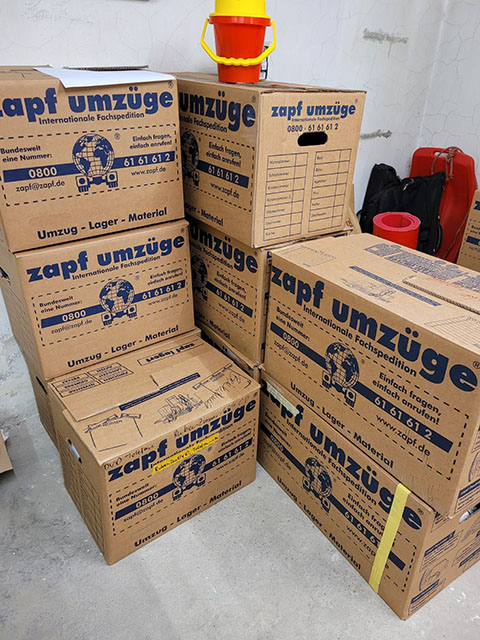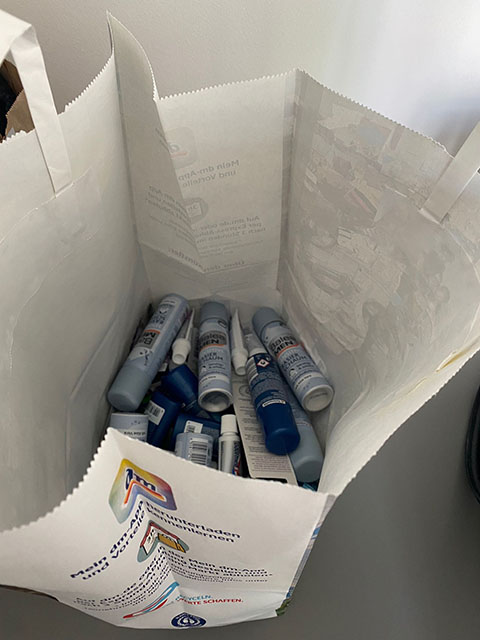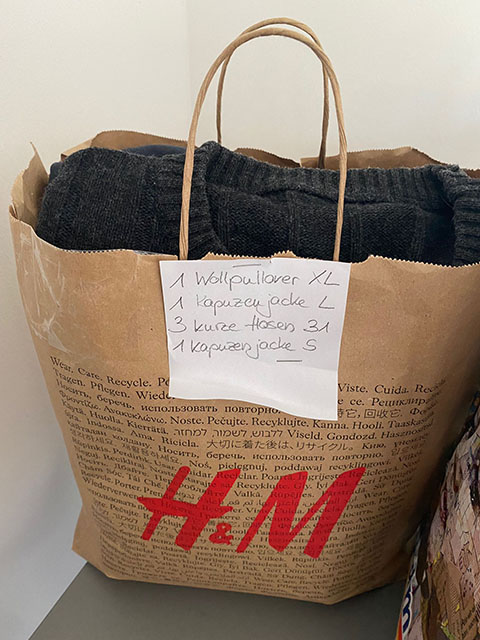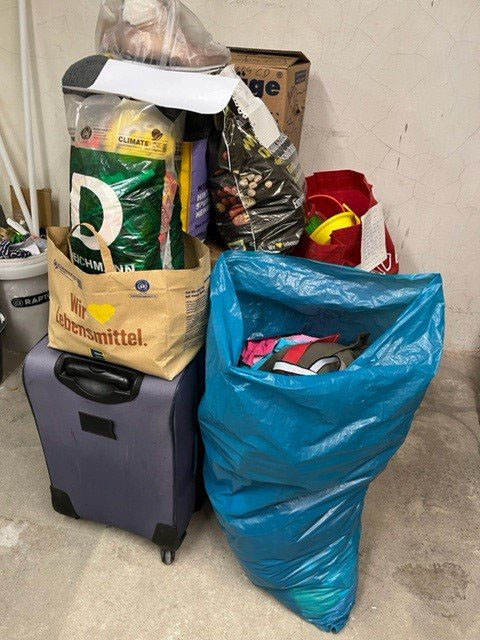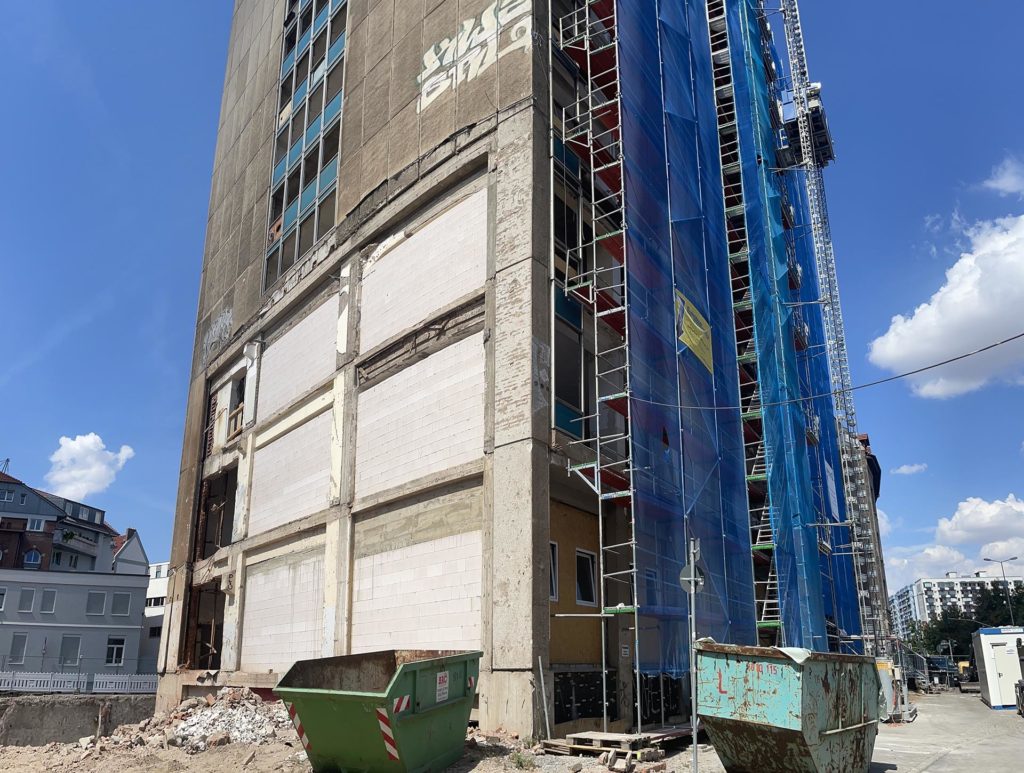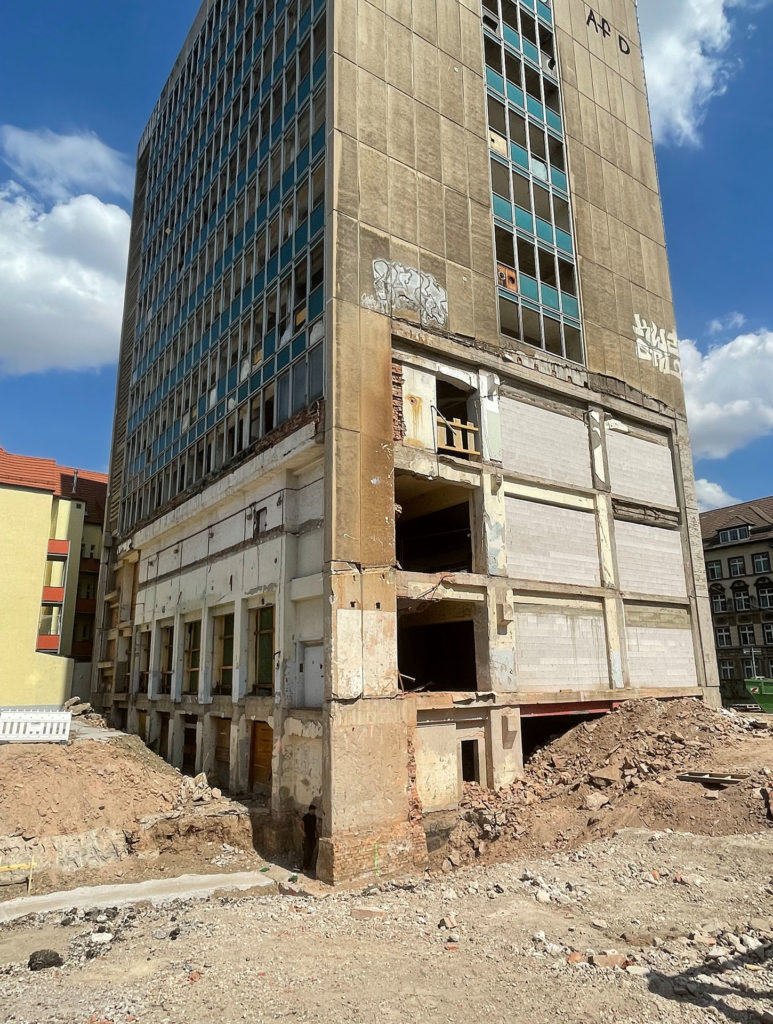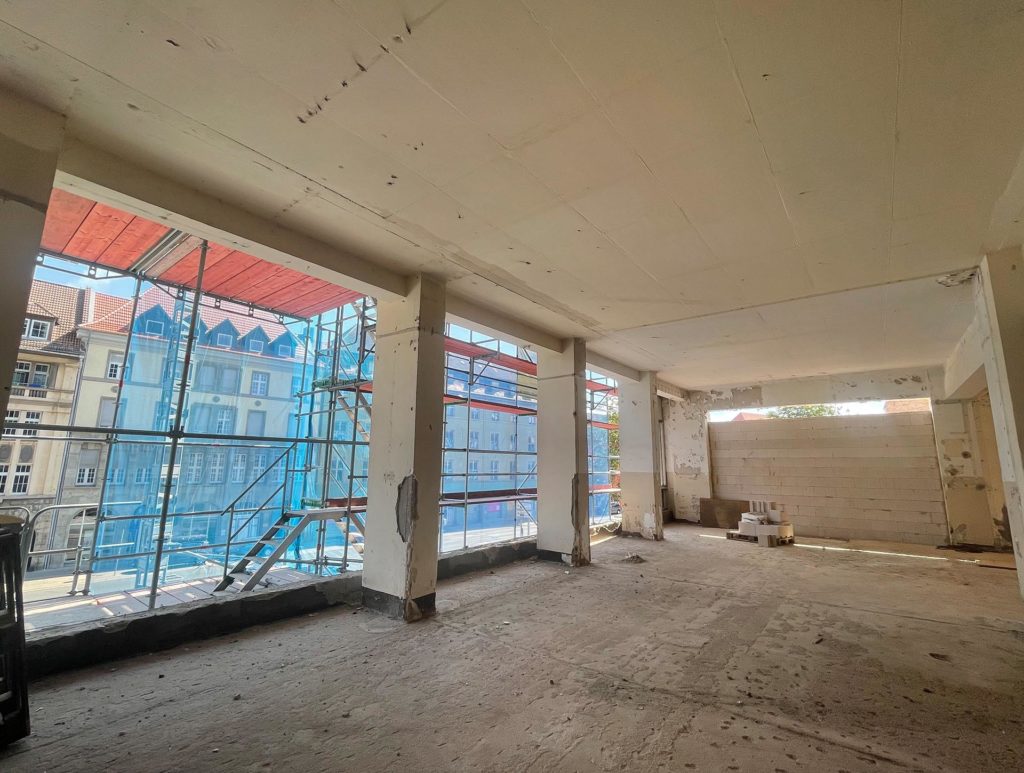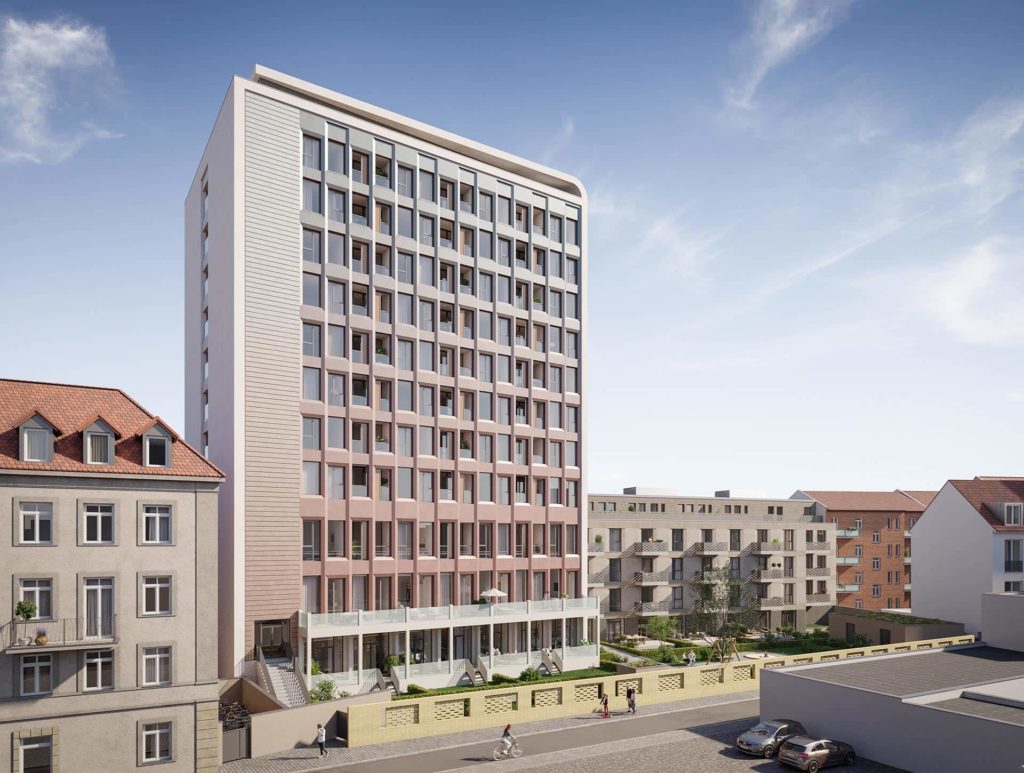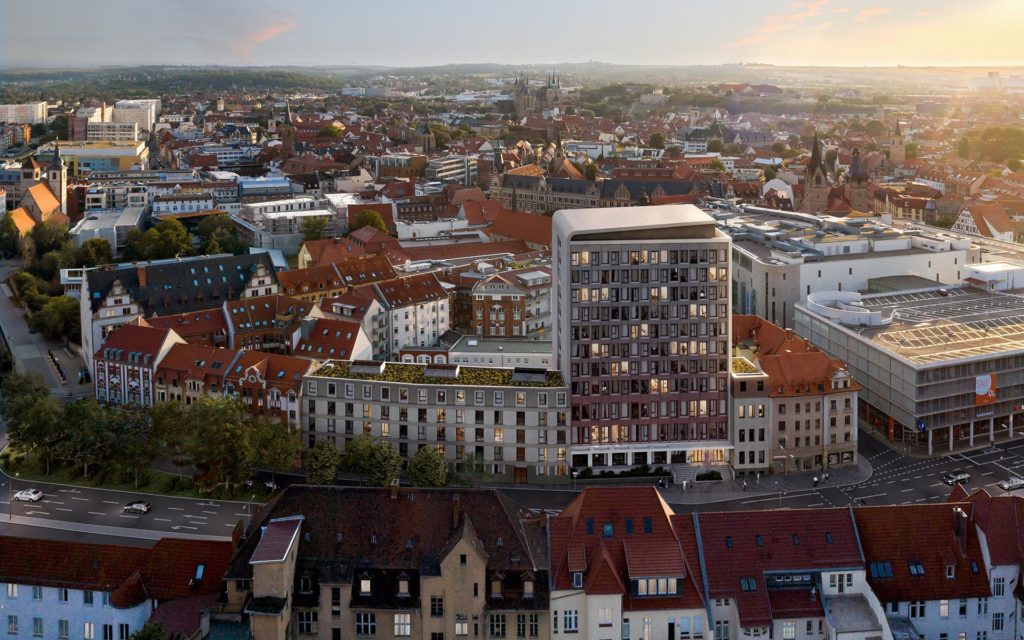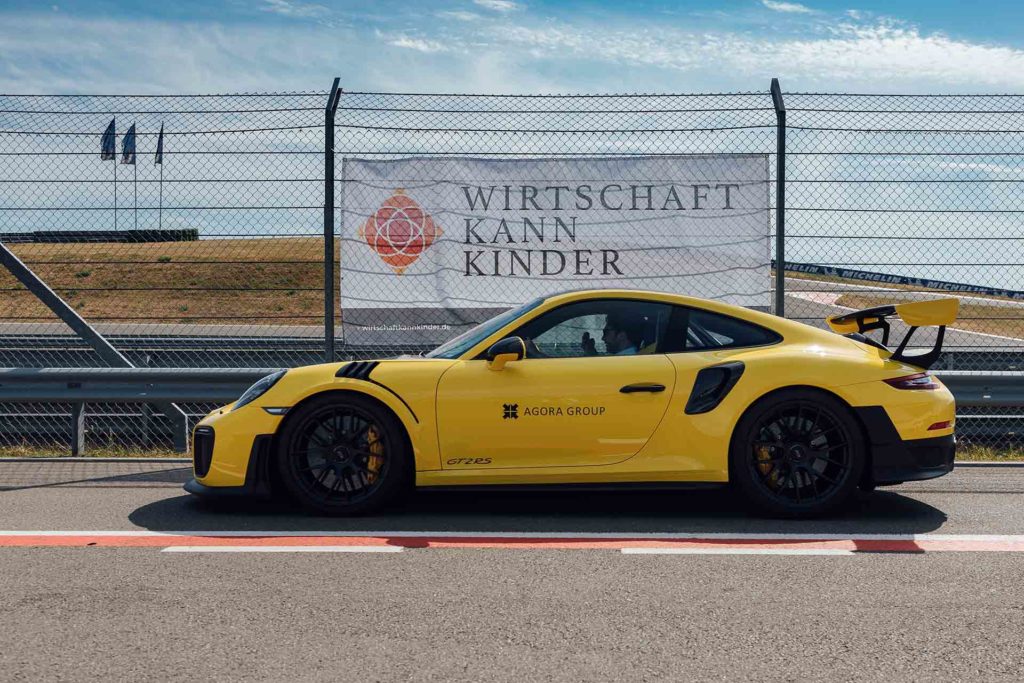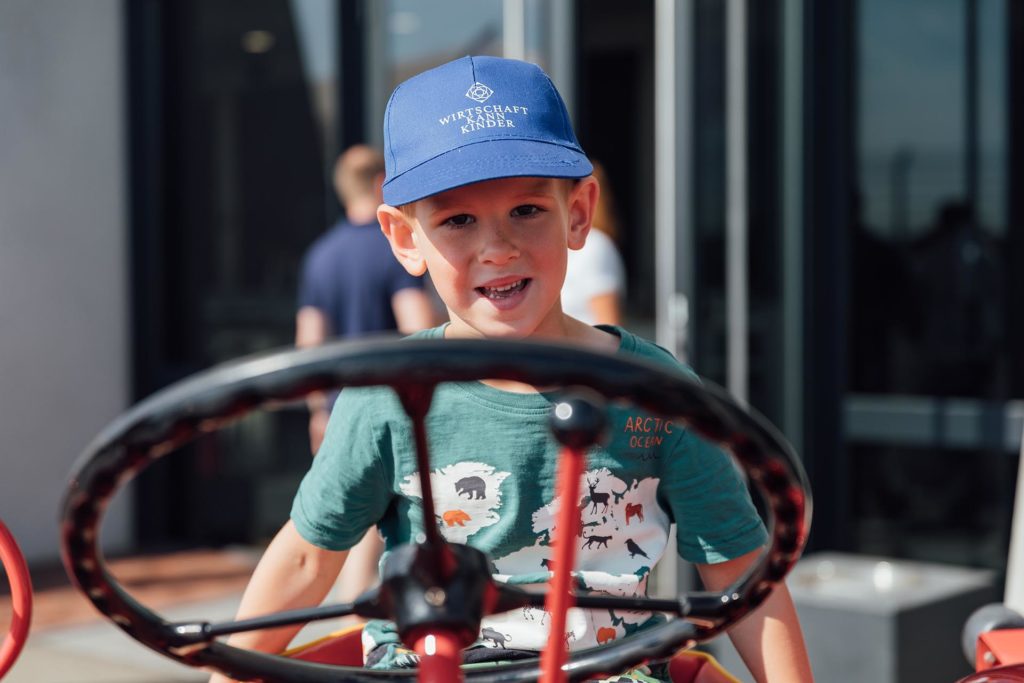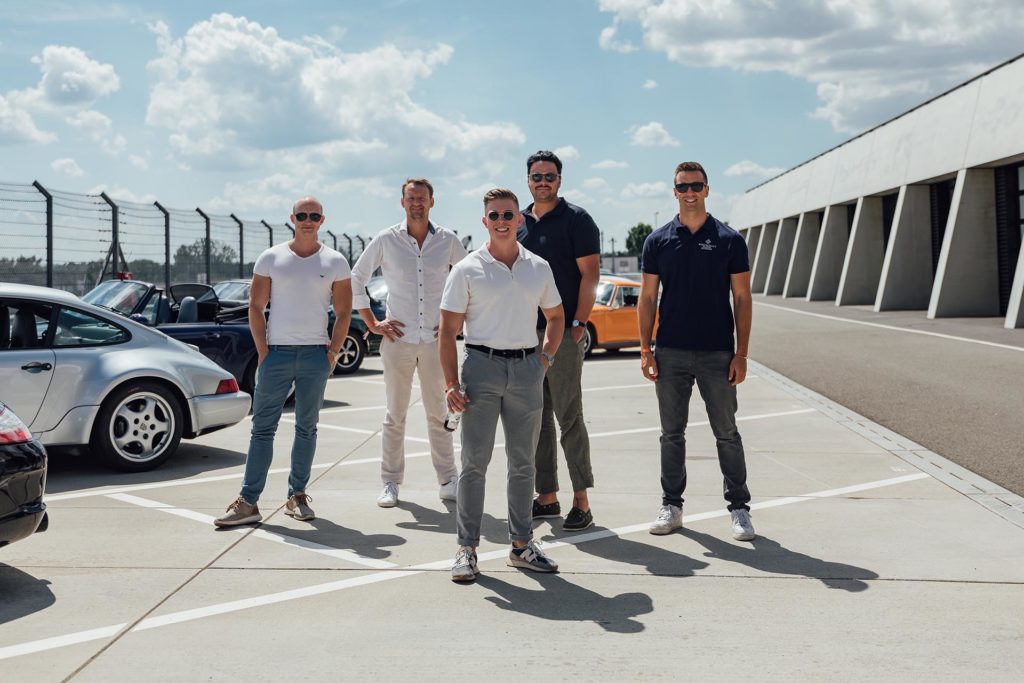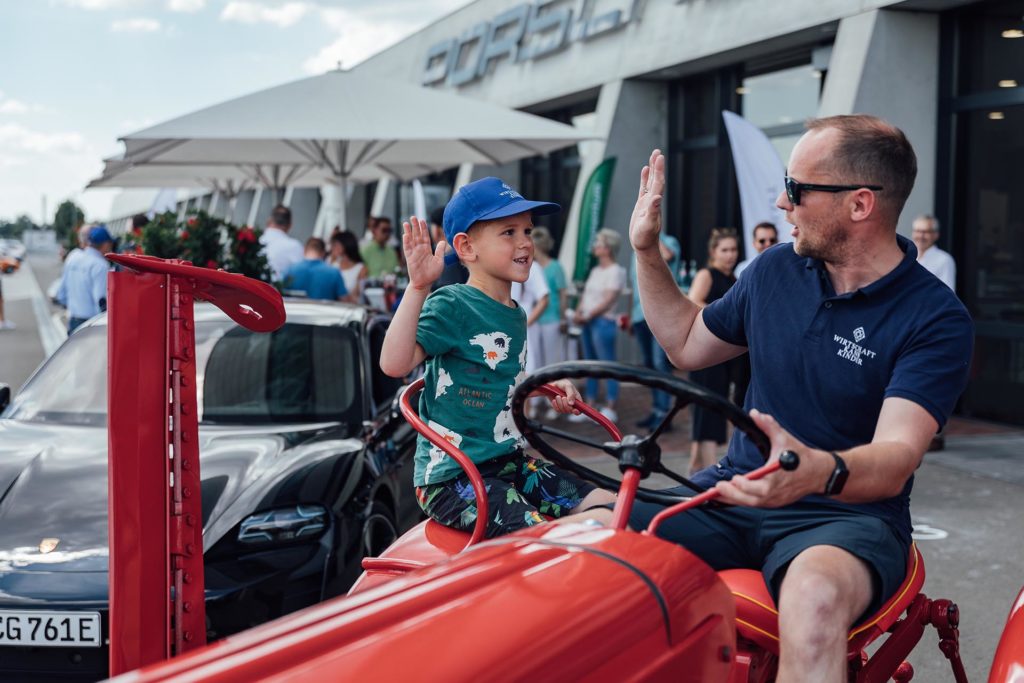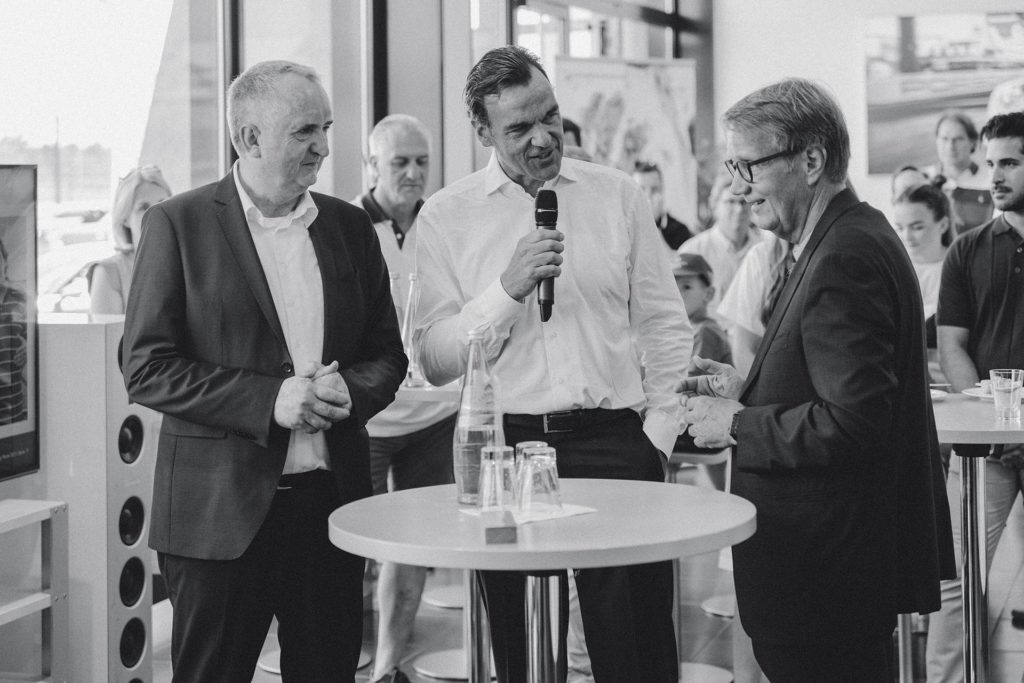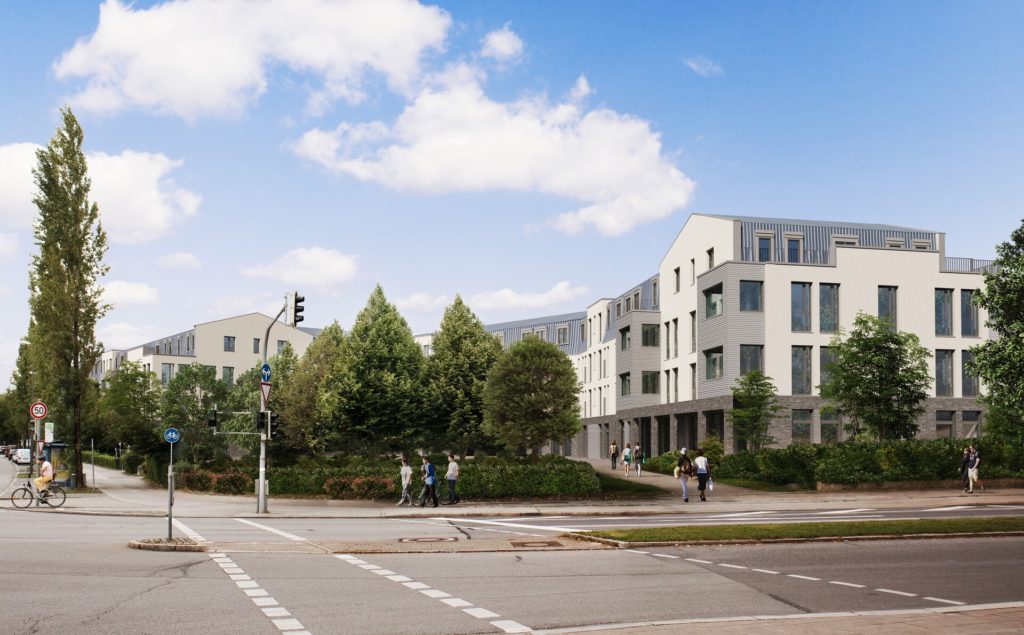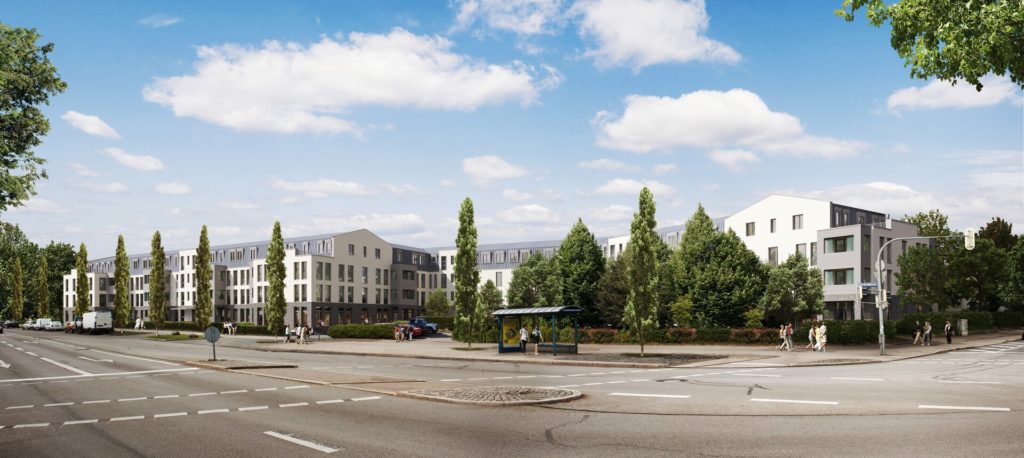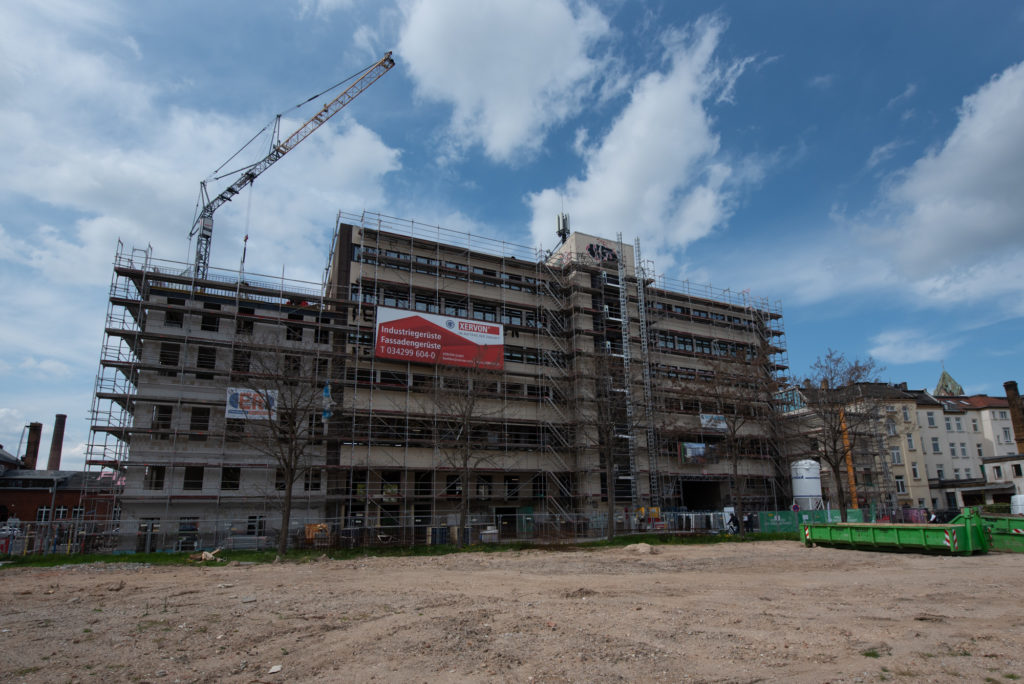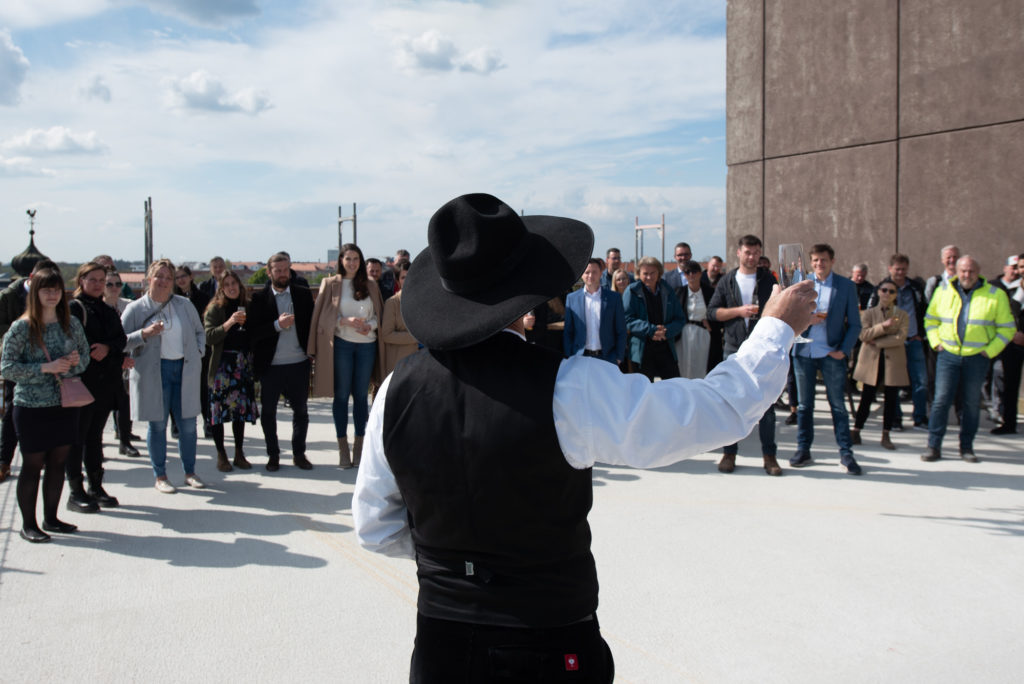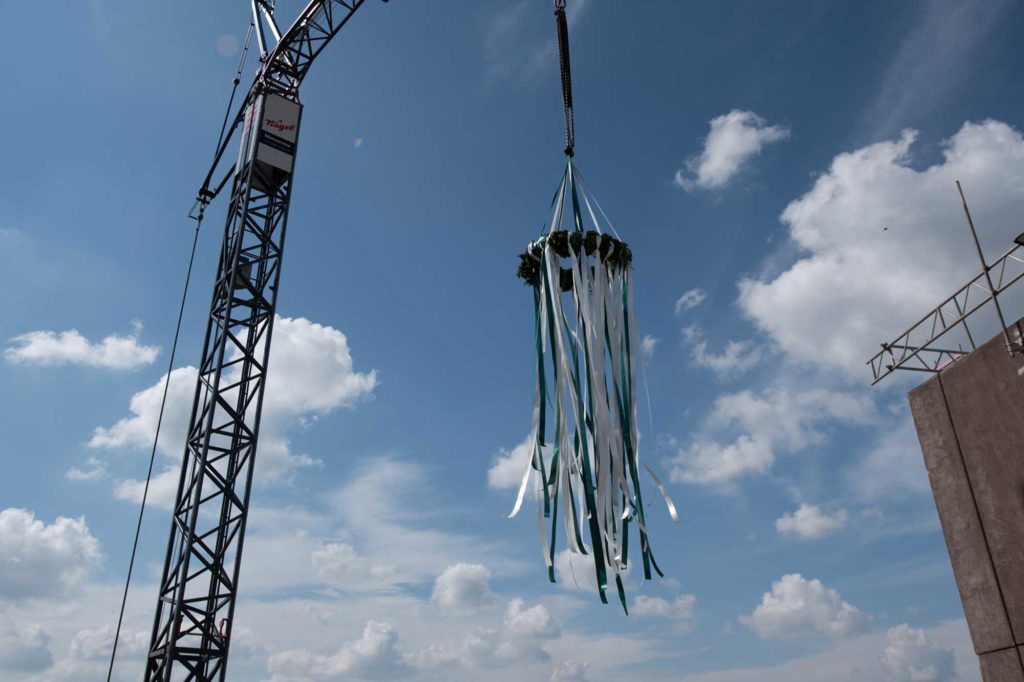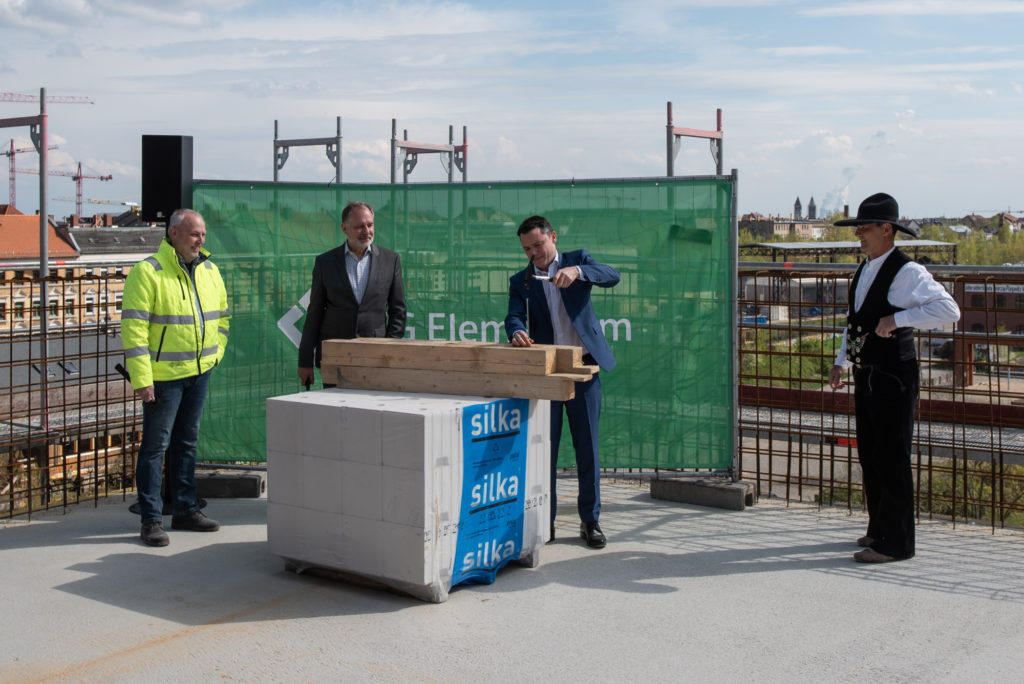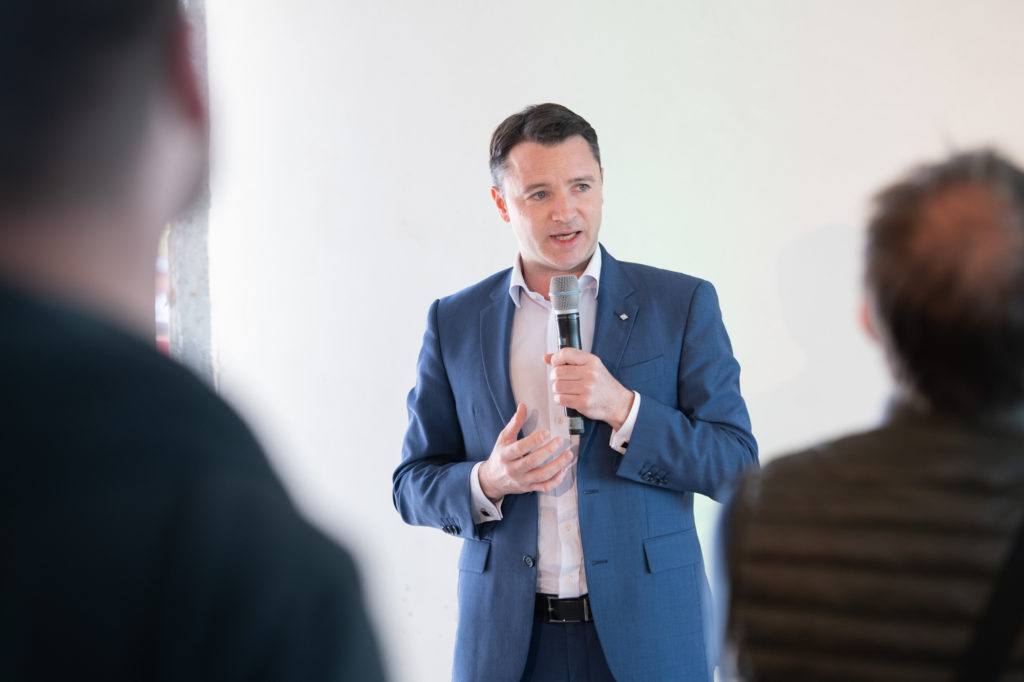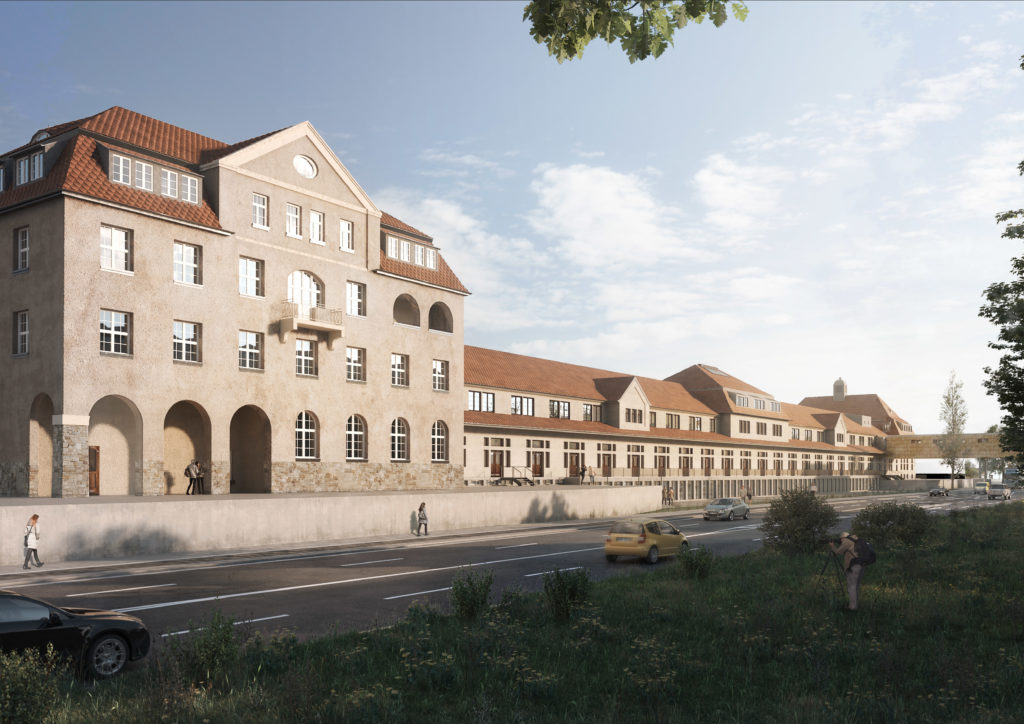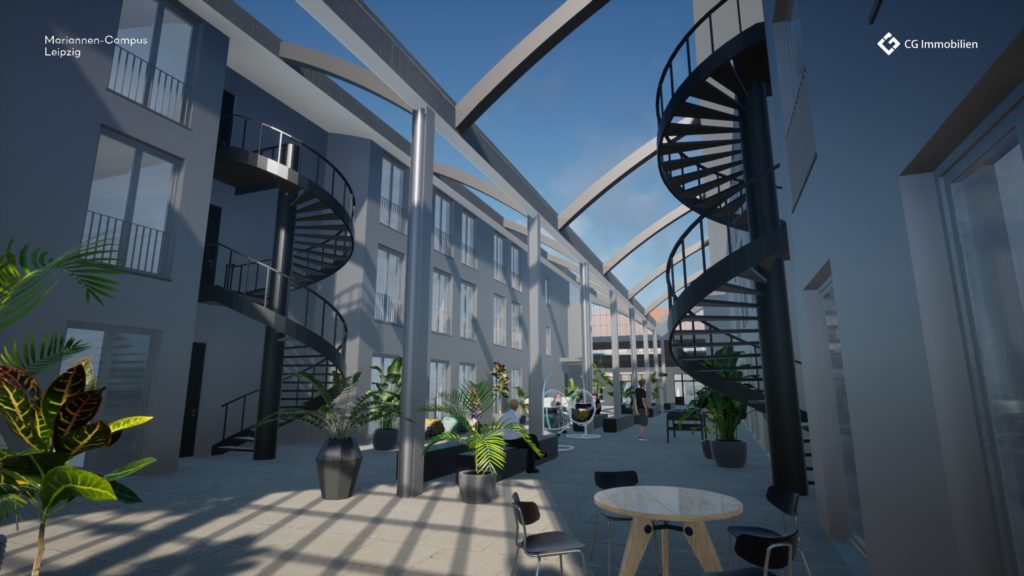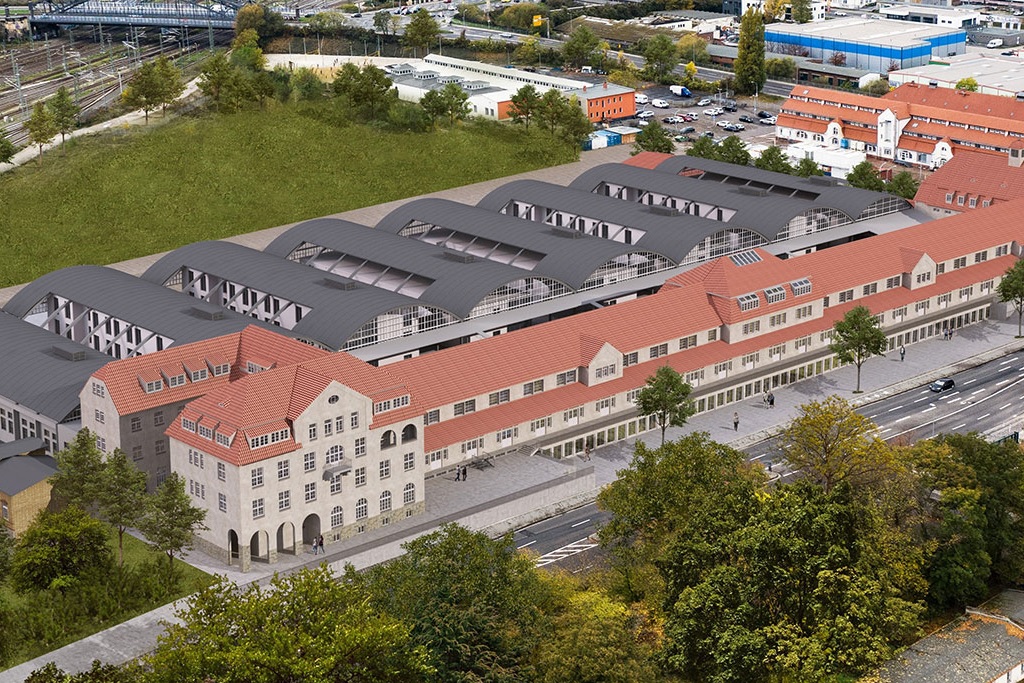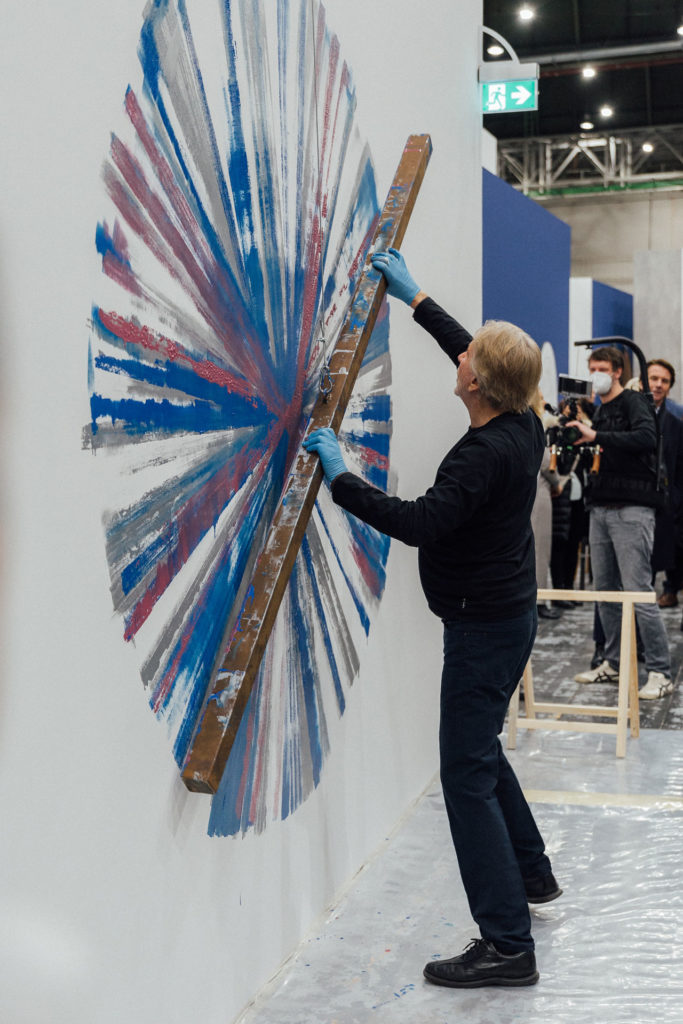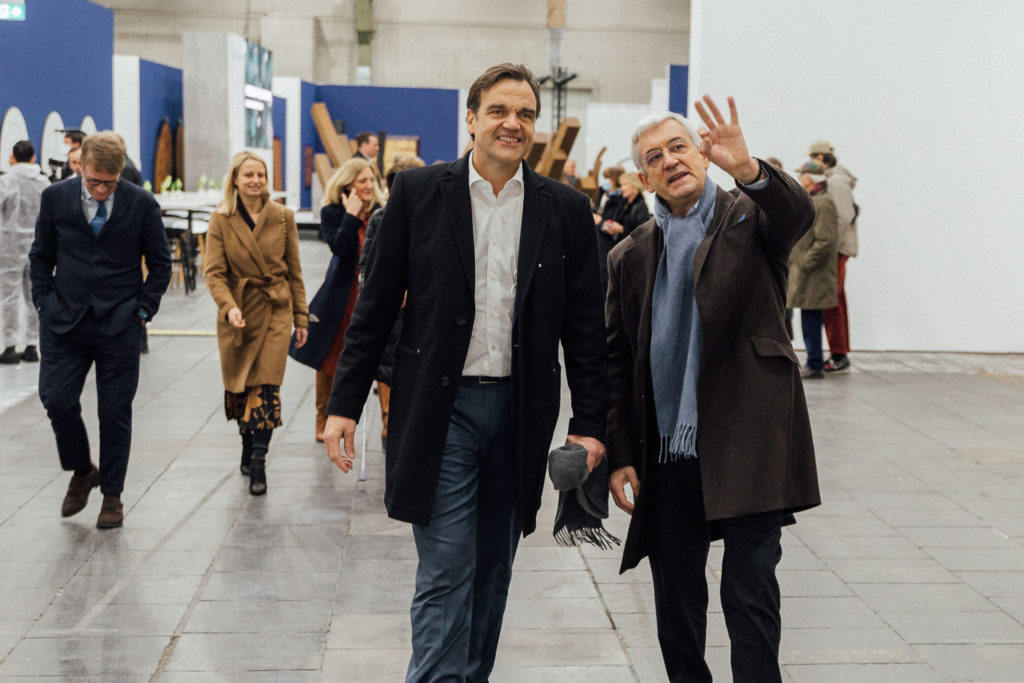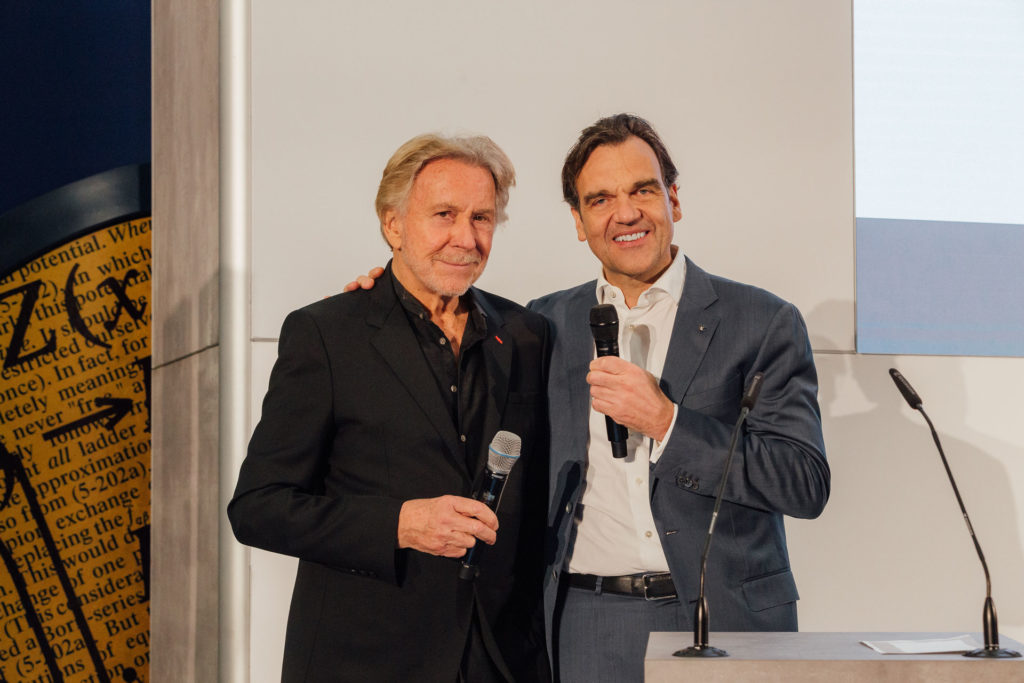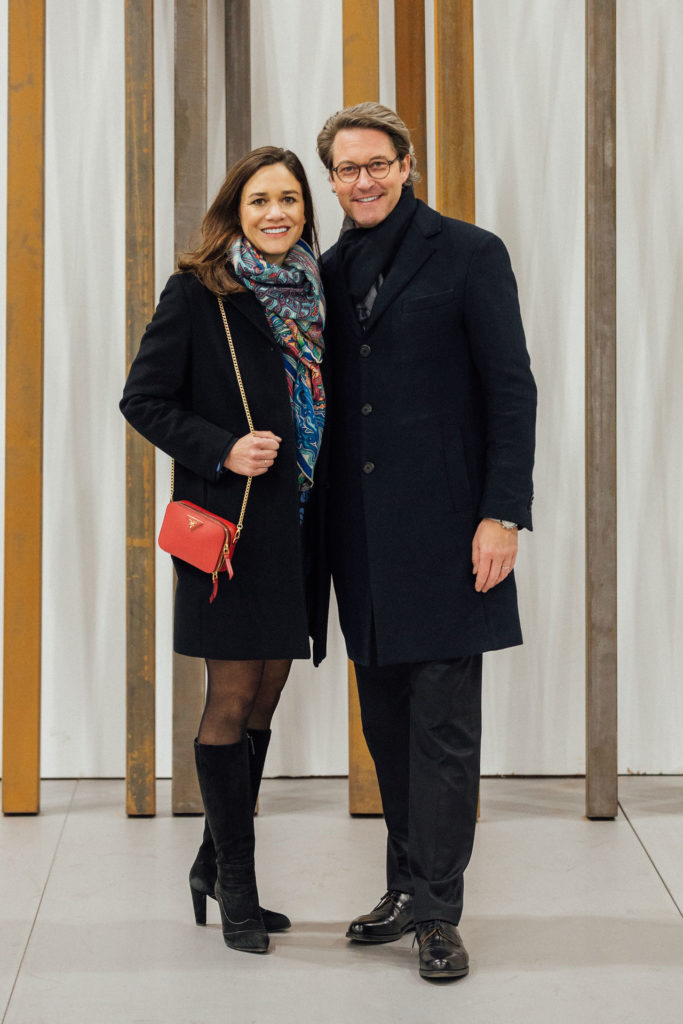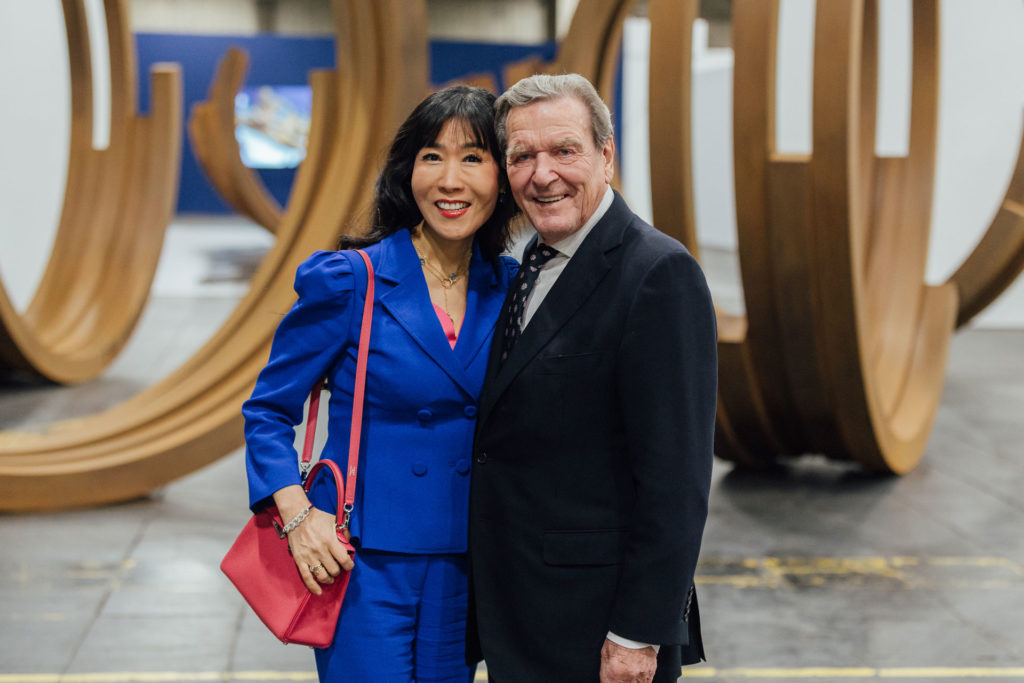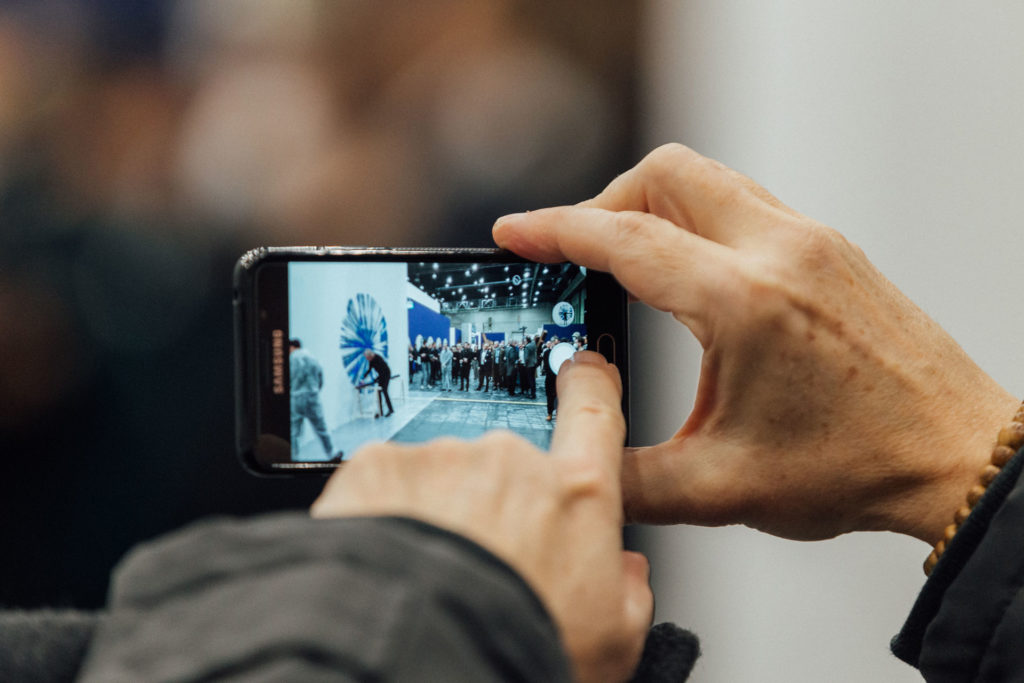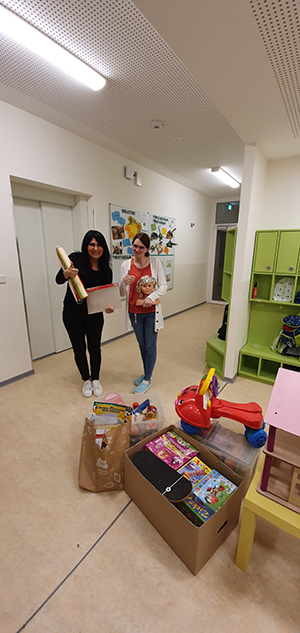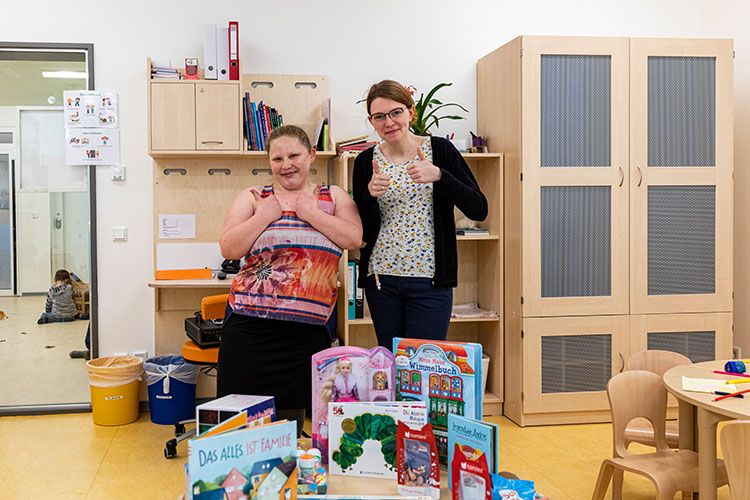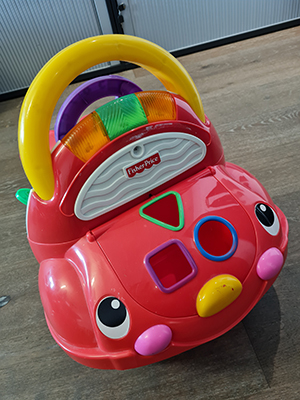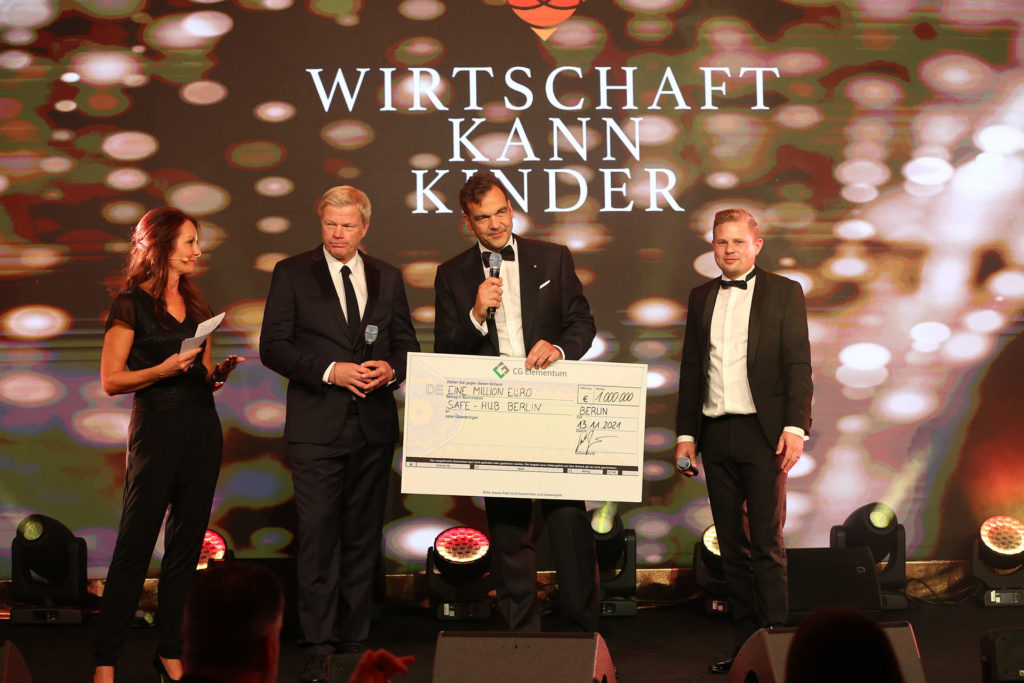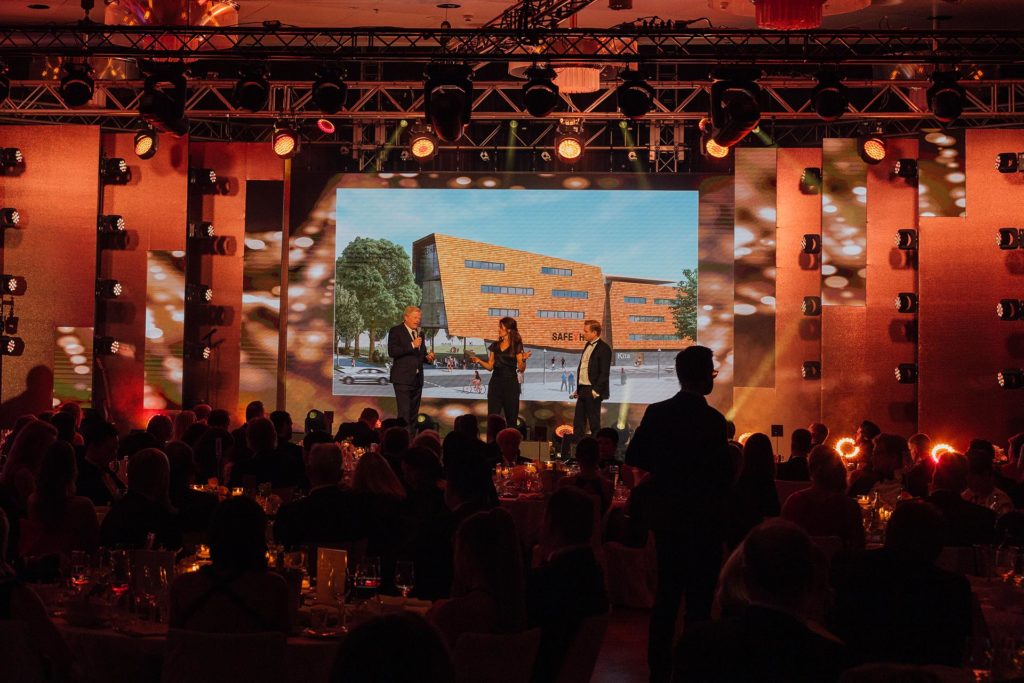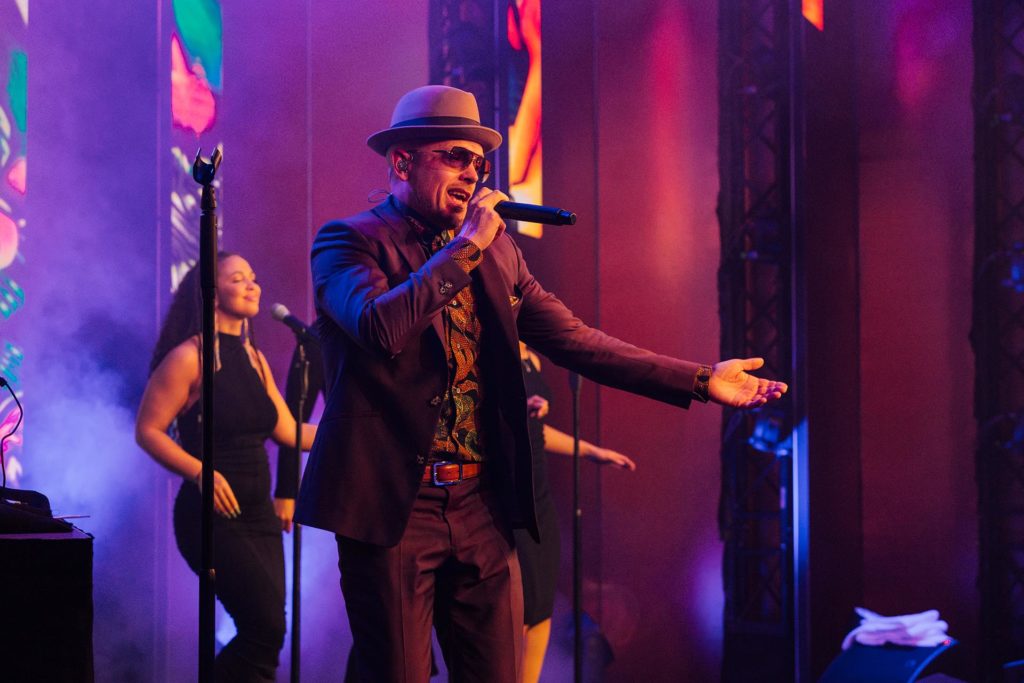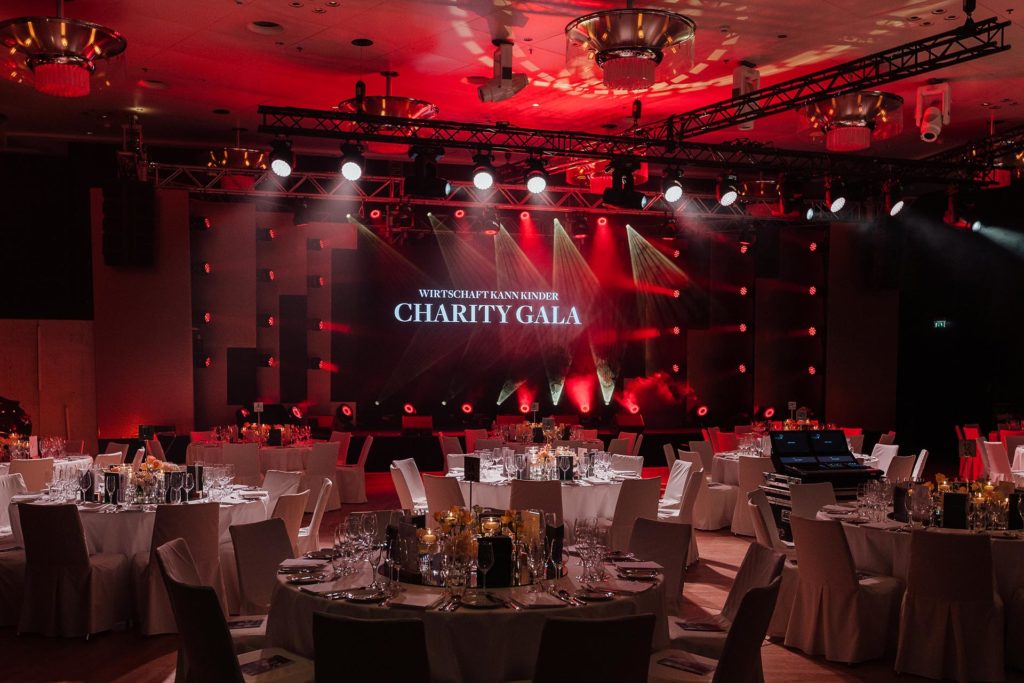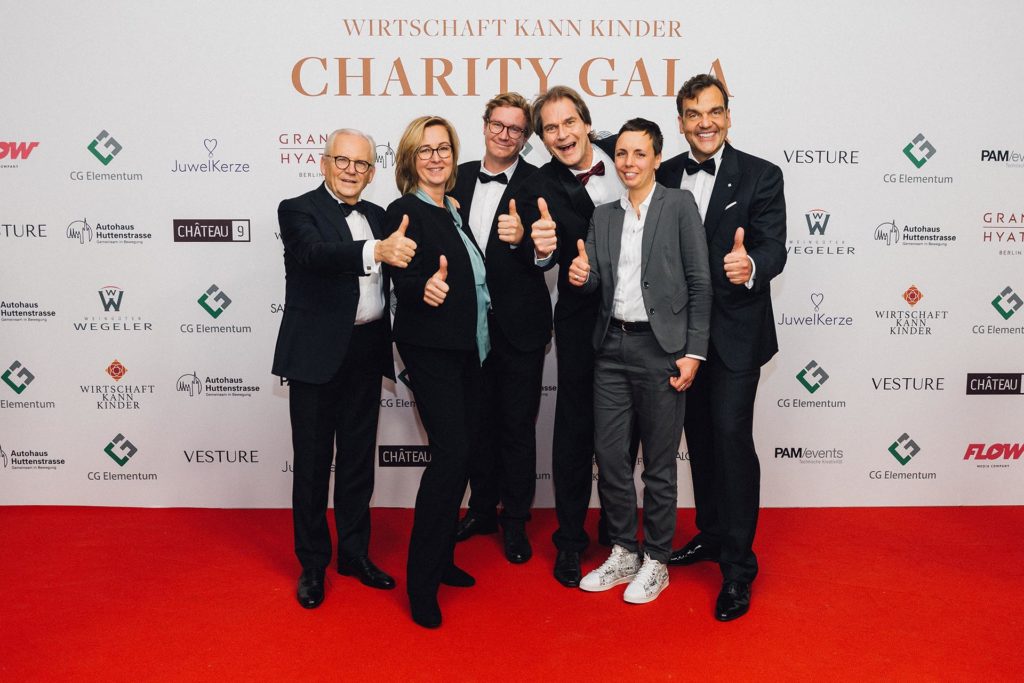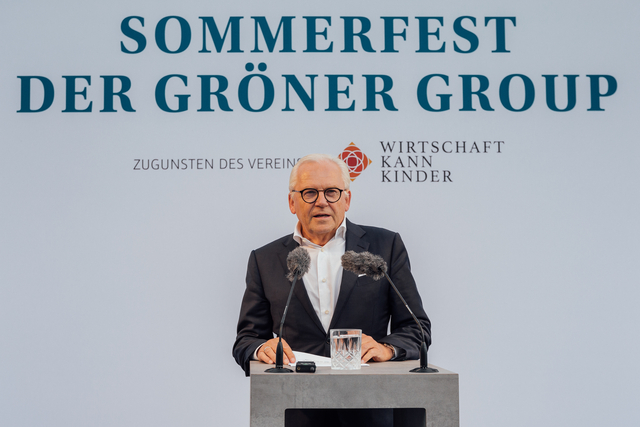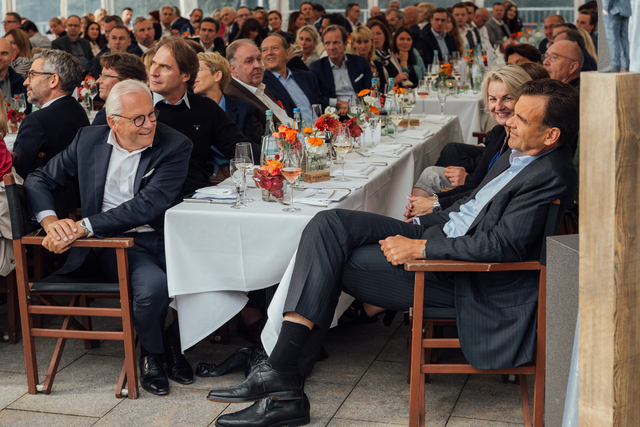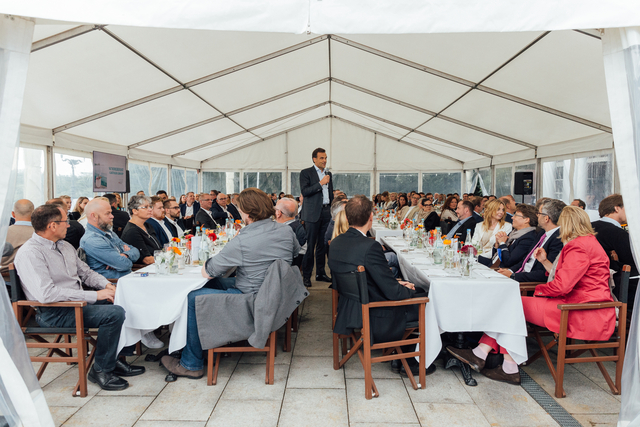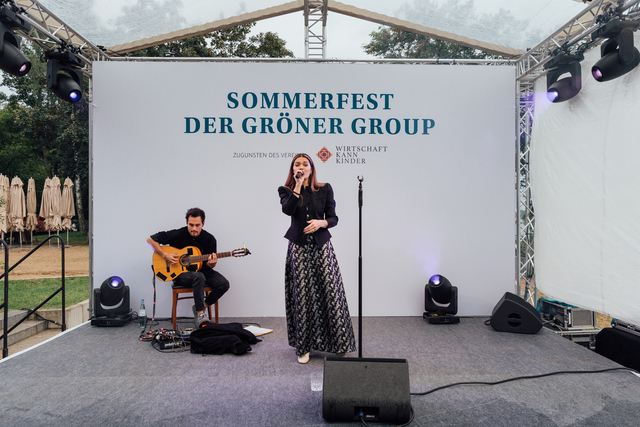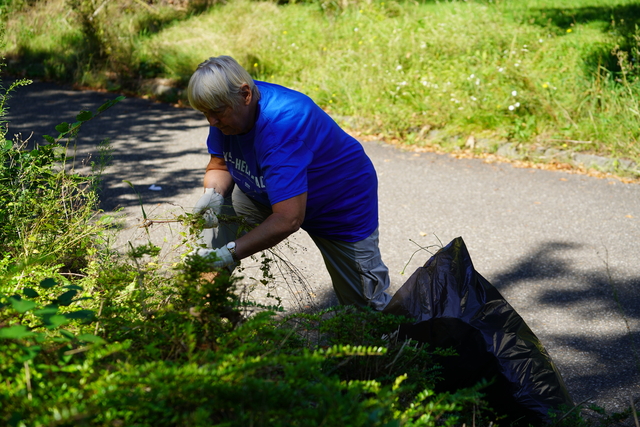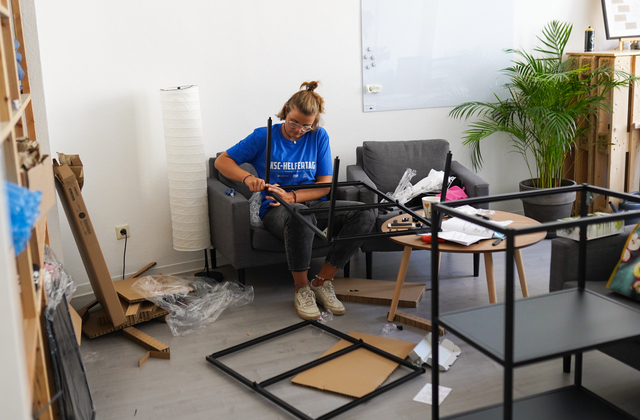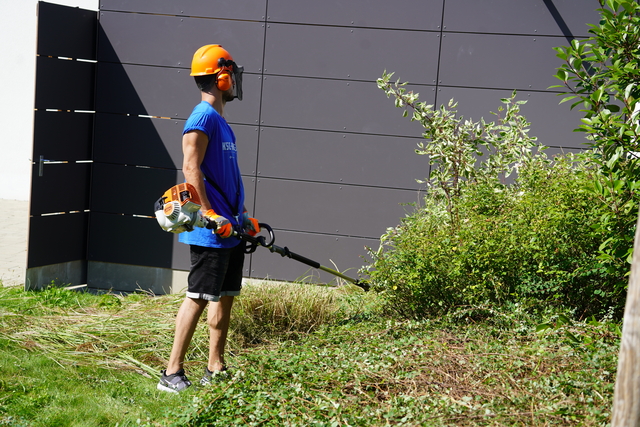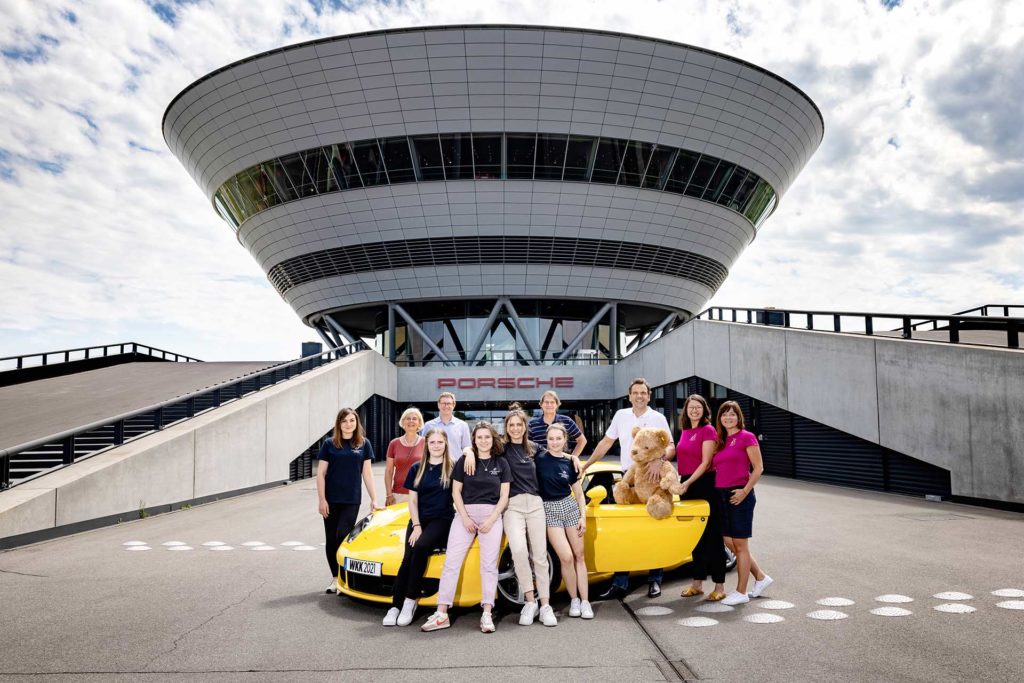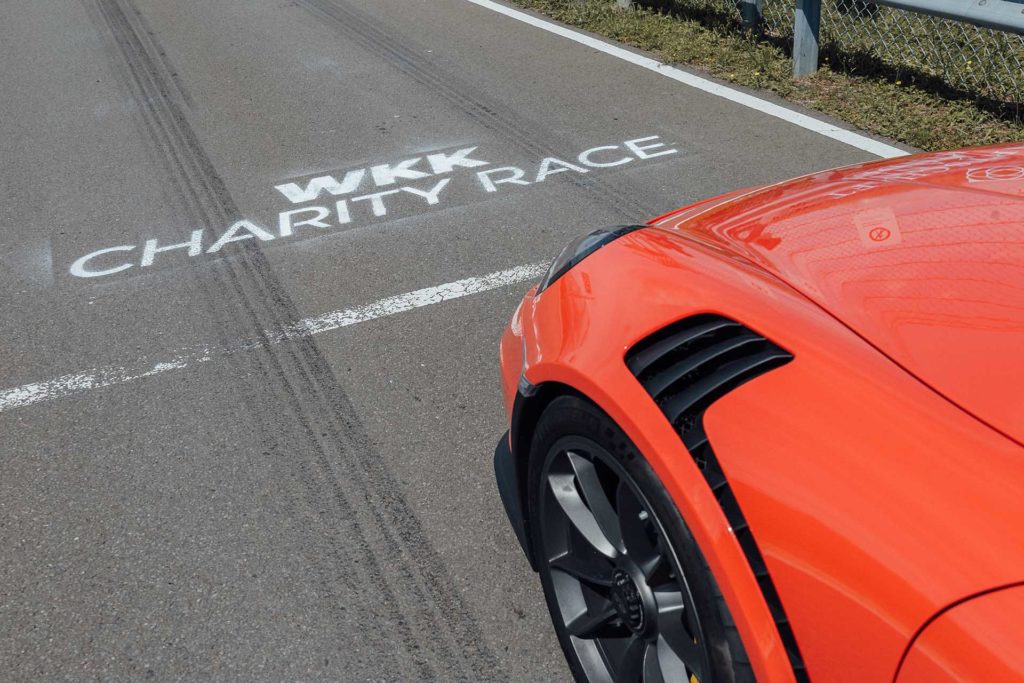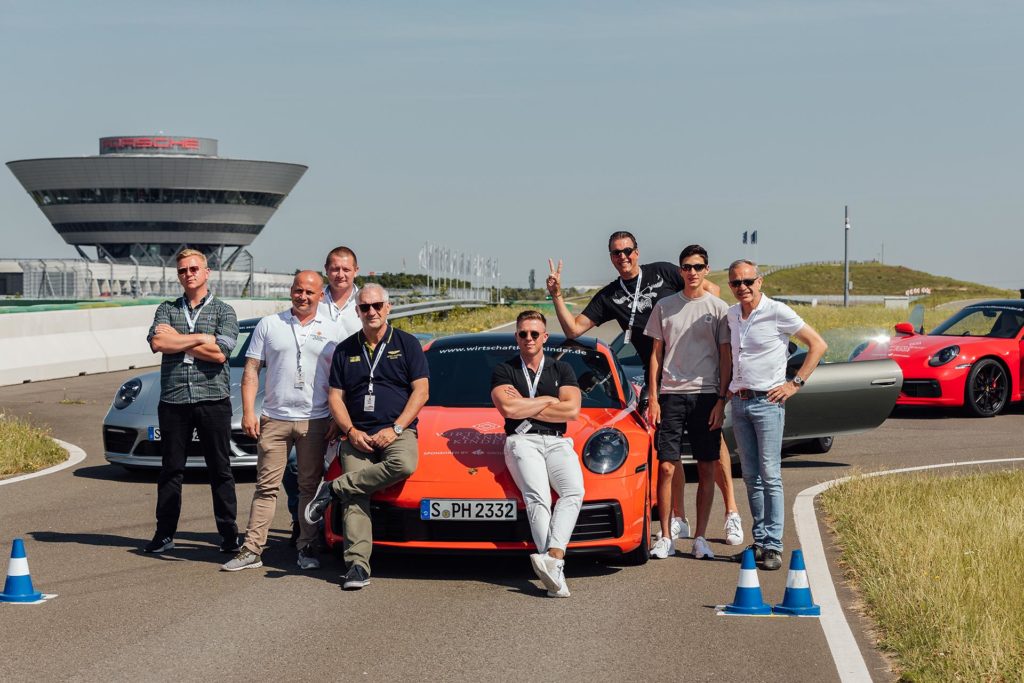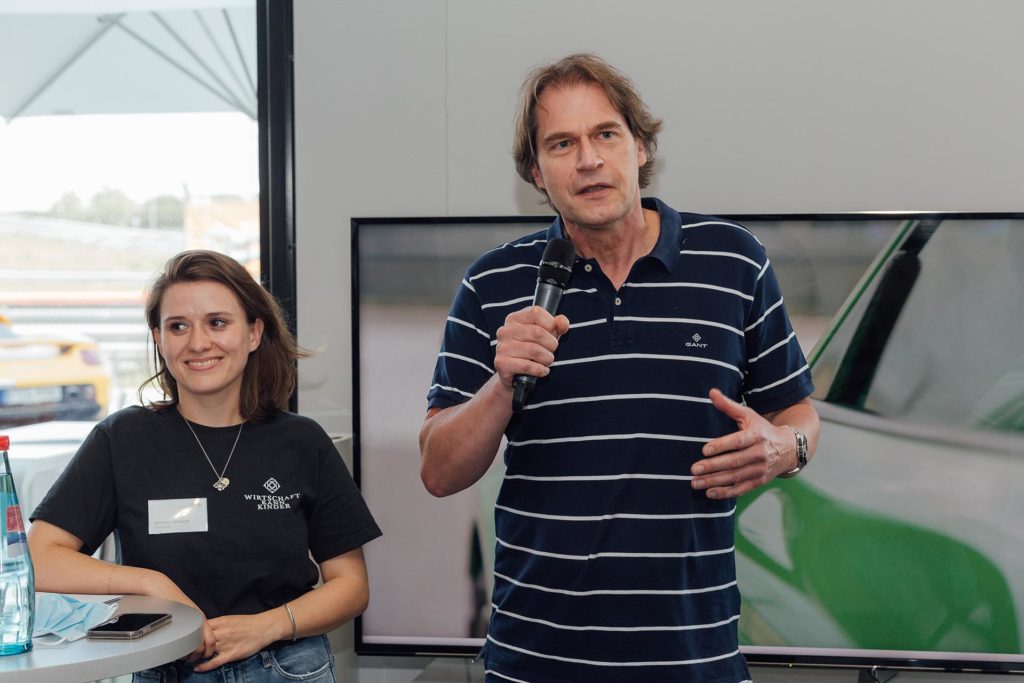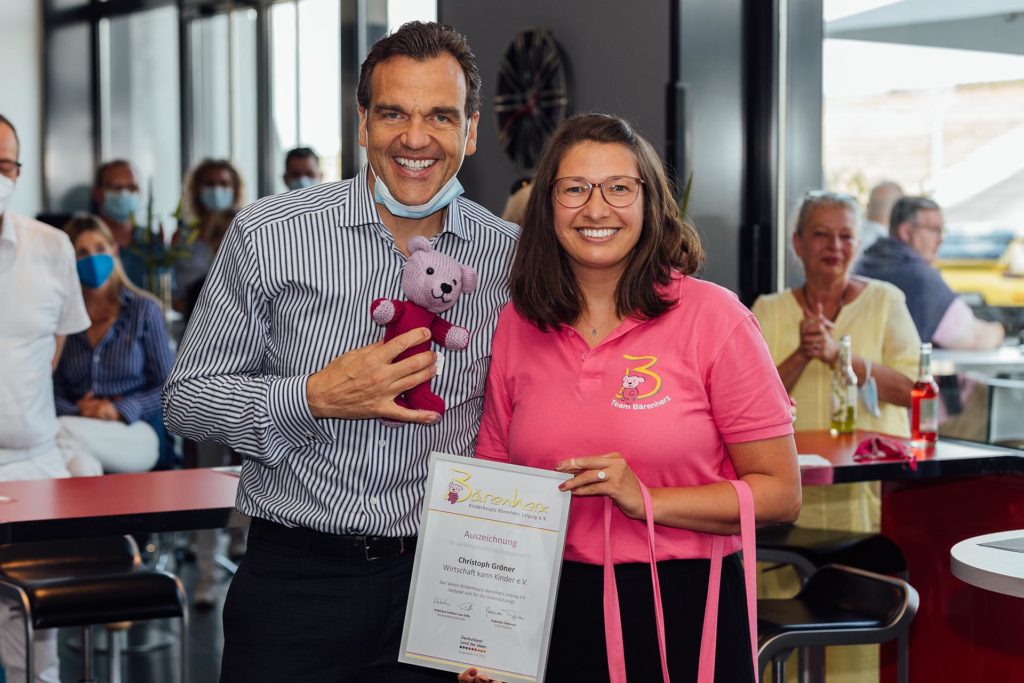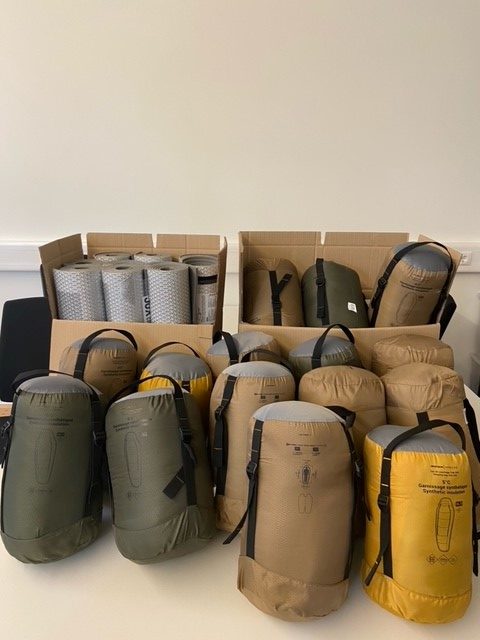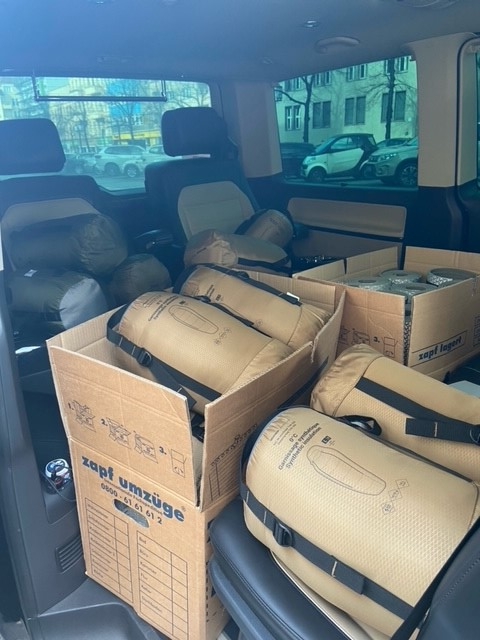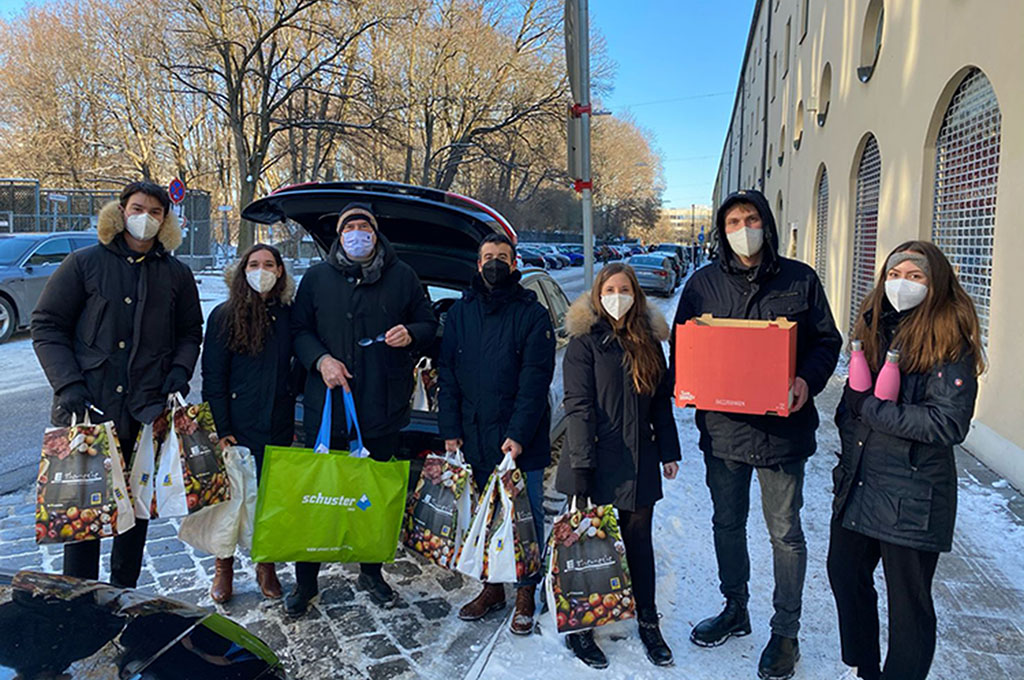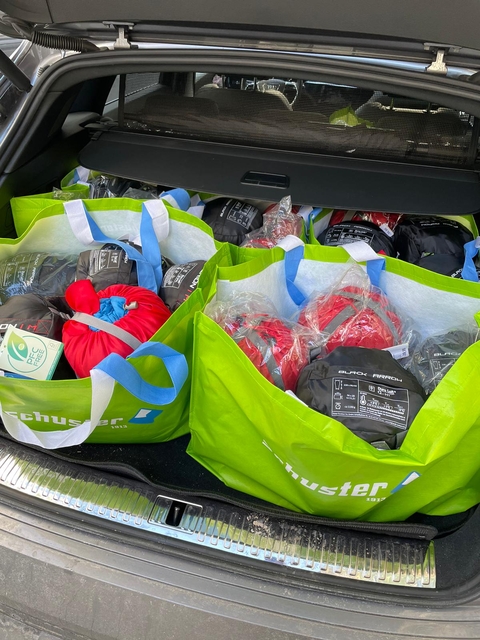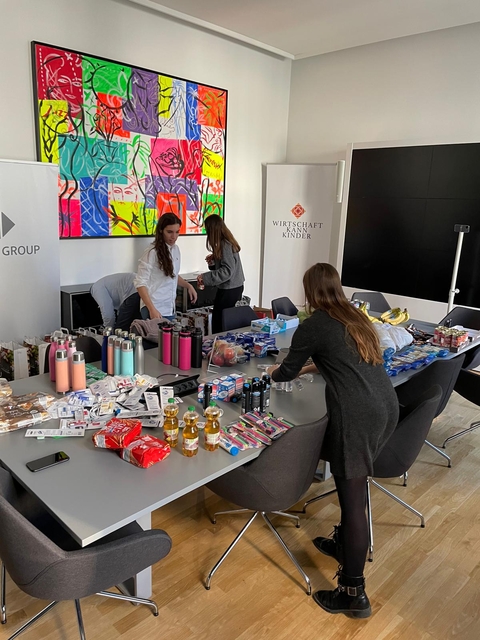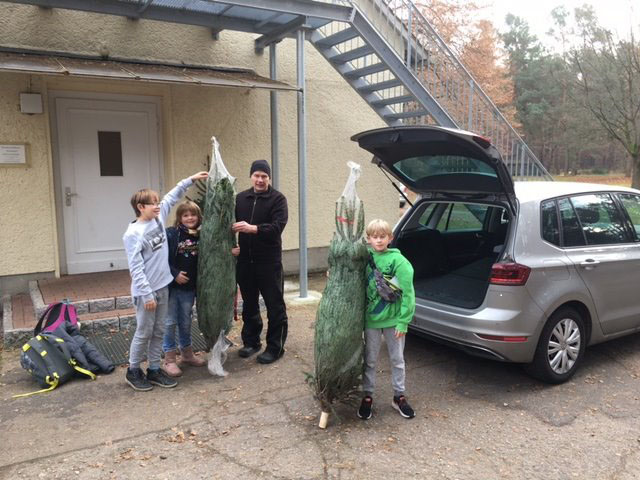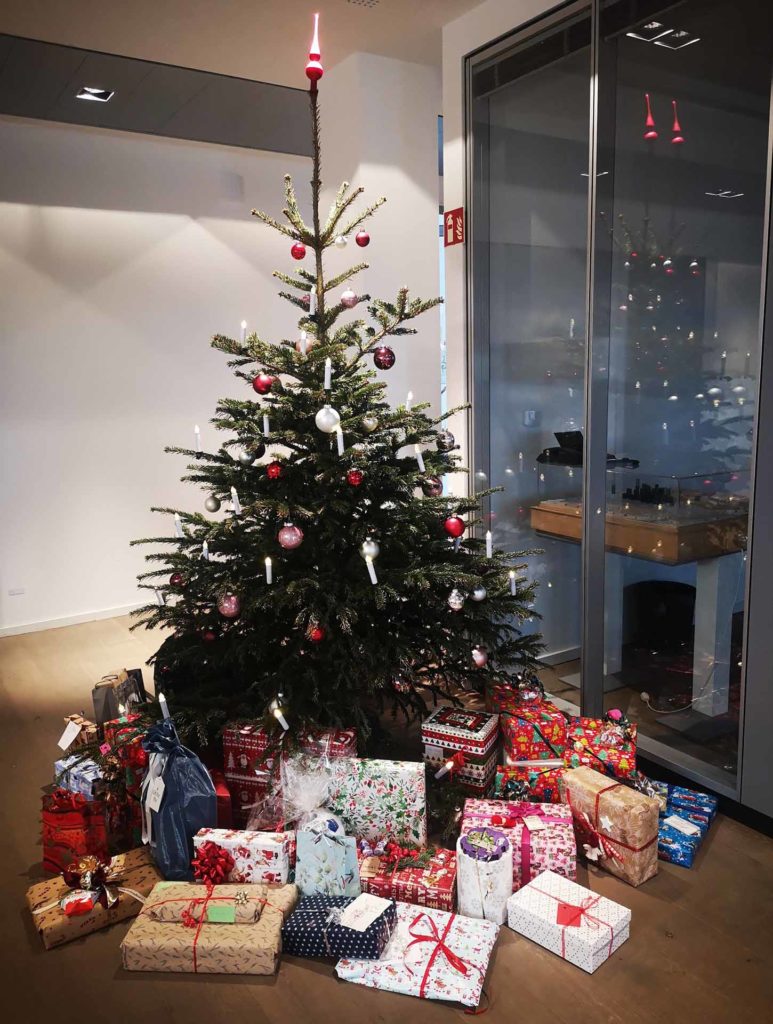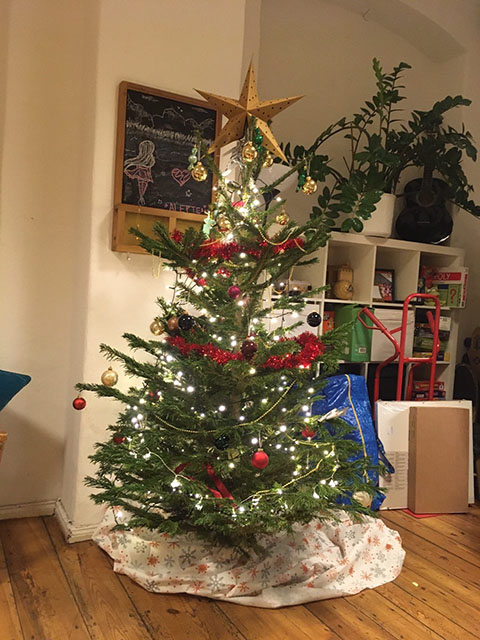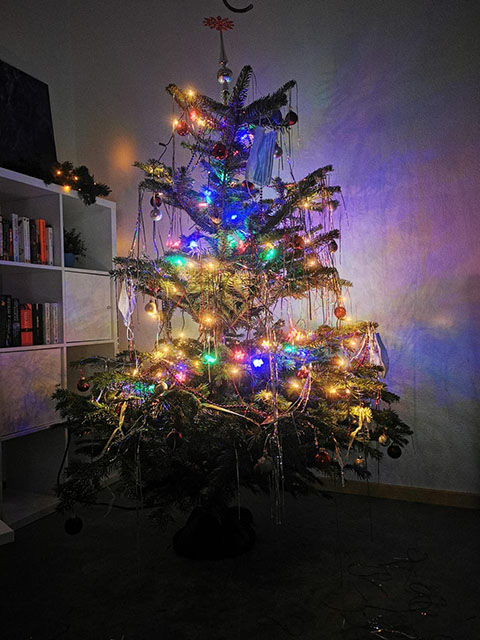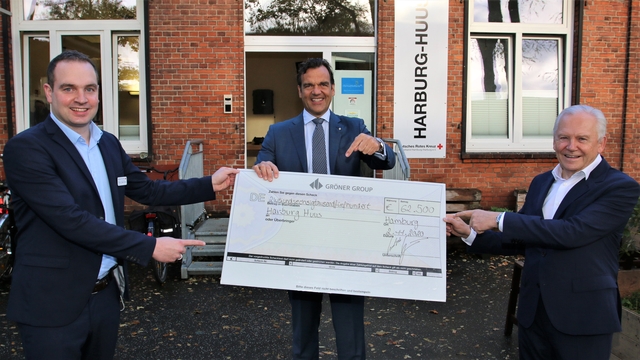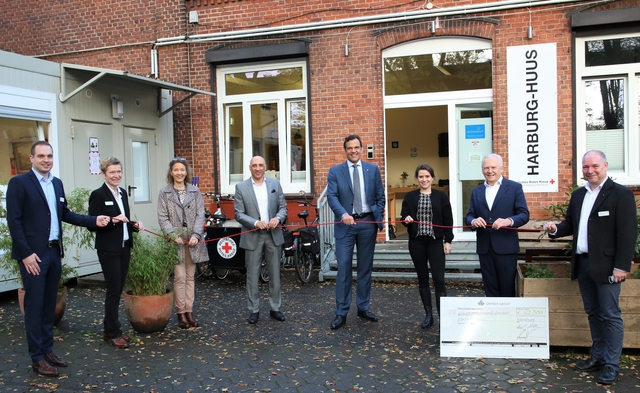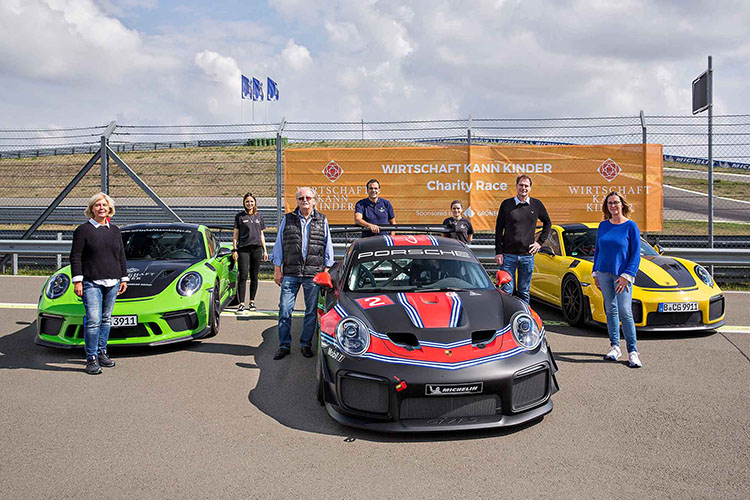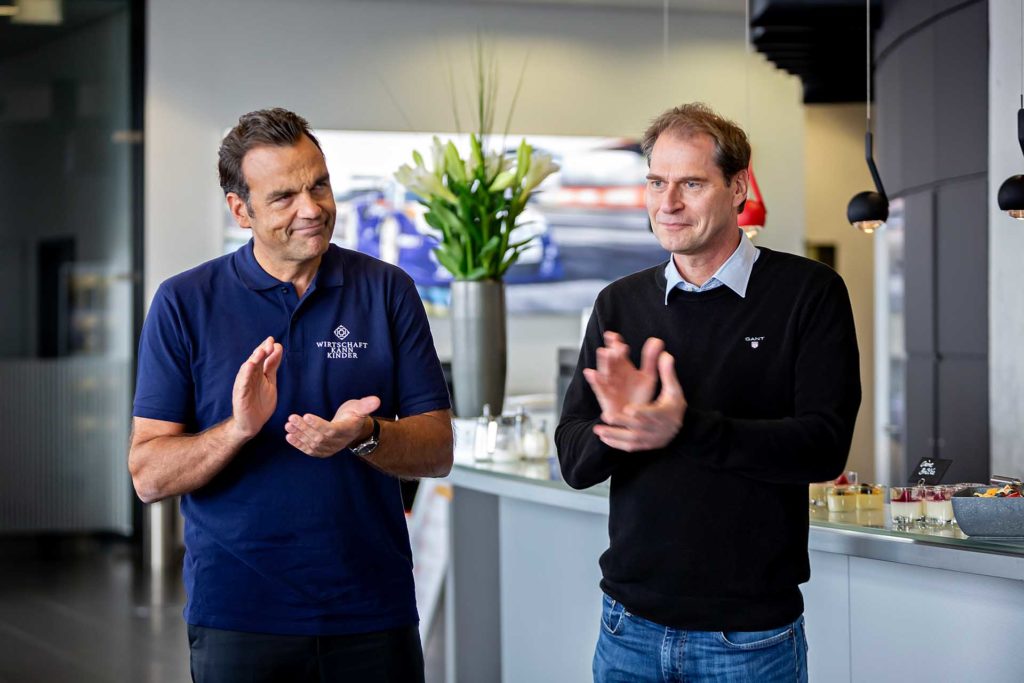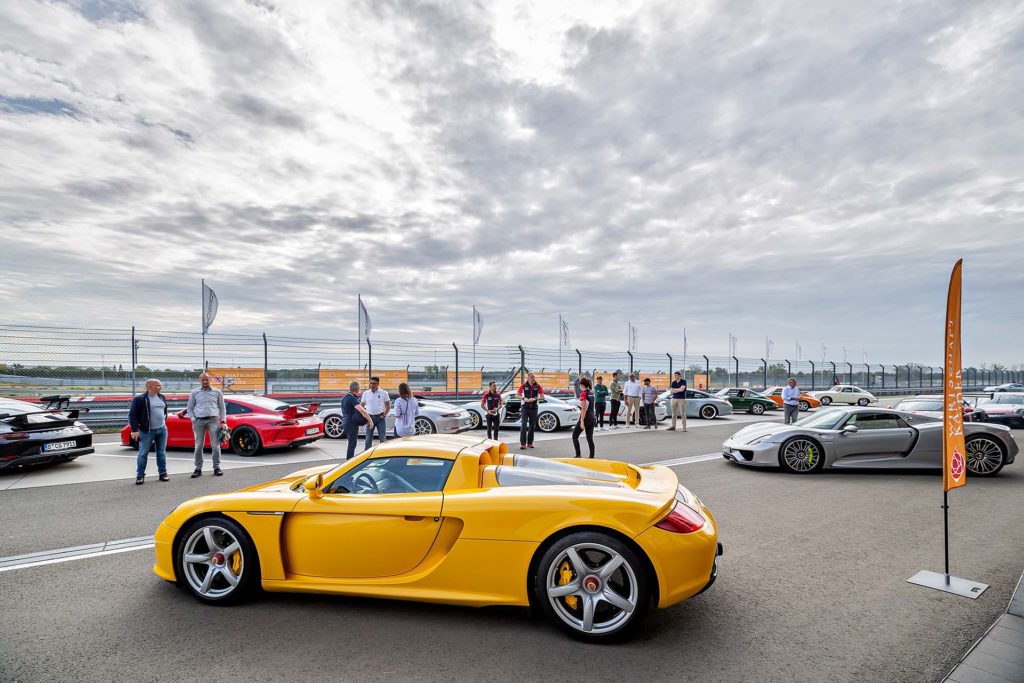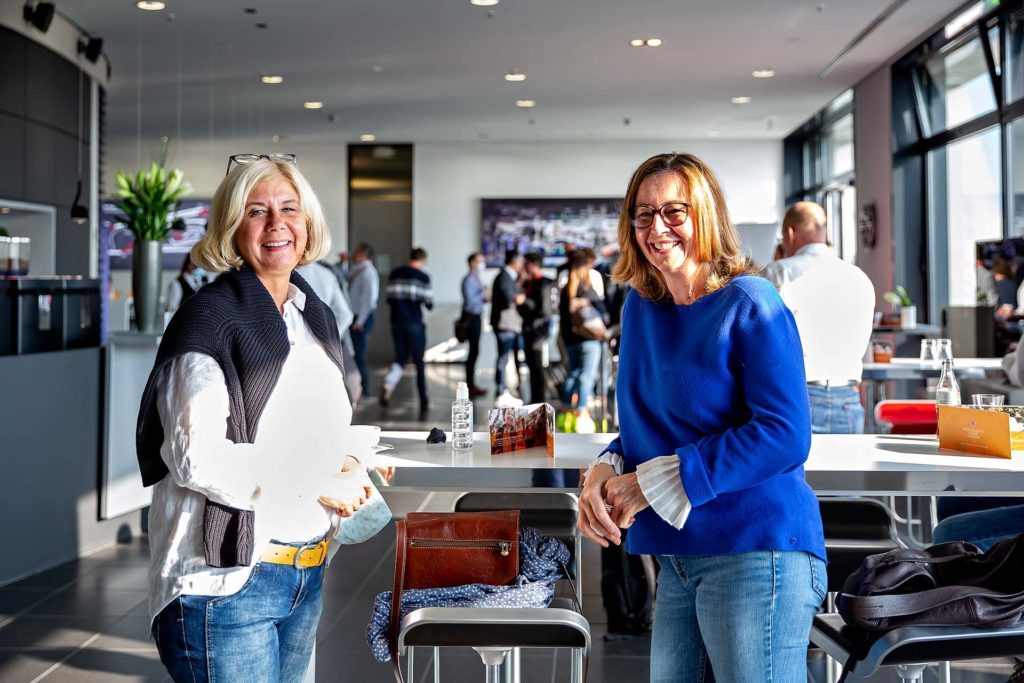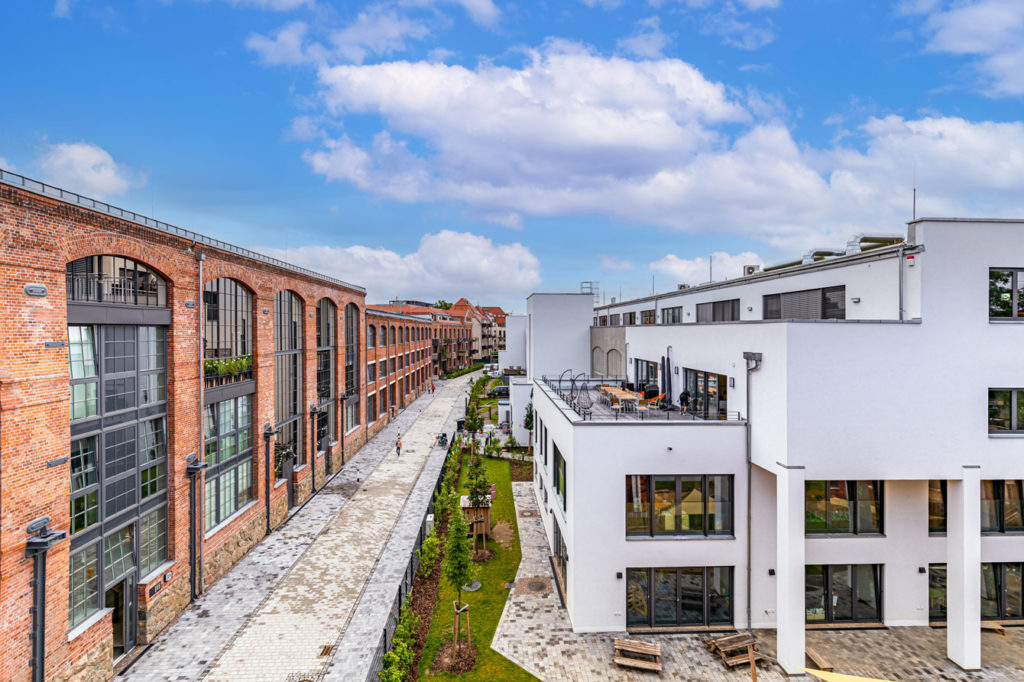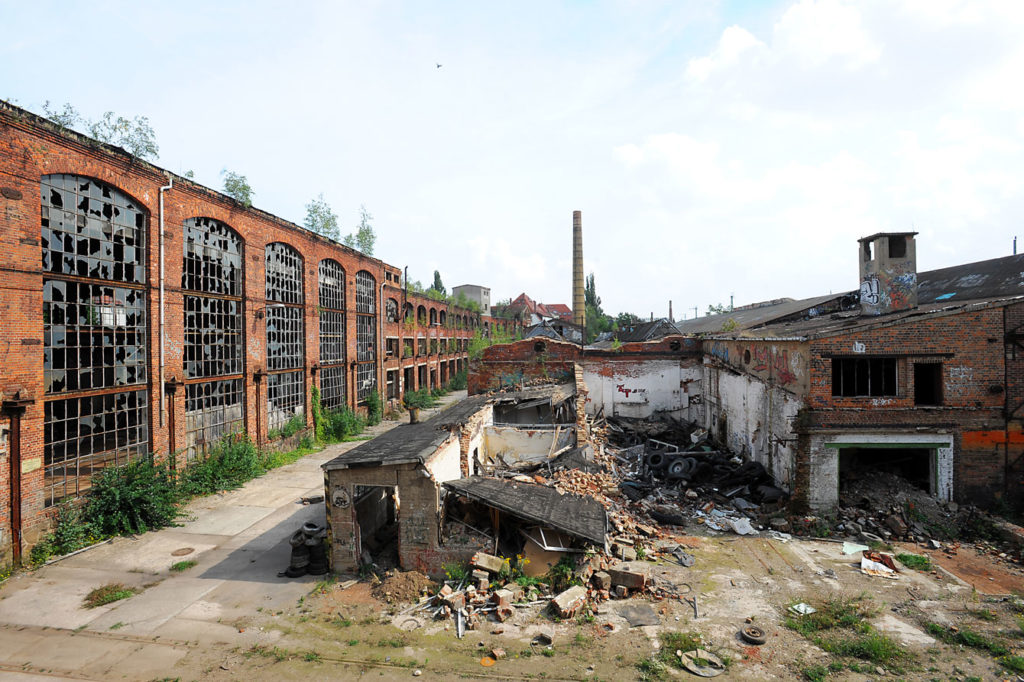The nationwide company CG Elementum AG, which specialises in sustainable construction, can now continue with the development of the Greenville project in Karlsruhe’s Nordstadt district. The prerequisite for this is the partial reallocation plan, which is now legally valid. Originally, the partial reallocation plan was due to come into force in spring 2023. This delay was caused by objections in the development plan procedure.
“We are delighted to be able to press ahead with the Greenville project. In doing so, we are making an important contribution to providing necessary living space. The aim is to manage the neighbourhood in a CO2-neutral way,” says Ulf Graichen, CEO/CDO of CG Elementum AG.
Das Bebauungsplanverfahren ist im Frühjahr 2023 (Rechtskraft Satzungsbeschluss B-Plan war der 16.12.2022) eThe development plan procedure was successfully completed in spring 2023 (legal validity of the resolution on the development plan was 16 December 2022). This is a prerequisite for submitting building applications, unless competition procedures are specified as a prerequisite. Corresponding building permits are required before construction activities can begin. The building applications for various construction sites are in progress and are being coordinated with the building regulations office. CG Elementum AG has arranged competition procedures for various construction sites. The competition procedure for construction site 12 was successfully concluded in July 2023. We are now in the planning phase here. In order to start construction, the project partners Gröner Group are also in consultation with the project partner Quarterback, which has acquired building plots 6 and 2.1.
CG Elementum AG had previously completed all planned preparatory construction measures and associated demolition work. No further preparatory construction work is planned at this time and will only be carried out in connection with corresponding construction activities on the individual construction sites. In the meantime, standardisation proceedings have been initiated against the development plan by a third party. Once these proceedings have been clarified or concluded, construction activities can continue. We assume that the City of Karlsruhe will resolve the proceedings in the short term.
A quota for subsidised and affordable housing has been agreed for the project as part of the development plan process. CG Elementum AG is examining whether this proportion can be significantly increased as part of further project development. The aim is to create up to 40 per cent subsidised or affordable housing. Subsidies will be provided as part of the subsidy programmes provided by the federal and state governments for such projects.
ecobuilding AG, the sister company of our holding company Gröner Group AG, has been commissioned to present an energy concept for the site. The aim is to ensure CO2-neutral management of the entire site and thus realise a sustainable project development. Here, too, recourse will be made to funding within the framework of the applicable KfW programmes.
All building land developments are being successfully advanced:
- Anna Quartier / Munich-Karlsfeld with 56,000 m² GFA is expected to be approved in Q2/2024
- Lia-Living / Augsburg with 55,000 m² GFA is expected to be approved in Q2 / 2024
- Greenville / Karlsruhe with 94,000 m² GFA has been approved and the reallocation process is in full swing
- Löhnberger Mühle / Lahnstein with 60,000 m² GFA has been approved for development
- Residential development on the Strunde / Bergisch Gladbach with 68,000 m² GFA expected to be approved in Q2/2024
- Braugold Areal / Erfurt with 27,000 m² GFA has been granted planning permission, and the acquisition of building rights is in full swing
Ongoing construction projects:
- Cologneo Campus MI5 / Cologne with 9,800 m² of office space is currently being completed
- Cologneo Campus MI4 / Cologne with 13,100 m² of office space and 377 multi-storey car parking spaces: Work will start once planning permission has been granted
- Dudenstrasse 44 / Mannheim with 18,900 m² of office space: Construction will be completed in Q3/2024
- OTTO-Quartier Bauteile L-N-S / Wendlingen, revitalisation of 16,600 m² of commercial space is currently being driven forward at full speed.
- Hofgarten Karree / Karlsruhe with 166 residential units: to be fully completed in Q1/2024
- Plagwitzer Höfe D17 / Leipzig with 105 residential units: Completion by Q3/2024
- Bahrenfelder Carrée / Hamburg with 291 residential units: The contract was cancelled in agreement with the investor. Completion is carried out by the investor himself
- Chronicle / Erfurt with 122 residential units: completion of the residential units is in full swing
“We see the cooperation with 99pro media as a promising partnership. Together we have implemented a concept for hybrid and needs-oriented work in the renovated existing building. For this purpose, the conditions were created for 99pro media to design the office space themselves, down to the last detail, according to their own ideas. The RTL subsidiary, which produces a number of successful TV formats such as ‘Goodbye Deutschland’, also provides creative impulses for the neighbourhood. We were able to offer an innovative and comprehensive package with all services such as planning, construction and leasing,” says Ulf Graichen, CEO/CDO of CG Elementum AG.
99pro media übernimmt das komplette Erdgeschoss in der Zschochersche Straße 80 a im Leipziger Stadtteil Plagwitz. 99pro media is taking over the entire ground floor at Zschochersche Straße 80 a in Leipzig’s Plagwitz district. A total of 120 employees are moving from the previous locations to the new, shared space of around 2,090 m². The office space meets the requirements for fully digitalised working. There is also a 1,334 m² photovoltaic system with an output of 232 kWp on the roof of the listed building.
Jörg Graf, Managing Director of RTL Studios and 99pro Media, is pleased: “By investing in the new, shared 99pro location, RTL Deutschland is committing itself to Leipzig as a location. In addition to our locations in Berlin, Cologne and Munich, our team in Leipzig is a very important creative pillar for our formats.”
One of CG Elementum AG’s core competencies is the sustainable development of real estate and entire neighbourhoods with the best possible reduction of CO2 emissions. To achieve this, the company relies on various measures in planning, construction and operation with its ecobuilding product. These include the preservation and conversion of derelict building stock, the realisation of innovative neighbourhood concepts and the implementation of intelligent energy solutions. Early on, CG Elementum also implemented a sustainable energy supply with renewable energies in the Plagwitzer Höfe and integrated Leipzig’s largest photovoltaic system there, which will be successively expanded – including on the roof of the new 99pro location.
Only about three kilometres west of Leipzig city centre, the Plagwitzer Höfe are located in the urban district of Plagwitz, which has become a trendy quarter in Leipzig in recent years. Since 2007, a large number of modern new and old buildings have been developed and redeveloped here in contiguous areas. This has already provided more than 80,000 m² of residential and commercial space.
The nationwide developer of residential and commercial real estate CG Elementum AG has ceremoniously placed the topping-out wreath for an apartment building at Limburger Straße 34-36 in Leipzig in the presence of the builders involved. The building complex is one of numerous sub-projects within the ecobuilding district development “Plagwitzer Höfe”.
In the 6-storey building with 105 rental flats and 6,624 m² of total rental space, two- to four-room flats with living areas between 40 and 105 m² are being built. All flats are equipped with a balcony, loggia or terrace. The building is connected to a communal green space in the inner courtyard. In addition, 79 underground parking spaces will be provided, ten of which are electrified. Completion is planned for summer 2024.
The apartment building is CG Elementum’s pilot project using precast concrete elements. The construction system, which is manufactured according to industry standard 4.0, provides greater planning reliability and a reduction in work steps. This will realise great savings potentials.
“We are delighted to have reached another milestone here in the Plagwitzer Höfe quarter. This topping-out ceremony is for the first building that we are constructing predominantly with precast concrete elements,” said Ulf Graichen, CEO of CG Elementum AG, on the sidelines of the topping-out ceremony. “This construction method not only saves us time and resources, but also sets standards for sustainable building.”
One of CG Elementum AG’s core competencies is the sustainable development of real estate and entire neighbourhoods with the best possible reduction of CO2 emissions. To achieve this, the company relies on various measures in planning, construction and operation with its ecobuilding product. These include the preservation and conversion of derelict buildings, the realisation of innovative neighbourhood concepts and the implementation of intelligent energy solutions. CG Elementum was quick to implement a sustainable energy supply with renewable energies in the Plagwitzer Höfe and integrated Leipzig’s largest photovoltaic system there, which is being successively expanded.
Plagwitzer Höfe
Only about three kilometres west of Leipzig’s city centre, the Plagwitzer Höfe are located in the urban district of Plagwitz, which has developed into a trendy quarter in Leipzig in recent years. Since 2007, a large number of modern new and old buildings have been developed and redeveloped here in contiguous areas. This has already provided more than 80,000 m² of residential and commercial space.
CG Elementum AG, a nationwide specialist for digital and sustainable construction as well as for the conversion and revitalisation of commercial and industrial real estate, has let an area of around 1,350 square metres in the Konradhaus at Dudenstraße 44 in Mannheim to the law firm VHP PartG mbB.
The law firm for auditing as well as tax and legal advice, which has five offices nationwide, has signed a long-term lease for the premises in the Wohlgelegen/Neckarstadt-Ost district: “We are very pleased that VHP, a renowned law firm with great importance for the region, is one of the tenants of the Konradhaus,” said Edyta Wünsch, the responsible branch manager of CG Elementum AG at the Frankfurt location.
We were impressed by the good location of the Konradhaus, the spacious, transparent office space and, above all, the focus on sustainability in the renovation and operation of the building,” said Wolfgang Schmitt, lawyer and partner at VHP since 1996, commenting on the conclusion of the contract.
The Konradhaus, which consists of three building sections, is being extensively renovated: After complete gutting, renovation will be carried out in new-build quality according to the latest ecological standards. This includes low-emission deconstruction, the use of building materials with a high recycled content and energy-efficient building operation. For example, part of the energy demand is sourced from an approx. 700 square metre photovoltaic system on the roof. The parking spaces will also be equipped with charging facilities for cars and e-bikes.
In addition to the law firm VHP, the IU International University and infinitSpace had already rented space last autumn. The leasing to the law firm VHP was accompanied by the commercial space broker Rich Immobilien.
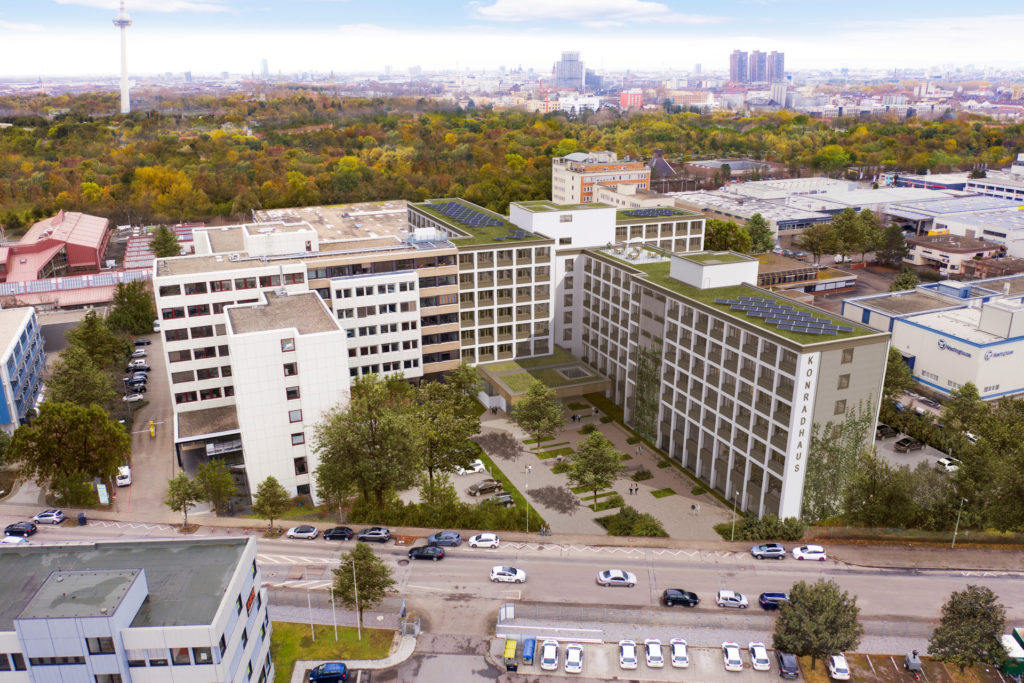
The nationwide real estate company CG Elementum AG, which specializes in digital and sustainable construction, has announced the three best designs of the architectural competition for Building Lot 12 of the GREENVILLE project in Karlsruhe. After one day of intensive exchange and discussion, a top-class jury of experts, consisting of representatives from science, economy as well as the municipality, has determined the winning design from 13 submitted designs with a clear voting result. The architectural office ruser + partner mbb submitted the best design. They interpreted the task well and convinced the jury with their different emphases.
The successful design of the building complex by the architectural firm ruser + partner mbb at the new district square sets a strong scent for the new GREENVILLE neighborhood,” says Daniel Fluhrer, jury member and mayor of Karlsruhe. For him, the competition entry “creates the symbiosis between an appropriately structured scale with different apartment types and area variants and a powerful architectural appearance that promises an urban sustainable design quality.”
The architectural competition for the project GREENVILLE Karlsruhe started in December 2022. The reason and purpose of the competition was the object planning for the new construction of a residential and commercial building on the construction site 12. After the lottery procedure, the jury session met all day last Friday to determine the winner.
Dr. Tobias Schnaidt, Karlsruhe branch manager of CG Elementum AG, gives a positive summary. “The architecture competition is a complete success. We are very pleased that numerous architectural firms participated in the tender. The designs each had different qualities. With the evaluation by the expert jury, we can now move swiftly into talks with the architectural firm to move the project forward.”
The site of the quarter is located in Karlsruhe-Nordstadt. It is part of the Zukunft Nord area. As part of the comprehensive revitalization of the site of a former US shopping center, CG Elementum is planning to build around 1,000 apartments. The aim is to offer housing close to the city center for both older people and families with children. The neighborhood will provide a new home for around 3,500 residents and create numerous jobs through a mixed-use structure.
“In the GREENVILLE neighborhood, we see great potential to meet the increasing demand for housing in the Karlsruhe metropolitan region. I would like to thank CG Elementum AG very much for supporting this competition and the associated commitment to quality assurance in building culture,” adds Daniel Fluhrer.
All residents will have the opportunity to view the winning designs and competition ideas on site at our Karlsruhe office. These will be shown on:
Thursday, July 20, 2023 to July 27, 2023
on weekdays in the time from 09.00 to 17.00 hrs.
at Fiduciastraße 2 (2nd floor), 76227 Karlsruhe, Germany
The winning designs can be viewed online here
About the GREENVILLE project
The Zukunft Nord area in Karlsruhe’s northern city center is the site of a former U.S. shopping center where a new urban district is to be built. In the northern part of the area, the GREENVILLE, we are planning to build around 1,000 apartments as part of a comprehensive revitalization project.
The goal of the GREENVILLE neighborhood development is to create affordable housing and a corresponding infrastructure in particular, while at the same time meeting the aspect of sustainability and ecology. The energy concept will provide renewable energy at the site to avoid the use of fossil fuels and thus achieve a good greenhouse gas balance. The renewable energies that will be used include solar energy, which will be generated at the site via solar green roofs for green electricity. In addition, rainwater retention is planned. Currently, the use of air-source heat pumps to harness the environmental heat in the outside air is also being investigated. At GREENVILLE, we are also placing special focus on protecting against overheating in summer and increasing biodiversity by significantly reducing land sealing and making the site greener.
Informations: ecobuilding.de
Planned CO2 savings for the entire GREENVILLE neighborhood in figures:
2,430 tons of CO2 less
72 % CO2 savings through renewable energies
Location: Erzbergerstraße 131-141, 76149 Karlsruhe
Object typ: Urban development
Areas:
Residential: approx. 67.800 m²
Commercial: ca. 25.000 m²
Parking: approx. 900
Realization: till end 2027
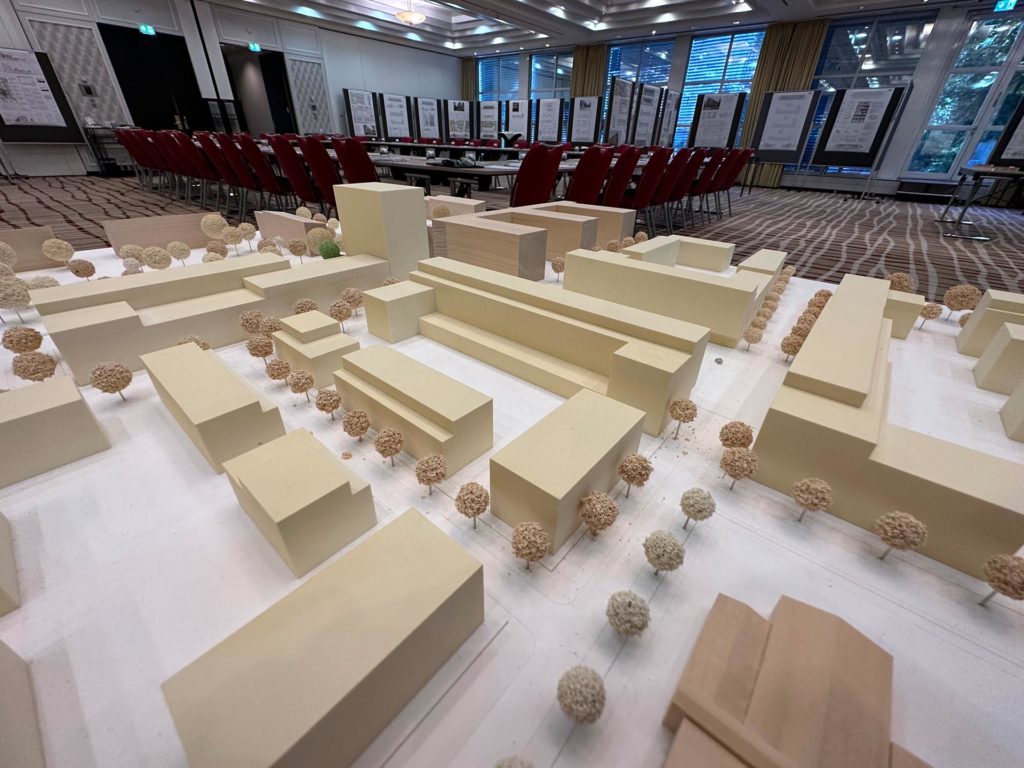

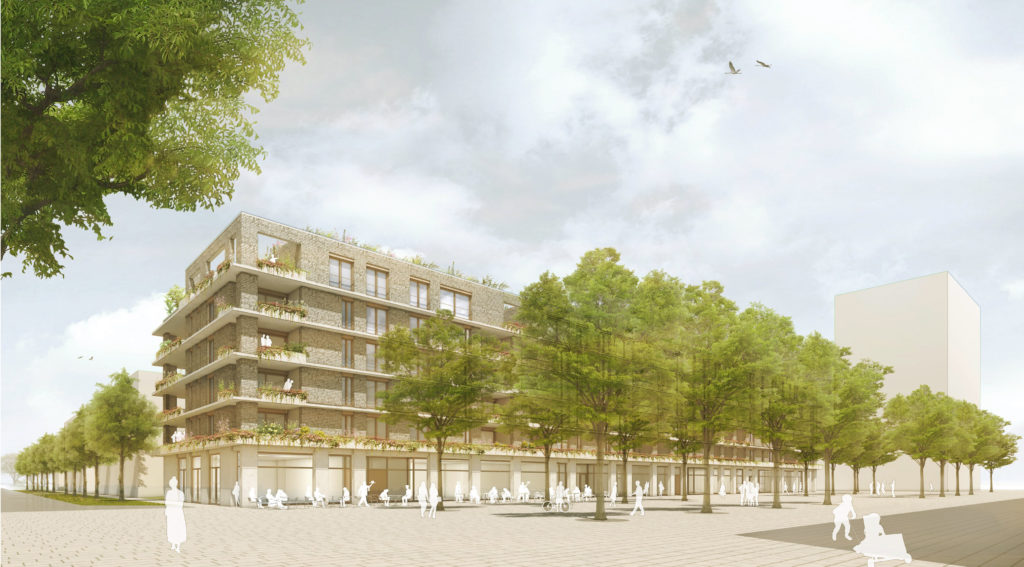
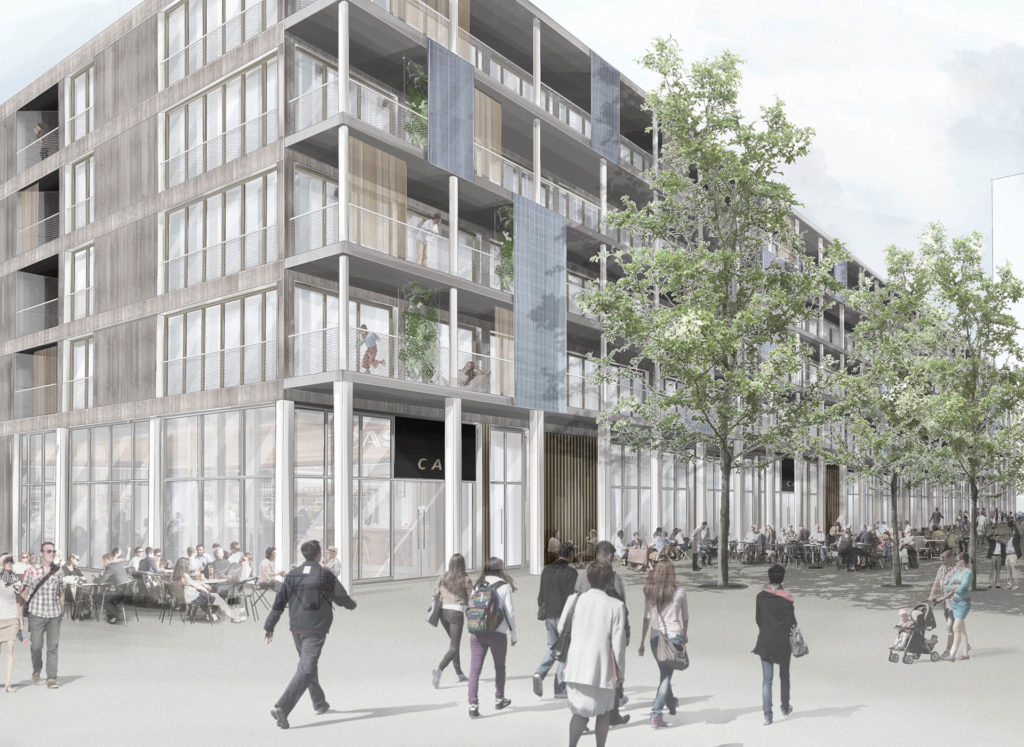
The nationwide operating company CG Elementum AG, specialized in digital and sustainable building, has reached an important milestone for the project “Rhein Lahn Living” in Lahnstein: On July 13, 2023, the city council of Lahnstein passed the necessary resolution for the development plan of the area around the Löhnberger Mühle.
A so-called ecobuilding quarter is to be created on the site, which covers around seven hectares – a modern, sustainable residential quarter which, in addition to residential buildings, is to include a senior citizens’ residence, commercial space, infrastructure and gastronomy. “Our goal is to reduce CO2 emissions by up to 80 percent, from planning to construction and management,” explains Ronald Pofalla, COO of the Group.
To this end, in addition to the use of sustainable materials for the building structure, an almost CO2-free energy supply is planned for the entire quarter. An innovative energy design, including geothermal energy and solar green roofs, is expected to save up to 1,150 tons of CO2 annually. “With the passing of the zoning resolution, we have reached a milestone and can begin to profitably implement our sustainability concept for the site,” explains Marcus Hendle, who is responsible for the project as branch manager for Rhineland-Palatinate for CG Elementum. In addition to the energy supply, the focus is above all on the preservation of the monument substance in the middle of the “Upper Middle Rhine Valley” World Heritage Site, which will be synergetically supplemented by new buildings with the involvement of the monument protection authorities and UNESCO.
At a public information event held last March, the plans met with a positive response from local residents, especially since the planned uses are primarily residential: Of the approximately 86,490 square meters (gross floor area), a large part (approximately 75,098 square meters) will be used for apartments, including condominiums, but also for affordable housing. Around 11,392 square meters are earmarked for small commercial units. In addition, generous green and open spaces are to be created within the neighborhood and along the banks of the Rhine, consisting of playground areas, among other things. In this respect, it is planned to offer a high-quality promenade for pedestrians and cyclists.
Following the decision to prepare the site, all the expert opinions required for the development and the subsequent urban development contract can now be commissioned. A development plan is expected in 2025/2026. The neighborhood is to be completed before the start of the Federal Garden Show (BUGA) Mittelrheintal in 2029.
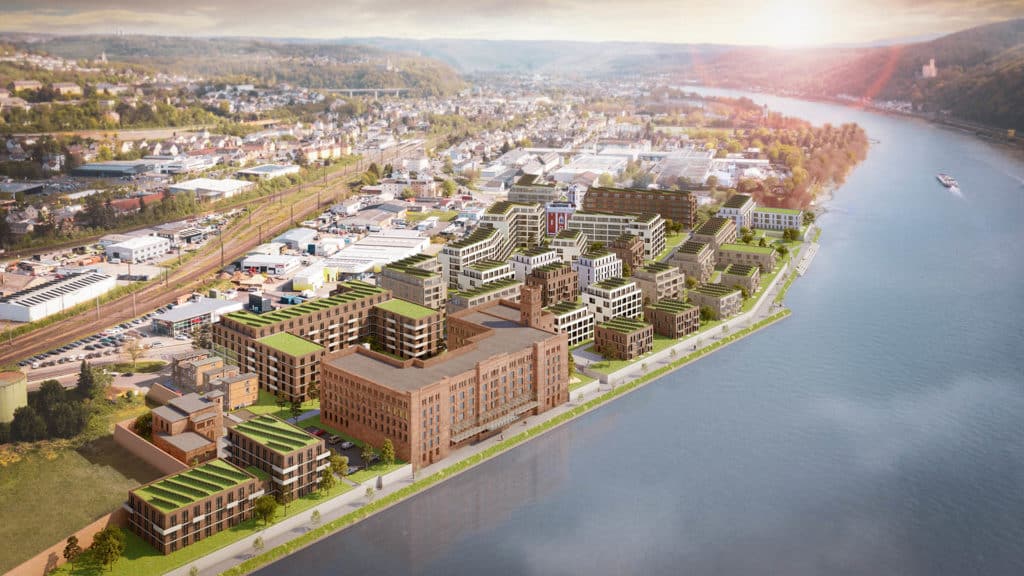
However, help cannot solely rest on our government, making it a societal responsibility to provide a pillar of support.
Within our corporate group, we are aware of this responsibility and want to assist, especially when it concerns the youth. Since 2015, the Gröner Group has been supporting charitable organisations like Off Road Kids. This foundation helps children and young adults who are affected by or at risk of homelessness. Through their street outreach network, the initiative sofahopper.de, and many other measures, they have already prevented more than 10,000 children and young adults from becoming permanently homeless.
The Off Road Kids team, however, does not rest; they tirelessly continue to work on new relief efforts to aid underprivileged youth. From a conversation with the foundation in Hamburg, the “Housing First” initiative emerged. Young adults are accommodated in furnished apartments and gradually reintegrated into society. The goal is to guide the residents toward a stable life within six months and enable them to stand on their own feet. The Gröner Group not only provides the apartments for this wonderful project but also the furnishings. Unfortunately, the housing market is tense, and those without means rarely secure housing.
For us this project is a step in the right direction in the fight against homelessness in our society. We are impressed by this remarkable initiative and are grateful for the longstanding close partnership with the Off Road Kids Foundation!
The cultural highlight with international appeal, which attracts tens of thousands of spectators each year, is supported by CG Elementum AG for the umpteenth time. The nationwide operating real estate project developer, which is part of the Gröner Group AG, sees it as its social responsibility to engage in cultural events that bring people from all over the world together.
For international audiences, the opera “Faust’s Damnation” by French composer Hector Berlioz will be performed this year against the historic backdrop between the cathedral and the Severi Church. For young audiences, the program includes “Jim Knopf and Lukas the Locomotive Driver” by Tobias Rokahr. The children’s opera with lyrics by Katharina Tarján was adapted for the stage based on the classic children’s book by Michael Ende.
“Supporting the DomStufen Festival is a special affair of the heart for us. Hardly any other cultural event in the region manages to create space for so many people of different provenance, to connect them with each other and to create a sense of community. We also implement these aspects with our neighborhood developments, which take into account the diverse needs of a wide range of people and at the same time incorporate important framework factors such as nature and the environment,” comments Ulf Graichen (CEO/CDO), member of the Management Board of CG Elementum, on the commitment.
CG Elementum sees itself as having close ties with the city of Erfurt and the entire region. The company realizes real estate projects there with which it contributes to the preservation of listed buildings and the development of the city. CG Elementum is currently revitalizing the former TA high-rise – the future Erfurt Chronicle – on the edge of the old town, as well as the former Braugold site. In the Braugold Areal, a special focus is being placed on sustainability and regenerative energies through our ecobuilding product: The forward-looking energy concept includes a photovoltaic system, decentralized heat pumps, a combined heat and power plant, and charging infrastructure for e-mobility. In addition, an ice storage system with a storage volume of over 1,000 m³ is used, which can supply the local energy network with heating and cooling all year round on the basis of a wide range of environmental energies. This is expected to save up to 324 tons of CO2 per year compared to conventional plant technology.
Copyright pictures: Theater Erfurt, Lutz Edelhoff
On the occasion of Earth Day 2023, CG Elementum AG presents as a best practice the almost energy self-sufficient farm in South Tyrol, which is at the same time an agricultural, educational and social project. Together with the company GKN Hydrogen based in Bruneck (South Tyrol/Italy), an innovative energy concept was designed: By generating electrical and thermal energy on site on the one hand and using the latest storage technology on the other, the farm can be operated almost self-sufficiently in terms of energy throughout the year. For this purpose, a combined heat and power plant supplied with local biomass and a 1,020 square metre photovoltaic system are used, which generate around 230,000 kWh of electricity annually. Using a new type of hydrogen storage system from GKN Hydrogen and an environmentally friendly nickel-metal hydride battery storage system, this energy can be temporarily stored and the farm can be optimally supplied with up to 94 percent of its own electricity from the PV system. This corresponds to a CO2 saving of about 92 tonnes per year.
The novel technology of hydrogen storage sets standards in terms of safety requirements. A process is used to store hydrogen in metal hydride. In contrast to conventional pressurised hydrogen containers, storage takes place at the same volume and significantly lower pressure. This means that an explosion can be ruled out because the hydrogen is bound in the metal hydride. Hot water and heating at the Arieshof is provided by a wood chip system.
The Arieshof farm also grows mainly cereals and vegetables and processes the products directly on site. Holiday guests are accommodated in the farm’s own flats, and a small restaurant processes local and regional products. In addition, educational and social projects as well as further training are carried out for children, young people and socially disadvantaged workers.
With this example, CG Elementum is setting an example for Earth Day 2023. With the Arieshof, the company is making a contribution to the energy transition and at the same time to sustainable social action.
Copyright Pictures:
CG Elementum AG / Silbersalz
Since its foundation, the group of companies around the Gröner Group AG has pleaded for a better interaction with nature and focuses on climate-friendly construction and resource-saving real estate management. With the product ecobuilding the realization of a nearly CO2-neutral operation of buildings and quarters is implemented. To this end, in-house divisions for energy management and innovative renewable energy technologies have been set up – a forward-looking, completely new approach within the industry.
“The idea of establishing separate specialist departments that deal exclusively with the design and implementation of sustainable energy solutions for our quarters goes back to our visionary founder Christoph Gröner,” explains Ulf Graichen, CEO and CDO of CG Elementum. Marcus Zischg, member of the Management Board of CG Elementum and responsible for technology, innovation/digitization, prefabrication, research and sustainability, adds: “The company’s own companies CG Green Tec GmbH and CG Energiemanagement GmbH, which currently employ around 25 people, are an important building block for building our ecobuildings and operating them in a virtually climate-friendly manner. Each project site is individually evaluated by us in order to create an optimal energy design. We don’t just celebrate an Earth Day: climate-friendly building is our day-to-day business!”
The two companies’ broad range of tasks includes the key issues of heating, cooling and power supply for residential and commercial quarters. They develop targeted and technology-open strategies for the virtually CO2-neutral and affordable management of modern living spaces through the use of ecological energy sources, state-of-the-art technologies and digital control.
The Cologneo Campus project in Cologne-Mülheim, for example, is an excellent example of the efficient and practical use of a precisely tailored energy design: Here, on the former site of the global corporation Klöckner-Humboldt-Deutz, an attractive, forward-looking quarter for work, living, commerce and creative industries is being built. In the North Office Building alone, seventeen geothermal probes of 100 meters each have already been installed in 2021 for the future supply of regenerative energies. The next step here will be the installation of the photovoltaic system with a green roof and 382 solar panels. In total, the quarter is expected to save 86 percent of CO2 emissions through the use of renewable energies after completion. Through an additional purchase of “green-certified” electricity, the annual CO2 emissions can be reduced by 100%.
In his speech, Ronald Pofalla referred to the upcoming challenges of the real estate sector towards climate neutrality. According to the target, the sector’s emissions caused in Germany must be halved by 2030. “Our goal is to reduce CO2 emissions by up to 80 percent, from planning to construction to the management of real estate. We also want to create sufficient affordable, functionally high-quality and ecologically sustainable living space. The Gröner Group, together with CG Elementum as the group’s own service provider for sustainable and digital building in the areas of new construction, renovation of old buildings and monuments, and conversion, relies on the ecobuilding product at the Lahnstein site,” says Ronald Pofalla.
Marcus Zischg built on these remarks. The goal of Rhein Lahn Living is to plan and build as climate-friendly as possible: “We want to build ecobuildings on the approximately 7-hectare site – a sustainable residential quarter with no CO2 emissions whatsoever, which, in addition to housing, will include a senior citizens’ residence, commerce, infrastructure and gastronomy. When we talk about zero CO2, we mean annual savings of up to 2000 t CO2. We achieve this with the most modern technological approaches, which we have designed ourselves,” said Marcus Zischg. He explained how green electricity can be generated at the site and how environmental energies can be used.
The planning goal of the construction project is to create a synergy between the listed substance of the existing buildings and the new buildings. Thanks to fully digital BIM planning and serial prefabrication for all new buildings, CG Elementum is also able to create more affordable living space precisely and quickly.
Following the presentation of the plans, those present were able to raise and discuss questions on the topics relevant to them, such as traffic volume, heat generation, green spaces and parking, as well as the use of prefabrication, among others. During the subsequent guided tour of the site together with the planning architects from REHUB digitale Planer, the guests had further opportunity to inquire about the details of the construction project.
The quarter is to be completed before the start of the Bundesgartenschau (BUGA) Mittelrheintal in 2029. In this regard, it is planned to offer visitors a high-quality promenade for pedestrians and cyclists.
Founded in 1996, originally known as Leipziger Tafel e. V., the organisation collects donated food and distributes it to those in need, social organisations, institutions, and charitable associations. In 2020, they joined the national organisation DEUTSCHE TAFEL e. V. and was renamed TAFEL Leipzig e. V. In addition to eight distribution points, TAFEL Leipzig operates a Children’s Tafel and, since the onset of the COVID-19 pandemic, a delivery service.
As early as 2020, the Tafel requested financial assistance as the pandemic posed significant existential challenges to many nonprofit organisations due to reduced donations. After Christoph Gröner personally covered the salaries of Tafel Leipzig employees for two months, a diverse partnership also formed with the subsidiary CG Elementum AG. Apart from the monthly commitment, other initiatives of the association, such as Christmas Wish Tree campaigns or school supplies for the so-called “Tafel children,” are also supported. Additionally, we are providing a ninth distribution point on Risaerstraße, aiming to assist even more people in the near future.
We are incredibly proud of this partnership and wish to express our gratitude to Tafel Leipzig for their crucial work. We also extend our thanks to our employees of the Leipzig branch for their ongoing support of these initiatives. Here’s to many more years!
Ulf Graichen, CEO/CDO of CG Elementum AG, is aware of the advantages of the cooperation for the quarter and the neighbourhood: “We at CG Elementum see meaningful synergies in the cooperation with The Porter, especially for the location. The A30 at Engertstraße 31 is a building with an eventful history. Here, refurbished and modernised historic building fabric will be combined with contemporary use in the future: The Porter will offer added value for local users and the surrounding area with its hospitality and community concept, just as we want to achieve an impact for sustainable building with ecobuilding.”
A core competence of CG Elementum is the reduction of CO2 emissions in the real estate sector, which is achieved, among other things, through the conversion of historic industrial sites into residential and commercial space using ecobuilding. The ecobuilding product stands for ecological, economical and digitally planned real estate that is ESG-compliant and particularly durable.
Martin Egner, founder and managing director of The Porter, adds: “We are delighted to become part of the Plagwitzer Höfe with The Porter Leipzig-Spinnerei and to be able to contribute to the further attractiveness of this creative quarter with our open concept around flexible living and working. Plagwitz has seen an extremely positive development in recent years and we at The Porter find ourselves in it.”
The first location of The Porter is scheduled to open in December 2023. Further properties by The Porter in European metropolises are already being planned.
The Plagwitzer Höfe:
Only about three kilometres west of Leipzig’s city centre is the urban district of Plagwitz, which has become the trendy quarter in Leipzig in recent years. The Plagwitzer Höfe are among the historic commercial courtyards in the Plagwitz district and have contributed significantly to this development. Since 2007, CG Elementum has been developing and redeveloping modern and sustainable new and old buildings for residential and commercial space as well as spaces for art and culture in interconnected areas here.
CG Elementum focused on a sustainable energy supply with renewable energies in the quarter at an early stage and realised Leipzig’s largest photovoltaic system there. In Quartier A, where the future location of The Porter Group is located, an innovative energy concept with almost CO2-neutral hydrogen technology will also be built this year, which is unique so far. The special feature of this is the coupling of a hydrogen-compatible combined heat and power plant (the so-called BHKW H2-ready) with a methane electrolysis plant. Charging infrastructure for e-mobility rounds off the energy design, with which active and practical climate protection is pursued.
Partnership sealed during MIPIM 2023
This new deal was officiated during the world’s most important real estate trade fair ‘MIPIM 2023’ in Cannes where the CEO of CG Elementum, Ulf Graichen, and the CEO of infinitSpace, Wybo Wijnbergen, signed the corresponding documents in the presence of Christoph Gröner, CEO of Gröner Group and CG Elementum founder.
“We see infinitSpace’s modern concept, tailored to the flexible needs of the market, as a fruitful complement to our own approach to future-oriented real estate. By applying our expertise in implementing ecological, economical and digitally planned commercial spaces, we will exceed the expectations of future users. In particular, our new ecobuilding product will create properties that are not only ESG compliant, but long-lasting,” said Ulf Graichen, CEO of CG Elementum.
Wybo Wijnbergen, CEO and founder of infinitSpace: “We are very pleased about the steadily growing cooperation with CG Elementum. Our latest location, Karlsruhe, has a strong demand for flexible workspace solutions which we look forward to meeting. Working closely together, we want to create a Flexspace brand that significantly carries CG Elementum’s forward-thinking commitment to sustainability.”
infinitSpace is taking over half of the rental space at Fiduciastr. 12 in the Durlach district of Karlsruhe, totalling around 3,000 m². The specialist for flexible workspaces, which deploys expertise in sales, operations and marketing, is implementing its new office space concept there, including a first-class workspace app that has both practical and social features available for all the building’s users.
New office, work and storage space is currently being built at Fiduciastr. 12 and will total of 6,000 m². Beginning in 2022, the approximately 4,000-square-meter property will complement the group’s existing properties at Fiduciastr. 2 to 10, where CG Elementum will develop a mix of residential and commercial uses, such as offices, fitness and retail spaces, and a hotel on approximately 63,000 square meters (net floor area) by 2028.
Since December 2022, CG Elementum and infinitSpace, the successful provider of white-label solutions for flexible office space concepts and customized apps for digital control, have been working together to create new flexible workspaces in Mannheim’s Konradhaus and MI5 in Cologne’s Cologneo Campus. Design of the new workspaces in the Konradhaus and the Karlsruhe will begin this year. Work will then continue in Cologne in 2024.
All buildings are owned by Gröner Group and are being developed by CG Elementum.
To implement our guiding principles and support the corporate group, especially our employees, we have engaged Dr. Andrea Nehl as an independent Equal Opportunity Officer. Since the beginning of 2020, she has been working with us, providing employees with an open door and an open ear. Topics, issues, and concerns entrusted to her as a point of contact are kept confidential and tranformed into anonymised reports, which are then addressed at the corporate level.
We are delighted by the engagement with Dr. Nehl and appreciate the continuous improvement and development opportunities that arise from the collected feedback. We are profoundly grateful for the remarkable work she is doing in this critical area!
Unfortunately, the state of emergency still prevails. From the beginning, we have been supporting various initiatives, taking our own measures to assist as many Ukrainians as possible, and will continue to support wherever we can. Our thoughts remain with the Ukrainian people, and we hope this war ends soon.
“The prefix eco refers to the connection between ecology, economy and digital ecosystems, which has moved more strongly than before to the center of entrepreneurial activity,” as company founder and CEO Christoph Gröner emphasized. The Gröner Group places CO₂-neutrality, high-quality architecture, people’s requirements and economic efficiency equally at the center of its actions.
Understanding challenges for the building sector as motivation
At the beginning of the event, which was attended by over 180 guests, Management Board member and COO Ronald Pofalla explained the starting point of the strategy process, which involved the vast majority of the now 640 employees: “The building sector is responsible for around 30 percent of global greenhouse gas emissions. It is our mission to significantly reduce this rate and to make as large a contribution as possible to combating climate change. We combine the economic success of our company with the fulfillment of our social responsibility to reduce CO₂ emissions in the building sector.”
Ronald Pofalla pointed out that greenhouse gas emissions in Germany must fall by at least 88 percent by 2040 compared with the reference year, and emissions from the real estate sector must be halved by 2030. By 2040, the aim is to refurbish around 19 million homes in a climate-neutral way, while a good 400,000 new homes per year are to be built and managed in a climate-neutral way. To make matters worse, the construction industry is already short of around 250,000 employees.
“We are focusing on Building Information Modeling (BIM) and prefabrication,” Ronald Pofalla emphasized. In North Rhine-Westphalia and Saxony, the company is building two state-of-the-art prefabrication plants in 2023 and 2024. In the future, a wide range of components with a vertical range of manufacture of over 60 percent for residential and commercial construction will be produced at both sites. This will also enable the use of prefabricated components in refurbishment.
“In total, all our measures reduce CO₂ emissions by 80 percent from planning to construction and management,” Ronald Pofalla pointed out.
Digital and ecological innovation as a driver of entrepreneurial activity
“There can be no ‘business as usual,'” Gröner Group CEO Christoph Gröner called out to the guests from business, politics, media and society, aiming at the direct responsibility of the real estate industry, which, with a contribution of a good 20 percent to Germany’s gross value added, is a major player with enormous potential for change.
Christoph Gröner presented his company’s new claim to be a pioneer in technological and ecological transformation through innovation: “With digital planning, our projects are first created in virtual space, and later the data is sent to robots in our production halls. With prefabrication and serial production of building components, construction becomes a tenth cheaper and takes only half the time. At the same time, costs are easier to plan and construction is more environmentally friendly overall thanks to greater material efficiency. That’s what ecobuilding means.”
In terms of digital planning, the group is pursuing two directions: The CG Plan team is rebuilding familiar planning processes for the digital world, and the in-house start-up REHUB is redesigning the development of urban planning models all the way to execution planning. The interaction of both approaches leads to unconventional and highly innovative solutions.
Already today, one third of the 640 employees of the group of companies from 30 nations are engaged in these innovations. Last year alone, 21 experts for energy management and GreenTech joined the Gröner Group. “A company without this focus will no longer be active in the market in five or ten years,” added Christoph Gröner, and continued with a view to climate change: “We are convinced that others will follow our ecobuilding approach.”
The use of ecological materials and the re-use of existing building fabric ensures savings in CO2. Circular construction, which reuses recycled demolition material elsewhere, is already being implemented by Gröner Group in several construction projects. In our projects, we rely on the use of solar energy, geothermal energy and modern heating and cooling systems.
“By reducing the costs of construction and energy supply, we ensure that we provide affordable living and working space. ecobuildings are thus clearly ahead of their time,” added Christoph Gröner.
Modern structure and good governance enable innovation and ESG-compliant products
The new ecobuildings meet the wishes of customers. Management Board member and CFO Lars Schnidrig referred to the growing demand for ESG-compliant investment opportunities: “We stand for the development of sustainable living spaces in neighborhoods that are planned in a socially and environmentally responsible manner according to clear corporate standards and operated in a climate-friendly manner. In this way, we provide the answer to the wish of many investors. With prefabrication plants, recycling, our own energy management, lower CO2 emissions, a governance and compliance code, and high social commitment, we can act with broad shoulders.”
The “Wirtschaft kann Kinder (WKK)” association, co-founded by Christoph Gröner and supported by the Group, has collected more than four million euros in donations over the past three years, primarily for the benefit of children in need. In addition, the Gröner Group, CG Elementum and various employee:inside initiatives support, among other things, cultural sites, medical research, support the food banks, shelters and people who have become homeless.
“Gröner Group also sets its own high standards for corporate governance. In order to be transparent for investors and partners, the Group figures are very deliberately audited and certified by one of the so-called Big Four auditors,” Lars Schnidrig emphasized.
Already at the end of 2022, the Gröner Group completed the change in form from a GmbH (limited liability company) to a stock corporation in order to be able to pursue its own goals even more consistently. The Supervisory Board of the company reflects these goals and is composed of experienced members from business and politics. It boasts a wealth of experience in the company’s key areas of focus in the energy industry, digitization and good corporate governance. Under the chairmanship of the former board member of Allianz Pensionskassen AG, Dr. Peter Haueisen, the former State Secretary for the Environment of the State of Saxony-Anhalt and former CEO of Berlin-based GASAG AG, Vera Gäde-Butzlaff, the former CEO of Deutsche Bahn, Prof. Dr. Rüdiger Grube, the management consultant and entrepreneur Dr. Ulrich Metz, the former EU Commissioner for Energy and later responsible for the digital economy, Günter H. Oettinger, and the Managing Director of the Academy of International Affairs of the state government of North Rhine-Westphalia, Dr. Mayssoun Zein Al Din.
Meanwhile, demolition work on the site is expected to continue until the end of the first quarter of 2023. The first building permit for construction site 8 is also to be applied for during this period; three architectural firms have been commissioned for the planning here.
Dr. Tobias Schnaidt, head of the Karlsruhe branch: “The first Europe-wide architectural competition is now also starting. The reason for and purpose of this competition is the object planning as well as the concept for the associated open spaces for the new residential and commercial building on construction site 12.” Information on the application and selection process is available electronically at www.aumass.de. SCHÖFFLER.stadtplaner.architekten from Karlsruhe in cooperation with the law firm Aleksandra Gleich from Mannheim are responsible for the procedural supervision and preliminary examination.
Since 2010, ideas for the conversion of the areas formerly used by the American armed forces have been conceived for the development area in the northern part of Karlsruhe. On the northern part of the site, the creation of numerous apartments is planned in the course of a comprehensive revitalization. The goal of CG Elementum AG is to create affordable housing and a corresponding infrastructure in particular, while at the same time meeting the aspect of sustainability. For Greenville, CG Elementum is therefore working with Concept Green. This covers all measures and processes that sustainably reduce the CO₂ emissions of real estate. In concrete terms, this means for “Greenville”: climate-friendly energy solutions, sustainable materials and digital planning and control through BIM.
In total, the “Greenville” development will create more than 60,000 sqm of residential space, a good 25,000 sqm of commercial space, offices and creative spaces. Currently, CG Elementum AG assumes a project volume of around 500 million euros and a realization horizon until 2027.
We are aware of this sad reality, which is why our employees wanted to help again and took part in our Christmas initiatives!
However, these activities are not intended for the general public – they are opportunities for our employees to give back to our society. At every location the team for social commitment provided an opportunity to join and support a good cause.
And it almost couldn’t have gone any better. We were absolutely thrilled with the effort and would therefore like to share it this way. We wish you all a Merry Christmas and a Happy New Year!
19 – 22 January 2023 in Leipzig: CG Elementum supports PARTNER PFERD
“Leipzig as a venue offers the optimal setting for such a top-class event”, affirms Ulf Graichen, CEO of CG Elementum AG and adds “Leipzig is the starting point of our company and most of our employees and projects still gather here. That’s why we are particularly excited about the “Championat von Leipzig” competition we are organizing. The jumping competition with jump-off is the second most important jumping competition of the event. It will take place on the afternoon of January 21, 2023 at the Leipzig Exhibition Center and will also be shown internationally on TV.
PARTNER PFERD and CG Elementum AG each look back on long traditions. While the trade fair with integrated equestrian events will take place for the 25th time in 2023, CG Elementum has more than 25 years of expertise in the real estate sector. For the company, tradition is an elementary part of its self-image. The revitalization of brownfield sites in particular is often about preserving old building fabric. Whether old or new buildings: At CG Elementum, sustainable energy concepts and green technology are standard.
Since 2007, CG Elementum has been developing and refurbishing modern and sustainable new and old buildings for residential and commercial space as well as spaces for art and culture in the Plagwitzer Höfe, for example. Here, self-sufficient power and heat generation by means of a combined heat and power plant (H2-ready) is planned. The Plagwitzer Höfe will be one of the first neighborhoods in Germany to use hydrogen, applying the so-called methane electrolysis process to generate electricity and heat. The goal is to supply more than 50,000 square meters of building space and additionally provide electricity for electric cars. Efficient energy use through the use of modern building services, control technology and ecological building materials is also an important part of the overall concept.
The Plagwitzer Höfe are located around three kilometers west of Leipzig city center in the urban district of Plagwitz, which has become a trendy neighborhood in Leipzig in recent years.
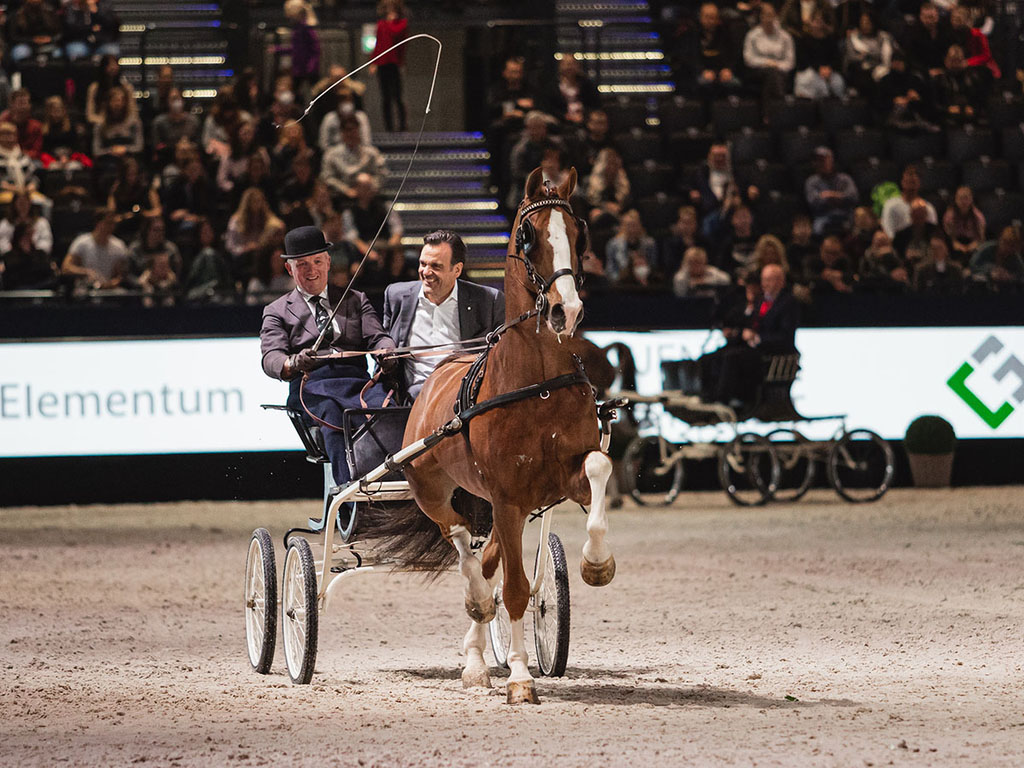
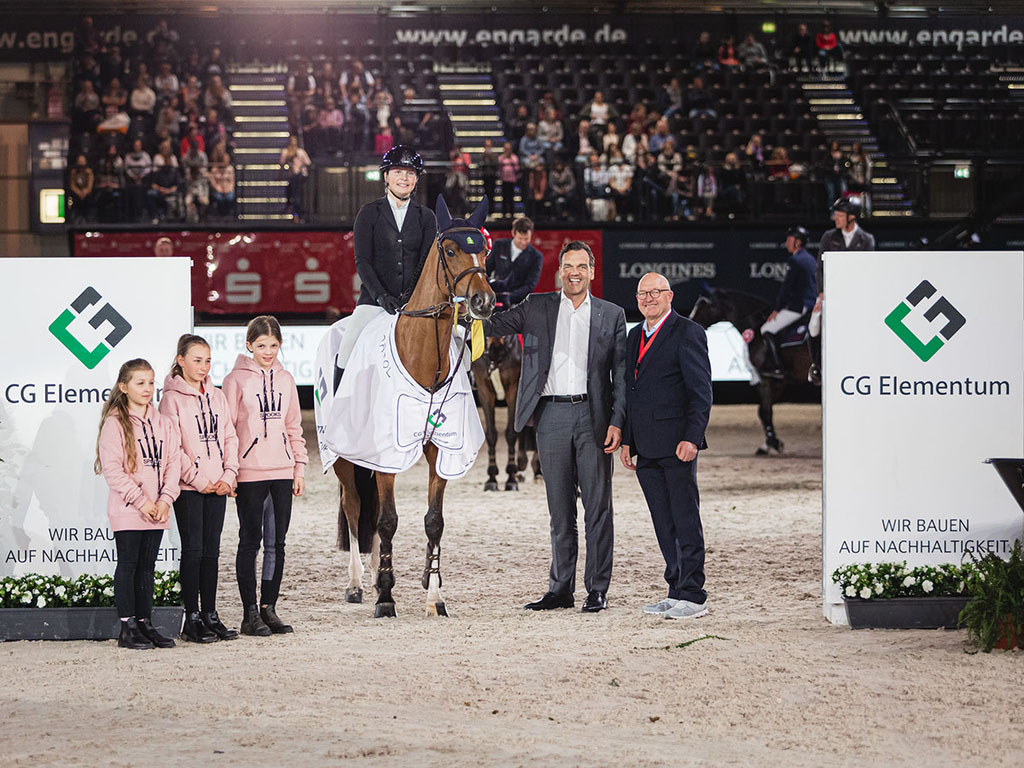
CG Elementum at Partner PFERD 2022 
Pictures: © Johanna Milse
The stelae are being used for the first time in outdoor landscaping, thereby ensuring a better urban climate and thus complementing the sustainability concept of CG Elementum’s large-scale Plagwitzer Höfe neighborhood.
The stelae with integrated CO2/air particle filter made of moss compensate up to 91 kg CO2 per stele annually and reduce fine dust by up to 82%. They also humidify and cool the environment by up to 4 degrees Celsius. Especially in hot summers, this helps improve the climate and increase the overall feel-good factor. In addition to the 75-inch screen, the digital advertising media have hexagonal benches and thus also function as resting and meeting points in the neighborhood.
Ulf Graichen, CEO and CDO of CG Elementum, said at the handover: “For us, sustainability also means rethinking neighborhood development. For us, the focus is on the holistic development of modern neighborhoods that help to improve the carbon footprint through the use of green technology. At the same time, they should be places where people feel completely at home. With CityBreeze, we have today added a building block in the further development of the Plagwitzer Höfe that has a positive impact on the climate.”
Peter Sänger, founder and CEO of Green City Solutions, was also pleased about the collaboration: “With the installation of our CityBreeze in the outdoor landscaping of the Plagwitzer Höfe, we are moving forward in our mission to provide clean and fresh air in big cities. Once all CityBreeze are in operation, the air of the entire neighborhood will be completely purified up to a height of 2 meters every day.”
As part of the pilot project, a total of ten CityBreeze steles are to be installed in the Plagwitzer Höfe by the end of 2024. After the test phase, CityBreeze has the potential to be integrated in other CG Elementum neighborhoods to become a sustainable component in the real estate developer’s projects.
Since 2007, CG Elementum has been developing and redeveloping modern and sustainable new and old buildings for residential and commercial space as well as spaces for art and culture in interconnected areas in the Plagwitzer Höfe. The Plagwitzer Höfe, about three kilometers west of Leipzig’s city center, are located in the urban district of Plagwitz, which has become a trendy neighborhood in Leipzig in recent years. The Plagwitzer Höfe are among the historic commercial courtyards in the Plagwitz district and have contributed significantly to this positive trend with their revitalization and further development.
The development site is located in the northern part of Karlsruhe. Since 2010, ideas have been developed for the conversion of the areas formerly used by the American armed forces. On the northern part of the site, the construction of numerous apartments is planned in the course of a comprehensive revitalization. The aim is to create affordable housing and a corresponding infrastructure in particular, while at the same time meeting the aspect of sustainability, for which the local council has now given the green light.
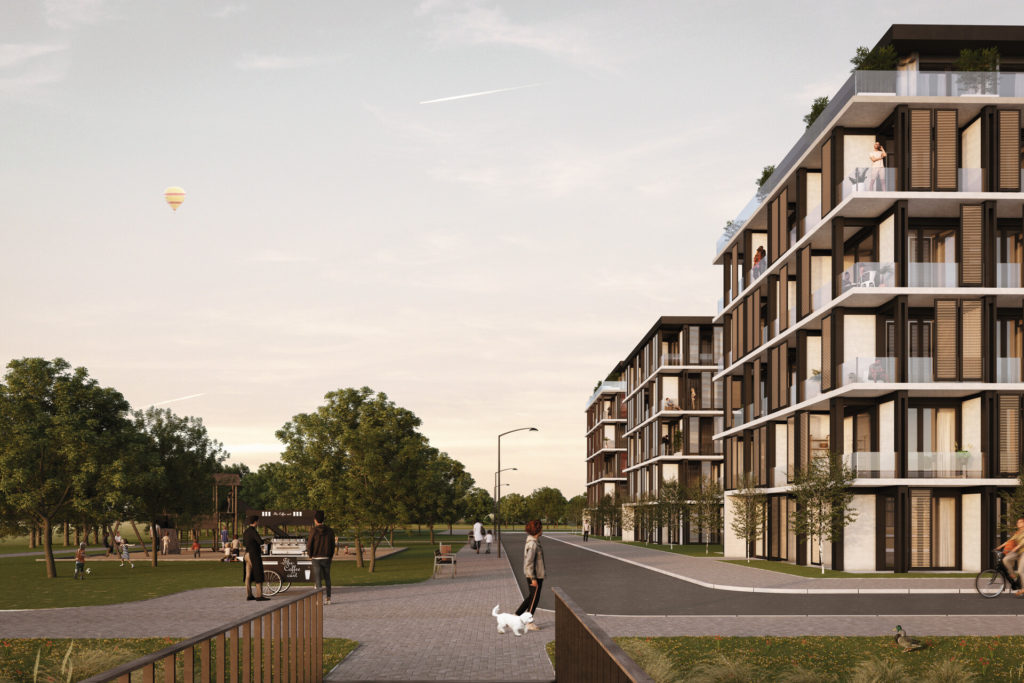
“Our company-wide ConceptGreen will also be used for the Greenville,” announces Ulf Graichen, CEO of CG Elementum AG, explaining, “Under the umbrella term ConceptGreen, we combine all measures and processes that sustainably reduce the CO2 emissions of our properties: in planning, in material consumption, on the construction site and in permanent operation, i.e. in electricity consumption, heating and cooling. In concrete terms, this also means for the Greenville development: climate-friendly energy solutions, sustainable materials and digital planning and control through BIM.”
In total, the “Greenville” development is expected to create more than 60,000 square meters of residential space, a good 25,000 square meters of commercial space, offices and creative spaces. Currently, CG Elementum AG assumes a project volume of 600 million euros and a realization horizon until the mid/late 20s. The application for the first building permits is already planned for the coming months.
The acquisition was accompanied by reallocation commercial properties GmbH, a Germany-wide operating brokerage house, which comprehensively supported the selling property company from Karlsruhe in the sale. The brokerage firm, which has well over 40 property locations, specializes in the leasing and sale of commercial properties.
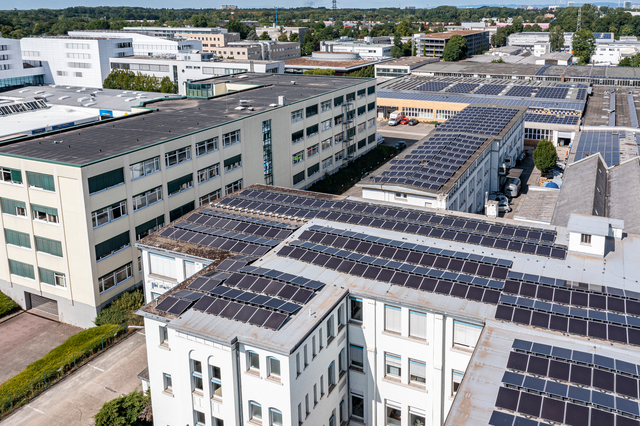
The newly acquired, approximately 4,000-square-meter property is adjacent to the existing properties at Fiduciastrasse 2 to 10, where CG Elementum is developing a mix of residential and commercial uses including offices, fitness, retail and a hotel on an area of around 63,000 square meters by 2028. In addition, 500 underground parking spaces will be available to users.
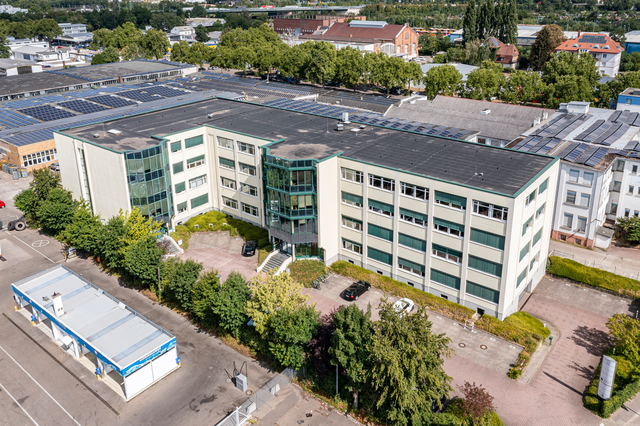
The building at Fiduciastrasse 12 has around 6,000 m² of office space, 57 underground parking spaces and 40 outdoor parking spaces. The contact for potential tenants to lease the commercial space that will become available from 2023 is CG Immobilien GmbH, a subsidiary of the project developer. Durlach is highly sought-after as a residential area due to its beautiful medieval old town and its quiet locations, and also has numerous attractive locations for industry and commerce. The property benefits from this location close to the city center and is ideally connected via the nearby highway access
Most of us rarely strike up a profound conversation with a homeless person to hear about the fates and circumstances that ultimately led to a life on the street. Such an opportunity came about for some executives and colleagues at the end of October: an invitation to an extraordinary dinner with the guests of the Harburg-Huus at Château9.
The Harburg-Huus of the German Red Cross is an institution in Hamburg that offers homeless people a roof over their heads. Dogs are also welcome here, so that the residents do not have to choose between their four-legged companions and a warm bed. CG Elementum has been supporting this institution for years with 62,500 euros annually.
The almost 20 guests and caregivers from Hamburg were invited by CG Elementum on a short trip to Leipzig. The group arrived in the morning, first explored the city and in the evening came together for an exclusive dinner with some executives and employees from different departments at Château9. The sounds of a jazz duo accompanied the evening and the interesting conversations, which probably would not have happened under other circumstances. After dinner, the guests stayed the night at GRONERS and went to the Leipzig Zoo the next day before returning to Hamburg in the afternoon.
The feedback was very positive, especially the visitors from Hamburg thanked us several times for this short trip and especially the extraordinary dinner. We are already looking forward to the next reunion.
Many thanks to all guests for this unique evening!
We could already make accommodation available in Berlin, Leipzig and Karlsruhe, another lease for premises for up to 100 people has also been signed in the Rosenower St. in Leipzig. After some final work, they could be handed over at the beginning of September.
In addition to the provision of accommodation, the furnishing of the living quarters and medical necessities were also taken care of. Not only the company participated in these relief measures, but also the employees supported these initiatives with donations and active commitment. Photos of the transports to the Ukrainian border reached us, as the medicines, food, hygiene articles and other medical items such as hospital beds and wheelchairs were brought to the border by volunteers.
Our initiatives did not go unnoticed: Ostap Gryshchuk, Executive Director of the Ukrainian Ministry of Health, personally thanked us in a letter. The ongoing commitment of our employees makes us very proud – from the work on shelters, donations for furniture and urgently needed items, to the transportation to the country’s border. We want to give a big THANK YOU at this point!
We will continue to help Ukrainians and hope that this war will end soon.
The guests at the event were given insights into the measures for more sustainability in the neighborhood, such as the expansion of e-mobility or the integrative outdoor area design, which counteracts surface sealing and increases the quality of stay.
A special highlight was the presentation of the CityBreeze by the cooperation partner Green City Solutions. The digital advertising steles with integrated CO2/air particle filter made of moss and hexagon-shaped benches will be installed in the Plagwitzer Höfe in the next few weeks. The stelae with a 75 inch screen offset up to 91 kg CO2 per stele annually and reduce particulate matter by up to 82%. They also cool and humidify the environment down to -4 degrees C, helping to improve the climate and increase the feel-good factor – especially in hot summers.
“An informative kick-off event for the Plagwitzer Höfe commercial tenant community and our forward-looking neighborhood development. We are making great strides for more sustainability in the Plagwitzer Höfe – which also excites our tenants,” emphasized Silvio Petermann, Deputy Branch Manager Leipzig.
Since 2007, CG Elementum has been developing and redeveloping modern and sustainable new and old buildings for residential and commercial space as well as spaces for art and culture in interconnected areas in the Plagwitzer Höfe. The Plagwitzer Höfe, about three kilometers west of Leipzig’s city center, are located in the urban district of Plagwitz, which has become the trendy neighborhood in Leipzig in recent years. The Plagwitzer Höfe are among the historic commercial courtyards in the Plagwitz district and have contributed significantly to this development.
CG Elementum was also present again as the main sponsor and with helping hands. Besides the painting job at the Tagestreff für Frauen und Kinder, the shelf conversion project at the Kinderschutzbund Karlsruhe and the playground restoration at the FV Malsch, 7 other initiatives were successfully tackled.
This year, volunteers were able to find out about the KSC-Helfertag in advance on the new website. There they could find more information on the projects and even a register for their favorite initiative. The employees of the Karlsruhe branch and the Social Commitment team signed up for the Clean-Up Day in Bruchsal and cleared a large forest area of all garbage. Some of which even consisted of toxic waste products. This was a great help to the regional wildlife in particular, which can now build their winter quarters undisturbed.
We are not only a proud partner of the KSC-Helfertag, we are also extremely happy to see that our colleagues want to help and give back to their community. Thank you very much for this amazing commitment.
We are already looking forward to the 3rd KSC-Helfertag in 2023!
In the building complex from the 1990s, 77 apartments with underground and outdoor parking spaces are being built. In addition, space for commercial use is planned on the first floor, including for an established Munich children’s orthodontics practice. The Munich City Savings Bank, which is already located on site, will also be retained with a modern branch. It is to move temporarily into temporary quarters as construction work progresses toward the end of this year. Completion is scheduled for 2024.
George Moutoulis, head of CG Elementum’s Munich and Stuttgart branches, was pleased to see the start of construction and explained the next steps: “Once the site has been set up, the company we have contracted, Dobler Bauunternehmung, will first begin constructing the loggias and balconies. Then windows and thermal insulation composite systems will be installed.”
“An den Winterlinden” is located in the Johanneskirchen district of Munich and is part of the Bogenhausen borough, which offers many advantages with a heterogeneous mix of housing, office space, green areas as well as a very good local supply and a well-developed public transport system and fast connections to Munich city center.
Copyright notice:
Visualization: CG Elementum AG / Cycle Zero Visual
Photos construction site: CG Elementum AG
Like the years before both events were organized for the benefit of Wirtschaft Kann Kinder. In Berlin, the program included an auction of smaller and larger items and events in connection with the educational and sports campus Safe-Hub, which is currently under construction in Berlin-Wedding. Guests were able to bid on footballs signed by Oliver Kahn, sponsorships for a Safe-Hub program and even a goal wall shootout against the Titan himself – a special highlight for all spectators!
Thanks to the artists of the Coloneo Campus, an impressive art exhibition and auction was organized for the summer party in Cologne. With the 15 auctioned artworks 100.000 Euro came together for the good cause. The proceeds of both summer festivals amounting to more than 250,000 euros went to Wirtschaft kann Kinder.
MI5 is one of numerous sub-projects within the framework of the “Cologneo Campus” neighborhood development.
The five-story new building, which will be directly adjacent to an openly designed neighborhood courtyard, will provide around 11,450 m² of gross floor area for modern office space that will accommodate a variety of space concepts ranging from open space to individual offices. The façade with large glass surfaces will in future provide an unobstructed view of the landscaped inner courtyard. In addition, sustainable building materials, green technology and green roof areas make MI5 almost completely climate-neutral.
“To have reached another milestone at the Cologneo Campus is a great perspective for the location, which offers attractive space for new companies,” said Marcus Zischg, CEO of CG Elementum AG and head of the Cologne branch, on the sidelines of the topping-out ceremony. “I am convinced that quarters like the Cologneo Campus, planned sustainably and with a mix of uses, will shape the cityscapes of the future.”
The Cologneo Campus between Mülheimer Hafen and Deutz-Mülheimer Straße in the immediate vicinity of Koelnmesse was formerly home to Klöckner-Humboldt-Deutz and comprises both new buildings and existing structures from that period, including the listed “Eckiger Rundbau”. All in all, a wide variety of spaces for offices, commerce, gastronomy, art and culture are being created on the campus, and a parking garage will also be built.
Copyright notice:
Drone footage MI5: CG Elementum AG / Christian Kleeberg
Inner yard MI5: CG Elementum AG / CZ Visuals
Outer view MI5: CG Elementum AG / kadawittfeldarchitektur
In St. Lorenzen near Bruneck, Italy, real estate project developer CG Elementum, a subsidiary of the Gröner Group, has completed a special pilot project: A completely energy self-sufficient farm, which is at the same time an agricultural, educational and social project.
Autarky, or independence, was at the heart of the planning for the Arieshof. Together with GKN Hydrogen, a company based in Bruneck (South Tyrol), CG Elementum developed an energy concept that is unique in the world to date: by generating electrical and thermal energy on site on the one hand and using innovative storage methods on the other, the farm can be operated completely self-sufficiently in terms of energy. A 1,020-square-meter photovoltaic system is used for this purpose, generating a good 230,000 kWh of electricity annually.
A hydrogen storage system from GKN Hydrogen makes it possible to temporarily store this energy and optimally supply the farm with electricity. Through innovative software, the Arieshof can be supplied with up to 94% of its own electricity from the PV system, depending on demand. This corresponds to a CO2 saving of 92 tons per year. The completely new technology of hydrogen storage uses a process with which hydrogen is stored in metal hydride. In contrast to conventional storage media, storage takes place at the same volume and significantly lower pressure. Therefore, this system has a significantly lower hazard potential. No explosion can occur because the hydrogen is bound in the metal hydride.
The hot water production and heating of the Arieshof is provided by a wood chip plant. The wood required comes from the farm’s own sustainably managed forest of around 19 hectares near St. Lorenzen near Bruneck. In this way, transport emissions are minimized and the self-sufficiency of the farm is strengthened. Burning produces about 10 tons of CO2 annually, which is recaptured through photosynthesis in accordance with a ten-year plan while the huge forest is replanted.
“The Arieshof is an impressive example of the development of alternative energy concepts,” says Christoph Gröner, founder of CG Elementum and managing director of the Gröner Group. “To drive the energy transition forward in a forward-looking way, we need more creative and site-specific solutions like this that make the most of local conditions.”
Following the global goals for sustainable development, social, ecological and economic development are to be combined.
The implementation of the concept includes three pillars:
- The farm grows mainly cereals and vegetables and processes the products directly on site.
- Vacation guests are accommodated in farm apartments, and a small restaurant business processes local and regional products.
- Educational and social projects as well as work training are carried out for children, young people and socially disadvantaged workers.
This concept with all its sustainable components, such as hydrogen storage, photovoltaic system and wood chip system, was taken in hand by selected visitors at the official side event of the Sustainability Days at the Arieshof. Christoph Gröner personally showed the guests around the farm together with Gottfried Rier (Chief Technical Officer of GKN Hydrogen). Around 70 invited guests were able to see the benefits of the pilot project for themselves.
Copyright notice:
Exterior Photo: CG Elementum AG / Silbersalz
Hydrogen storage: CG Elementum AG / Fabian Leitner
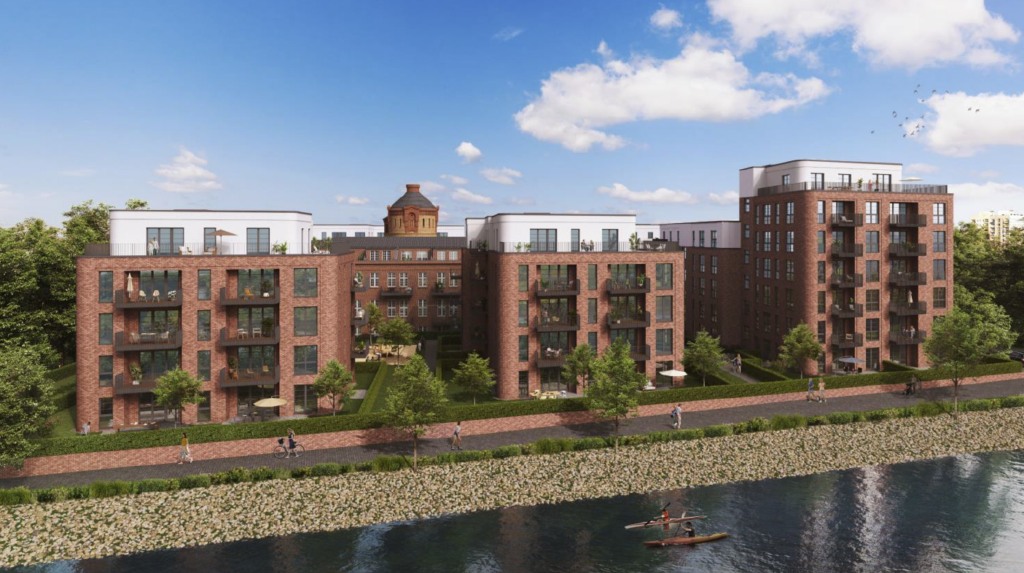
By 2024, 15,300 square meters of living space will be created here, directly on the banks of the Havel River, in a revitalized existing building in clinker brick style and supplementary new buildings. A total of 204 commission-free old and new condominiums will be built, ranging in size from 36 to 147 square meters, as well as 166 parking spaces. Each of the apartments has a balcony, roof or garden terrace and a cellar compartment. Buyers will also be able to choose between three different high-quality finish lines made from climate-friendly, certified building products.
“We are very pleased to be able to create living space in this unique location,” says CG Elementum’s Chief Development Officer Ulf Graichen. “Eiswerder Island combines the advantages of the big city with rural tranquility and a maritime lifestyle like almost no other place in Berlin.”
As with all CG Elementum projects, only environmentally friendly building materials and renewable energies are used in the construction of the STADTLANDHAVEL residential quarter. For example, the project’s ecological footprint is kept as small as possible through green roofs, e-mobility parking spaces, air-to-water heat pumps, a photovoltaic system and a combined heat and power plant.
The beginning of the next school year was getting closer and closer and with it the enrollment of many first graders. In Germany, the very first year of school is traditionally celebrated by gifting a school cone – a large cone-shaped present usually made of paper, cardboard, or plastic – but the means are not always there to give such a gift to the little ones. That’s why we collected money in our Leipzig branch so that the Tafel Leipzig could give their so-called “Tafel children” a school cone just in time for the first day of school. 150 Euro were collected and then topped up by CG Elementum! So the kids in Leipzig could take home a traditional cone filled with useful school supplies and are ready to start in the first grade.
The Social Commitment team also received an appeal for donations from Hamburg. The CaFée mit Herz is committed to helping people without means and until recently had a full inventory of clothes as many people took advantage of the period at home during the pandemic to skim their closets. Many items of clothing, shoes and other useful household textiles were sorted out and donated to charitable organizations. CaFée mit Herz was also happy to receive these donations, but as we transitioned back into a relatively “normal” everyday life, the institutions donation inventory became more and more empty. We wanted to change that and called for a donation drive in Hamburg and Berlin. The CaFée mit Herz sent a list of urgently needed items, which we passed on to our colleagues. Over the weeks, an incredible amount of donations and even financial means accumulated, which was then used to buy more drugstore items needed. In the end, we were able to fill the clothing inventory again.
We would like to thank our colleagues who donated so diligently!
Now the building is being extensively renovated and supplemented by annexes that will close the perimeter of the block. The CHRONICLE ensemble of buildings will feature sustainable condominiums with one to three rooms on a total of around 6,680 square meters of living space, around 230 square meters of commercial space on the first floor and 49 underground parking spaces. From the top floors, residents can enjoy a panoramic view of the historic city center with the famous Erfurt Cathedral. With a few exceptions, the 120 condominiums being built have already been sold.
Following demolition and breakthrough work on the interior of the high-rise building in recent weeks, scaffolding and structural work on the building’s interior are currently underway. Facade and window work will follow in the coming year. Civil engineering work and the foundation of the floor slab are currently being carried out for the supplementary new buildings. Here, the shell construction will continue until spring 2023.
The Chief Development Officer of CG Elementum, Ulf Graichen, commented on the start of construction: “Our entire team is very pleased that the construction work has finally started. This means that one of the last unrenovated spots in Erfurt’s city center is now disappearing piece by piece. The buildings will be completed by mid-2024.”
In the new building, 10 condominiums with a total of 825 m² of living space will be created from a mix of conventional concrete steel construction and sustainable serial prefabrication, with buyers able to choose from two high-quality equipment lines. All apartments have balconies, terraces or loggias facing the inner courtyard, as well as compartments in the basement area, which also has bicycle parking. Four car parking spaces complete the property. Completion is scheduled for the end of 2022.
“In order to develop real estate in a forward-looking way, the use of sustainable materials and prefabrication are indispensable for CG Elementum. Vibrant neighborhoods must provide homes for different generations in different phases of life over many decades. The Plagwitzer Höfe are an excellent example of this,” said development director Ulf Graichen, who was delighted with the milestone achieved.
The new building is part of the “Plagwitzer Höfe” project, which is located in the west of Leipzig between Karl-Heine-Strasse and Limburgerstrasse in the Plagwitz district. This has developed into a popular trendy district in recent years with its less than three kilometers from the city center, industrial charm, diverse gastronomy and shopping opportunities. A total of seven new construction projects and four portfolio redevelopments by CG Elementum with residential and commercial space are currently under development in the Plagwitzer Höfe.
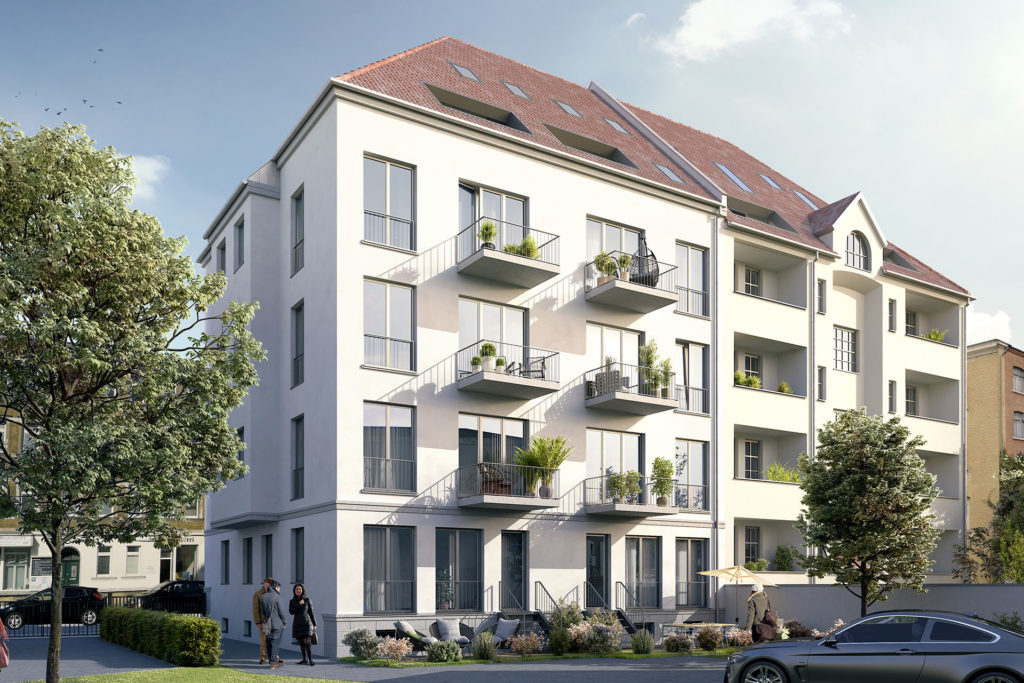
The partnership with the developer of ecologically and energetically forward-looking real estate is initially set for three seasons until June 30, 2025 and, in addition to the jersey presence, includes a variety of other advertising rights such as LED perimeter advertising on the first and second rows in the form of a so-called “PowerPack.”
“As a company headquartered in Berlin, we want to set an example and are very pleased to be present with the CG Elementum logo on the left jersey sleeve of the Hertha professionals,” explains Christoph Gröner, CEO of CG Elementum AG, adding, “We also see the partnership as an expression of our long-standing ties with Hertha BSC and great appreciation for the club, its fans and all its employees.”
Thomas E. Herrich, Managing Director of Hertha BSC, emphasizes, “In the course of the very trusting and cooperative discussions, we were able to convince CG Elementum to expand its existing commitment to Hertha BSC. This gives us a strong, reliable partner at our side who will accompany Hertha BSC’s path as a sleeve partner in the coming years.”
“It’s a great sign to start the new season with CG Elementum as our sleeve and exclusive partner,” added Thorben Jeß, Vice President Team Hertha BSC SPORTFIVE. “We’re delighted that we’ve been able to take our trusting cooperation with this long-standing partner to a new level.”

The program included free driving on the internal race track in a Porsche of choice, an experience on the off-road track and an exclusive behind-the-scenes tour of the production area. This year, all CG Elementum employees were invited to this special event, and several followed the invitation. Thanks to the round about 70 attendees, the impressive donation sum of 450,000 Euro was reached this year!
Among the invited guests was also the Saxon Minister of State for Regional Development Thomas Schmidt, Saxony’s Prime Minister and patron of this year’s WKK Charity Races Michael Kretschmer was unfortunately unable to attend, but nevertheless expressed his joy about the social commitment of the WKK:
“My thanks go to the association and its commitment to socially disadvantaged children and young people. It is good that there is such a strong commitment in our society. I have therefore gladly taken on the patronage and am pleased that this year’s donations will be used to support Ukrainian orphans in Poland and projects in Leipzig.”
This year, the donations collected will be used to support an orphanage for Ukrainian children in Poland, the Bärenherz e. V. children’s hospice in Leipzig, the Straßenkinder e. V. Leipzig and the Off Road Kids Stiftung.
The annual event has already been held for 9 years and for the third time in a row it was organized and carried out by Wirtschaft kann Kinder e. V. (WKK). As a proud sponsor, CG Elementum would like to thank all donors and sponsors who also supported the cause and the event. An equally big praise & thank you goes to the team on site, which provided a lot of fun despite the blazing sun!
The board and the team for social commitment of CG Elementum are already looking forward to the WKK Charity Race 2023.
“RB Leipzig has developed at breathtaking speed from a soccer start-up to a European great. UEFA now ranks the Leipzig team among the TOP20 and as the second best German team. It fills us with pride that we were able to accompany this path,” looks back the CEO of CG Elementum AG Christoph Gröner and adds: “Both Rasenballsport and CG Elementum continue to develop. It was time for both sides to re-evaluate the partnership. In the future, we will again focus more on the national market and regional submarkets with our company as well as the sponsoring activities. We sincerely wish RB all the best for the future. We are convinced that the DFB Cup victory was only an intermediate step in the team’s history. And of course we will remain committed to the team from the city where the cradle of our group of companies lies.”
Already on May 19, 2022, the municipal council had passed the resolution to set up or amend the existing development plan. Work on the construction of the building pit has already begun.
The site, which was previously used for agricultural purposes, is located in the immediate vicinity of the Eichinger Wäldchen recreational area in Karlsfeld and is only around 30 minutes from Munich city center. By 2025, a mix of uses comprising retail, office space, restaurants, hotels and residential units, as well as a daycare center, is to be built in five construction fields. A large proportion of this will be apartments, for which around 40 percent or around 27,000 m² of the total floor area of around 65,000 m² being created is earmarked. A good 8,600 m² of this will be for housing with income-oriented subsidies.
In the planning, construction and management of new quarters, CG Elementum consistently acts according to a CO2 zero-emission approach. Thus, the Anna Quartier is also to become a virtually climate-neutral quarter through the use of green quality criteria that go far beyond the minimum legal requirements.
“Climate protection is the essential element for us in the project development of our quarters,” emphasizes George Moutoulis, branch manager of CG Elementum AG for Stuttgart and Munich, and adds: “Green technology components such as geothermal energy, photovoltaics or the use of wastewater heat, as well as the consistent use of air-source heat pumps, are essential components of our energy management nationwide and are individually tailored to the Anna Quartier.”
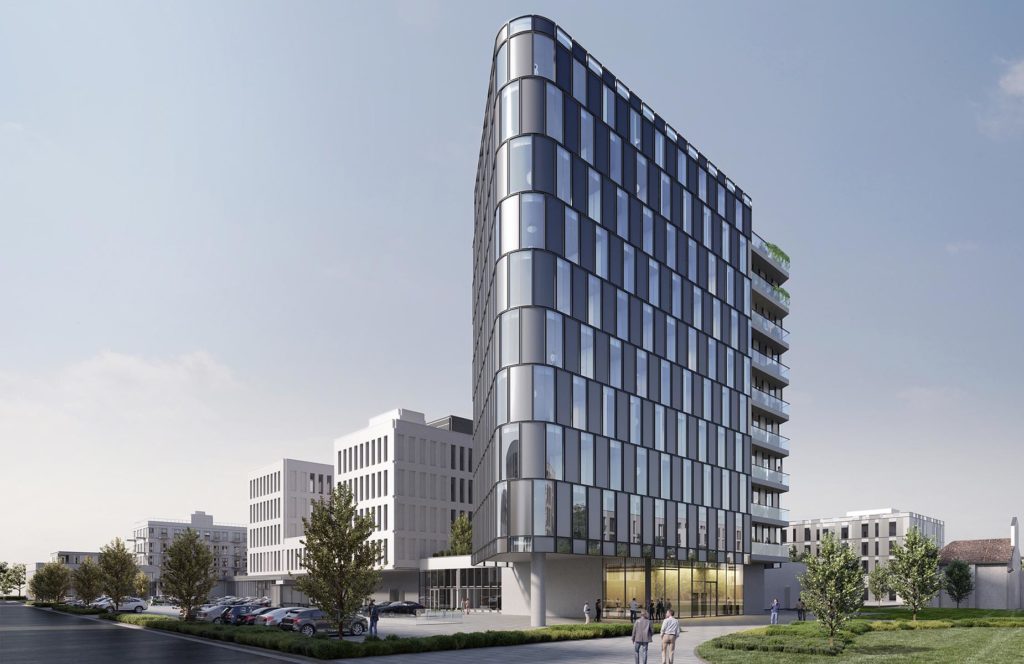
©MOW Architekten / CG Elementum 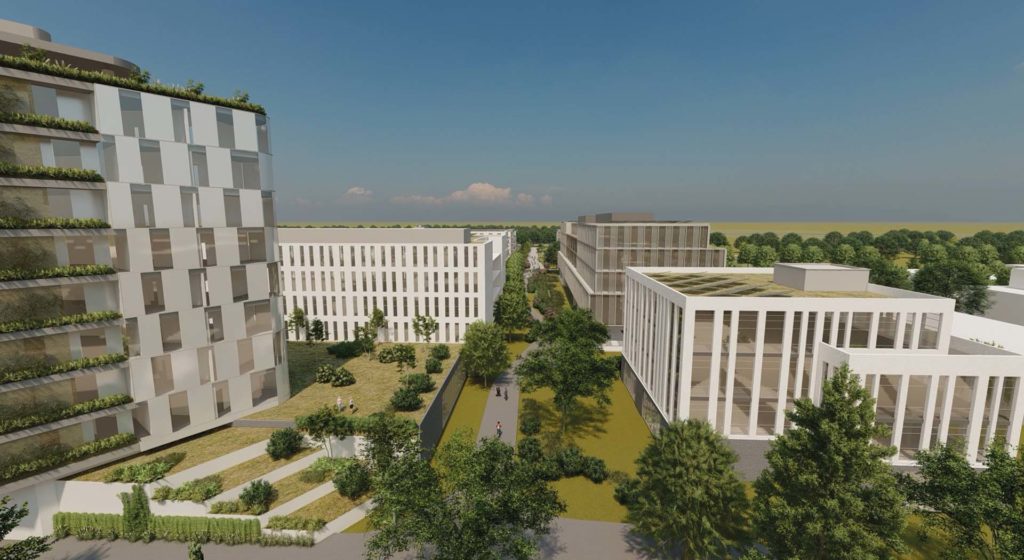
©MOW Architekten / CG Elementum 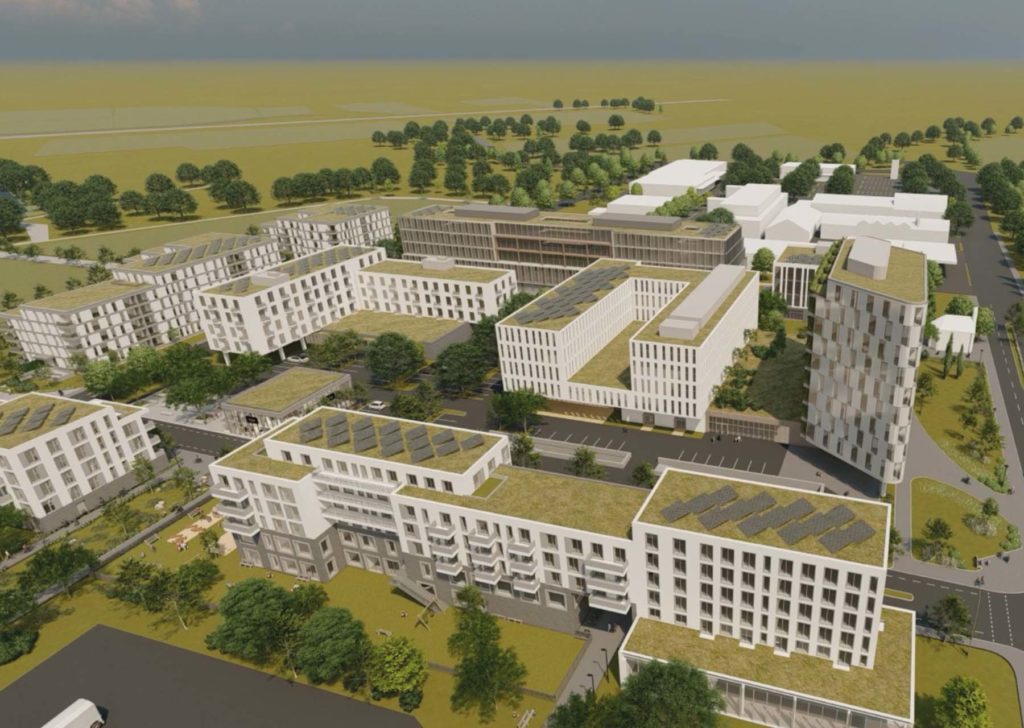
©MOW Architekten / CG Elementum
A total of over 800 apartments will be built in Karlsruhe’s Nordstadt district, as well as commercial space, offices and creative spaces.
The Chief Development Officer of CG Elementum AG Ulf Graichen said, “We are currently coordinating the urban land use planning with the city of Karlsruhe and hope to obtain building rights at the end of 2022. For the subsequent realization of such a large area, the addition of partners is customary and I am pleased that we have been able to win Quarterback Immobilien AG, a truly renowned and efficient company, for two of the construction sites. For the phase of creating building rights, the contacts for the city of Karlsruhe will remain the same as before.”
Author: Adrian Campean
On June 8, 2022, the City Council passed the necessary resolution on the preparation of the revision and extension of the development plan for the site of the former Wachendorff paper mill. The B-Plan is to be drawn up in an accelerated procedure in accordance with §13a BauGB.
With the “Wohnen an der Strunde” project in Bergisch Gladbach’s western district of Gronau, CG Elementum is planning the development of a lively and mixed urban quarter. On a total gross floor area of around 66,000 m², offers for senior living, a daycare center, an elementary school as well as commercial and residential areas will be created. Historic industrial buildings and energy-efficient new buildings will then complement each other there.
“With the adoption of the zoning resolution, we have reached a milestone and can begin to profitably implement our sustainability concept for the site,” explains Marcus Zischg, member of the Management Board (CTO, CSO) of CG Elementum and adds: “In addition to the use of sustainable materials for the building structure, an almost CO2-free energy supply is planned for the new buildings. To this end, photovoltaic surfaces totaling around 18,500 m² are to be installed on the roofs of the buildings, among other things.”
The preliminary landscaping work and the demolition of the first buildings will begin before the end of summer 2022. In the coming year 2023, the existing buildings will be revitalized, while construction is scheduled to begin in the summer of 2023 on the north and east sites and in the winter of 2023 on the south and west sites. The first tenants and users are scheduled to move in during the winter of 2025/2026.
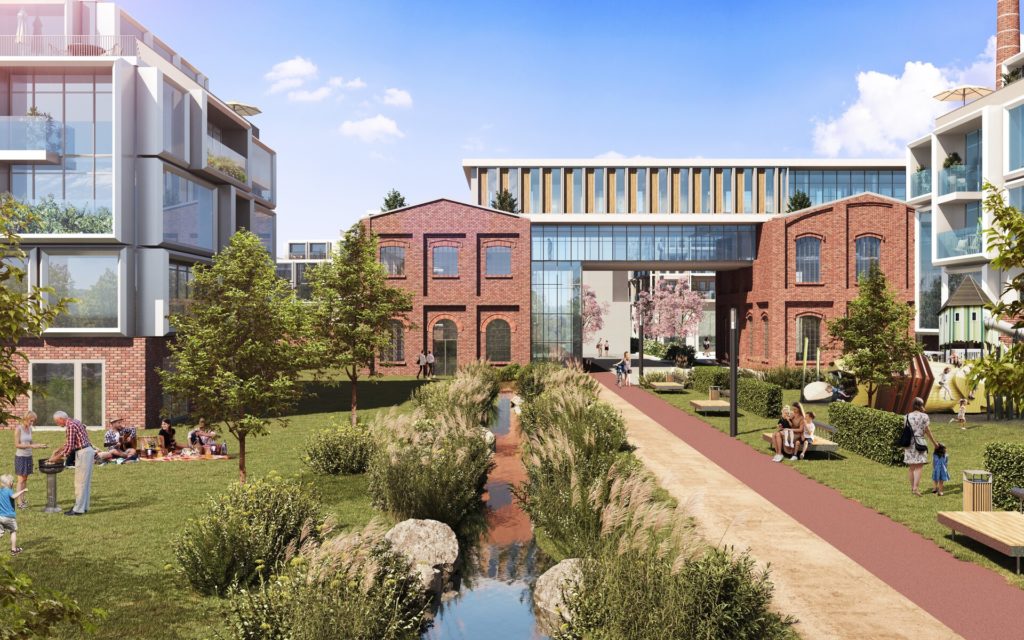
Copyright: CZ Visuals / CG Elementum 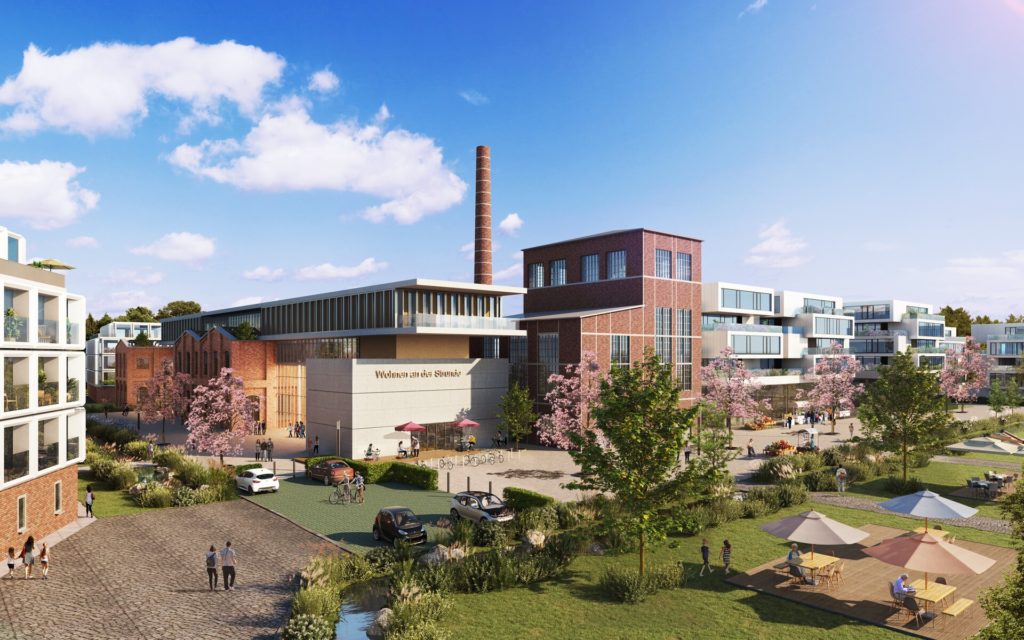
Copyright: CZ Visuals / CG Elementum
The decision has now been officially announced and thus comes into force. This means that building applications can now be submitted for the approximately 10-hectare site with listed industrial buildings.
For the OTTO Quarter, which will also be an IBA network project within the International Building Exhibition 2027 StadtRegion Stuttgart (IBA’27), sustainability and future viability are at the heart of the planning, as they are for all CG Elementum projects. The existing buildings are not only to be ecologically revitalized, but also supplemented by new buildings that will still meet the demands of urban and climate-friendly living decades from now. The energy concept includes a central energy, water and mobility infrastructure.
At around 96,000 m², a large part of the total floor area of around 131,000 m² being created is earmarked for commercial use. A colorful mix of fitness, gastronomy, services, office, shopping opportunities, small-scale production, culture and hotel business are to contribute to the creation of a lively, cross-generational and community-oriented urban district. Green zones, cafés and playgrounds are also intended to give the quarter a campus character and ensure a high quality of stay. In addition to the commercial areas, around 30,000 m² of residential space can be created, including both high-quality apartments and subsidized housing. In addition, approximately 12,000m² of floor space is planned for a parking garage.
“I am very pleased with the decision of the municipality, and thank the team in the city administration for the constructive and reliable cooperation. Now we can take the next steps in the OTTO Quarter. This includes in particular the implementation of our climate-friendly energy concept,” says George Moutoulis, branch manager of CG Elementum for the Stuttgart and Munich sites. Using proven and innovative technologies, CG Elementum creates an individual energy design for each location. George Moutoulis says, “For the Wendlingen site, we’re relying on a wide range of GreenTech to create a nearly CO2-neutral neighborhood.” The use of geothermal energy will be a key component here. Heat pumps, PV systems and wastewater heat exchangers as well as resource-saving building materials and innovative building envelopes round off the energy concept.
After completion of the preliminary work, construction work is expected to start on the first construction phase in early 2023.
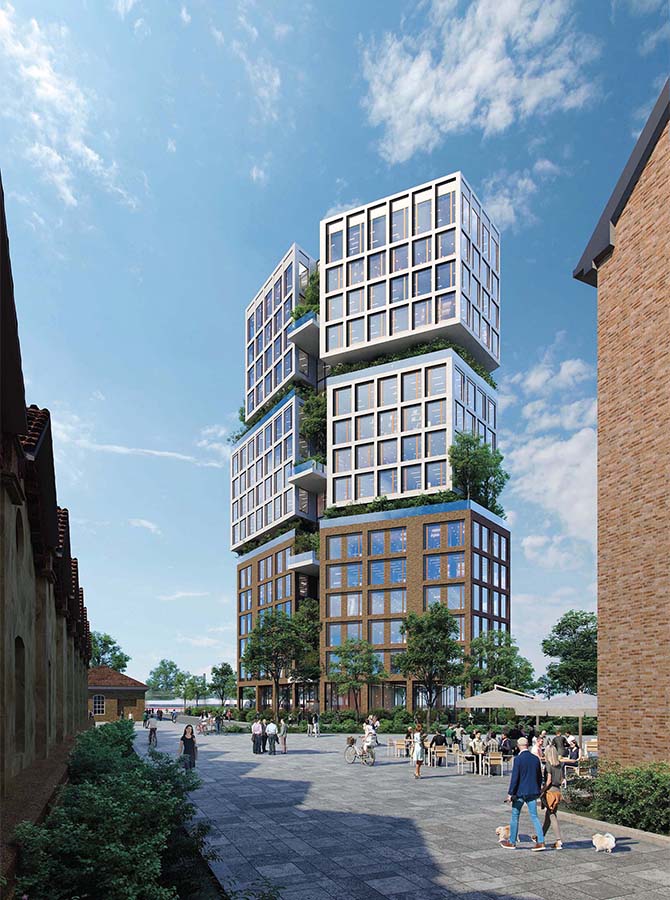
NOOKTA Architekturvisualisierungen GbR / CG Elementum AG 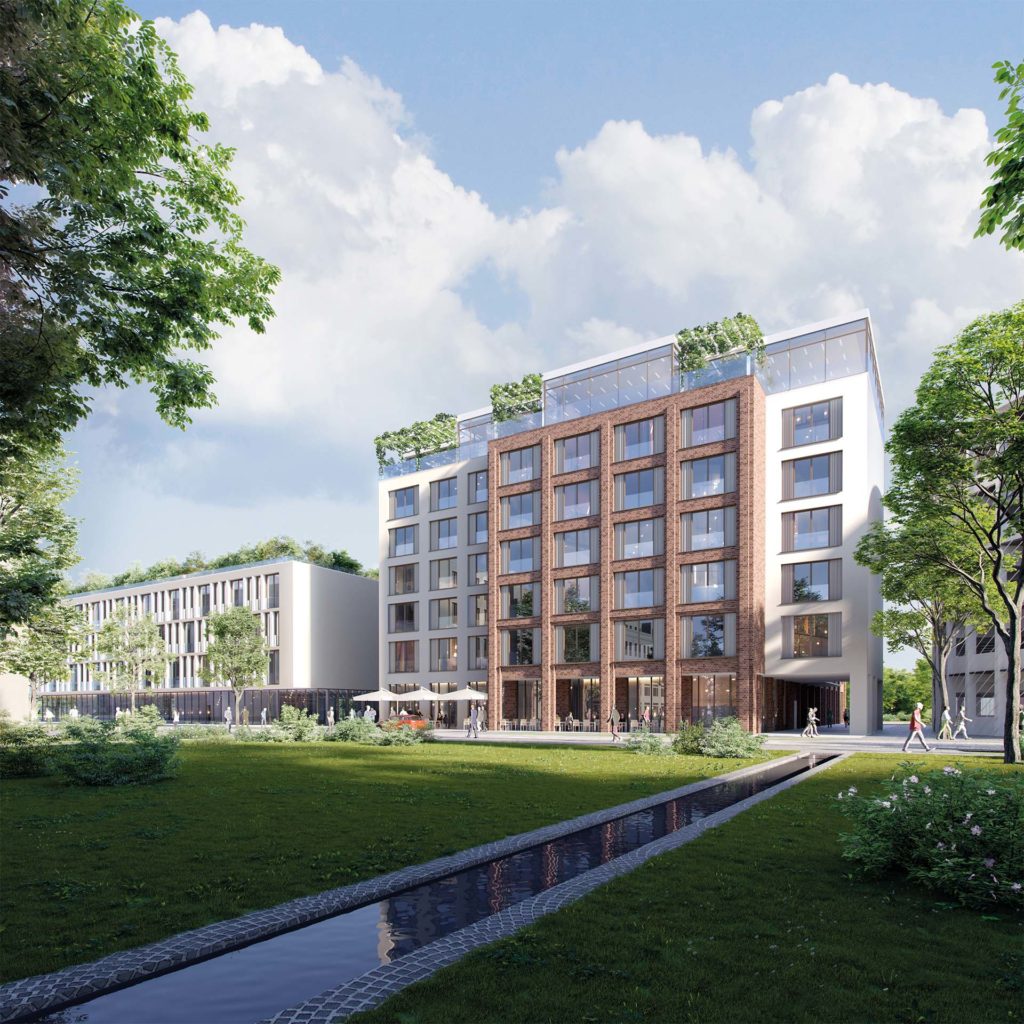
NOOKTA Architekturvisualisierungen GbR / CG Elementum AG
Overall, talks were held at several locations to accommodate several hundred refugees through temporary conversion or interim use of the company’s existing properties. At the Karlsruhe location, a corresponding lease was signed at short notice. In a record time of six weeks, a former hotel at the Karlsruhe train station was converted into refugee accommodation for around 100 people. Lead-managed by the Frankfurt branch of CG Elementum under the direction of Edyta Wünsch, the building was handed over for use on June 1, 2022.
At the Leipzig site, the company is in talks with the city for additional refugee accommodation. In Berlin, the state office for refugee affairs there has decided against the offered property.
Already at the beginning of March, the Group’s driving service transported medicines worth almost 12,000 euros to the Polish-Ukrainian border, from where they were forwarded to two hospitals in Kiev. Aktion LeipzigHilft, which organizes aid transports on a voluntary basis, was provided with two buses for trips to Ukraine to transport food, medicines and refugees. The transport of relief goods by a church organization from Leipzig was financially supported.
In addition, 18 people could be accommodated in 5 apartments in Berlin, which were furnished and equipped at short notice. The GRONERs hostel in Leipzig, which belongs to the group of companies, provided 4 multi-bed rooms for quick accommodation.
“We use our possibilities everywhere where we can achieve something directly for the people from Ukraine. This involves us as a company, but it also involves many employees who are committed to helping, and we support them,” commented board member Jessica Seja on the commitment. And the help continues: CG Elementum will continue to provide targeted support for projects and initiatives that help refugees or war victims in Ukraine.
Picture: (Group photo from left: I. Jelinic, P. Tonlorenzi, City of Karlsruhe, Social and Youth Authority, Coordination Office for Repatriates and Refugees, Management, C. Schindler, City of Karlsruhe, Social and Youth Authority, E. Wünsch, D. Leitner (Daniel Leitner Company), J. Dahlinger, F. Schwenke, City of Karlsruhe, Social and Youth Authority, Coordination Office for Repatriates and Refugees.

Jessica Seja, member of the Management Board of CG Elementum AG responsible for human resources, said: “We are currently experiencing a significant price increase in almost all areas of life and business. The reasons for this are varied and complex, but nevertheless this development affects us all. Alongside the pandemic and a war of aggression in our vicinity, fear of inflation is causing additional uncertainty among many people. We will not leave our employees to cope with this and will play our part in offsetting this inflationary effect. For the management of the Group, this is part of its corporate responsibility.”
In concrete terms, this means paying a monthly inflation compensation for lower to medium salaries that are affected to a greater extent by inflation. This compensation will correspond to a salary or wage increase of between 4 and 8 percent; in addition, a one-time payment will be made in May. The scale is based on the level of income. Apprentices, dual students and student trainees are also covered by the measures.
91st Derby with CG Elementum Championship
CG Elementum will be present with a booth (No. 3) on all days of the event. The company is eagerly awaiting the new so-called “CG Elementum Championat”. This international CSI5* jumping competition with jump-off will take place on Thursday, May 26, 2022 at 2:30 pm in Derby Park.
CG Elementum is connected to Hamburg through the Bahrenfelder Carrée. In the heart of Altona, the company is developing a new residential ensemble with 289 units, 60 of which are subsidized and built throughout to the energy-efficient KfW-55 standard using ecological building materials. Bahrenfelder Carrée is scheduled for completion in the first half of 2023. It exemplifies the digital future of construction as the company’s BIM pilot project.
Picture: (Ronald Pofalla, Managing Director of Gröner Group GmbH, explained CG Elementum AG’s motivation for sponsoring the event at the press conference of the German Show Jumping and Dressage Derby 2022 in Hamburg on May 24, 2022)
Picture
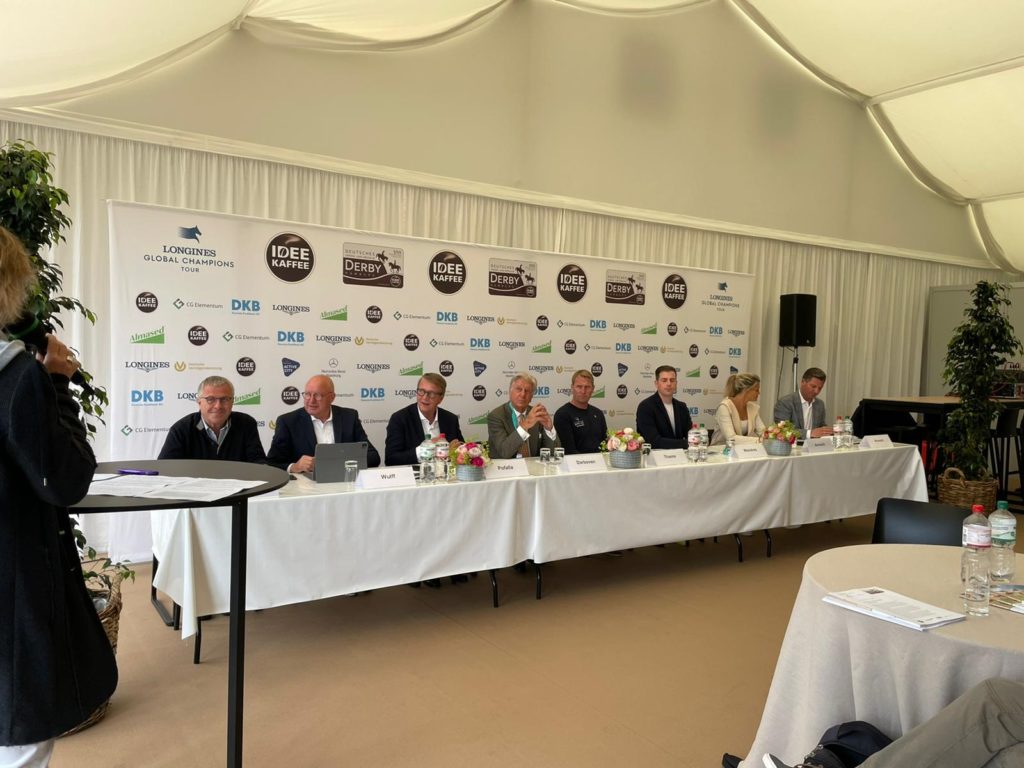
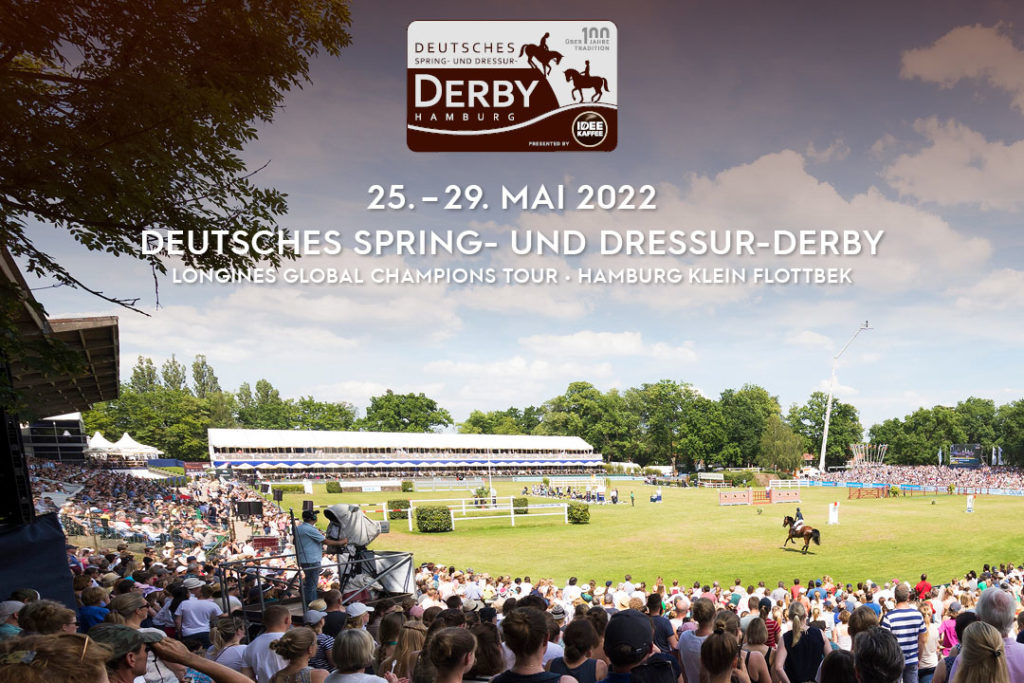
In addition to a speech by Vera Gäde-Butzlaff, chairwoman of the board of the Bürgerstiftung Berlin, the governing mayor of Berlin and patron of the event, Franziska Giffey, and many othewere also on stage that evening.
The Bürgerstiftung Berlin was founded in 1999 with the aim of providing long-term support for children, young parents and elderly people in senior citizens’ homes with the help of various projects. The foundation and its 500 volunteers work closely with schools, retirement homes, orphanages and health authorities. More than 10,000 children in 140 schools and daycare centers have already benefited from this needs-oriented project work.
“Good coexistence cannot be created by the state. We need people who get involved. That is the basic idea behind the community foundation.” Explains Wolfgang Thierse, patron of the Bürgerstiftung Berlin and former President of the Bundestag.
During the various courses of the dinner, impressive art pieces were auctioned off in a loud auction. Initially, about 260,000 euros were raised throughout the evening, and this sum was rounded up to 300,000 euros in total by CG Elementum through Christoph Gröner, who was in attendance.
We are a proud partner and sponsor of the Bürgerstiftung Berlin and this wonderful charity dinner. We are already looking forward to the next Art Dinner in 2024.
The necessary demolition and gutting work began as early as fall 2021. By the end of 2023, almost 77 apartments will be created in the former commercial block. The first floor will offer 800 m² of space for modern commercial units. Munich’s municipal savings bank will continue to be represented at the site with a modern branch. In addition, 134 underground parking spaces and ten outdoor parking spaces for cars will be created in the course of the redevelopment.
“We are looking forward to starting construction work soon,” says George Moutoulis, branch manager of CG Elementum AG in Munich and Stuttgart. “The Johanneskirchen district offers many advantages with a heterogeneous mix of residential, office space, green areas as well as a very good local supply and a well-developed public transport system and a fast connection to Munich’s city center. With our “An den Winterlinden” project, we want to contribute to further enhancing the quality of life here, and to creating urgently needed living space in Munich.”
Bilder: Robert Lohse Photographie
Das siebengeschossige Gebäude trägt den Projektnamen „A30“ und wird mit insgesamt 3.386 m² Mietfläche im Erdgeschoss ca. 345 m² Gewerbeflächen bietet, etwa für einen Spätverkauf, ein Café oder eine Büroeinheit, während in den oberen Etagen moderne Wohnungen entstehen. Fahrrad- und PKW-Stellplätze werden im gegenüberliegenden geplanten Parkhaus in der Weißenfelser Straße 86-88 entstehen.
Ulf Graichen, Entwicklungsvorstand der CG Elementum AG, sagte während des Richtfestes: „Das Gebiet um den Plagwitzer Bahnhof entwickelt sich seit Jahren enorm. Von der Lützner bis zur Antonienstraße, von der Klingenstraße bis zur Zeignerallee sind überall moderne Gewerbeflächen, interessante Wohnungen, kulturelle und gastronomische Einrichtungen entstanden. Mit der Sanierung und Umwandlung des A30 zu einem Wohngebäude knüpfen wir an diese Entwicklung an, schaffen Wohnraum nach modernsten ökologischen und energetischen Standards, und beleben mit Angeboten im Erdgeschoss zudem den Mikrostandort.“
Die CG Elementum AG beteiligt sich mit den Plagwitzer Höfen seit über 10 Jahren an einer der größten Quartiersentwicklungen in Leipzig. Direkt im Stadtteil Plagwitz westlich des Leipziger Zentrums erstrecken sich über 160 Hektar historische Gewerbehöfe, deren wesentlicher Bestandteil die Plagwitzer Höfe sind. Auf rund 130.000 m² vermietbarer Fläche verbindet sich dort Wohnnutzung mit gewerblicher Nutzung – Arbeiten, Wohnen, Freizeit, Mobilität und Grünflächen ergänzen sich auf intelligente Weise.
Bilder: Robert Lohse Photographie
This year, the Italian opera “Nabucco” by Giuseppe Verde will be performed at the historic setting between the cathedral and the Severi Church. The children’s opera also presents “Petterson and Findus and the Rooster in the Basket”. An opera adaptation based on the classic children’s book by Sven Nordqvist.
“After the last two years, in which cultural events in particular were repeatedly affected by closures, supporting the DomStufen Festival is a special affair of the heart for us. Hardly any other event manages to unite art and culture lovers from the entire region and even attract international guests,” comments Ulf Graichen (CDO), CEO CG Elementum, on the commitment.
CG Elementum sees itself as having close ties with the city of Erfurt and the entire region. The company realizes real estate projects there with which it contributes to the preservation of listed buildings and the development of the city. CG Elementum is currently revitalizing the former TA high-rise – the future Erfurt Chronicle – on the edge of the old town and the former Braugold site.
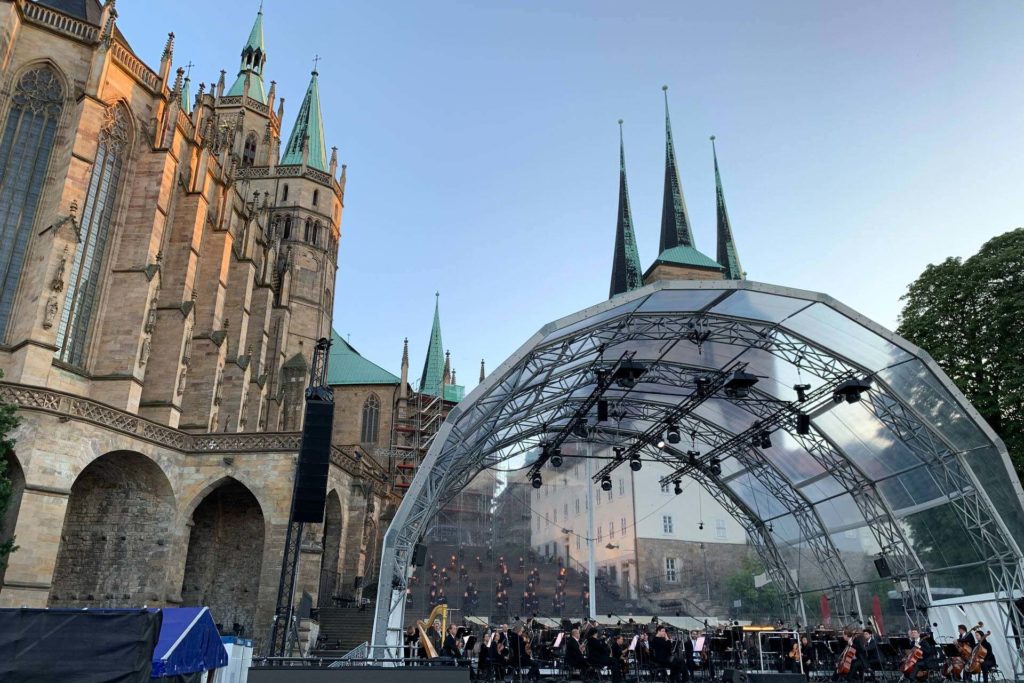
Premiere with CG Elementum Speed Cup
“The staging of the top-class FEI World Cup Finals during the show promises exciting equestrian moments. We are especially looking forward to the CG Elementum Speed Cup, which is a fringe competition in CSI*** show jumping.” The time jumping competition will take place on April 8, 2022, at 9:15 p.m. at the Leipzig Exhibition Center and will also be shown internationally on television.
PARTNER PFERD and CG Elementum each look back on long traditions. While the trade fair with integrated equestrian events is taking place for the 24th time this year, CG Elementum has more than 25 years of expertise in the real estate sector. For the company, tradition is an elementary part of its self-image. The revitalization of brownfield sites in particular often involves preserving old building fabric. Whether old or new buildings: At CG Elementum, sustainable energy concepts and green technology are standard. For example, since 2017 the company has been developing the Mariannen Campus in Leipzig, formerly the world’s largest postal train station. Here, around 2,000 photovoltaic modules are being mounted on the roof arches of the former station concourse in order to move closer to the goal of a climate-neutral neighborhood. The use of electromobility with corresponding charging points is a central component of the concept. In addition, tests are being carried out to determine whether and how extensively geothermal energy can be used.
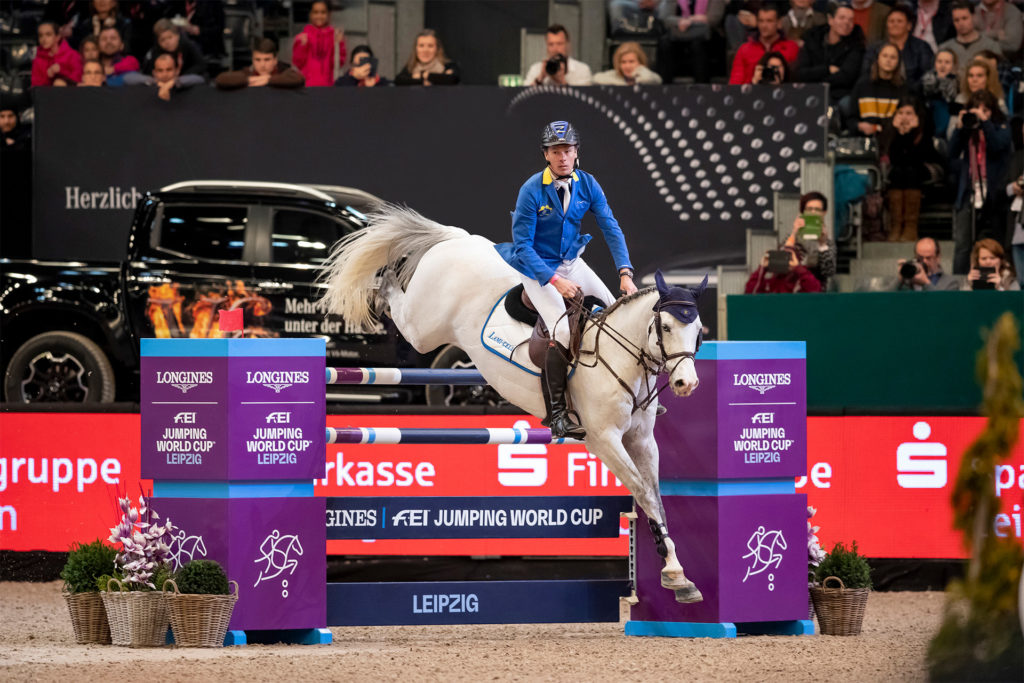
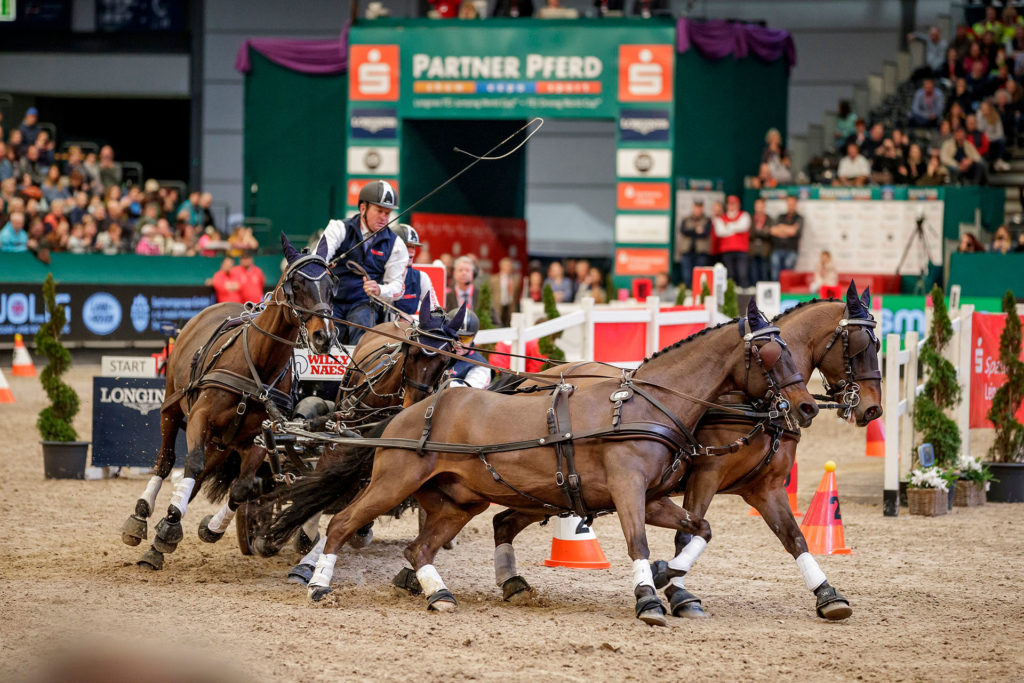
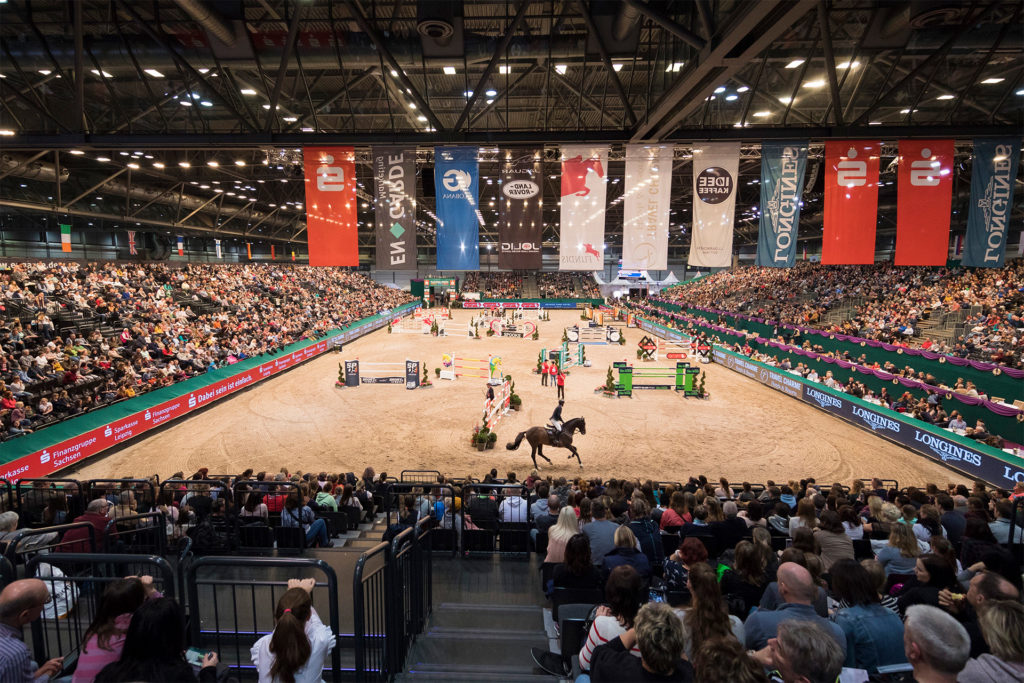
The Fraunhofer Center for International Management and Knowledge Economy IMW will use around 4,000 square meters of the modern office space behind the historic façade from 2023, with a further 3,000 square meters leased to a user not yet named. A preparation kitchen is being built on around 1,000 square meters by Gröner Restaurant GmbH, which will also provide supplies for employees at the Mariannen Campus in the future in a modern cafeteria. Relevant space has thus already been leased, although the leasing process has only recently begun.
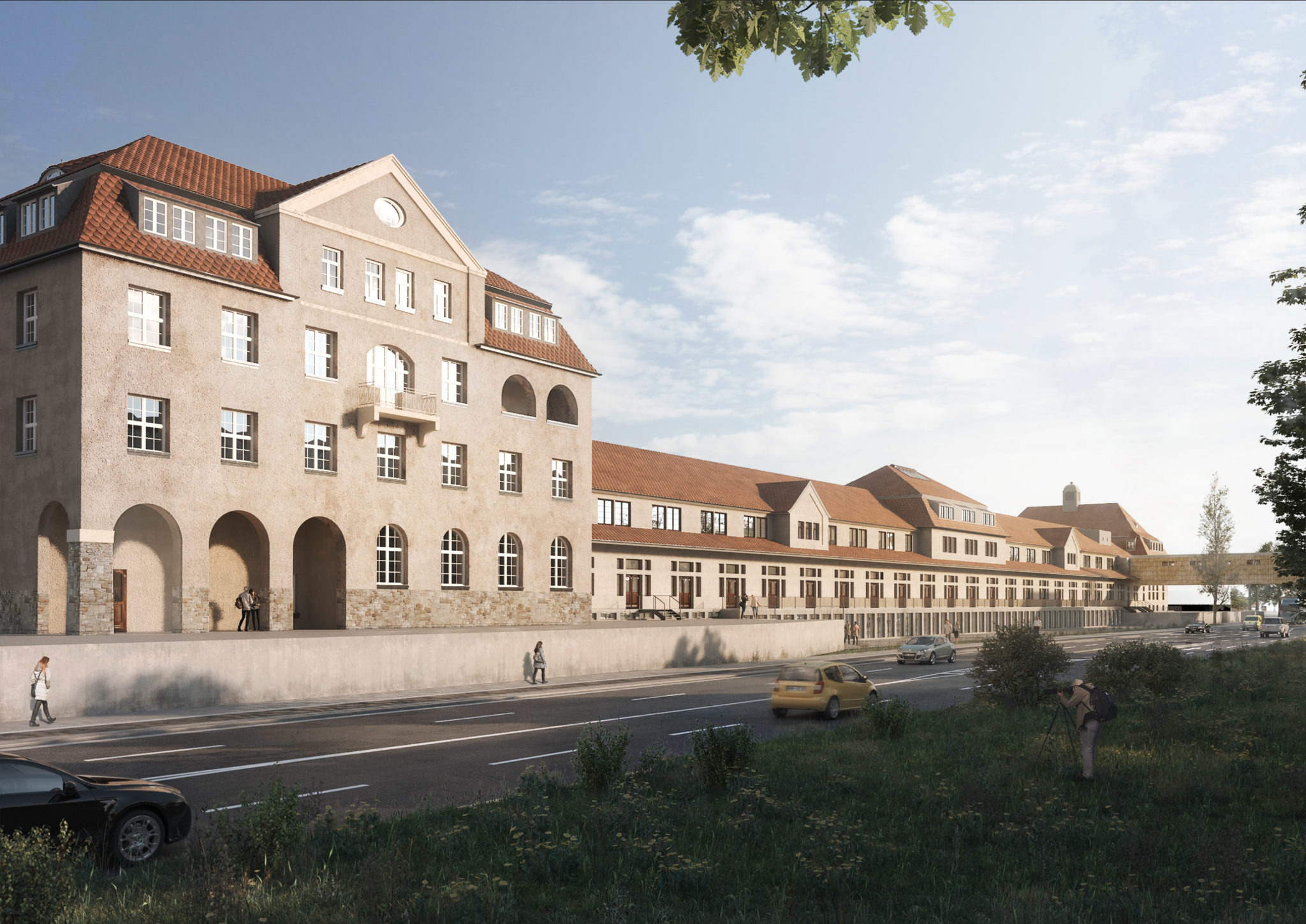
The buildings, which have been vacant since 1994, are being extensively refurbished by CG Elementum and converted into light-flooded commercial and workshop space with extensive glazing. In addition, contemporary storage space is being created in the basements.
Sustainable energy concepts and green technology are standard at CG Elementum: “At the Mariannen Campus, too, we are striving for an innovative mix of technologies,” says Ulf Graichen, Chief Development Officer of CG Elementum AG. “For example, around 2,000 photovoltaic modules are being installed on the roof arches of the station concourse in order to move ever closer to our goal of a climate-neutral neighborhood. Tests are also underway to determine whether and how extensively we can use geothermal energy. If all goes well, we will drill more than 200 geothermal wells. The use of electromobility with appropriate charging points on site is planned anyway.”
The Gröner Family Office was able to provide 5 apartments in Berlin for Ukrainian families, and in Leipzig four shared rooms have already been made available at GRONERS. In addition, the employees can participate in the relief efforts at any time, for example, a donation account has been set up for this purpose. The donations so far have helped to equip the apartments in Berlin.
In addition, we were able to establish contact with a children’s hospital in Kiev, which urgently needs medication and various other medical items. These will be ordered promptly and brought to the border.
We hope for a quick and peaceful end of the war.
The Gröner Group thus follows the efforts of the German government and the EU to impede the economic activities of Russia on the territory of the European Union.
Christoph Gröner thanked him personally for his cooperation: “I make it clear that I continue to value him as a person and would like to refer in particular to his services as Chancellor of the Federal Republic of Germany.” Former Chancellor Gerhard Schröder had been a consultant for the Group since June 2021 and also supported the charity “Wirtschaft kann Kinder”.
Among them were former German Chancellor Gerhard Schröder accompanied by his wife So-Yeon Schröder-Kim, former Federal Minister Ronald Pofalla, former Federal Minister Andreas Scheuer MdB, Professor Dr. h.c. Walter Smerling and Sabine Nallinger, Chairman of the “KlimaWirtschaft” Foundation.
After Christoph Gröner, CEO of CG Elementum AG, opened the New Year’s reception in the “Kunsthalle Berlin” with a welcoming speech, he handed over the floor to Sabine Nallinger. In her speech, she vividly described the importance of Germany as a pioneer and blueprint for climate-neutral business. She explained the opportunities and challenges for companies and emphasized the relevance of the construction sector for achieving the climate targets. In doing so, she named several companies in the sector as pioneers of climate-neutral innovations. CG Elementum has also been acting according to the “CO² zero emission” approach for some time. This is the reason why only green technology and sustainable materials are used in its projects.
Further speeches were given by former German Chancellor Gerhard Schröder and Curator Professor Dr. h.c. Walter Smerling. Afterwards, the guests of the New Year’s reception of CG Elementum had the opportunity to participate in a live performance and guided tours through the exhibition of Bernar Venet in the “Kunsthalle Berlin”. This is open to visitors until May 30 in Hangar 2 and 3 of the former Tempelhof Airport.
The festive holiday has inspired many activities over the last years, which our colleagues always enjoyed to take part in. This year again, various internal Christmas initiatives were organized and implemented in all our branches. At each location we supported charitable organizations and were very pleased with the enthusiasm and commitment of everyone, because it‘s only thanks to their support that these activities could be realized. We would like to thank everyone who helped out and brought joy to so many people this holiday season.
We’d like to wish everyone a merry Christmas!

Berlin 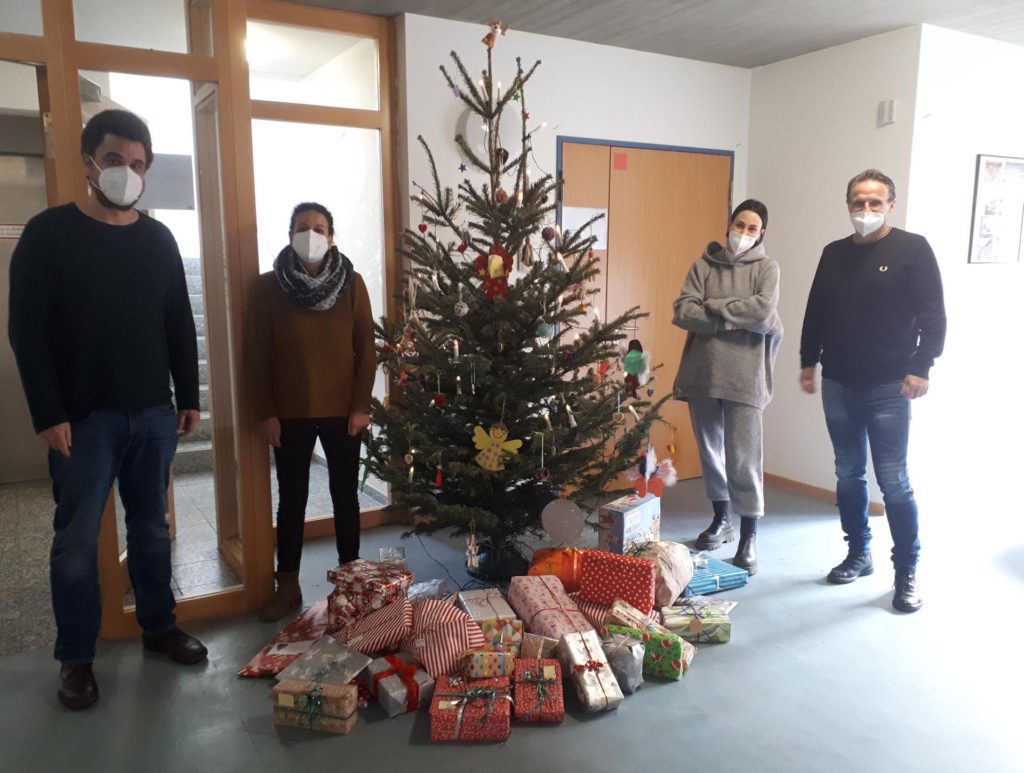
Karlsruhe 
Koblenz 
München 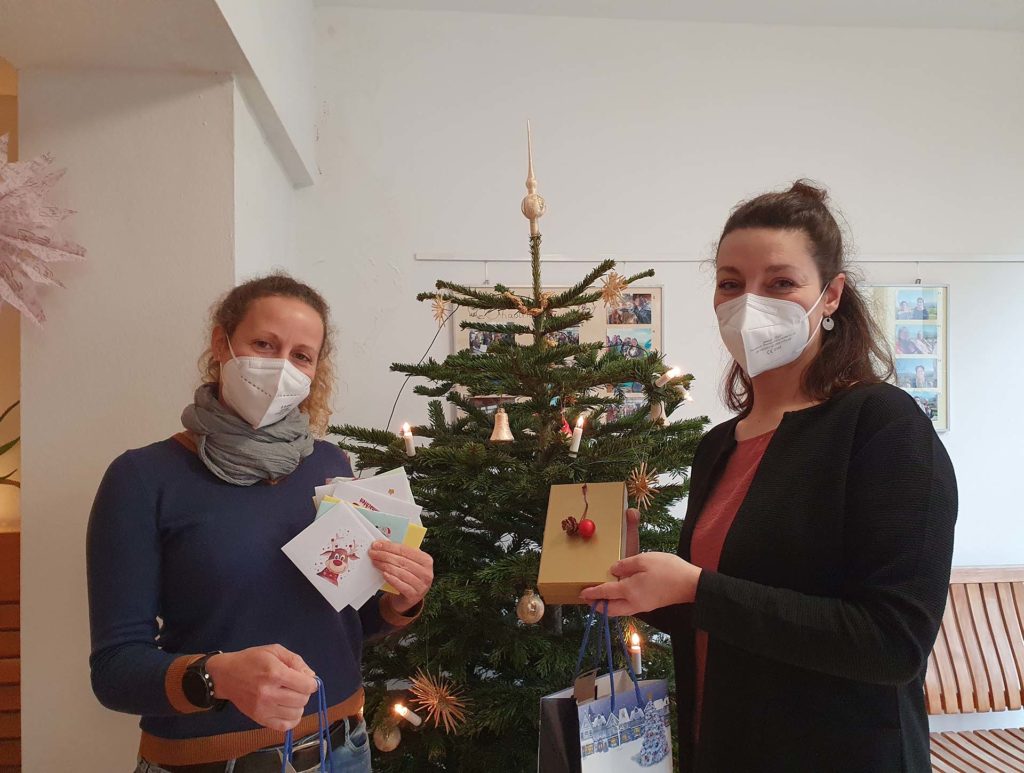
München 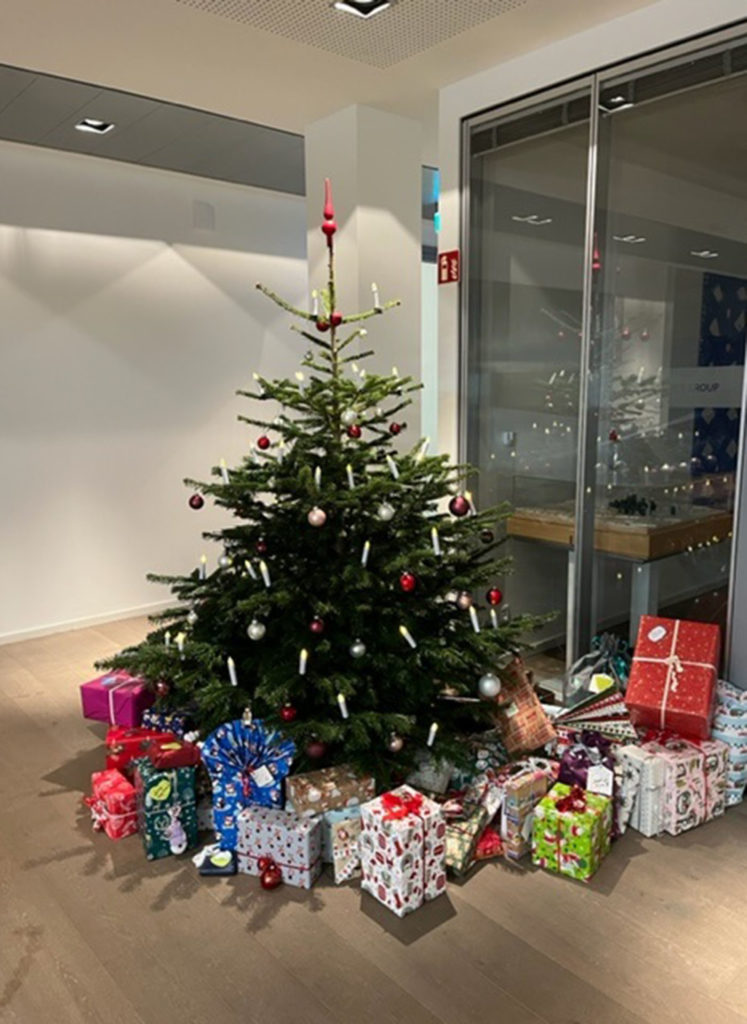
Leipzig

Jessica Seja will be responsible for Human Resources, Legal Affairs, Marketing, Internal Services and Social Commitment on the Executive Board and will continue to expand the departments structurally. She previously headed the marketing department as an authorized signatory of CG Elementum. Jessica Seja worked for Investitionsbank Berlin (IBB) for around 17 years before joining the group.
Marcus Zischg, who has been in charge of CG Elementum’s branches in Cologne and Koblenz since 2020, is responsible for technology, innovation/digitalization, prefabrication, research and sustainability. Marcus Zischg already built up HGW Bauträger GmbH in Koblenz into one of the leading property developers in the region as managing partner during his studies.
Effective December 31, 2021, Frank Preuss will step down from the Management Board of CG Elementum.
Christoph Gröner, Chairman of the Management Board of CG Elementum, said, “I am pleased with the decision of the Supervisory Board, because with the appointment of the new positions, the expertise in central functions will once again be significantly strengthened. Moreover, both colleagues come from within the company and thus prove the possibility to rise up to the Management Board through dedicated work.”
He thanked his former colleague on the Executive Board: “Frank Preuss has played a decisive role in shaping our company over the last two years. He was a key driver in the areas of Building Information Modeling (BIM) and prefabrication. Our team benefited from this even before his time on the Executive Board, and I am all the more pleased that he will continue to accompany us in the further implementation of our prefabrication strategy.”
The responsibilities of the now five-member Executive Board of CG Elementum will be structured as follows in the future:
- Corporate Development, Group Planning and Strategy, Investor Relations: Christoph Gröner (CEO)
- Technology, Innovation/Digitalization, Prefabrication, Research and Sustainability: Marcus Zischg (CTO/CSO)
- Project Development, Construction and Engineering, Real Estate Management: Ulf Graichen (CDO)
- Finance/Controlling/Taxes, Structures/Processes/IT, Compliance/Data Privacy: Martin A. Müller (CFO/CIO)
- Human Resources, Legal, Marketing, Internal Services, Social Commitment: Jessica Seja (CAO)
Jessica Seja, Marcus Zischg and Martin A. Müller receive procuration in the parent company of CG Elementum, the Gröner Group.
George Moutoulis, as a deserving and long-standing branch manager in Stuttgart and Munich and thus responsible for all project developments of CG Elementum in Württemberg and Bavaria, also assumes new responsibilities: He will become an authorized signatory of Gröner Group effective January 1, 2022.
Christoph Gröner: “This adjusted structure of responsibilities makes our dynamically growing company even more powerful. I am convinced that with the addition to the Management Board, we will be able to meet the constantly growing challenges of the real estate industry even better. The focus here is on green technology, which we are pursuing just as systematically as the digitization of planning and construction processes by means of BIM and the subsequent use of prefabrication. This is the only way we can meet the high standards of sustainable real estate development.”
The facility takes care of 96 kids every day, including children who need integrative support. Here, the children can develop playfully, give free rein to their imagination and build social skills. The donated items hopefully support the kids in those areas, therefore giving the toys another purpose. It’s great that not only the kids have something to play with at daycare but the donation of toys is a
sustainable and conscious option to repurpose items in such great condition. Children outgrow their toys too fast, which is why everybody appreciated this initiative so much.
While we were collecting the donations, our office turned into a storage room or rather a playground, where our colleagues found their inner child again. Especially the kids’ skateboard and doll house caused a lot of excitement. We had to defend them with great effort up until the handover. Among the donated items were also books, various board games and a Bobby-Car which will hopefully bring a lot of joy and fun to the children of the day care center for a long time.
We are appreciate that our colleagues are so committed and even approach us to offer their help. We would like to thank all those who so actively support these activities time and time again.
An incredible sum, with which the WKK will support numerous important projects and come closer to the common goal of equal opportunities four youths in Germany. We are thrilled by the willingness of the invited guests to donate, who were welcomed under 2G regulations at the Grand Hyatt Berlin. With these donations, the WKK supports three different projects, all of which strive for one thing: To promote the future prospects of young people. These include the Safe-Hub project planned by the non-profit organization AMANDLA together with the Oliver Kahn Stiftung in Berlin-Wedding, the Off Road Kids Stiftung and 25 different Berlin children’s and youth facilities.
Fundraising events like this are very important, as they provide a place to meet and exchange ideas. For example, guests from the worlds of business, sports, politics and the arts came together at the WKK Gala to support the goal of equal opportunities for children in Germany. Special guests included Oliver Kahn, Chairman of the Board of FC Bayern Munich, French artist Bernar Venet and comedian Bülent Ceylan. Musical performances were given by Stefanie Heinzmann, Jan Delay and Tony Hadley, the former lead singer of Spandau Ballet. In addition, stories were shared about children and young people growing up with various obstacles in life. While it’s not always easy to address these issues, it’s all the more important to give them the attention they deserve.
In addition to the 1 million euros raised for Wirtschaft kann Kinder e. V. and their projects, Christoph Gröner presented an additional check for one million euros to Oliver Kahn and Jakob Schlichtig for the AMANDLA and Oliver Kahn Foundation Safe-Hub education and sports campus that evening. This donation was already announced at the Berlin Summer Festival and now sealed with the official handover of the check.
Many thanks to the Team WKK for this exciting evening. We are proud of this this partnership. Furthermore we would like to thank all guests, artists and supporters.
After the property lay fallow for many years with several changes of ownership, living space for all generations and lifestyles is finally being created.
CG Elementum is thus developing a total of around 16,600 m² of residential space at the intersection of Bahrenfelder Chaussee and Von-Sauer-Strasse, which will be supplemented by five commercial units in the two components with just under 2,700 m². The commercial tenants not only ensure short distances for the procurement of everyday goods, but also enhance the overall quality of life in the surrounding area. A green inner courtyard with a high quality of stay and 176 parking spaces sensibly complement the residential and commercial areas. ZECH Bau, as the general contractor, is largely responsible for the targeted constructional implementation of the project.
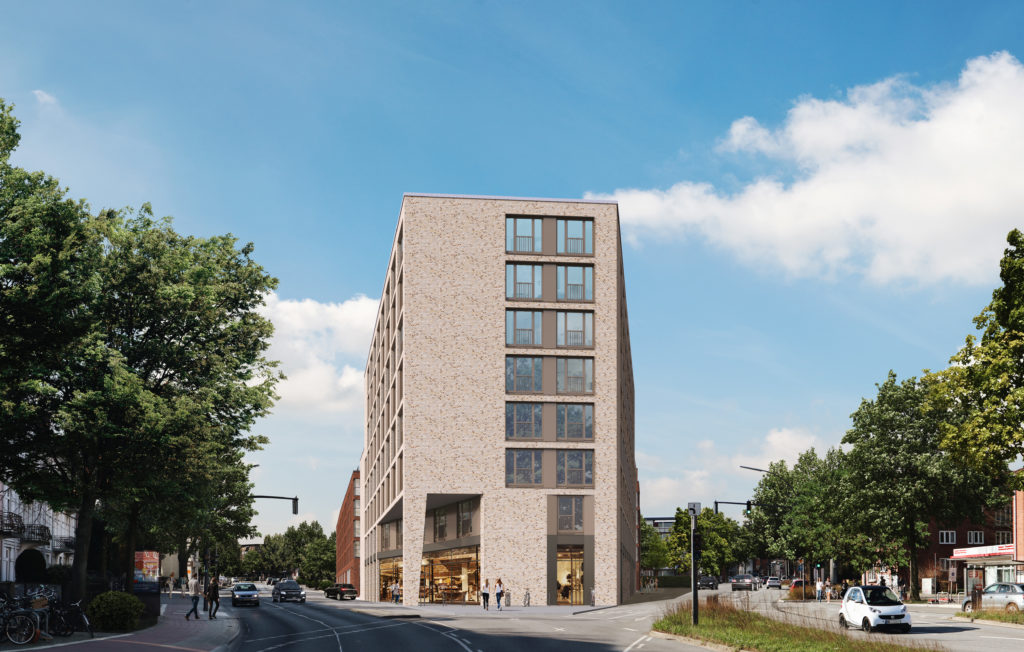
The execution planning of this mixed residential ensemble was carried out entirely via Building Information Modeling, or BIM for short. The project thus shows the way of the construction industry into digitalization in a very exemplary way. Christoph Gröner, CEO of CG Elementum, said on the sidelines of the topping-out ceremony: “I am really pleased that the apartments are now ready and that we can make our contribution to Hamburg’s housing construction goals. Land like this is far too often traded speculatively instead of being built on. This does not help the people who are looking for housing. We real estate developers have a big responsibility here.”
Christoph Gröner adds, “Sustainable housing requires a triad of modern and digital planning, the use of sustainable building materials and well thought-out energy planning, so that buildings can still be inhabited and used ecologically and inexpensively in 20 or 30 years. With experienced partners such as ZECH Bau and also JMJ architects, we have managed to realize the Bahrenfelder Carrée as a pilot project for these approaches in Hamburg’s west and look forward to new projects.”
Das OThe property will be built throughout to the energy-efficient KfW-55 standard with central ventilation using ecological building materials, and is scheduled for completion in 2022. Leasing has already begun for the partially dismantled Building 2. Edeka will be the tenant of a large part of the commercial space. The new owner of Bahrenfelder Carrée has also been known since August 2021: Catella is taking over the building ensemble as part of its European Residential Fund III (CER III).
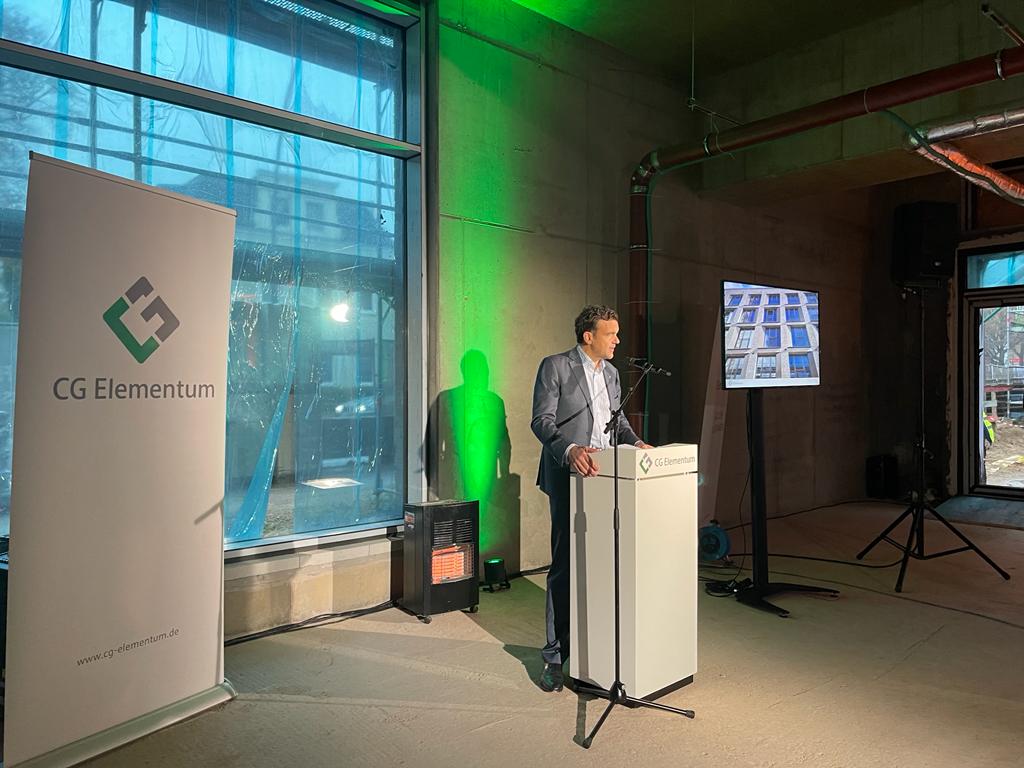
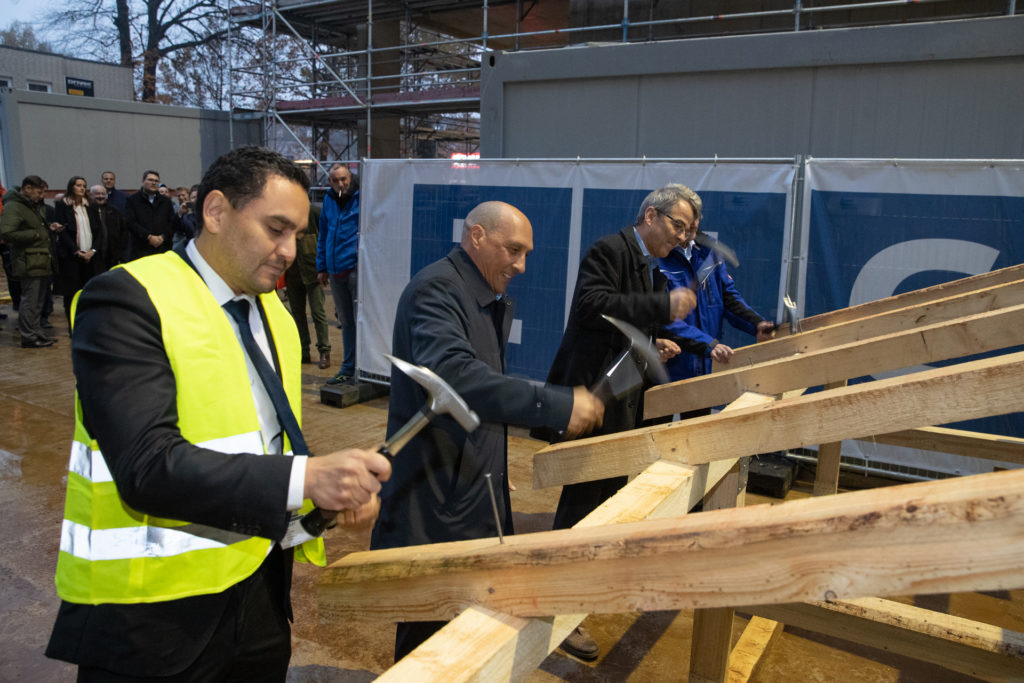

The goal of the day was not only to have a good time together, but also to realize what is possible when each of us contributes to creating equal opportunities. In the course of our summer party, we collected donations for the construction of the first European Safe-Hub in Berlin-Wedding. This project by AMANDLA gGmbH and Oliver Kahn Stiftung will combine an innovative sports and education campus with a focus on physical and mental health, early childhood education support and the transition between school and work, so that a supportive infrastructure is created. This gives children valuable development opportunities to which they would otherwise have no or only limited access to.
The incredible amount of 200,000 euros was raised for this valuable project in Berlin. The biggest surprise of the evening, however, came from Christoph Gröner with the announcement that the company will donate another 1,000,000 euros for the construction of the Safe-Hub!
Jakob Schlichtig, Managing Director of AMANDLA was so overwhelmed by the news that he was initially at a loss for words. Thanks to this donation, the preparatory construction work for the project in Berlin-Wedding can begin this fall, so that children will have access to the Safe-Hub’s soccer field as early as next year.
Social commitment was also the focus at the summer party in Cologne. Since the Coloneo Campus not only hosted the festivities, but many artists also have their workshops there, an art auction was organized for this very special event. The talented artists were happy to donate some of their artworks to the charity. A total of 14 different pieces of various sizes, colors and styles were first exhibited in a showroom and then auctioned off.
The proceeds of 50,000 euros will go to the Off Road Kids Stiftung. The foundation cares for children and youths who are homeless or threatened by homelessness throughout Germany and is financed exclusively by donations. Also worth mentioning is that the Cologneo Campus is currently the temporary home of the Off Road Kids Stiftung’s PREJOB program. This initiative combines socio-pedagogical support and individual schooling so that the young adults are given the chance to graduate from school and thus lead a self-determined life.
We would like to thank all guests of the two summer parties and the participating artists from Cologne: Herbert Linden, Sebastian Artmann, Gabriele Seifert, Alexandra Huelbach, Patrick Schaden, Stefan Kiess, Kerstin Herrmann, Daniel Lisson, Gabriele Saedler, Denis Guillomo, Sergej Sologub, Alexander Mielsch and Christoph Kraneburg.
Als Hauptsponsor des KSC übernahmen wir gemeinsam mit der GEM-Ingenieurgesellschaft das Sponsoring des ersten KSC-Helfertags und waren natürlich auch dabei, um fleißig bei verschiedenen Projekten mit anzupacken. Vielen Dank an alle, die da waren und bei dieser tollen Aktion mitgemacht haben!
Wir freuen uns schon auf den nächsten KSC-Helfertag.
GEM Ingenieur GmbH Müller+Partner based in Karlsruhe. In 2007, the property and project development business was partially outsourced to GEM Ingenieur GmbH Projektmanagement, which was incorporated into today’s CG Elementum AG in 2018. Since 2018, he also held the management of the branch office of CG Elementum AG in Karlsruhe and various management functions within the group. He has now handed over the management of the Karlsruhe branch to Dr. Tobias Schnaidt and Matthias Haas. In his new role as CFO, he will be supported by Sebastian Frericks, who has been responsible for finance at the company since July 01, 2021.
Dr. Peter Haueisen, Chairman of the Supervisory Board, said after the meeting: “With Martin Müller, we are gaining a Management Board member with extensive know-how in the digitization of corporate processes and over 25 years of experience in the management of real estate development companies. This appointment will enable us to further develop the company’s strengths in the areas of innovation and technology.”
The CEO of CG Elementum AG, Christoph Gröner, added: “Frank Preuss, Ulf Graichen and I are very much looking forward to working together – not only with Martin Müller, whom I personally hold in high esteem, but also with the new heads of our Karlsruhe office, whom I wish every success in their exciting projects.”
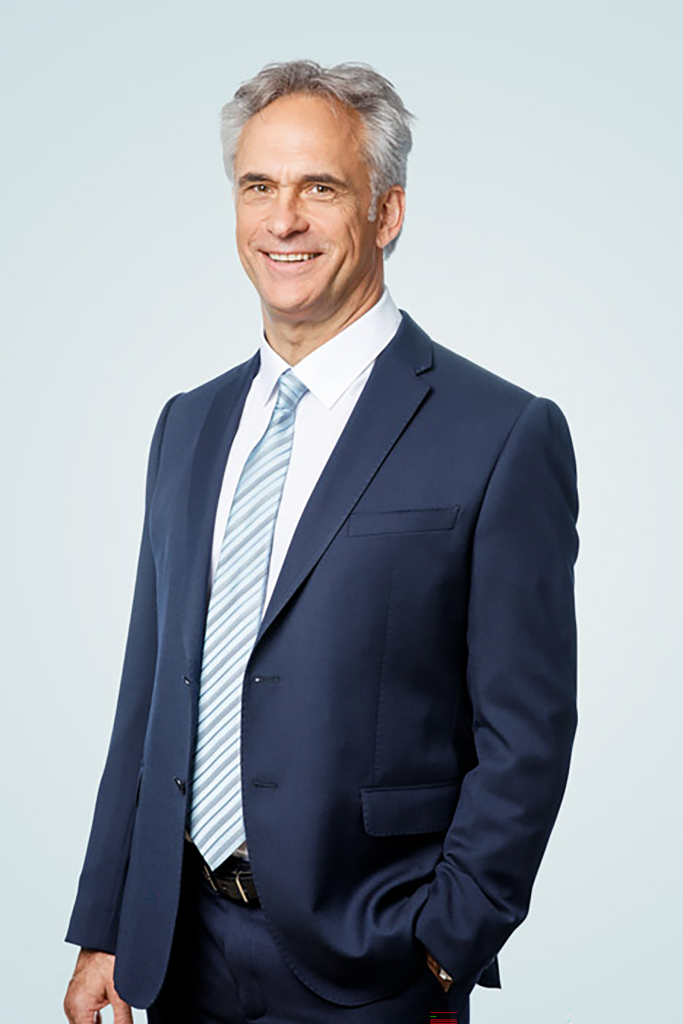
Many committed entrepreneurs took part and stepped on the gas for this unbelievable sum, which even exceeded the result from the previous year by 100,000 euros!
Wirtschaft kann Kinder e. V. is an umbrella organization that promotes equal opportunities for children and youths throughout Germany. The board of WKK is made up of Dr. Rüdiger Grube and Christoph Gröner, who founded the association together with other motivated personalities from the fields of business, law and medicine. The WKK would like to offer entrepreneurs a platform to support young people. As a proud main sponsor of the event and of the association Wirtschaft kann Kinder, we are hopeful to be able to improve opportunities for the youth in Germany.
With the common goal of creating better prospects in the everyday lives of socially disadvantaged children and young people, all the attending supporters showed what it means to actively take responsibility. Participants in the Charity Race event were able to drive laps in various Porsche vehicles on Porsche’s own race track in Leipzig and make donations in the process.
One hundred percent of the impressive sum donated goes to charitable organizations, associations and foundations that work in various ways to give disadvantaged children and young adults the chance of a fair life. This year, WKK’s donation supports the Off Road Kids Stiftung, the Bundesverband Kinderhospiz e. V. with their project “Frag OSKAR”, the Straßenkinder e. V. Leipzig, the Children’s hospice Bärenherz Leipzig e. V. and the Elisabethstift with their project “More ABC through wifi”.
We would like to thank everyone who participated in this event and donated. We would also like to thank the Wirtschaft kann Kinder e. V. team, whose great commitment made this year’s WKK Charity Race a very special event. We are already looking forward to next year!
The cancellation of all face-to-face events has led to a major financial collapse, with severe economic consequences. Freelance artists in particular have suffered a loss in income of around 85% since March 2020.
The WKK, in collaboration with the actresses Victoria Trauttmansdorff and Theresita Colloredo, has launched the project “Corona or not Corona – children’s rooms cost rent”. The project is aimed at families working in the field of freelance arts, because despite their large financial shortfalls, the children must be taken care of and rents need to be paid.
“The closure of venues plunged many actors and actresses into crisis, as they experienced the almost complete loss of their income. For artists with children, especially single parents, this is a huge problem. And we don’t know how long theatres in Germany will have to stay closed. That’s why Theresita Colloredo and I have been thinking about how we can help our colleagues. We are very grateful that Wirtschaft kann Kinder is participating here with a total of 100,000 euros and is also taking over the organization,” explains Victoria Trauttmansdorff.
For both actresses, the project is a matter close to the heart. Already in the first lockdown, they provided opportunities for listeners and artists to experience a live performance over the telephone with their campaign “Bei Anruf Kunst” (“Art on the Phone”), and many donations were collected in the course of this. The current project now reaches even more people affected. Wirtschaft kann Kinder e. V. is very pleased about this initiative. “Even in crises like this, there are companies that have to cope with only minor or no restrictions. I see it as the social duty of entrepreneurs to take care of those who suffer more from the crisis. Together with Dr. Rüdiger Grube and other entrepreneurs, I founded the association Wirtschaft kann Kinder so that this commitment has a home. We welcome new supporters,” invites the chairman of the association and Berlin entrepreneur Christoph Gröner.
A total of 352 children were supported with a one-time rent subsidy for their children’s room in the amount of 800 euros each. We hope that the pandemic will soon come to an end and that the actors will be able to return to the stage in the near future.
We rarely know the fates that brought them into this situation, and unfortunately, a large part of our population still believes that homeless people chose this way of life and that nobody really has to live on the streets in Germany…
We do not believe in this misconception and continue to actively advocate for people without means. Therefore, we initiated various relief efforts at our locations in these last few days. “I am really happy about the drive of my teams and the quick implementation,” said Christoph Gröner. Because of our contacts to organizations and institutions we were able to provide the urgently needed items promptly, depending on the need. “These contacts have now helped us to provide support very quickly. It was important to us not to simply give money, but to respond directly to the needs. With temperatures well below zero, this is simply necessary. It is a social obligation to help one another not only in difficult times, but whenever you have the means to do so,” says Christoph Gröner.
We will continue to help and provide targeted help when temperatures are permanently cold. In all our branches, sleeping mats, sleeping bags, thermal underwear, winter boots, warm clothing and food were purchased and handed over to the facilities. The donations went to the Bahnhofsmission in Frankfurt and Munich, the housing for homeless women and men in Leipzig, the streetwork stations of the Offroad Kids Stiftung in Hamburg and Berlin, the AWO in Karlsruhe, the CaFée mit Herz in Hamburg-St. Pauli and Helping Hands e. V. in Cologne-Zollstock.
We would like to express our great praise and thanks to these organizations. The tireless employees of these great institutions are really doing a fantastic job!
Just in time for the festive season, our colleagues in Berlin and Leipzig took part in two wonderful Christmas initiatives. Berlin took care of the Christmas trees, while Leipzig took care of the presents.
In many social facilities of Berlin Christmas greenery was simply missing because there is not always the budget for a fir tree, especially not in this extremely difficult situation in which we find ourselves currently. That is why we wanted to bring the Christmas spirit to these children and young people. The management and employees of CG Elementum donated so that Christmas trees and decorations could be handed out to these institutions. With this internal initiative we not only supported children and youths from Berlin institutions – we also supported another good cause along the way because the Gröner Group bought a total of 159 Christmas trees at this year’s Christmas tree market of Hertha BSC. For each tree sold, the Bundesliga club in cooperation with the Werderaner Tannenhof donated 5 EURO to Kolibri e. V., an association for children with cancer.
Since not every family has the means to make their children’s wishes come true at Christmas, our Leipzig colleagues made sure to help out in this matter. Every year the Tafel Leipzig, an association helping disadvantaged families with groceries, organizes a „Christmas wish tree initiative“. This annual campaign provides the possibility for the so-called “Tafel children” to write down their dearest wish for Santa Claus and hang it up on a Christmas tree, these wishes will then be fulfilled by those supporting this cause. Among those supporters are our colleagues from the Leipzig branch. It took less than 24 hours for all 50 gifts to be distributed to the colleagues. Wonderful commitment for a wonderful campaign!
We would like to take this opportunity to thank our colleagues in Berlin and Leipzig. Without their commitment, this year’s Christmas would not have been quite so cheerful and green.
Merry Christmas to you all!
One of these is the Harburg-Huus run by the German Red Cross in Hamburg-Harburg. Here, homeless people find a place of refuge around the clock, 365 days a year. The house on the Außenmühlenweg offers 15 beds for overnight stays in shared rooms, a day center, medical care, social counseling and much more. The team is committed to help homeless people find their way back into a regular everyday life. “Even during the Corona lockdown in March and in the situation that has now come to a head again, we have managed to maintain operations and at least provide basic services for our guests. We hope, of course, that we will continue to succeed,” explains Harburg-Huus director Thorben Goebel-Hansen.
The house receives no public funding and relies on donations. Therefore, the Gröner Group was delighted to support the facility with 62,500 euros. Together with Prof. Dr. Rüdiger Grube, patron of
the Harburg-Huus, Christoph Gröner personally stopped by for a visit. “Anyone living on the streets in the south of Hamburg can find a bed, a shower, a hot meal, advice and bring their dog here. As a company, we are aware of our responsibility towards the weak in society and with this donation we are happy to contribute to ensuring that the Harburg-Huus remains open for people who do not have their own living space,” explained Christoph Gröner.
Karin Bischoff, deputy DRK board member, expressed her thanks: “During the pandemic, contact with donors has also become more difficult. We appreciate it all the more when supporters stand faithfully by our side and are aware of their social responsibility.” Christoph Gröner had already donated to the Harburg-Huus in the previous year. However, the donations made so far will not be the last, as the house continues to need support. The Gröner Group and Christoph Gröner himself would like to enter into long-term partnerships, because one-time funding is not enough in the long run.
We hope that we will be allowed to actively support the Harburg-Huus in person, as soon as the pandemic-related measures are no longer needed. Until then, we wish the team and the guests of the house all the best and look forward to this special partnership.
Both the WKK and the charity race event are sponsored by CG Elementum.
Last weekend in Leipzig, the invited guests from the construction and real estate industries turned around 200 laps on Porsche’s own race track. In the end, the donation sum from the previous year was even surpassed by 100,000 euros – a total of 300,000 euros was raised to promote equal opportunities for children and young people in Germany.
The Off Road Kids Stiftung, the Bundesverband Kinderhospiz e. V., Straßenkinder e. V. and the Tafel Leipzig benefit from this remarkable donation sum. We would like to thank the WKK and all participants and donors for this successful event and are already looking forward to next year!
In den drei Bauteilen des zuletzt leerstehenden Gebäudes wird für verschiedene Gewerbenutzungen Platz geschaffen: SSpace is being created for various commercial uses in the three sections of the most recently vacant building: for example, offices, training rooms or fitness and small catering units are planned. Component A will account for around 6,400 m², while components B and C are planned with around 7,900 m² and 5,500 m² respectively. A contemporary interior design with various equipment options was the focus of the planning. On the first floor in particular, the generous ceiling height will ensure pleasant working conditions in bright and friendly rooms. The upper floors are also bright and transparent due to the free-standing structure and offer an unobstructed view in all directions. The building’s complete basement offers extensive possibilities for storage or archives in components B and C, while the basement in component A will be home to fully-fledged office space. The model office for viewing the future quality of space will be ready to visit in spring 2022. The entire property will be completed in late summer 2022.

“We are very pleased to soon complete a project in Mannheim with the Konradhaus. Leasing is already underway and I am sure that this will not be our last project in Mannheim. We have already acquired another plot of land next to Konradhaus in Dudenstrasse, where a self-storage facility is planned. We have already received a positive preliminary building application from the City of Mannheim,” said Development Director Ulf Graichen, commenting on the start of the development work.
The Konradhaus is located in the best neighborhood: In addition to the University Hospital Mannheim, numerous media companies, the headquarters of Bauhaus AG and the private brewery Eichbaum are located in the immediate vicinity. The reason for this is the excellent transport links to the A5 and A6 freeways, local public transport as well as the main railway station and City Airport. In order to make the connection even better for users and guests, a regular shuttle service is planned after occupancy.
CG Elementum AG sees Mannheim as an excellent commercial location with considerable potential. The company has already acquired another project in Friesenheimer Strasse, and further commitments are being examined.


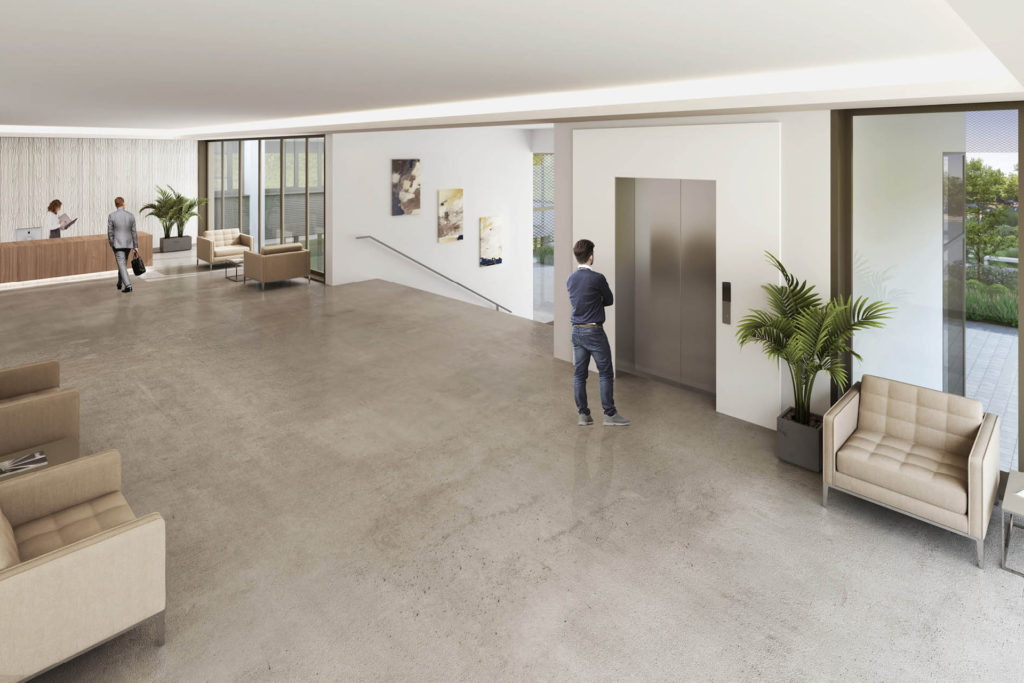
The site on Riesaer Strasse centres around a novel concept and is due to be completed by March 2022. It will then unite the Gröner Group’s full panoply of trades and professions under one roof ‒ in the Mansfeld Hallen, as the innovation centre will also be known. This will boost direct knowledge transfer and, in turn, unleash enormous development potential. Prefabrication is elemental to this. The site will not just encompass offices and different workshops for the traditional skilled trades. There will also be shop floors for serial production of wall and floor coverings, for instance. And plans are in the pipeline to expand the use of prefabrication in the future to include parquet flooring and ventilation shafts.
The innovation centre will also fulfil another important function. It will serve as a training facility for employees who wish to train in a traditional trade or prefabrication, or use the teaching workshops to build on their existing skills. There will be capacity for 42 trainees at a time, including apartments to accommodate them. Teaching rooms will be used to cover specialist areas as well as subjects like social studies. Language courses will also be available if required.
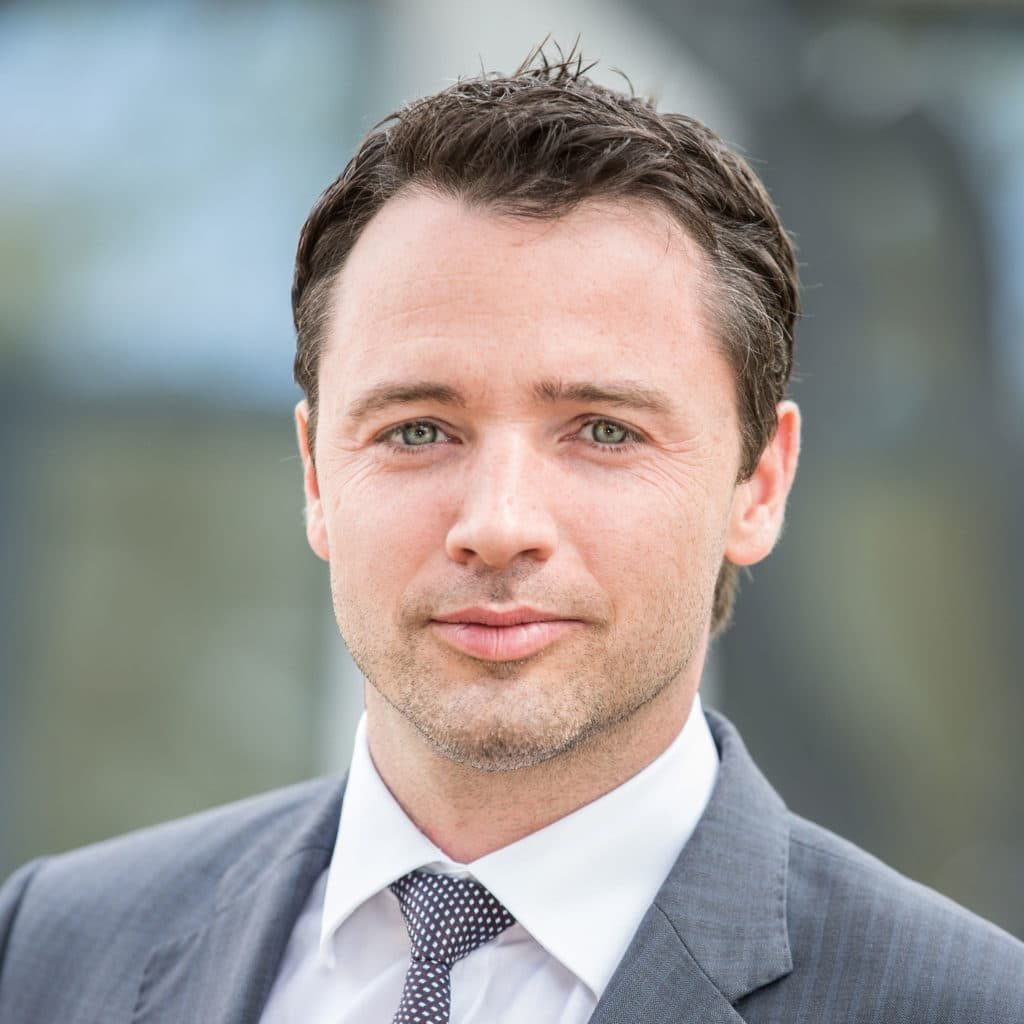
Capable and reliable employees are fundamental to our company. It’s why we have always championed their professional development and worked hard for their loyalty. The shortage of skilled labour is a problem everywhere, but particularly in the skilled trades. This has inspired us to go even further than before and think on a more international scale, not least to give us a competitive edge.
Out of this has come the exceptional idea of creating an innovation centre. It will be a place for us to pursue an interdisciplinary approach to the benefit of our construction and innovation projects. A place to assimilate all areas of technical expertise in an open exchange of experience. And a place to train in new areas as well as refresh and expand existing knowledge in order to meet the full range of requirements. For example, we will familiarise our employees from abroad with German material and execution standards, among others.
There will also be an additional focus on training our construction team in installing prefabricated components. All of this will create in the Mansfeld Hallen a constructive arena that will equip us very well for the future.
Christoph Gröner, CEO of CG Elementum: “After just one year, Jens Rammenzweig has already achieved his goals within our company. He played a leading role in the complete integration of the projects from Consus RE GmbH and has set up the most advanced IT among German project developers. He has also completed the year-end closing work for 2019 and 2020, creating financial transparency. We thank him for his efforts and wish him all the best for the future.”
Due to the strong growth of CG Elementum with around 500 employees in 8 offices, two board members will take over the areas of responsibility of Finance and IT as well as Capital Markets and Legal in the future. The company will fill both positions in the fall of 2021.
A key element of CG Elementum’s work is the highly automated production based on the EMC prefabricated construction system. In addition to economic advantages, prefabrication here enables the formation of a resource-efficient load-bearing system. Compared with in-situ concrete floors and walls, the EMC system can save up to 50% of the reinforcement. Further resources and emissions are saved through reduced component thicknesses and CO2-optimized concrete formulations. By supplementing the construction system with prefabricated finishing elements and applying pre-programmed planning algorithms, the aim is to achieve a degree of prefabrication of construction projects of up to 50%.
1 Status quo
Whether it’s the shortage of affordable housing, the acute shortage of skilled workers, especially in the skilled trades, the innovation backlog in planning and construction, or the reduction of CO2 emissions for climate protection – the construction industry is facing fundamental challenges. The construction of buildings is still characterized by a high proportion of manual activities that are carried out in all weather conditions.

2 The construction system
Multi-story residential construction in particular places high functional demands on the design of buildings. This applies in particular to the space-forming components, which in addition to the usual functions of thermo-hygric properties in conjunction with load-bearing capacity, serviceability must also meet sound insulation and fire protection requirements.
These requirements can be well met with solid, space-forming and mineral components. For this reason, residential construction is often carried out by superimposing masonry or reinforced concrete walls on each floor in combination with single- and double-axis reinforced concrete floors. Depending on the design, the floor slabs are manufactured as in-situ concrete or semi-precast slabs with in-situ concrete supplement.
With a view to maximizing the degree of prefabrication of wall and floor elements and minimizing site work, the EMC components are manufactured as solid concrete cross-sections. Sound insulation is the primary factor in determining the wall thicknesses. Thus, the EMC construction system consists of minimum-reinforced 22cm thick walls that separate the apartments, as well as 15cm and 18cm thick exterior and interior walls, respectively, without sound insulation requirements, for which design specifications from anchorage lengths of the flexural reinforcement or boundary conditions for the fire resistance duration are decisive.
The single-axis spanned slabs can be selected in thicknesses of 20cm or 22cm, depending on the span and their structural system, and also receive minimum reinforcement in addition to the load-bearing reinforcement. For greater flexibility in floor plan design and to reduce deformations, a continuous effect can be achieved via intermediate supports. In addition, precast balconies with isocages can also be integrated into the construction system.
The highly automated production allows a flexible grid, so that, within certain limits, an individually plannable architecture is possible. Each component in the EMC system can be specially formed and reinforced independently of other components, thus enabling geometric diversity without loss of productivity.
To reduce costly on-site slotting, wiring and closing for electronics installation, empty boxes and empty conduits are installed in the walls at the factory. Additional components and layers can be added to the prefabricated reinforced concrete components in the factory. Figs. 2 and 3 show examples of wall elements produced, including windows and a factory-applied thermal insulation composite system and flush-mounted plaster.

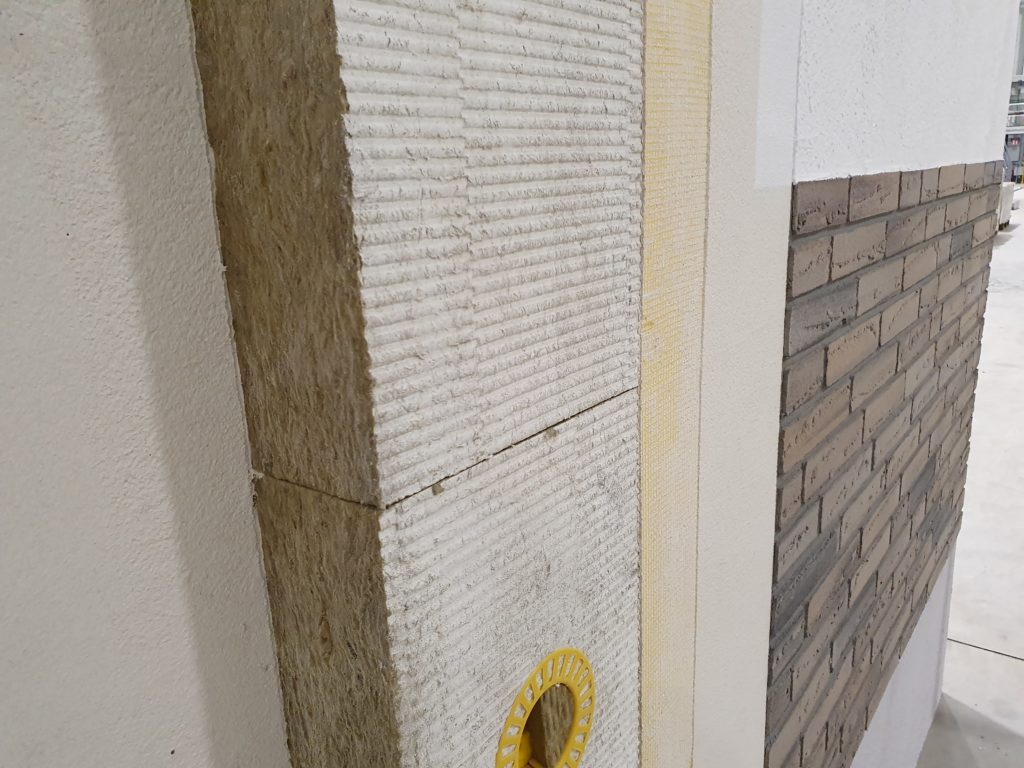
On site, only grouting work for lap joints, wall connections and ring anchor formations has to be carried out.
A major advantage of precast elements is the elimination of slab supports during construction, as required in conventional construction methods using in-situ concrete and precast slabs. This results in considerable time savings, since the slabs are laid on each floor and the joints are then grouted. The inclined supports of the walls can be removed after only a short time, so that subsequent trades can start work early.
In the interior, there is no need for extensive plastering work, which also results in advantages in terms of construction time and construction moisture compared with the traditional masonry construction method.
3 BIM as interface between planning and plant
For the EMC construction system and the processing in the plant, it is essential that a maximum of all processes are carried out digitally from the beginning of the conception, in addition to the structural and production engineering aspects. Digitization affects bidding, planning, order processing and the control of all production units in the logistics chain up to the delivery bill at the construction site.
The planning, in particular the approval statics, is based on the precast system right from the start, so that no additional remeasurements are required in the precast plant. In the precast plant, the elements are placed taking into account the boundary conditions of the building system and the performance of the plant equipment (see Fig. 4).
The basis for element placement in the plant is a coordinated and attributed building model including all openings and the location of electrical boxes. A fundamental part of the planning is therefore Building Information Modeling – BIM for short – which is absolutely essential in the cooperation between architecture and specialist planners.
A major advantage in this process lies in integral planning, i.e. in the early merging and coordination of planning with construction and the client. The early determination of the use of the EMC building system allows for a quick coordination with the technical office of the precast plant regarding the feasibility, structural details, application limits, etc. of the respective project.

4 Process optimization from production to assembly directly ex works.
The design of the first precast plant with EMC building system near Erfurt is based on a performance target of 400,000 m² of solid wall and ceiling elements per year and shift. In order to reliably achieve high quality and to make labor costs more calculable, the plant was planned and realized in a highly automated way. The basic principle is the assembly line: the circulating pallets on which the concrete elements are produced are transported from work station to work station. Machines and robots are used at the respective work stations, by which the majority of the work is carried out. Due to the high degree of automation, the proportion of personnel otherwise required at other precast plants is reduced by around 10 to 15%. The storage yard consists of a fully automated warehouse; all machines are controlled by a master computer.
For the external warehouse in Erfurt, for example, special machines were developed, resulting in a world-leading logistics system for precast concrete parts.
5 Resource efficiency and outlook
5.1 Sustainability
An essential part of the EMC concept is to optimize reinforced concrete through the homogeneous process conditions of a largely automated prefabrication and thus to produce it in a resource-saving and thus climate-friendly way.
5.2 Structural resource efficiency
Component design is carried out with articulated, mostly statically determined load-bearing systems, which lead to lower material use and resource consumption when designing with the EMC system.
In combination with the small size of the precast elements, which lead to low constraint points during hydration on smooth formwork tables in the factory, the degree of reinforcement can be significantly reduced by the EMC system and steel can be saved. This is especially true compared to multiple statically indeterminate cast-in-place concrete slabs, where crack-width-limiting reinforcement often results in high reinforcement ratios.
5.3 Production-related resource efficiency
The reinforcement is installed in a fully automatic mesh welding plant, which allows the reinforcement selection to be optimized for the individual case. Over-dimensioning, as occurs with standardized reinforcement meshes and a blanket, construction-specific reinforcement selection, is thus avoided.
Another advantage of prefabrication in the precast plant results from horizontal production and compaction on shuttering tables. Particularly in the case of wall panels, this allows very lean and resource-efficient designs that cannot be reproduced in a construction site fabrication.
5.4 Outlook
Building on the EMC construction system, CG Elementum is introducing further areas of application for industrial prefabrication in the production of housing. With a highly flexible, multifunctional production hub for the manufacture of ready-to-assemble building elements, the company has set itself the goal of taking the end-to-end design-to-construction process implemented at the Erfurt plant to a new level: At a new site near Cologne/Koblenz, CG Elementum plans to increase the achieved prefabrication share from around 21% (ceilings and walls) to more than 50% by significantly expanding the product range in terms of both materials and functionality.
Author: Stephan Kroll, CG Elementum AG
After several years of construction, the revitalization of the area has resulted in a modern and lively urban district that has retained its industrial charm. Visitors can view the ensemble of industrial buildings, some of which are listed, renovated in detail and converted for residential use, supplemented with modern architecture for office and commercial use, in all their glory on September 8 at 10 a.m.
Who are CG Elementum AG and GEM Ingenieurgesellschaft?
CG Elementum and GEM Ingenieurgesellschaft are subsidiaries of Gröner Group GmbH. Together they design future-oriented real estate developments with an experience horizon of more than 25 years. The focus is on the creation of affordable living and living spaces. In addition to the digital reorganization of the construction and real estate industry by means of BIM and the subsequent prefabrication, the companies strive for a nearly CO2-neutral footprint.
With CG Elementum AG, Gröner Group has an in-house service provider for sustainable and digital construction that offers the entire range of services for its own project portfolio as well as for third parties in the field of new construction, old building/monument renovation and conversion. Find out more at www.cg-elementum.de & www.gem-ingenieure.de.
What does the partnership involve?
The partnership has been agreed up to and including 2023/24 and thus for the next three seasons. As chest sponsor, CG Elementum AG will then adorn the front of the KSC jerseys and be present on the training, warm-up and leisure clothing of the professionals. In the regional environment of KSC, CG Elementum appears with its subsidiary GEM Ingenieurgesellschaft based in Karlsruhe-Durlach.
The main sponsorship of CG Elementum also includes extensive rights to use the KSC name and logo, extensive presence in the Wildpark stadium, the KSC partner areas, KSC media and advertising materials. The real estate development company remains the main partner of “KSC TUT GUT.”, the social umbrella brand of Karlsruhe SC on the topics of diversity, environment and education.
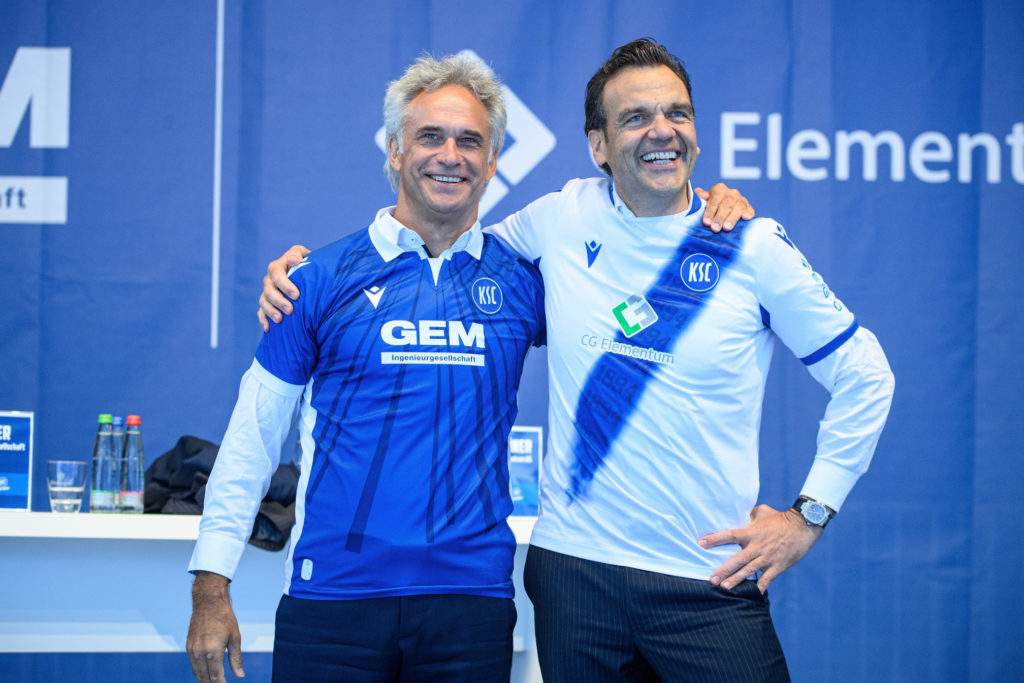
What do those responsible have to say about this?
Christoph Gröner, CEO of CG Elementum AG: “Supporting KSC is like returning to my home country. We stand behind the club, which, for all its tradition, looks innovatively to the future. Incidentally, we take a similar approach to our real estate developments, as we focus on the digitalization of all processes as well as green technology and the revitalization of derelict industrial buildings for sustainable real estate development.”
Martin A. Müller, authorized signatory CG Elementum and managing director GEM Ingenieurgesellschaft: “It is no secret that for Christoph Gröner and me the partnership with KSC in our hometown is a matter of the heart. We are looking forward to the upcoming season with excitement and hope that our commitment as main sponsor will strengthen the club in such a way that the performance curve continues to point upwards.”
Michael Becker, Managing Director of KSC: “As the new main and breast sponsor, CG Elementum, together with GEM Ingenieurgesellschaft, is a crucial partner for KSC. The regional ties of Christoph Gröner and Martin Müller personally are an ideal fit for us as the home club of an entire region. We are very pleased that CG Elementum, with whom we have already had very close and active ties as part of our top sponsorship in recent years, is now taking this next step together with us. We can hardly wait to present our three completely new jerseys together.
How have CG Elementum and KSC worked together in the past?
So far, CG Elementum has been involved in the Wildpark as the exclusive top sponsor. In addition to extensive advertising packages and exclusive activation measures, this also included the sleeve partnership. Thus, since the 2019/20 season, the logo of CG Elementum and GEM Ingenieurgesellschaft adorned the jersey sleeve of the KSC professionals. The promotion celebration to the 2nd Bundesliga in 2019 was also already supported and presented by CG Elementum.
Items such as sleeping bags and mats, winter boots and thermal underwear were donated after establishing what was needed in each specific area. At several sites, company employees also helped distribute the goods.
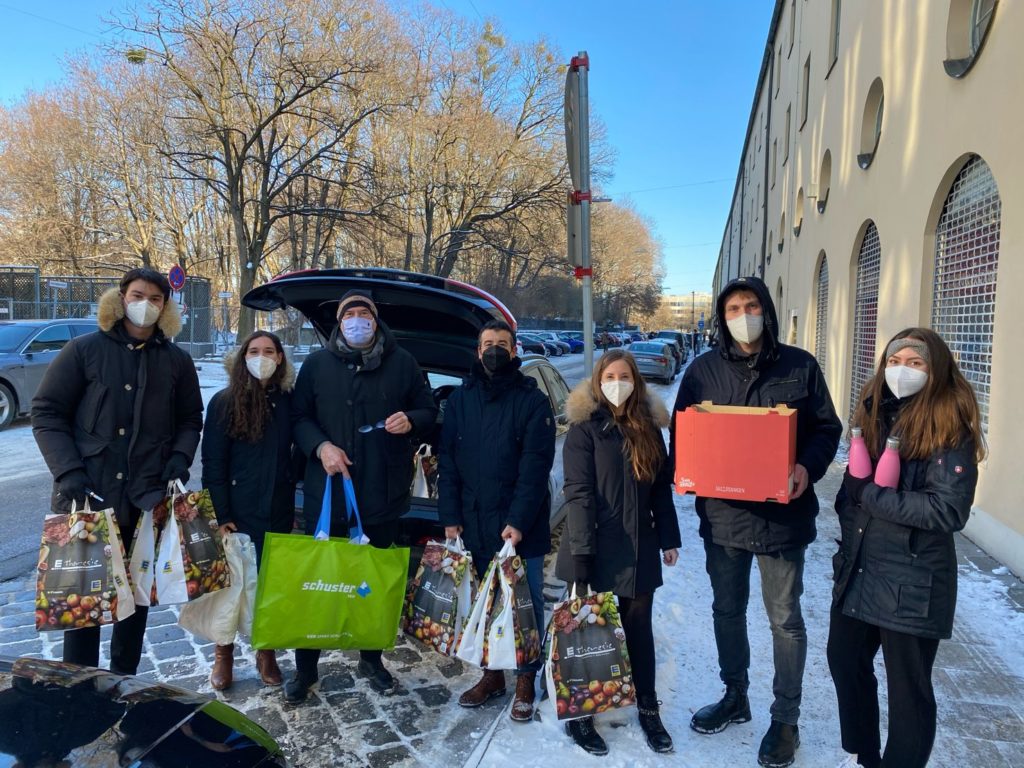
“I’m overjoyed to witness the initiative shown by my teams and how quickly everything got done,” said company founder and Managing Director Christoph Gröner, who has supported charitable initiatives helping homeless children for many years. “Thanks to these contacts, we’ve now been able to respond very quickly with help. Rather than just handing out money, we felt it was important to respond directly to people’s needs. When temperatures drop well below zero, you have to move urgently.” It matters to Christoph Gröner that this kind of help is not just a one-off, but that long-term partnerships develop between the Gröner Group and the various organisations. The entrepreneur is firmly convinced, “It is our social duty to help our fellow human beings, not just in times of crisis but whenever we have the means to do so.” Accordingly, the Gröner Group will again provide winter aid in the future whenever icy weather persists.
Sleeping mats and bags, thermal underwear, winter boots and warm clothing were bought and delivered to organisations in Frankfurt, Leipzig, Berlin, Karlsruhe, Cologne, Hamburg and Munich without delay or red tape. Recipients included the Bahnhofsmission railway outreach organisation in Frankfurt and Munich, homeless shelters for women and men in Leipzig, Streetwork Stations run by the Offroad Kids foundation in Hamburg and Berlin, the AWO worker welfare charity in Karlsruhe, CaFée mit Herz in the St. Pauli district of Hamburg and Helping Hands e. V. in Zollstock, Cologne.

This is not the first relief programme Christoph Gröner and his company have been involved in. The Gröner Group provided support to the Leipziger Tafel food bank last year to allow it to continue its work. In total, the group donated more than one million euros to social, charitable and cultural projects in 2020. Alongside this, Christoph Gröner has been engaged for many years, both privately and through his companies, in supporting a number of sports clubs, research projects (Barrett Initiative e. V.) and cultural initiatives (International Youth Orchestra Academy – IJOA) across Germany in various ways. His top priority in all of this has been and remains child and youth services. It has always been his conviction that entrepreneurs carry social responsibility – especially for children and young people.
In February 2020, Christoph Gröner joined forces with Prof. Rüdiger Grube and other entrepreneurs to establish the Wirtschaft kann Kinder e. V. non-profit, which helps disadvantaged children and their families. One of the charity’s main objectives is to promote equality of opportunity for all children in Germany, regardless of where they grow up or the conditions in which they live. A child’s family background and financial situation still have a great impact on their opportunities in life. This is something that needs to be rectified – by committed entrepreneurs working together as human beings and citizens as well as businesspeople to invest in Germany’s future, with children’s interests at heart.
About the Gröner Group
Gröner Group GmbH draws on more than 25 years of experience to give shape to forward-thinking property developments. The group’s emphasis is on creating affordable housing and living spaces. Alongside the digital reorganisation of the construction and property industry using BIM and its sister field of prefabrication, the company is committed to achieving as neutral a carbon footprint as possible.
Through its subsidiary CG Elementum AG, the Gröner Group has access to a company-owned service provider for sustainable and digital construction. CG Elementum provides a full range of services in new construction, conversions and the renovation of old and listed buildings for the group’s in-house projects and to third-party companies.
The Gröner Group has its headquarters in Berlin. With seven branch offices and around 400 employees, the company is forging ahead with more than 80 project developments throughout Germany with an overall development volume of around five billion euros.
Global climate change is undoubtedly one of the greatest and most fundamental challenges of our time. It was agreed at the UN Climate Change Conference in Paris in 2015 to limit global warming to less than 2°C. To achieve this, global net greenhouse gas emissions will have to be reduced to zero by the second half of this century. This is a momentous task, not only for the international community but also for the global economy. Every industry is obliged to play its part – not least the property sector. Especially so, because buildings demonstrably produce around 40% of all CO₂ emissions worldwide. Yet as it stands, most measures designed to counteract this barely extend beyond facade insulation.
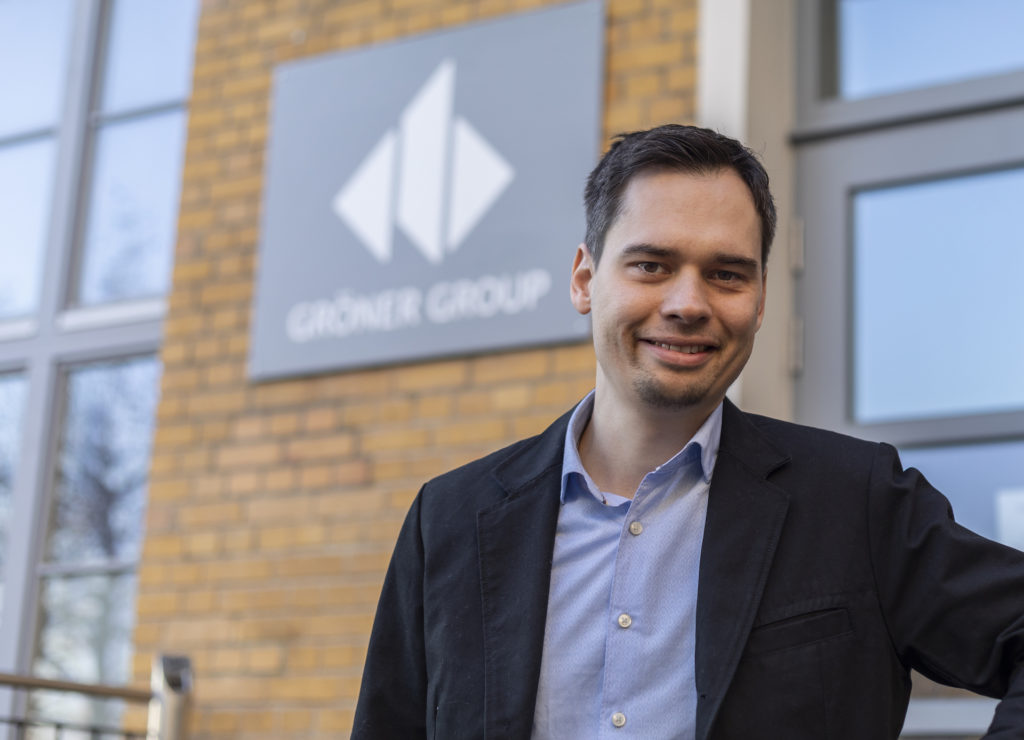
CG Elementum, on the other hand, is thinking ahead. It is fully committed to using green technology to make carbon-neutral, resource-conserving properties a reality. “In order to ensure ecological sustainability of a new and higher calibre, we have enshrined this elemental issue in our planning right from the start. Our approach includes innovative recycled materials and avoiding greenhouse gases by using local sources of environmental heat,” explains Dr Rainer Fauth, Sustainability Project Manager at CG Plan, a subsidiary of CG Elementum.
Making old into new – we take the circular economy seriously!
“A core component of this sustainability concept is checking the eco credentials of all our building materials, for example their carbon footprint. The most resource-friendly building materials are in fact those that already consist fully or partially of recycled materials,” attests Dr Fauth. It is now already possible to produce prefabricated components entirely from recycled concrete, which is made using processed construction rubble. In keeping with the urban mining concept, this conserves natural stone and river gravel.
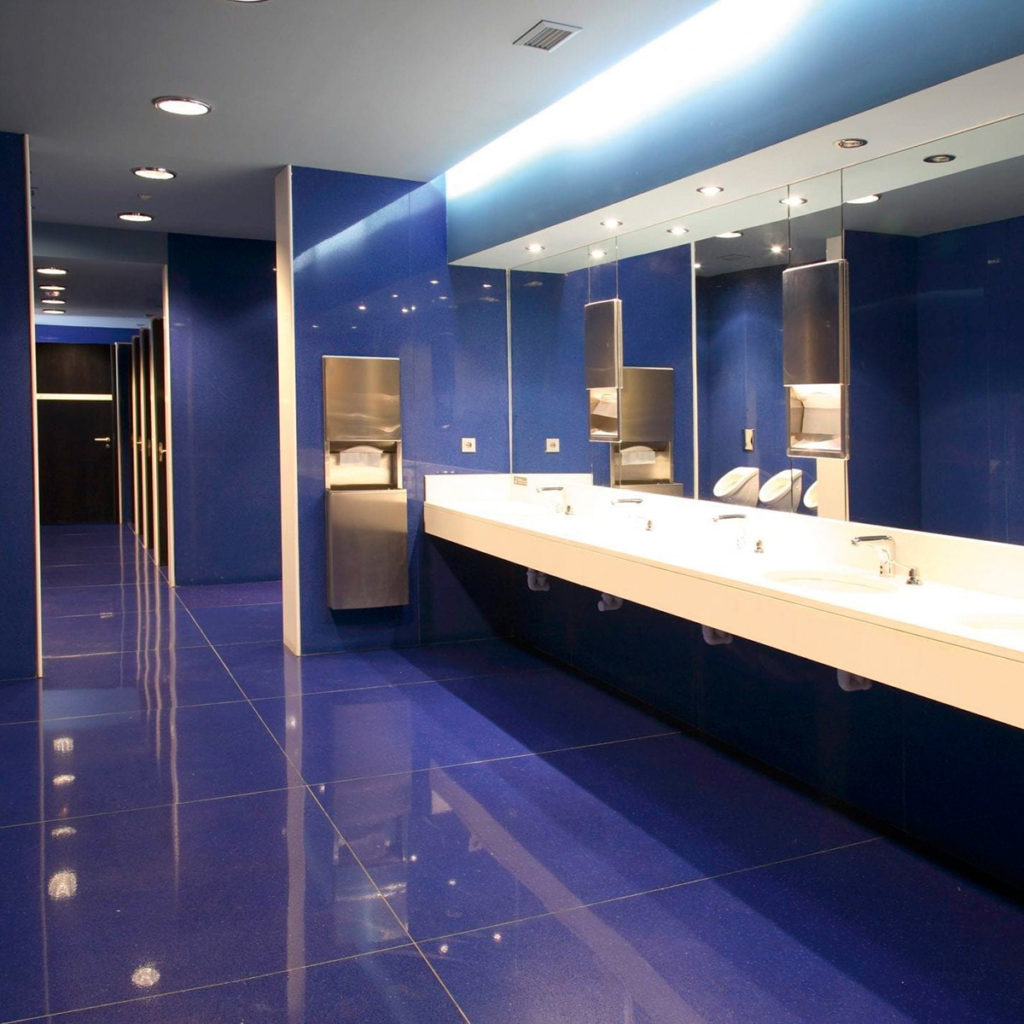
Yet CG Elementum reuses not only concrete. Kerazzo is used for visible surfaces such as wall and floor coverings. This material is inspired by the idea of terrazzo, a well-known feature in antique buildings. In an innovative new process, up to 78% recycled materials such as waste glass, marble, granite and quartzite are formed into attractive panels. These can then be laid without visible joint lines. In contrast to ceramic tiles, almost any design can be produced. And at just 6.6 mm thick, they also weigh only half as much. They are easier to transport and lay, are low-maintenance, and have antibacterial properties. The company TREND Kerazzo Deutschland handles distribution of the panels for CG Elementum. Its innovative product has already been awarded GREENGUARD Children & Schools certification, while certification with a Blue Angel ecolabel has been initiated.
Earth, water, light – renewable energy solutions for every project
A holistic approach is essential when considering carbon-saving energy supplies that conserve resources. “Not every kind of technology can be used for every building project. Nevertheless, there are suitable solutions for every project, whether geothermal or solar thermal energy, water source thermal energy, wind power or photovoltaics. Photovoltaics is particularly useful where there are extensive roof areas, like in our large-scale Plagwitzer Höfe project,” explains Dr Fauth. With 5,684 individual modules, a total surface area of 9,600 m2 and a nominal capacity of 1.6 MWp, this is the largest system of its kind in Leipzig. It saves around 750 tons of CO₂ every year, which corresponds roughly to the annual CO₂ output of 250 diesel cars.
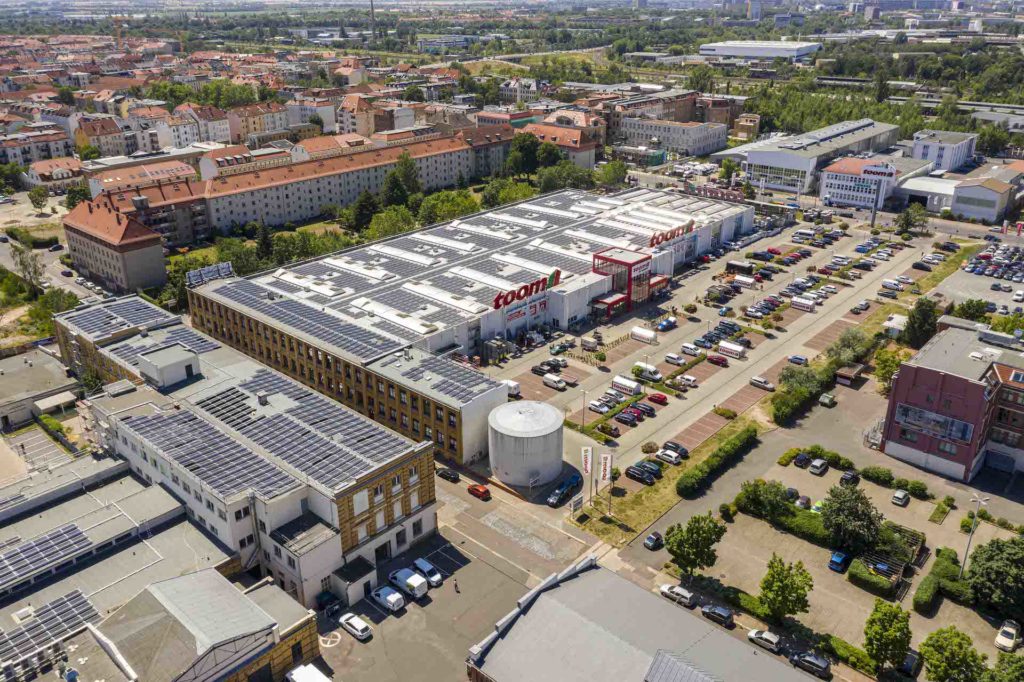
In other projects it makes sense to focus more on geothermal energy, thermal energy from running water or wind power, as Dr Fauth explains: “Basically, for each project we have to check which forms of environmental heat are available locally. Where we can use groundwater and terrestrial heat, then geothermal energy is a better fit. In areas with running water sources nearby, it then makes sense to focus on thermal energy from river water instead.”
Zero-emissions district – the OTTO Quarter
The successful development of a zero-emissions project usually requires a judicious combination of different innovative technologies as well as the harnessing of all available resources. The OTTO Quarter in Wendlingen is an initial beacon project for this holistic approach. With its central infrastructure for energy, water and mobility, the quarter is well on its way to becoming Germany’s first zero-emissions district.
In addition to photovoltaic systems on the roofs, measures also include assessing whether thermal energy from the nearby Neckar river can be harnessed using a modified water intake structure. Heat exchangers will also be used to recover energy from the quarter’s wastewater. An option for combining this with geothermal heat pumps is also being explored. The high proportion of renewable energy resulting from all this will help achieve the zero-emissions objective. “We have already made relatively good progress with the OTTO Quarter. But comprehensive energy concepts of this kind will become standard for all new projects,” emphasises Dr Fauth. “We think long term. Our planning includes not only climate and resource protection but also operating costs over a property’s entire life cycle.”
A network of five “power managers” delivers an optimised supply to electric charging points. The intelligent system is able to distribute its resources to best effect, working on the assumption that it is unlikely that all users will want to charge their vehicles at the same time and that their charge states will not all be the same.
A power manager with a total of 16 connecting points can supply up to 150 kW at once. The electric charging points are designed for a charging capacity of 11 kW each. That’s enough to charge a hybrid or cityflitzer (carshare) vehicle in two to three hours. Vehicles are usually charged at night rather than during the day, ensuring sufficient capacity to meet all requirements.
Even though the majority of the apartment owners do not yet own a hybrid or pure electric vehicle, most of the 80 optional charging points have already been secured. The readiness of owners to invest in this technology is clear proof of a different way of thinking and a shift towards a more conscious use of this on-trend technology.
The issue of sustainable mobility will continue to play a key part in projects carried out by GEM Ingenieur GmbH Projektmanagement and its parent company CG Elementum AG going forward. The combined use of different renewable energies to supply infrastructure will ensure eligibility for subsidies from the federal government and the state of Baden-Wuerttemberg and thus reduce costs.
Mr Theves, prefabrication is a crucial part of the business model at CG Elementum. The job of the EMC factory will be to produce, deliver and assemble the necessary components. As Factory Manager, you are instrumental in driving forward implementation of the upcoming rollout in the main factory. How do things stand?
Handover of our production facility and office building is already complete and the first employees are on-site. The factory will be operational in January 2021 as planned. We will then initially test the performance of the facilities. The first components from this dry run will feed straight into the D17 pilot project at the Plagwitzer Höfe site in Leipzig. This will be the first Gröner Group building constructed using EMC prefabricated concrete components. As of March 2021, the factory will then be all set to produce 1,850 m² per day in single-shift operation.
How will the production process work?
We intend to manufacture prefabricated concrete components to Industry 4.0 standards. The dimensions and requirements for every single one of these units will be provided and processed digitally. Our factory building will cover 16,000 m² and include a state-of-the-art automated carousel production line. Here, steel tables will move from station to station in a fully automated process to manufacture a range of units. First, shuttering robots will position the steel formwork for the components. A reinforcing cage will then be added, in other words the inner framework. At the next station, conduit or cable bundles, sockets and other installations will be fitted by hand. This will then be followed by fully automatic concrete casting. The now concreted unit will then be moved into the curing chamber. This will have space for 82 steel tables, with every table holding up to four units at once. In the curing chamber, the concrete will be cured at an ambient temperature of 35 to 40 degrees. The temperature will be generated through so-called hydration heat without the need for additional heating.
The next morning, the cured units will be moved to the lifting stations, where the prefabricated concrete components will be taken off. The steel table will be cleaned and moved back to the first station with the shuttering robots. All automatically.
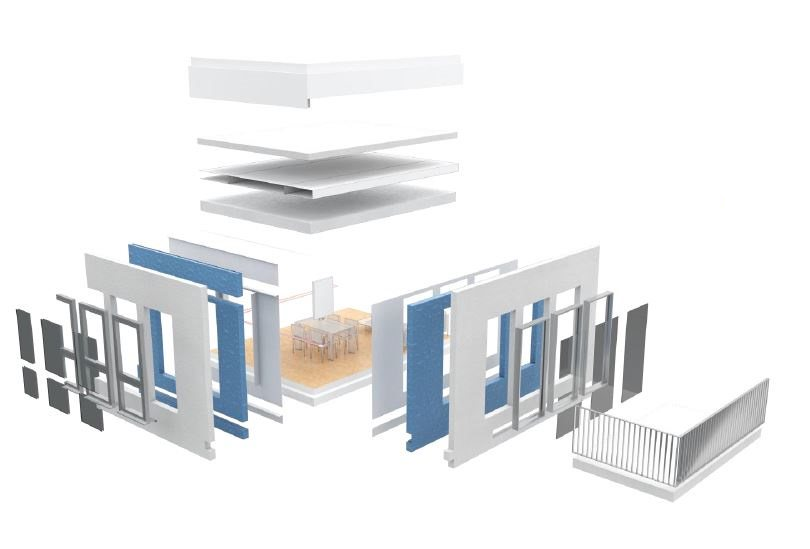
Some members of staff will surely be needed?
Compared with other prefab market leaders, we will minimise the number of staff members needed per square metre by a large margin. As a comparison: for the number of prefabricated concrete components manufactured with a daily production of 350 m³, other companies need 45 people loading in a three-shift system. At the EMC factory, we will need just one or, at most, two employees in a single-shift system. Less manual work means fewer sources of error and greater process reliability. We will also only hire in-house personnel under permanent contract. None of the factory work for the production process will be carried out by subcontractors or agency workers.
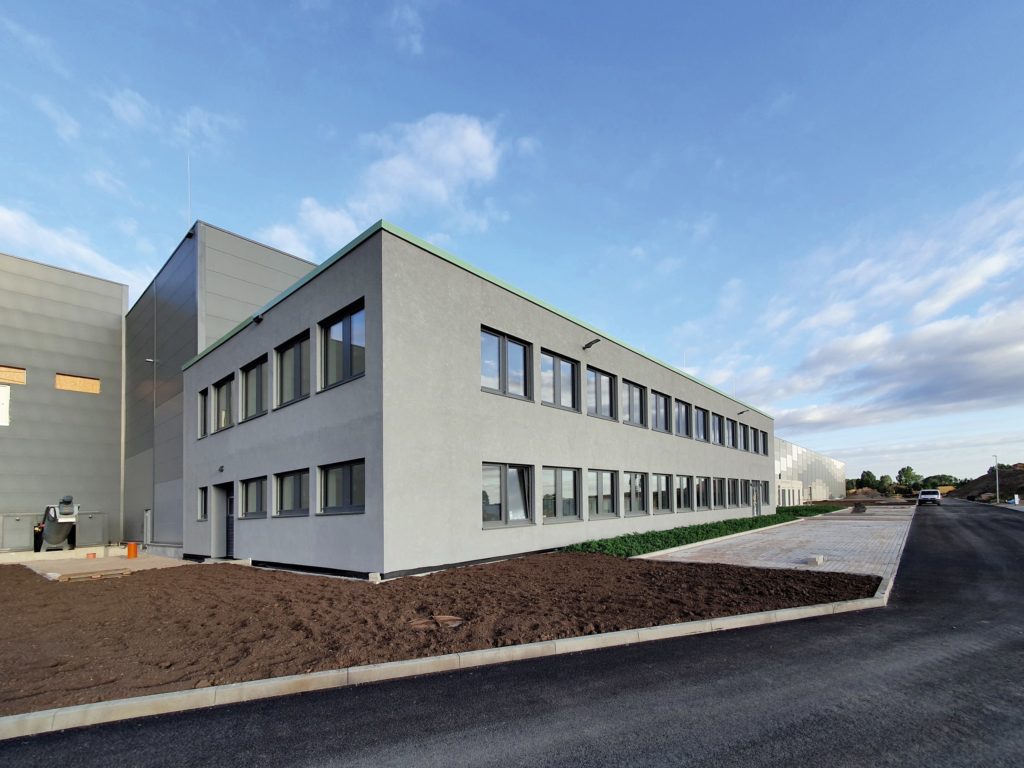
What kind of production volumes are we talking about? What output will the factory be capable of?
Let’s take the D17 pilot project in Plagwitz in Leipzig. For this we will need to produce 530 ceilings, 635 walls and 64 cavity walls ‒ a concrete surface area totalling around 13,000 m² and encompassing a range of layouts. In single-shift operation we will be able to manage 1,850 m² per day. So for the entire build we will need a mere eight days. As soon as we adopt a three-shift operation, things will move faster. Instead of 400,000 m² per year, we’ll then be able to produce 1.2 million m². In theory, this figure could be much higher if we added extra heating to the curing chamber and/or accelerated the concrete curing process with chemicals.
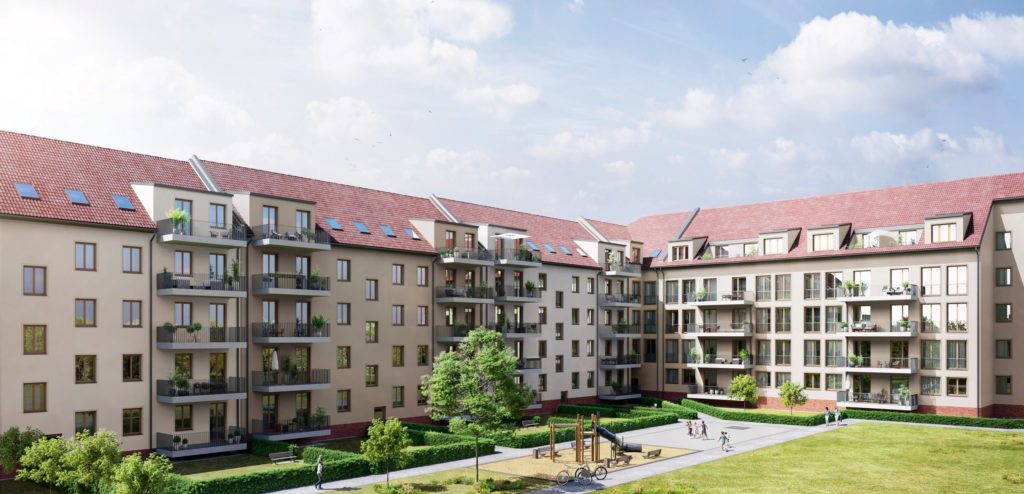
(image may differ from final building)
So the components will then be delivered straight from the factory to the construction site?
Yes, in single-shift operation we will have 35 lorries filled with sand, gravel and cement arriving at the site every day. Just as many will then transport the finished units away to the construction sites. Normally it would be even more, but in conjunction with both of the haulage firms we are working with we have developed our own trailers that can carry 20% more load. This will mean four fewer lorries on the motorway every day. That’s around 880 fewer lorries per year – and this is only with single-shift operation.
Environmental factors are a core consideration for CG Elementum. How do you respond to the fact that concrete production is one of the largest CO2 emitters?
Firstly, we will use a CEM II cement here that has 20% less CO₂ emissions. Secondly, we have a long-term focus on recycling and are already in negotiation with demolition companies. We are in a position where we will be able to use up to 40% recycled material for our components. Environmental considerations have been factored into our plans right from the start.
It is similar to the digital process chain, where we are able to produce highly bespoke designs for our concrete units without losing any time. The same is true here: we don’t want to use production techniques that are state-of-the-art today. We want our production now to already meet the standards that we expect to apply in 10 to 15 years’ time. This foresight is what makes European Modular Constructions GmbH so special. In this spirit, we are now already planning the expansion of our factory.
In usual times it is published in October to coincide with the Expo Real trade fair in Munich. But due to COVID, the event (entitled the Expo Real Hybrid Summit this year) was cancelled 36 hours before it was due to start. What remains is the 15th CG Magazine – simply enduring, simply elemental.
A magazine that speaks for itself
The magazine is published at a key turning point in the company’s history – under the aegis of the Gröner Group, we are harnessing more than 25 years of experience to undertake a radical shift from a traditional resource-consuming approach to a sustainable resource-conserving strategy for project development. In doing so, we are bringing economic, environmental and social interests into alignment.
If you haven’t yet got your hands on a physical copy of the magazine…
…you can also read it online, on the train, in a café or wherever happens to be convenient. Read about how we are implementing our concept of project development as a service here at the Gröner Group. Our property portfolio today covers more than 40 projects, and we are now a team of around 400 employees, spread across seven offices.
Joining a number of skilled tradespeople from general contractor WOLFF & MÜLLER Hoch- und Industriebau, who have given such huge impetus to the project, were WOLFF & MÜLLER Branch Manager Stefan Latzel, staff from Müller:Scheuvens Baubetreuung Ingenieurpartnerschaft, the team of architects from kadawittfeldarchitektur and Marcus Zischg, Project Manager at CG Elementum AG.
Cologneo Campus – GE-101
GE-101 is one of the first building blocks to go up on the southern part of the Cologneo site. The new five-storey building features a stepped floor, and its location within the quarter is at the interface to a vehicle route through to the commercial courtyard spaces. Where it faces the road, the building runs right alongside Deutz-Mühlheimer Strasse.
All office spaces in GE-101 can be divided. The building benefits from a large roof terrace, an attractive outdoor space on the ground floor and flexible staff areas, including spaces for company sports activities and in-house childcare. All this means the building fits perfectly into the Cologneo Campus’s vibrant overall concept.
The completion date for the office building is May 2021 and Gröner GbR is the developer. With a gross floor area of 5,300 m², the project volume is valued at 18.2 million euros.
Great public interest
In order to give the general public a better understanding of the OTTO Quarter project, the project team invited people to join them from 6 pm on 14 September 2020. 130 people took part in person – a limited number due to the pandemic – while more than 200 watched online at peak viewing times. The presentation of the planned large-scale project for the historical quarter lasted around three hours.
After a welcome message from Steffen Weigel, the Mayor of Wendlingen, the evening’s talks were hosted by Tobias Schiller, Press Officer for the 2027 International Building Exhibition (IBA 2027). The speakers were Dirk Otto, the seventh generation in a line of directors at the Heinrich Otto & Söhne (HOS) company, after whom the site is named, representatives of Blocher Partners from Stuttgart (master plan) and architecture studio Planstatt Senner (outdoor space concept), and architect Jörg Wolf, who explained the concept for the 64-metre tower with its six cubes.
George Moutoulis, Branch Manager at CG Elementum Stuttgart, and OTTO Project Manager Wulf Köstler held two talks summarising the planning project, which was originally supposed to be demonstrated to the public via a range of events.
A recording of the event is available on YouTube and can be accessed by clicking this link.
The OTTO Quarter
By 2026, the former industrial buildings will be transformed into an urban residential quarter close to the city centre. This will include premium modern apartments for up to 600 people as well as commercial spaces for future-proof enterprises in partly listed buildings. Planning carried out by the OTTO project team involves a thoughtful union of old and new. Alongside extensive and environmental revitalisation of the site, new buildings will be added to industrial monuments meeting the highest standards of future viability, sustainability and quality of life.
The Otto Quarter is also a featured project in the 2027 International Building Exhibition (IBA 2027). The aim is for this new urban quarter to be fully operational in time for the exhibition. Working, living and leisure will be combined on a local scale. The quarter is expected to cover its own energy requirements through the use of geothermal energy, heat from wastewater and the Neckar river, and photovoltaics.

